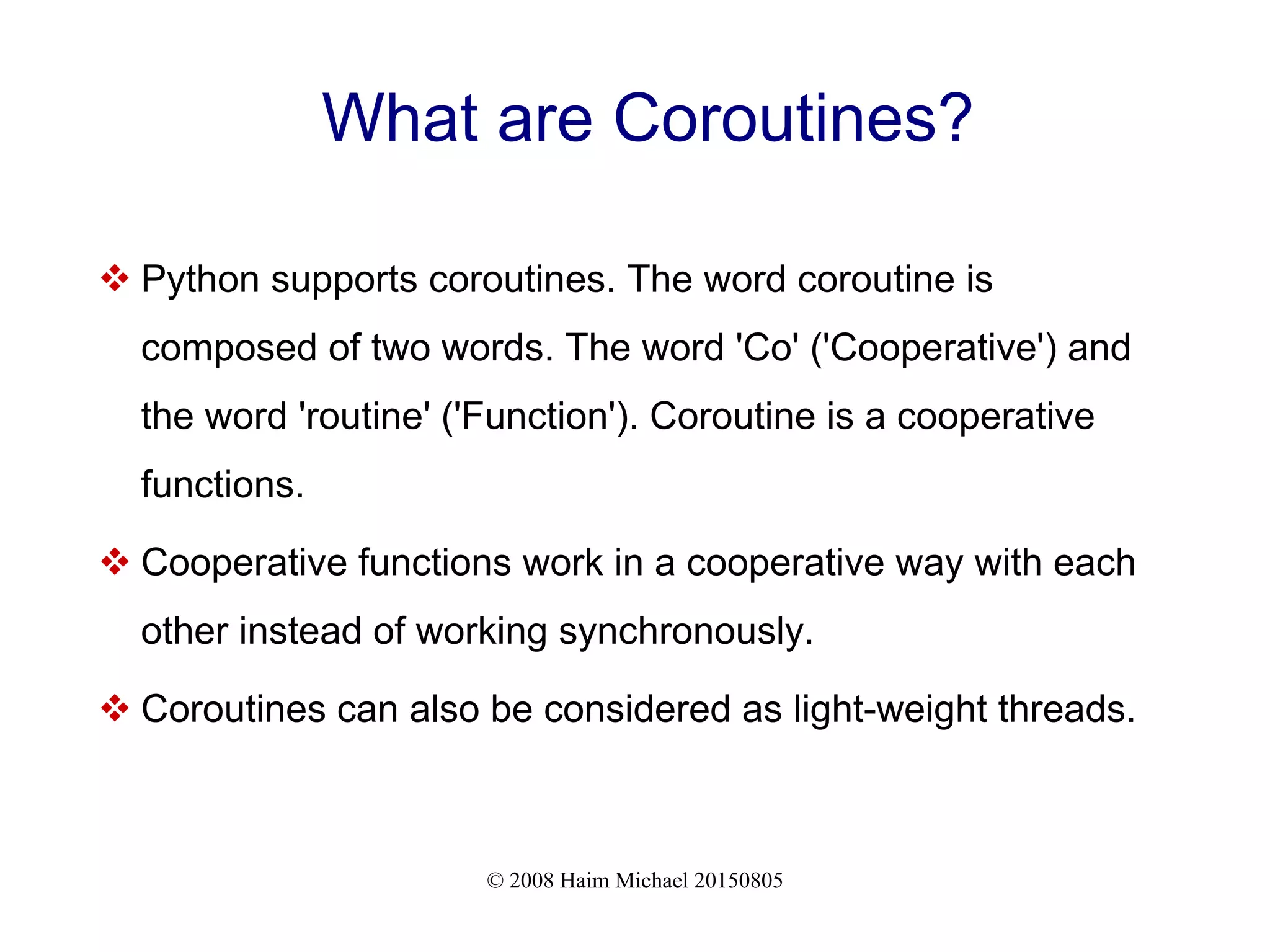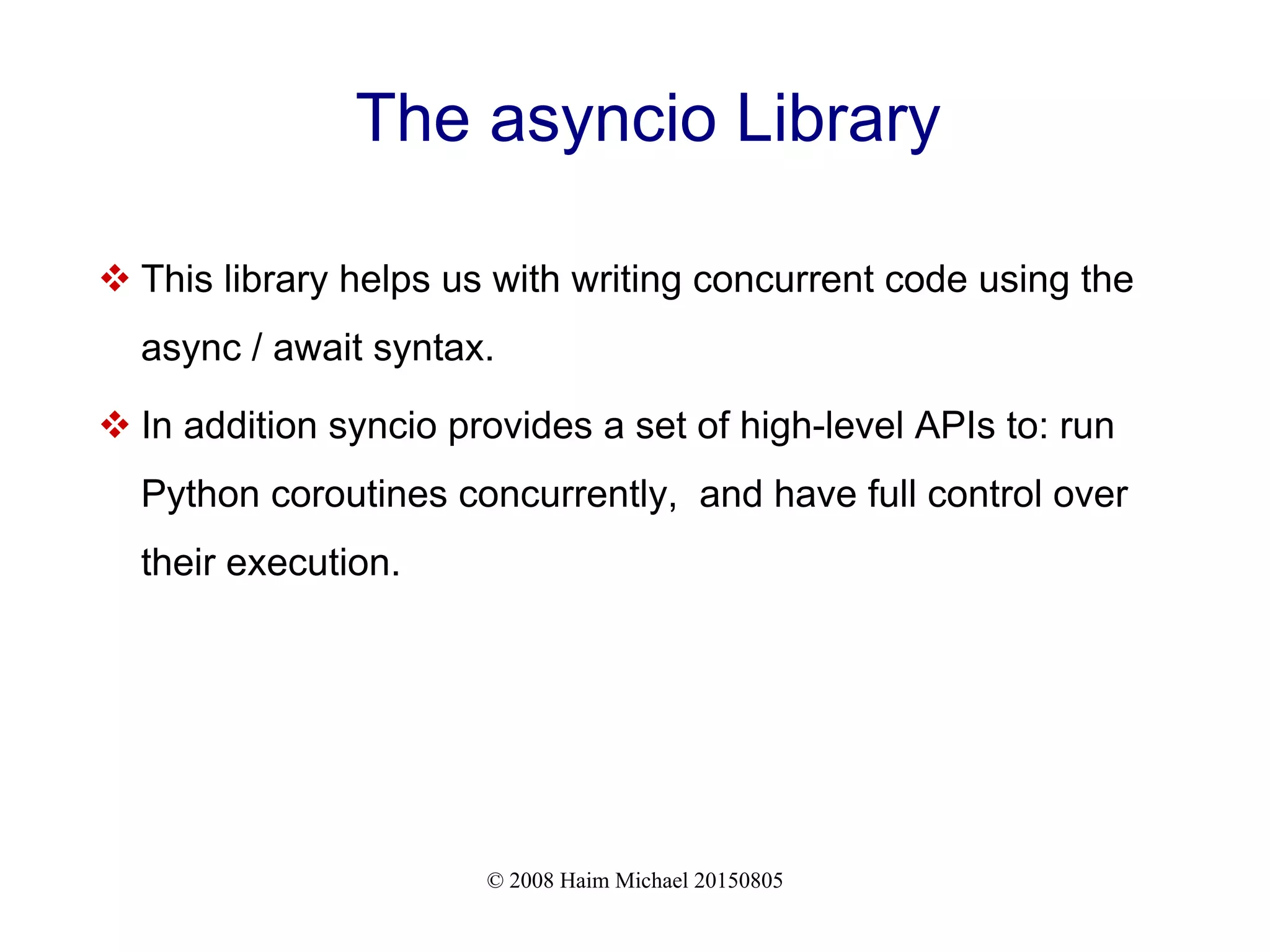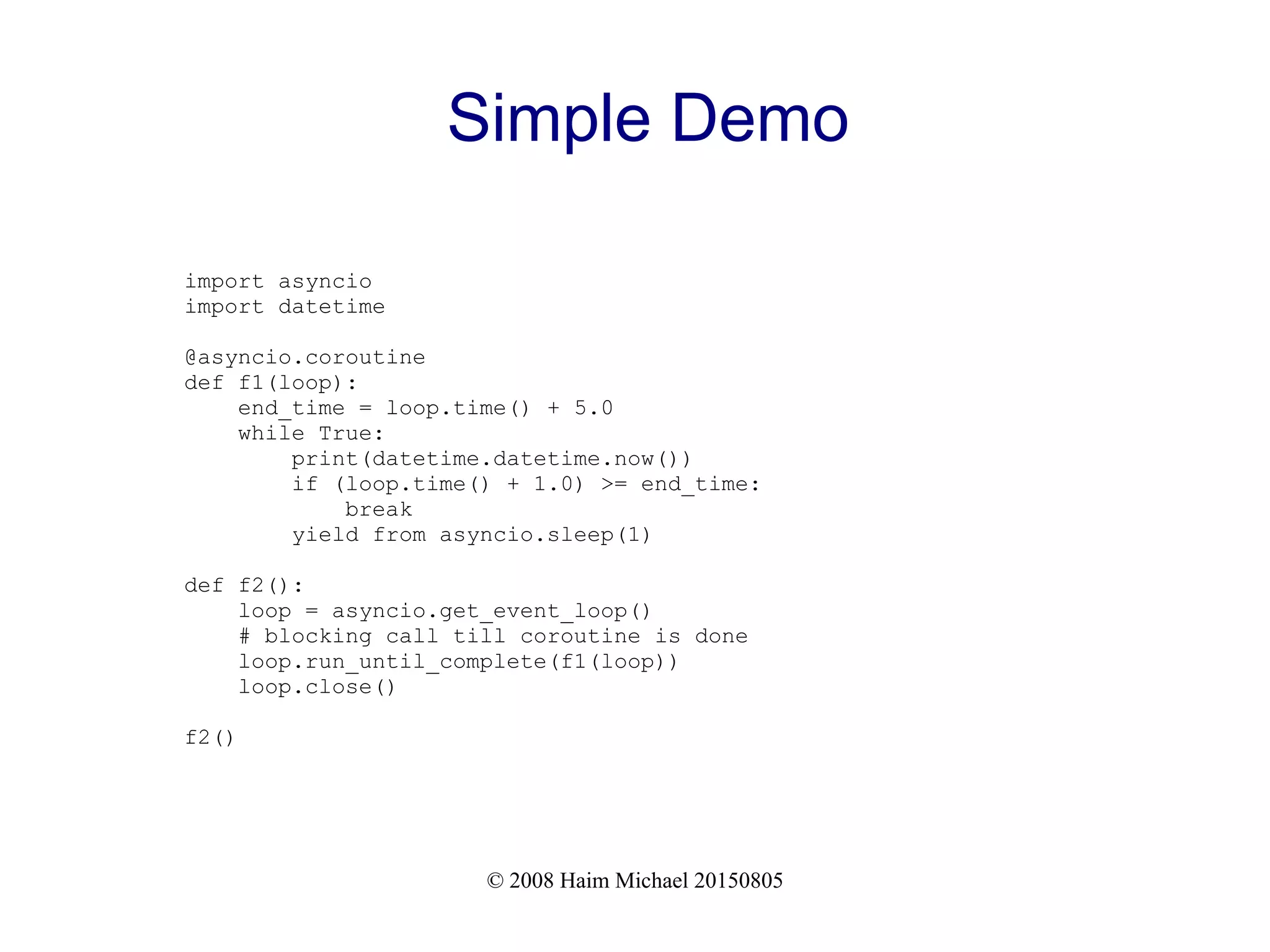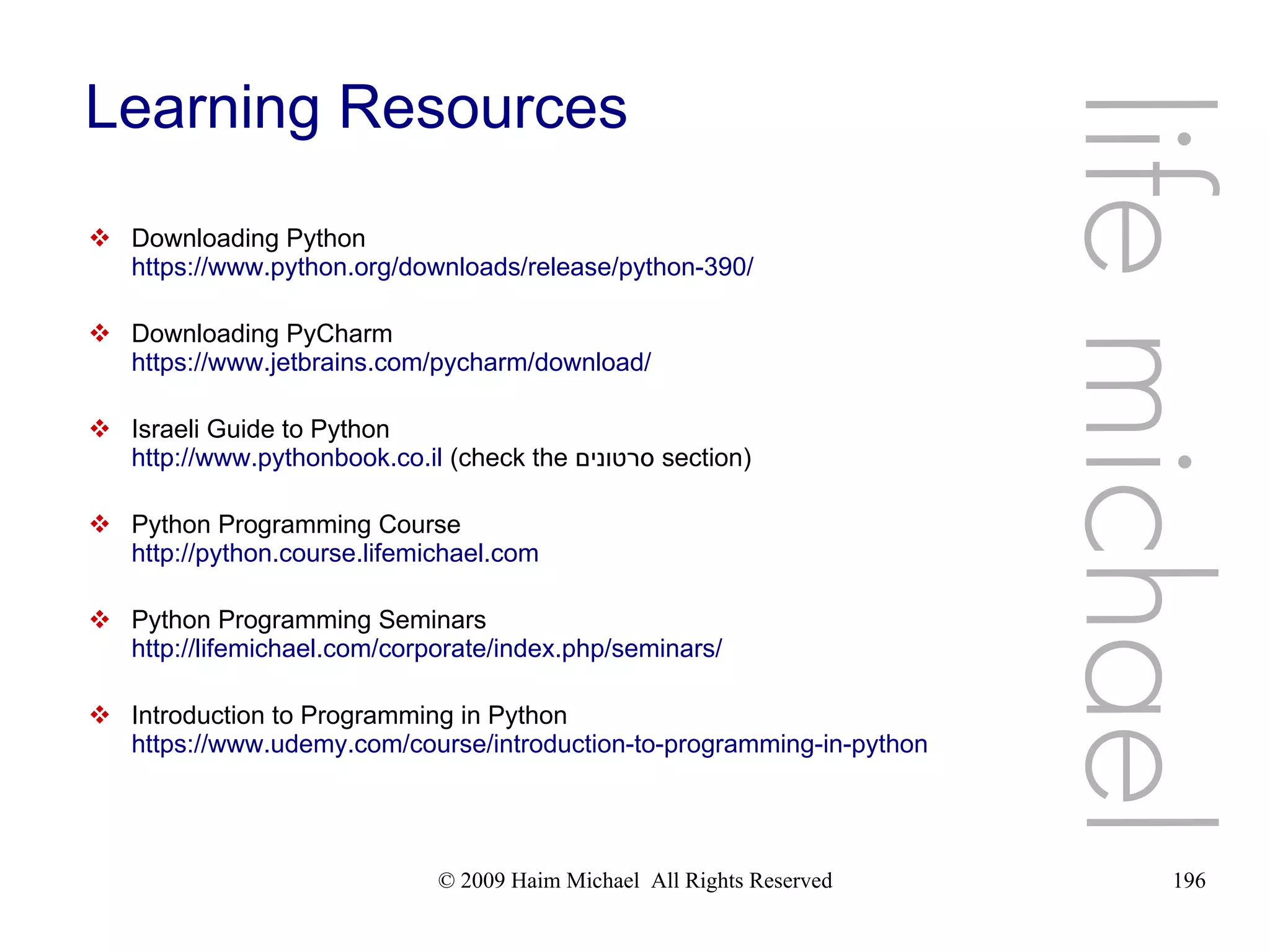This document provides an introduction and overview of the Python programming language. It discusses what Python is, why it is useful, its history and examples of its real-world applications. Some key points covered include that Python is an open source, powerful yet easy to learn scripting language used for both server-side and standalone applications. It focuses on readability, productivity and has a large standard library. Python code is portable across platforms and has automatic memory management.
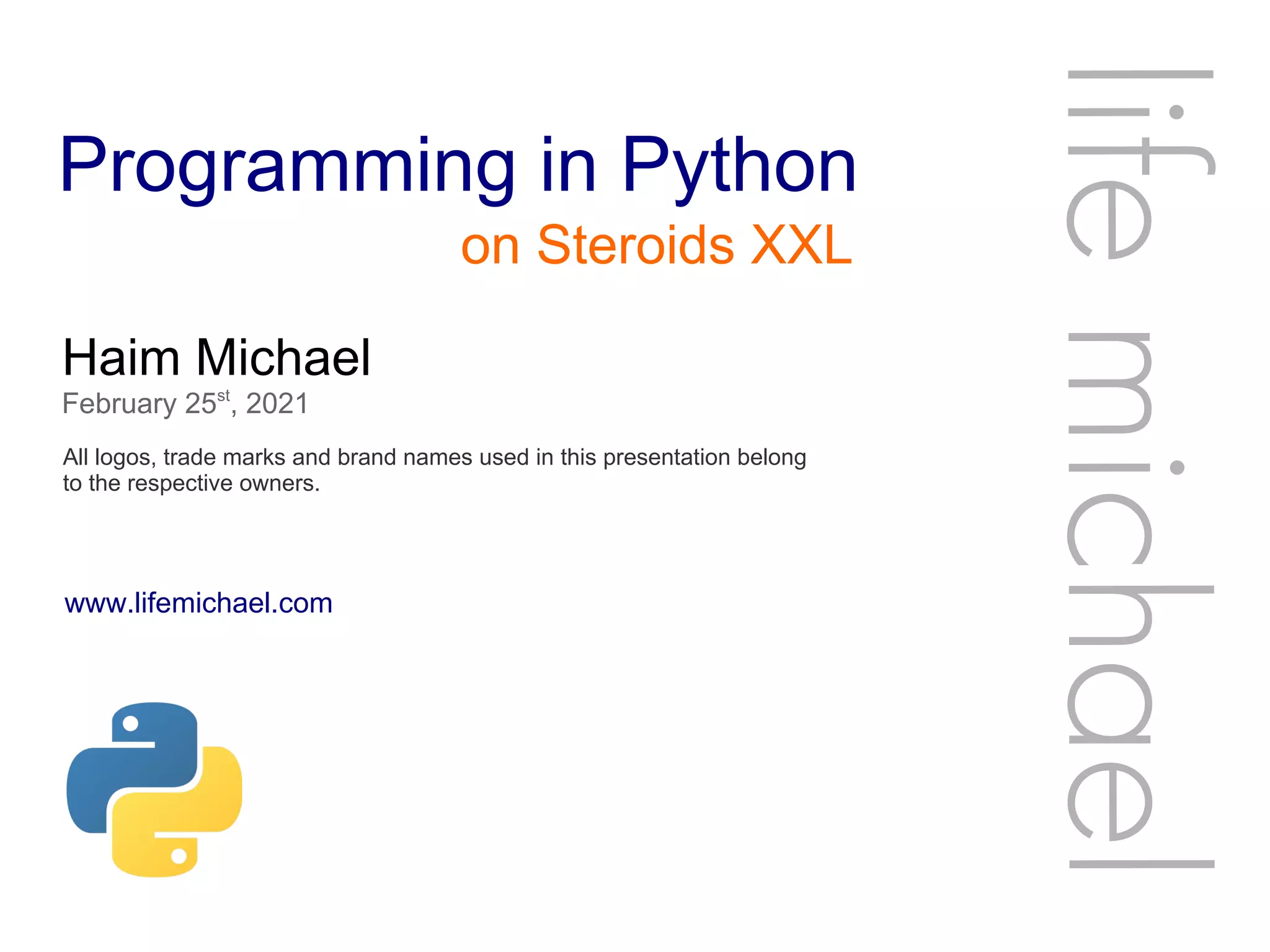
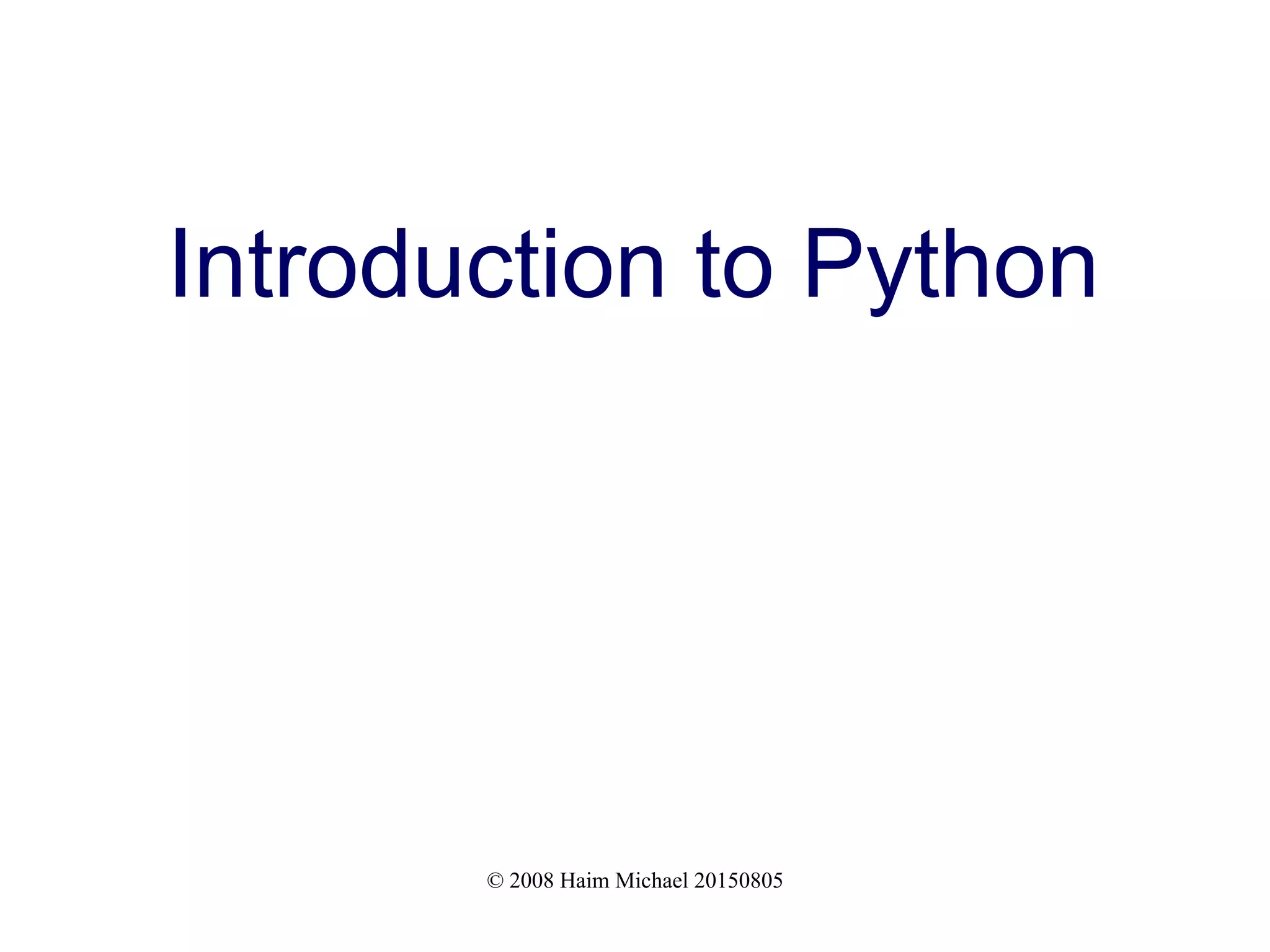
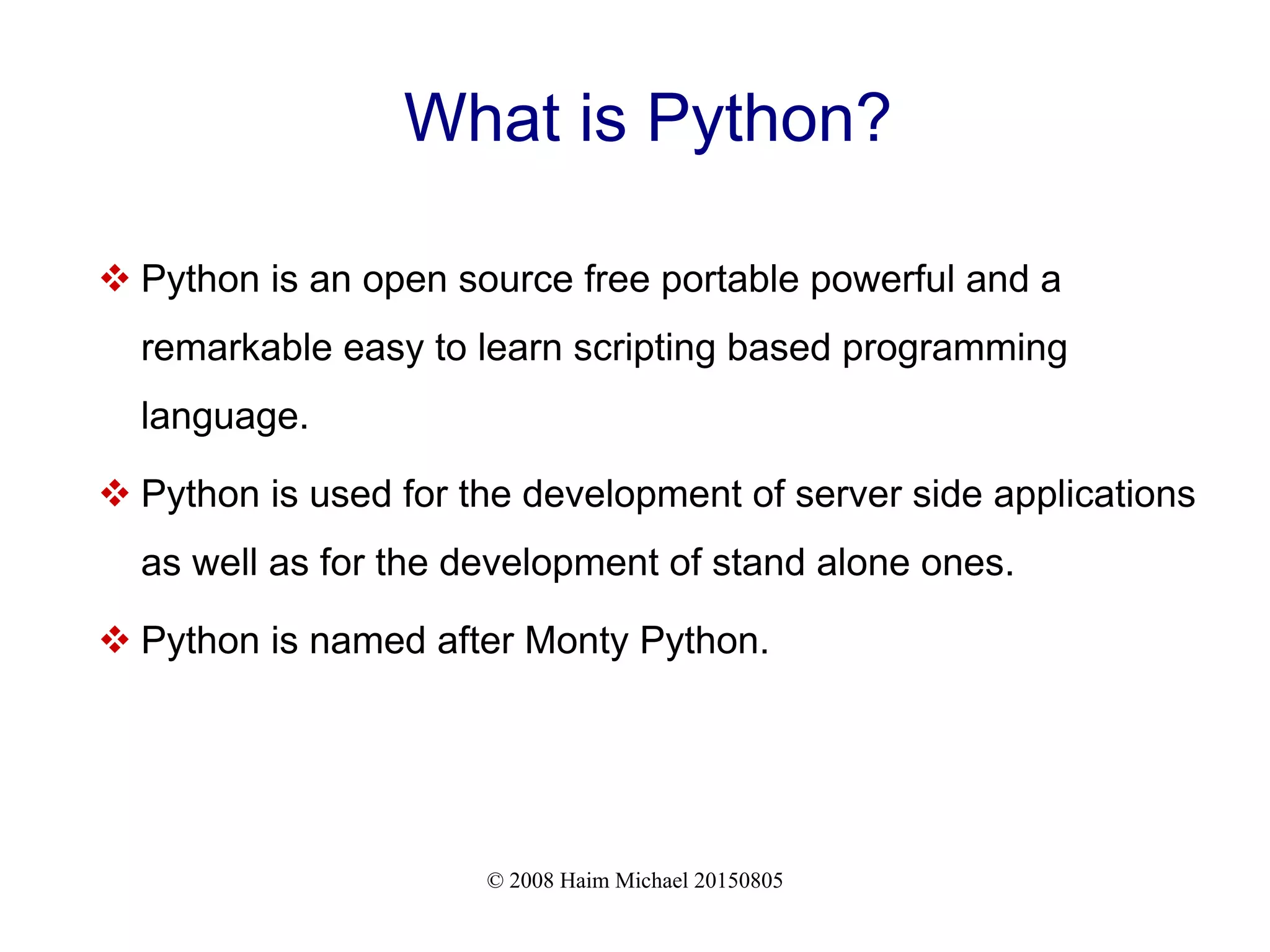

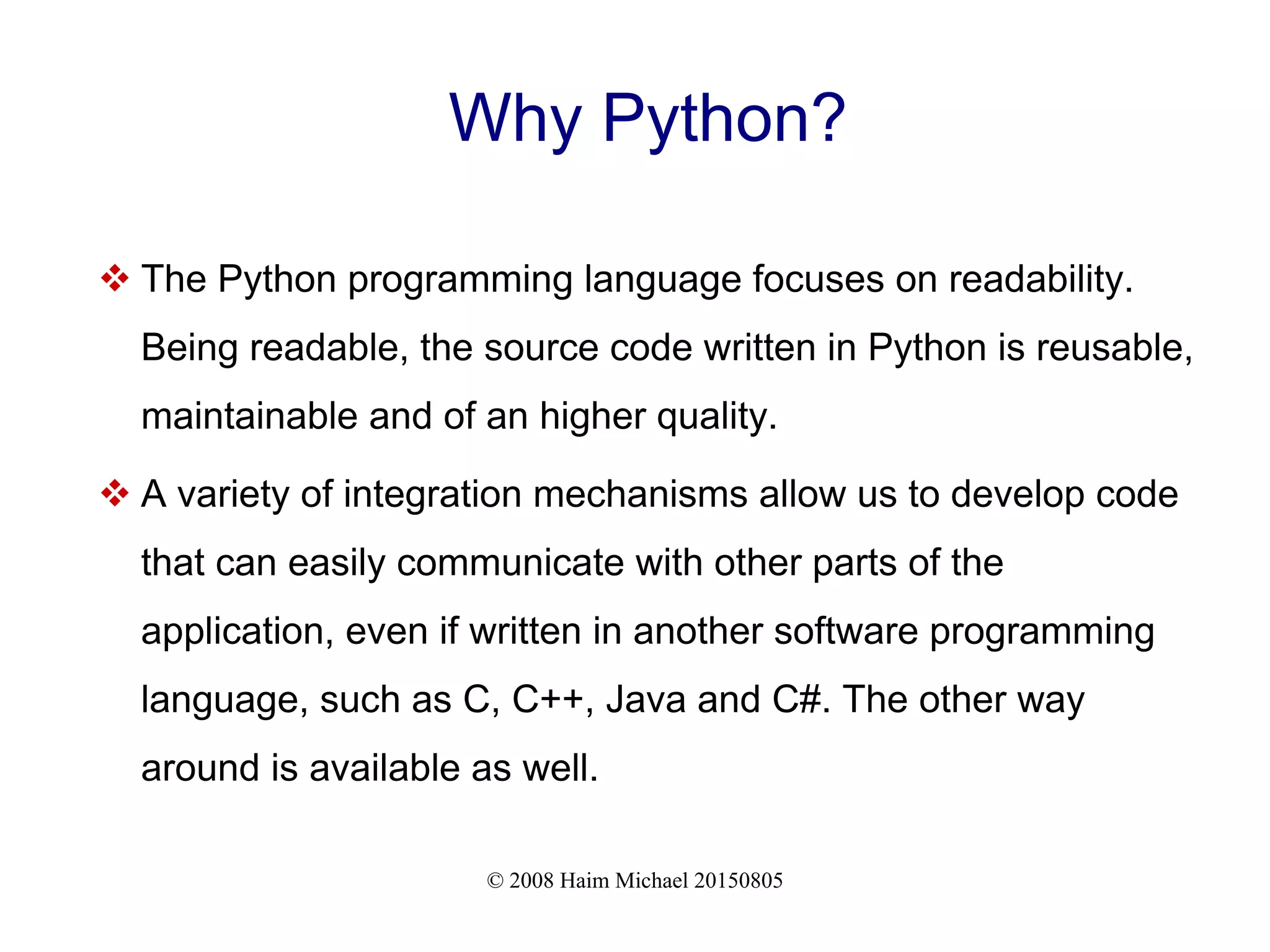
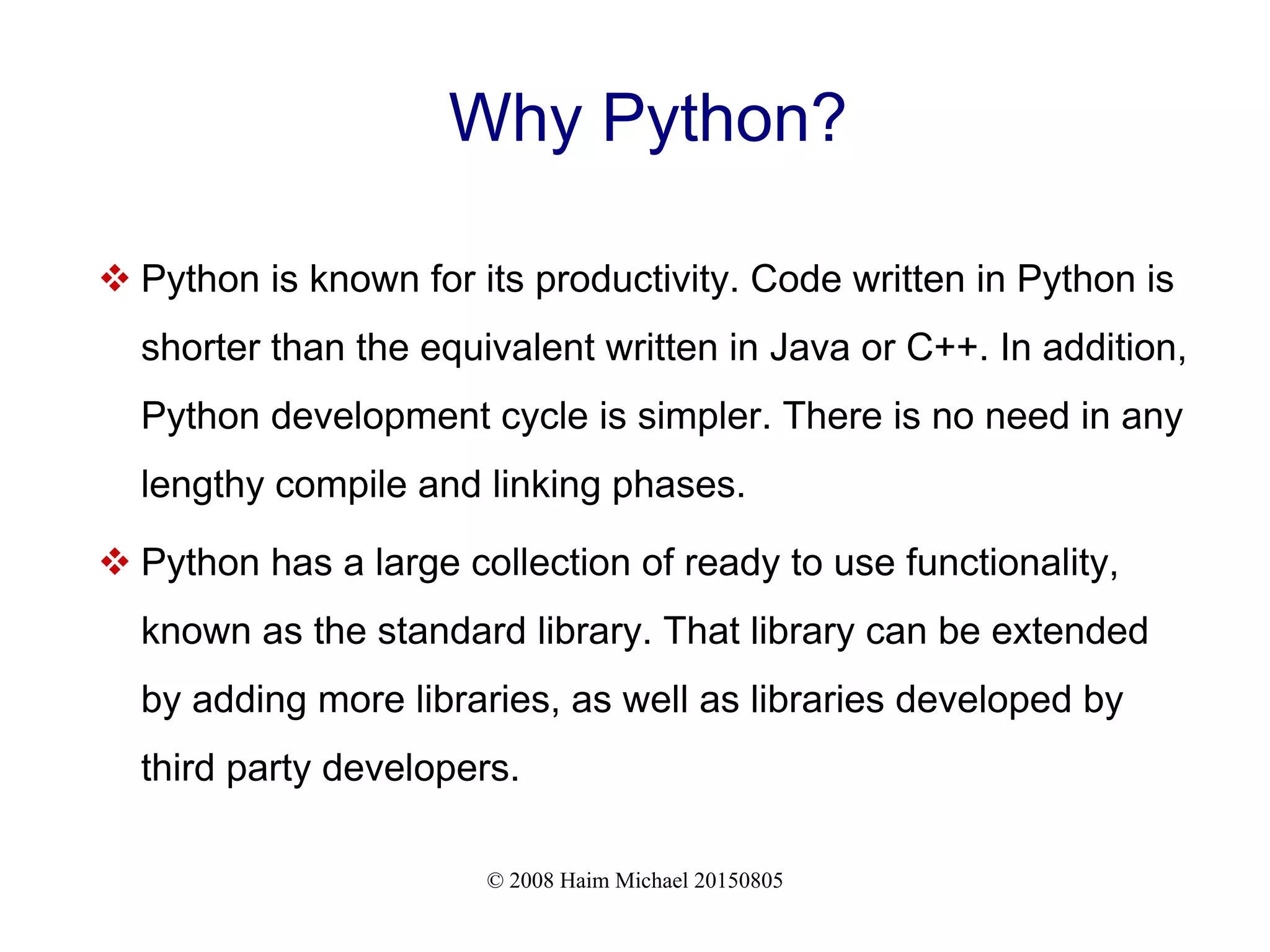
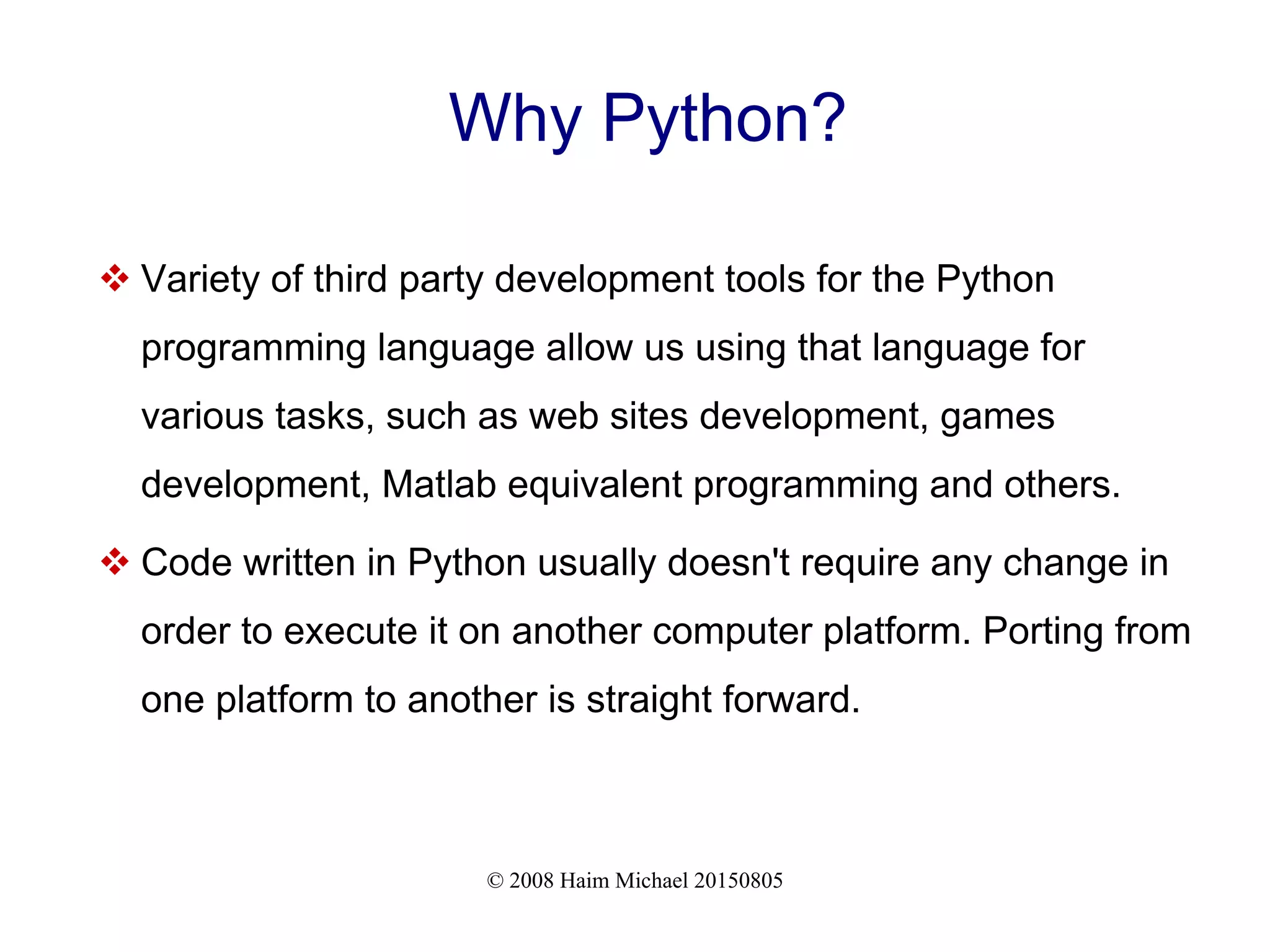
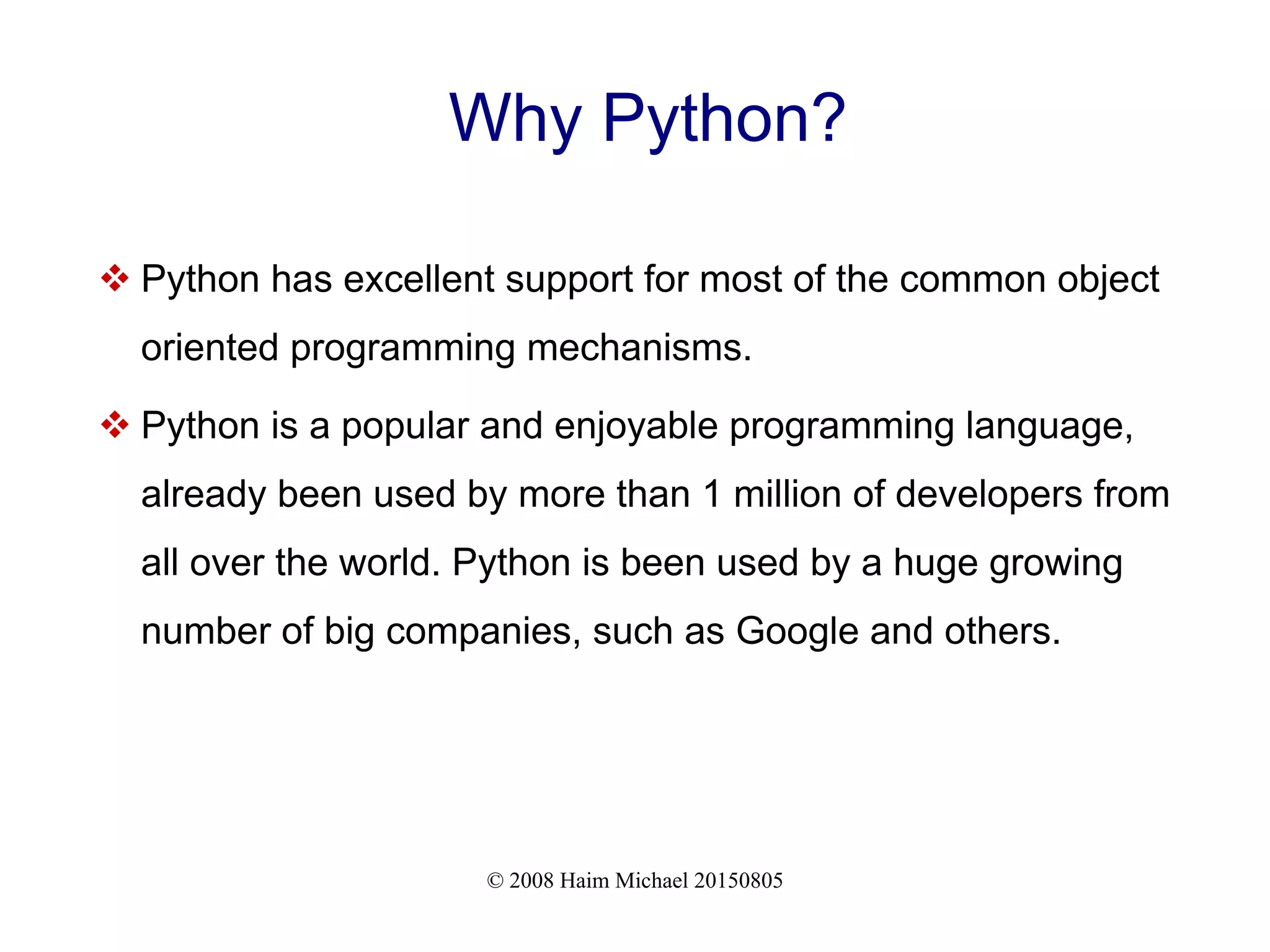
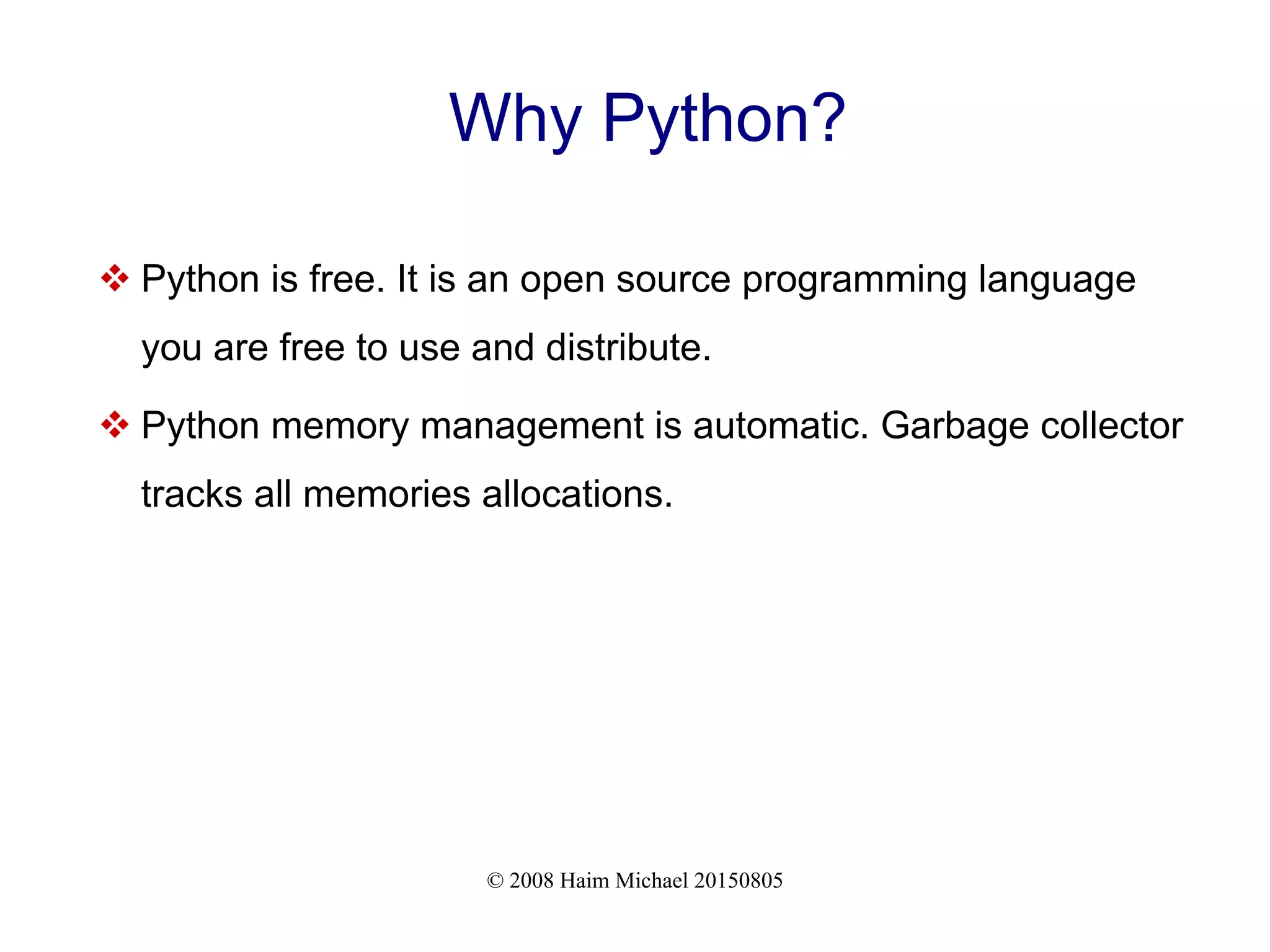
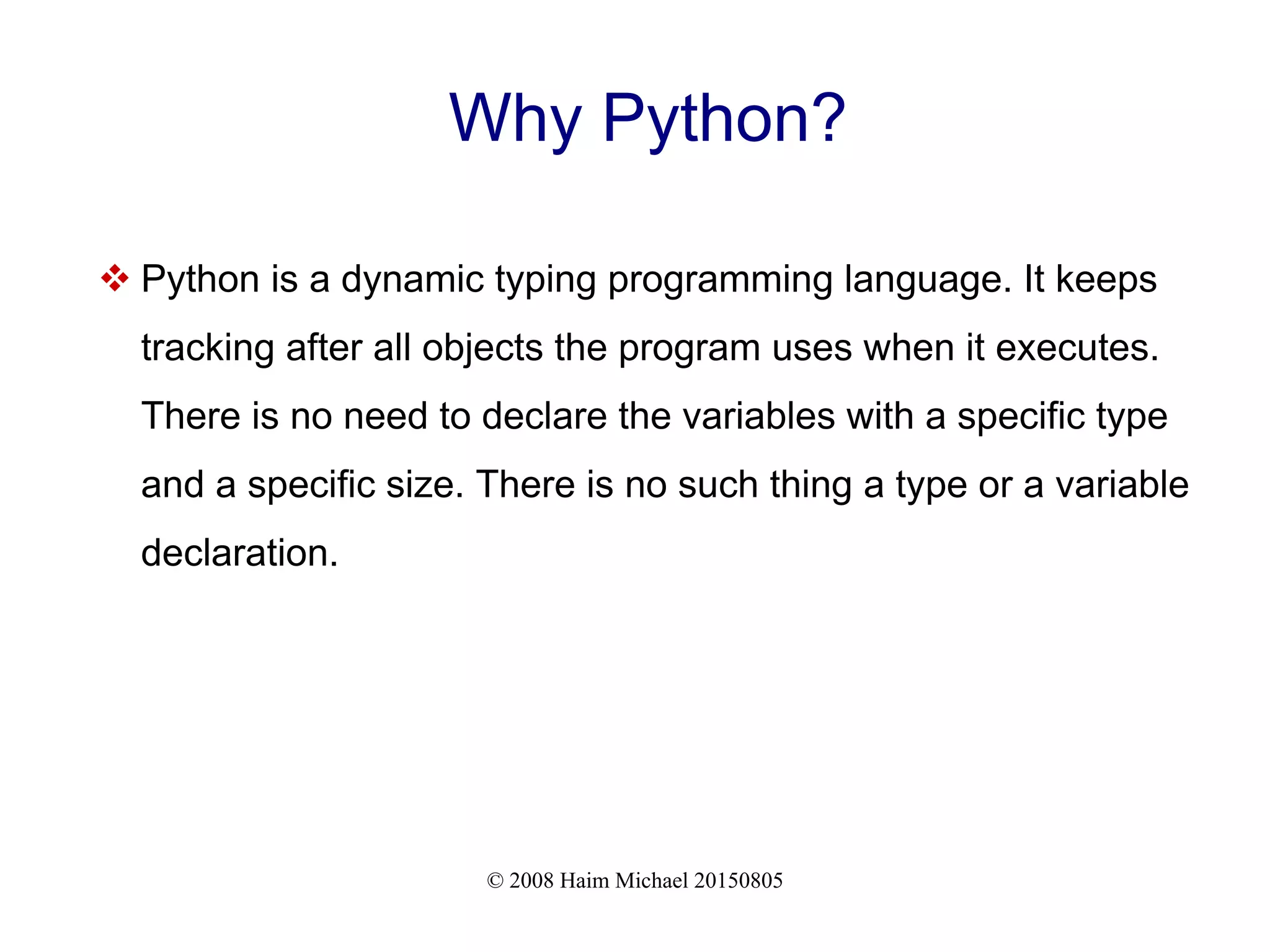
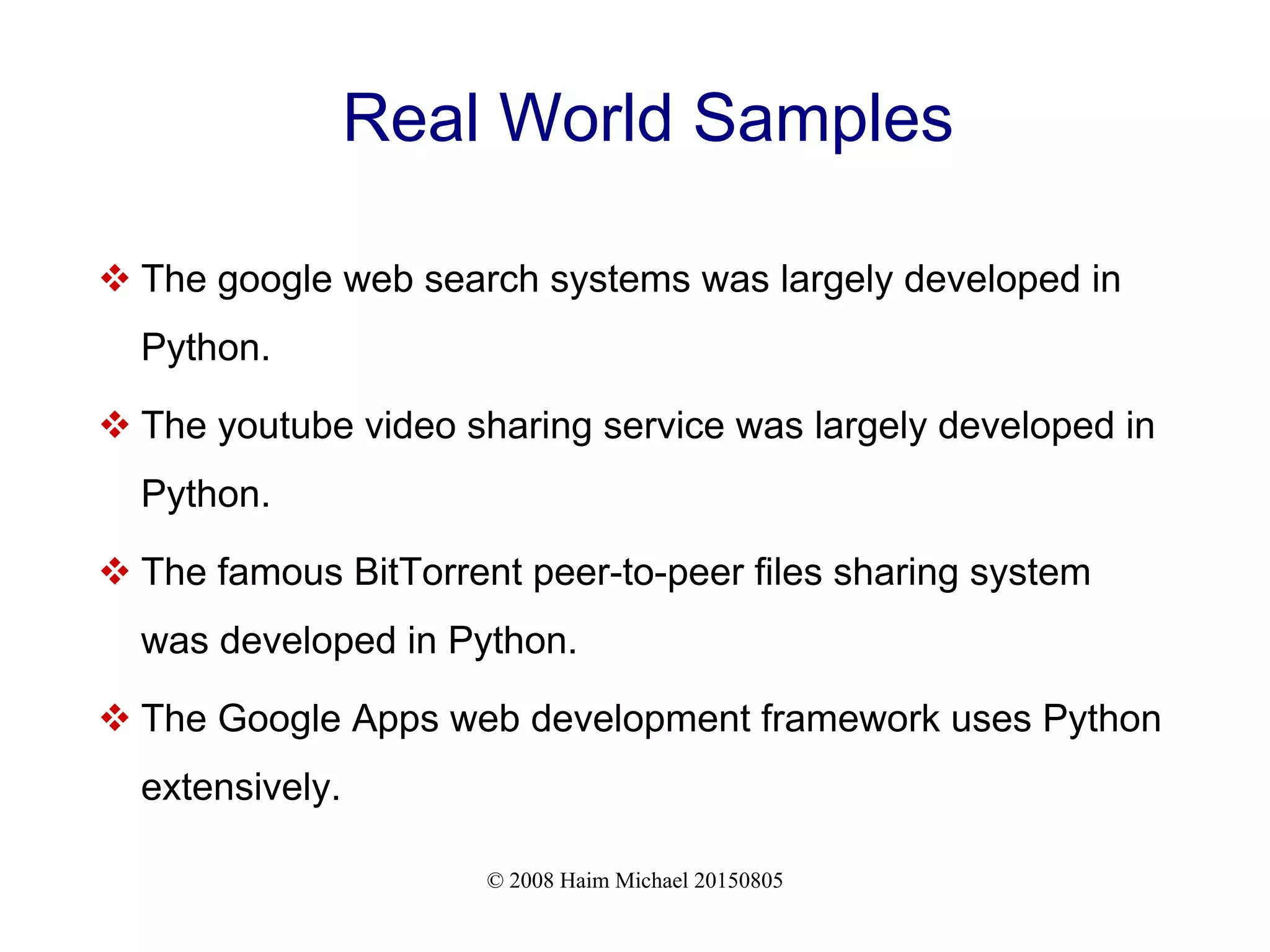
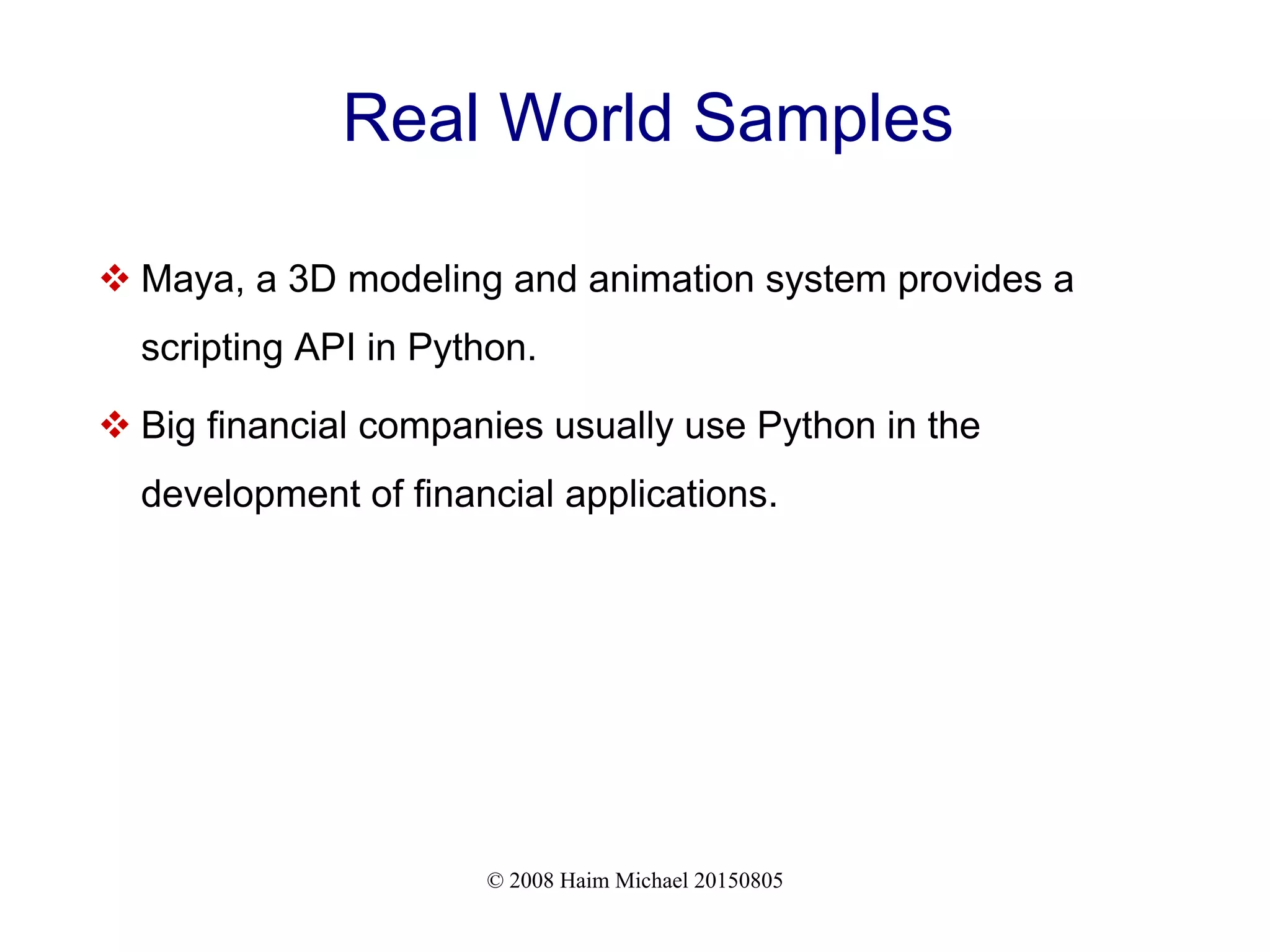
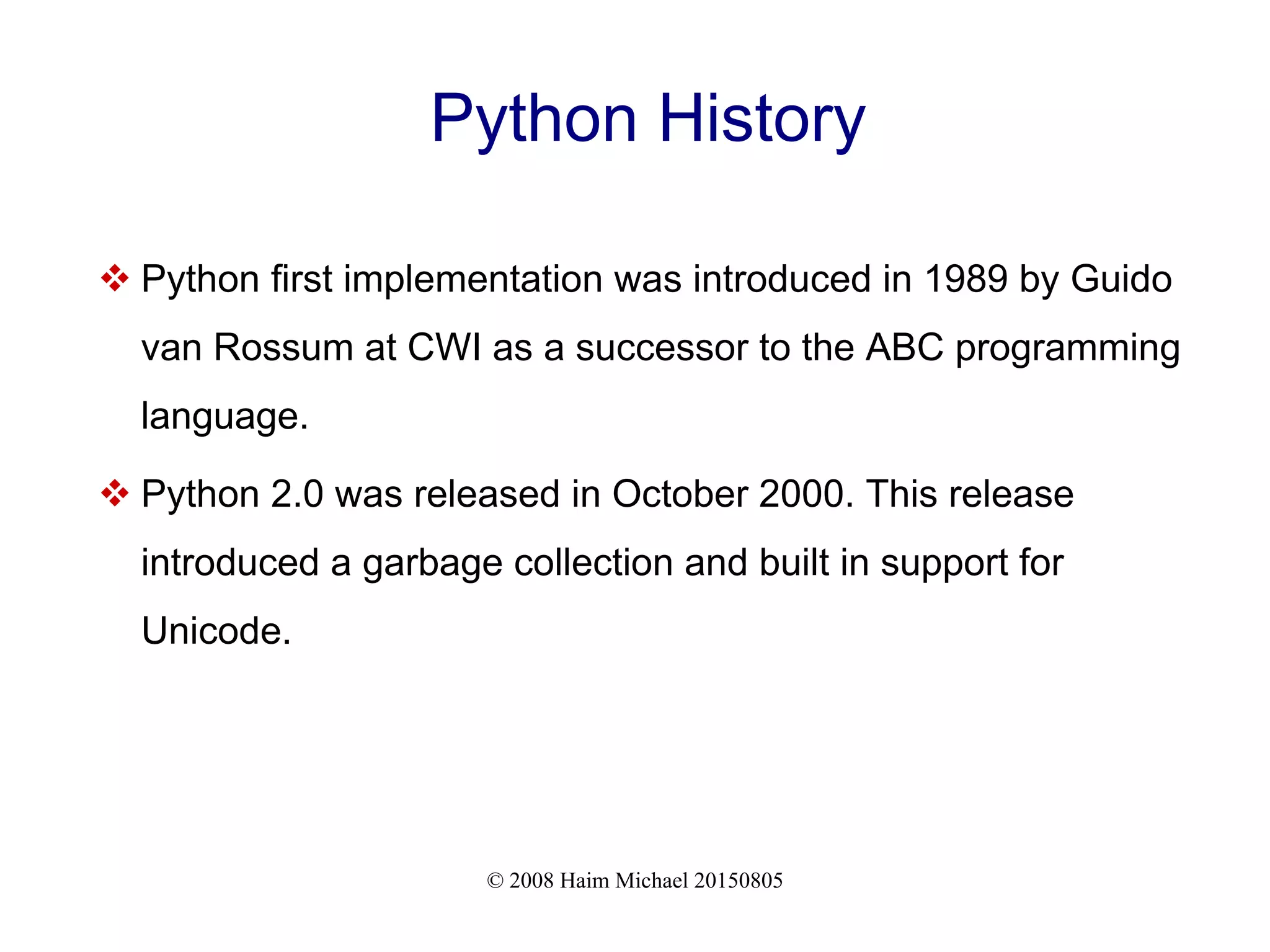
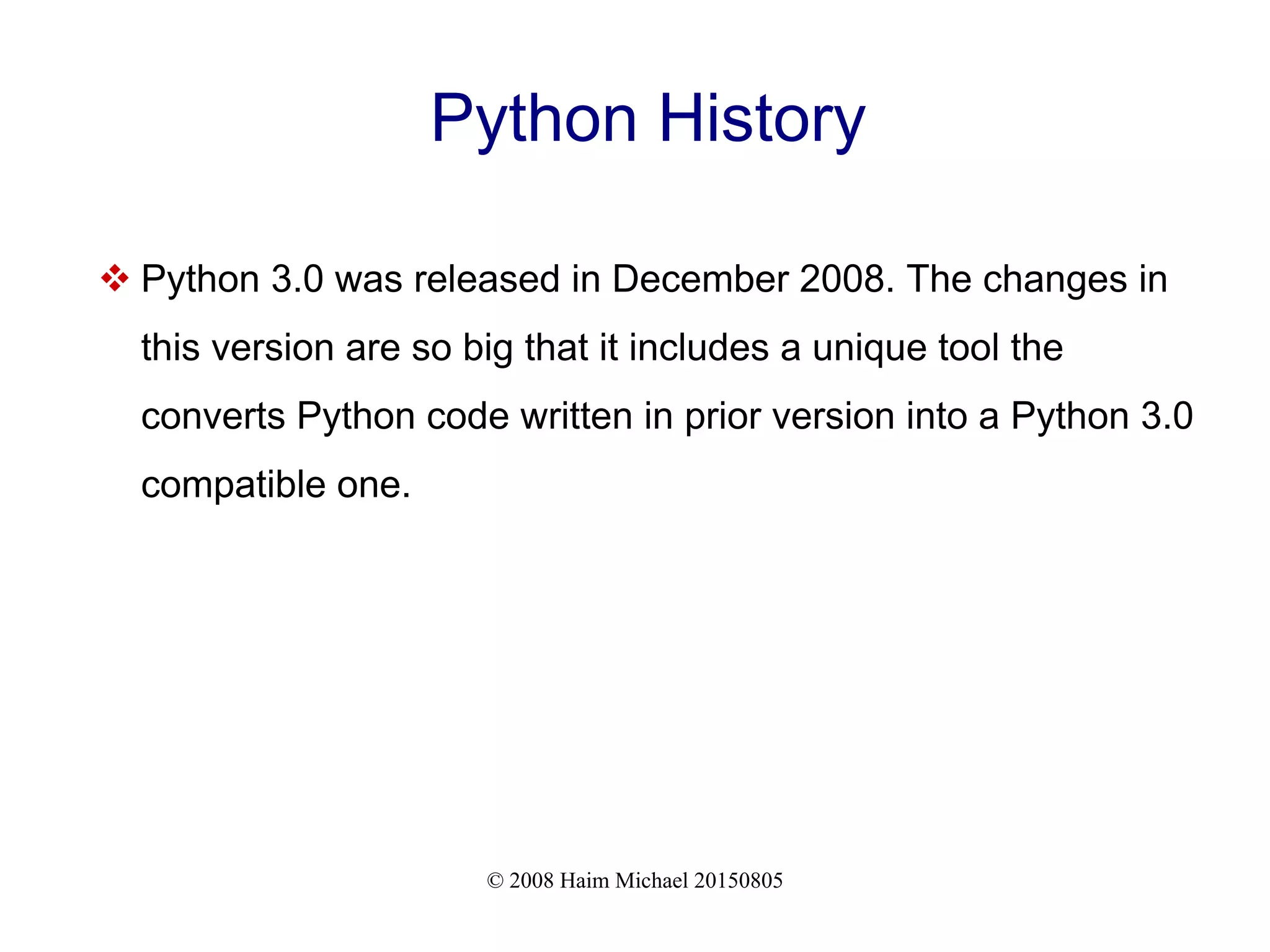
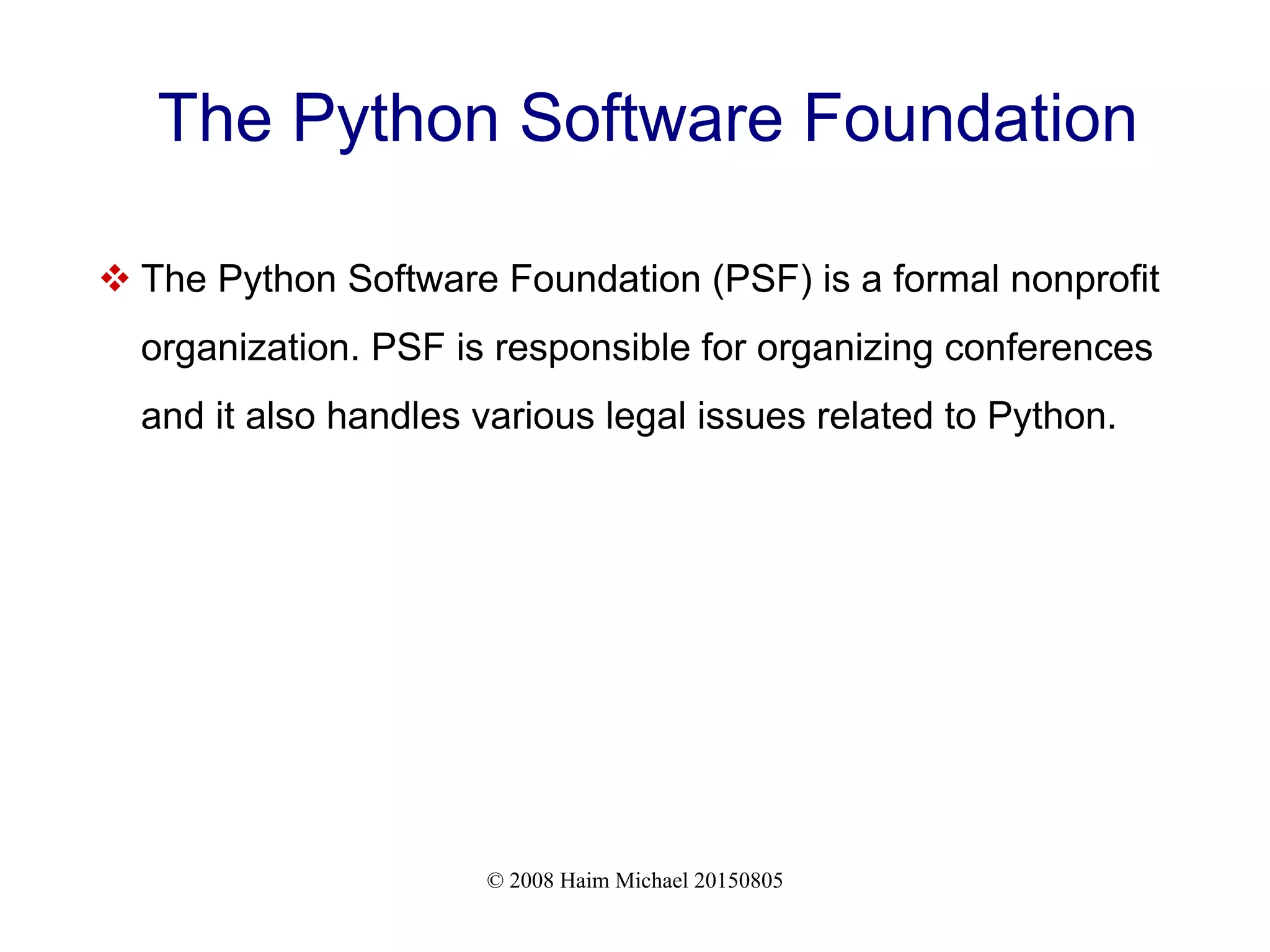
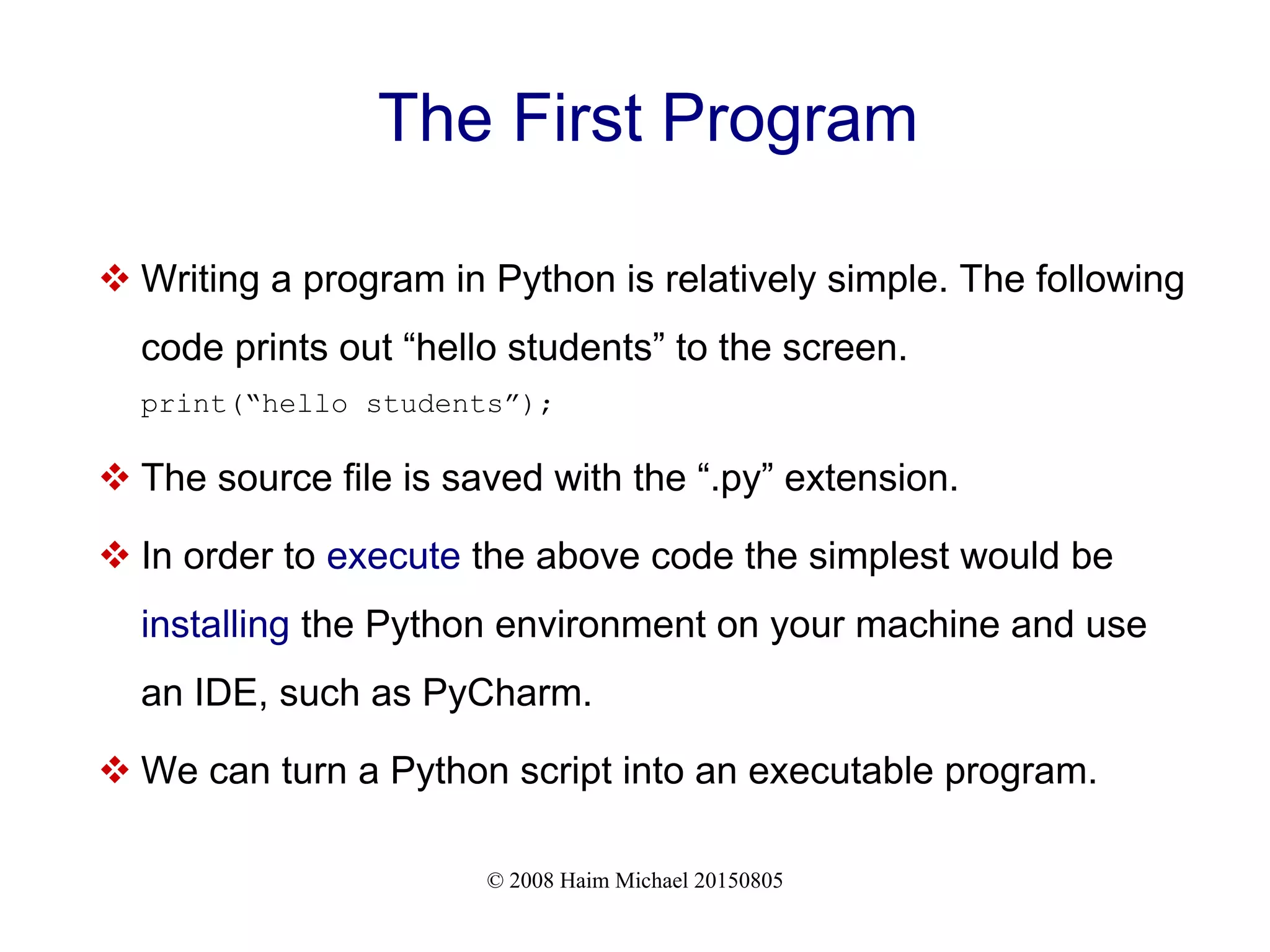
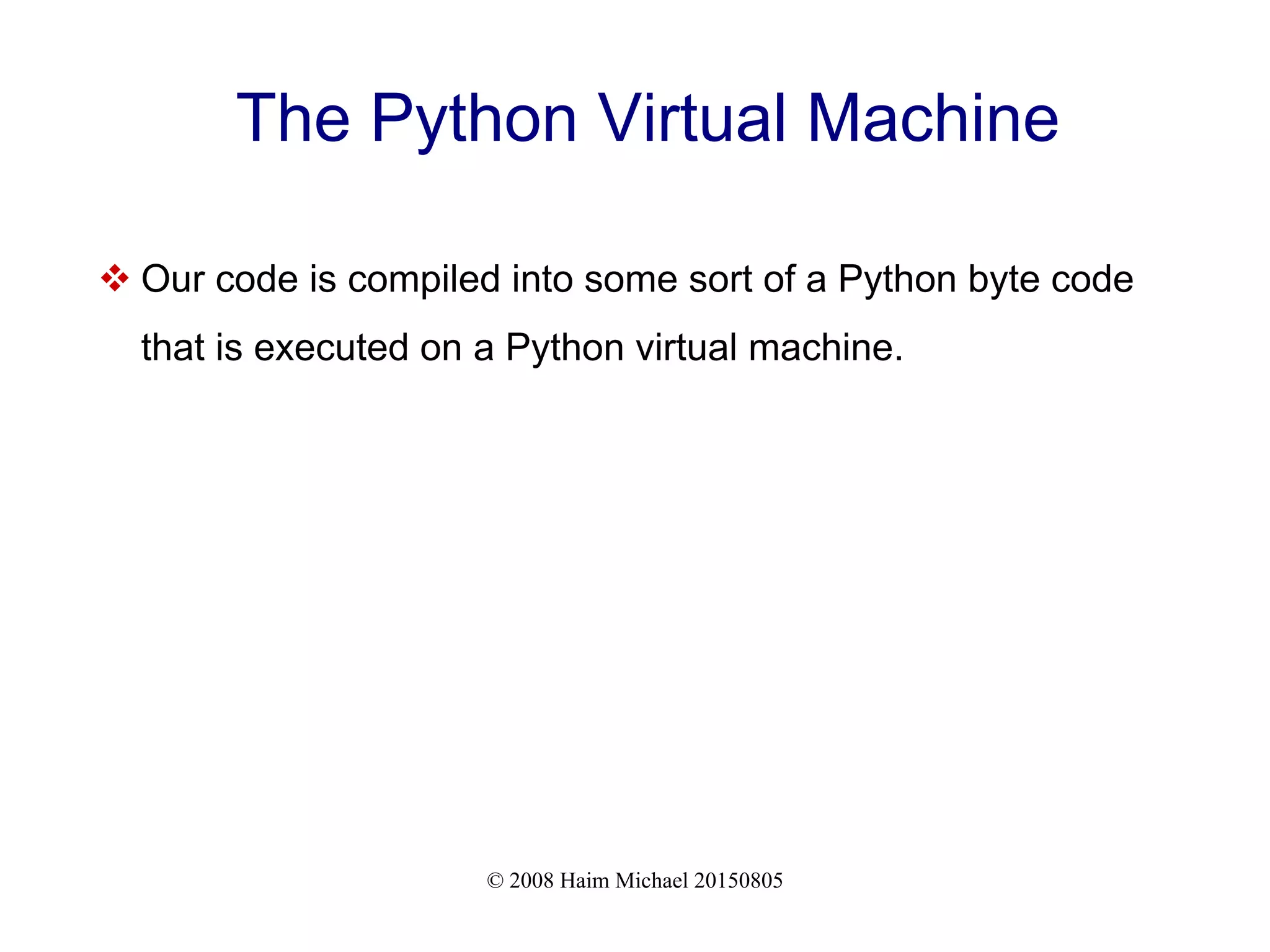
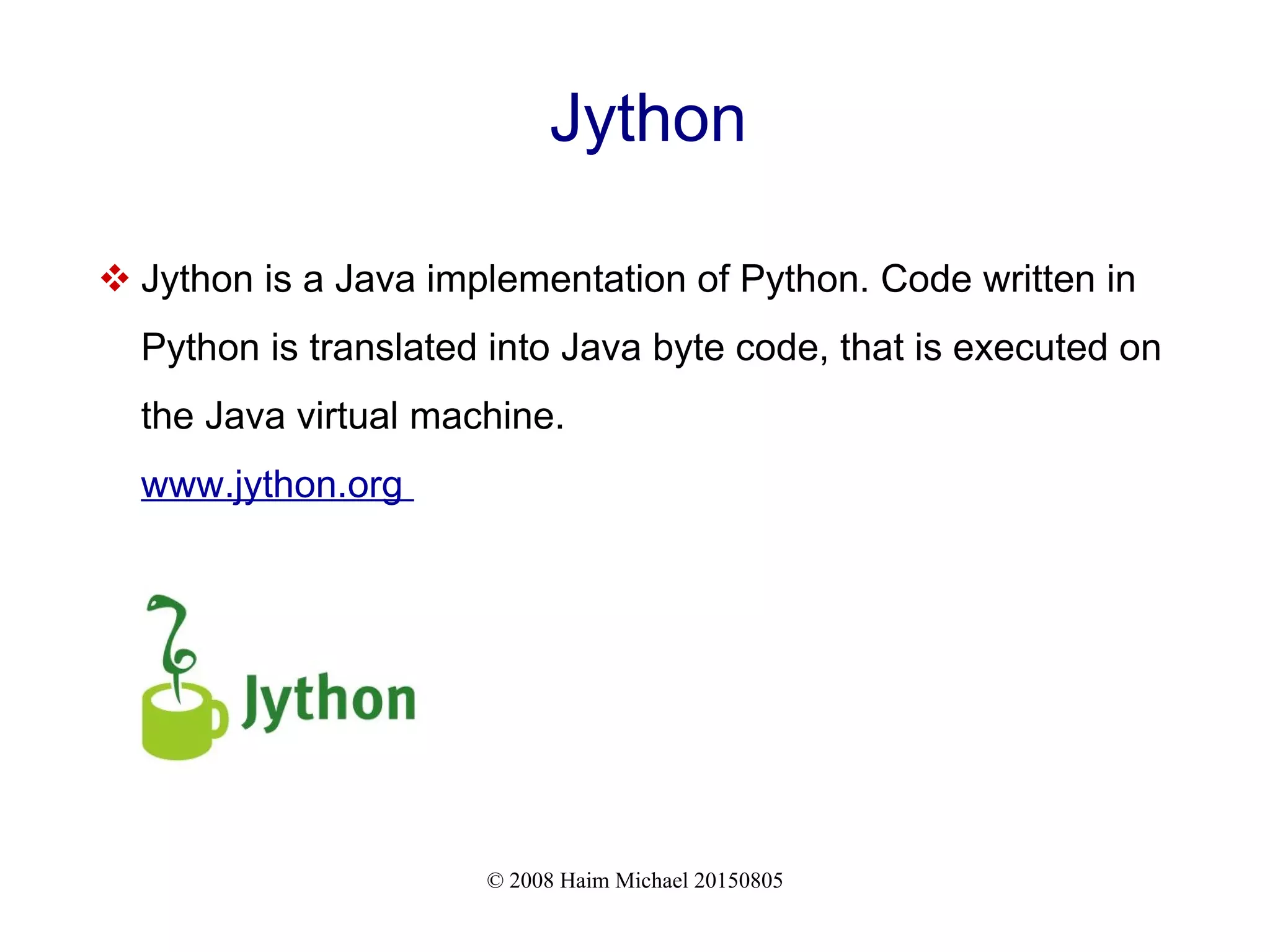
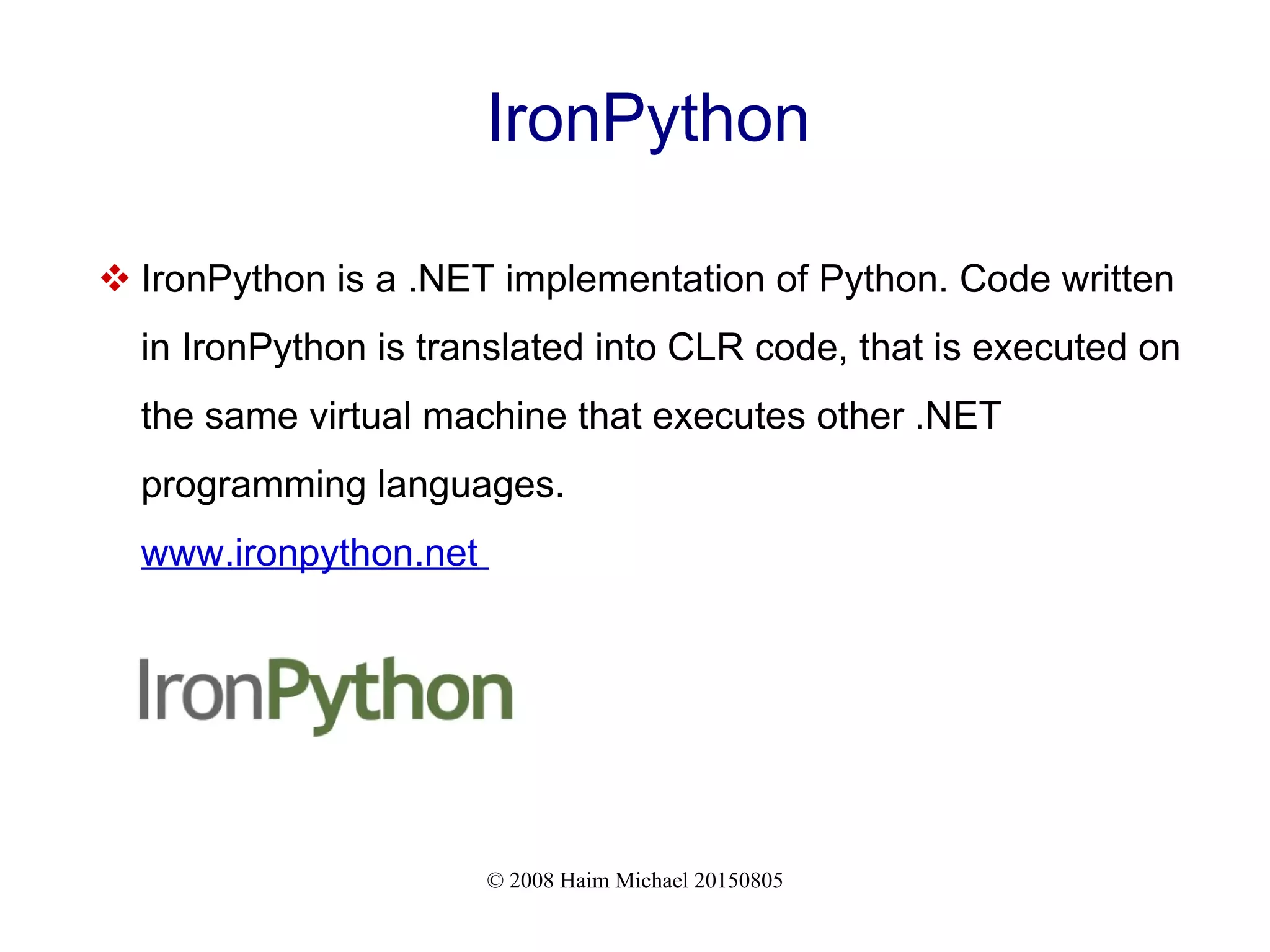
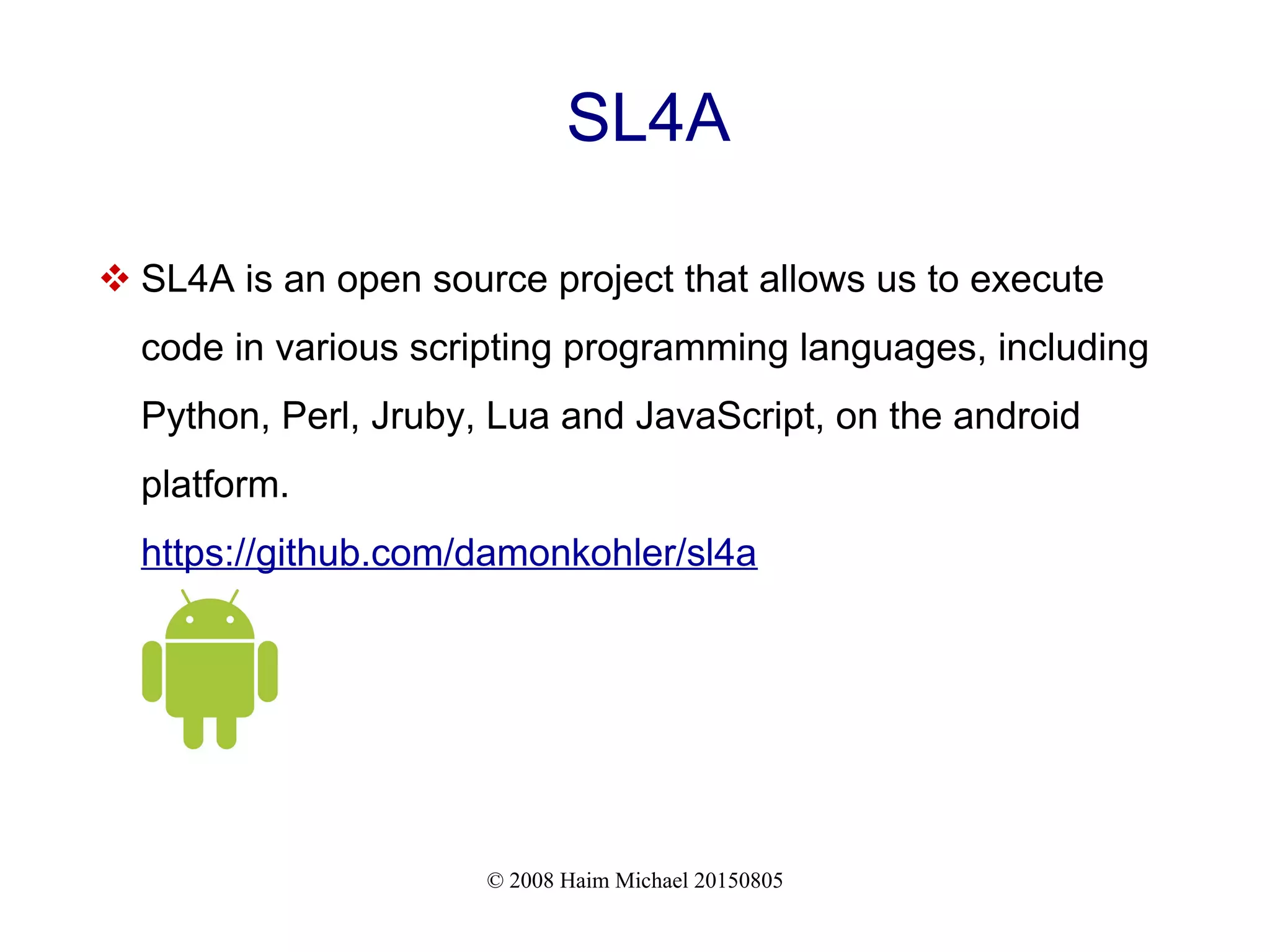
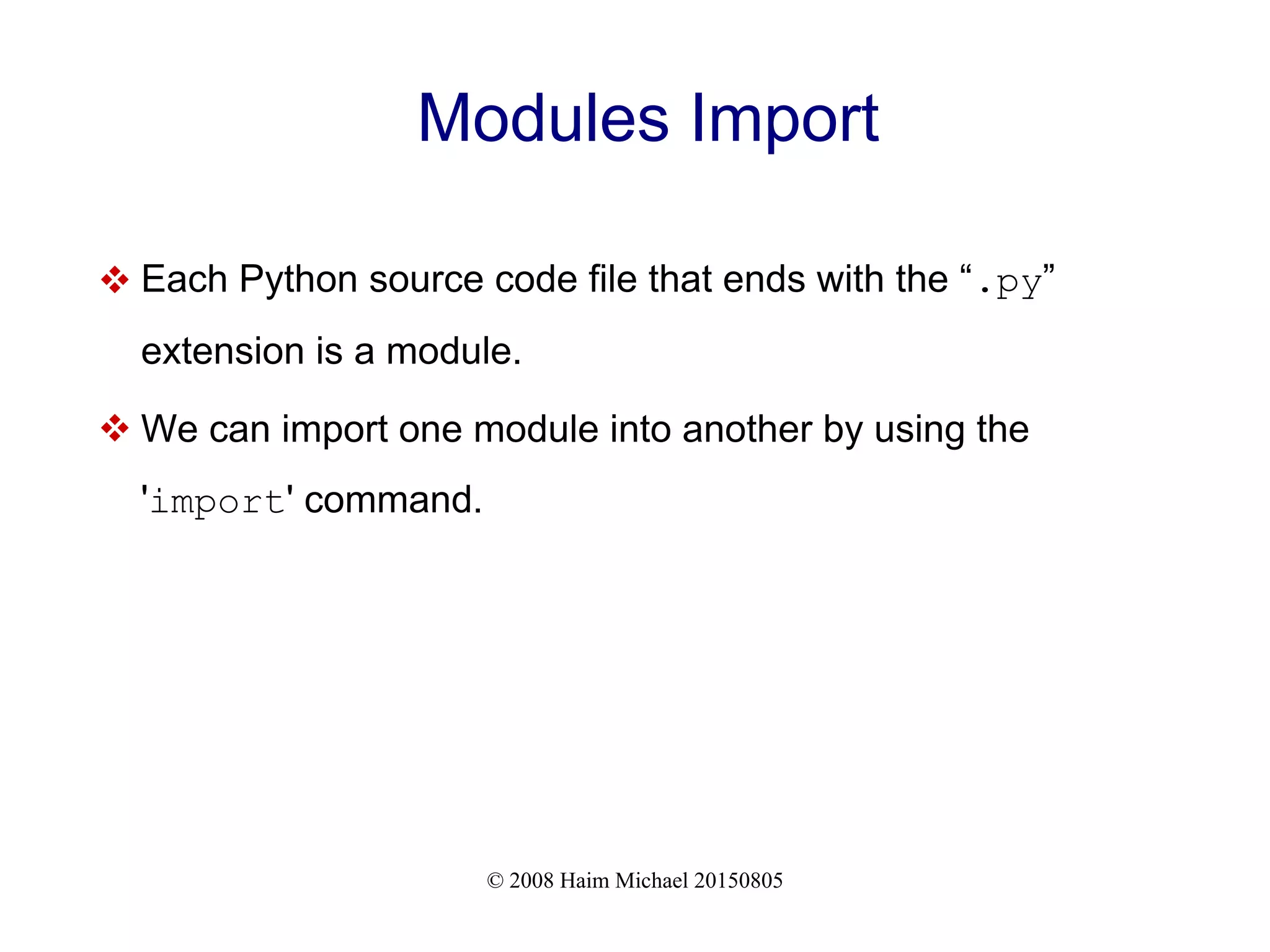
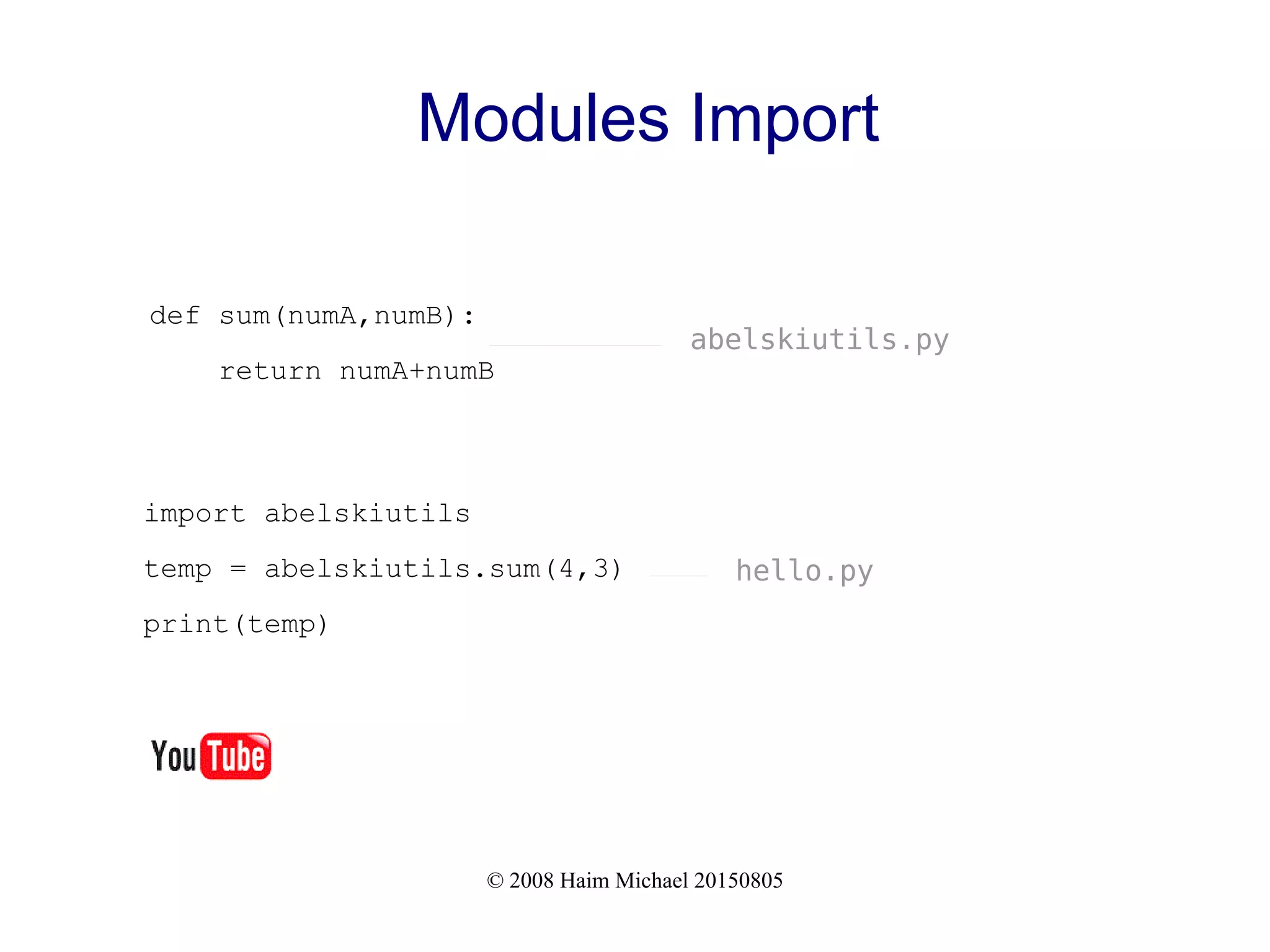
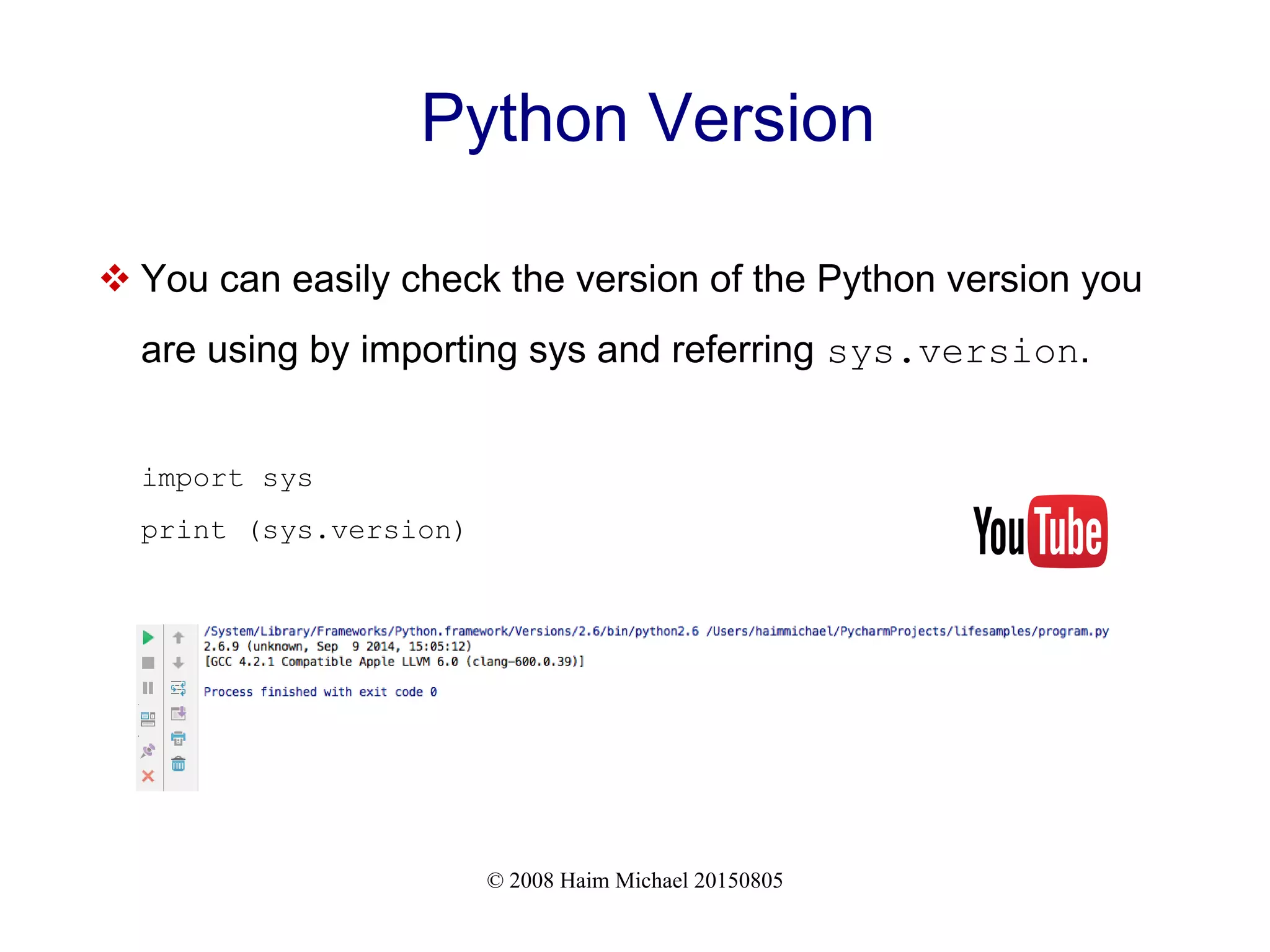
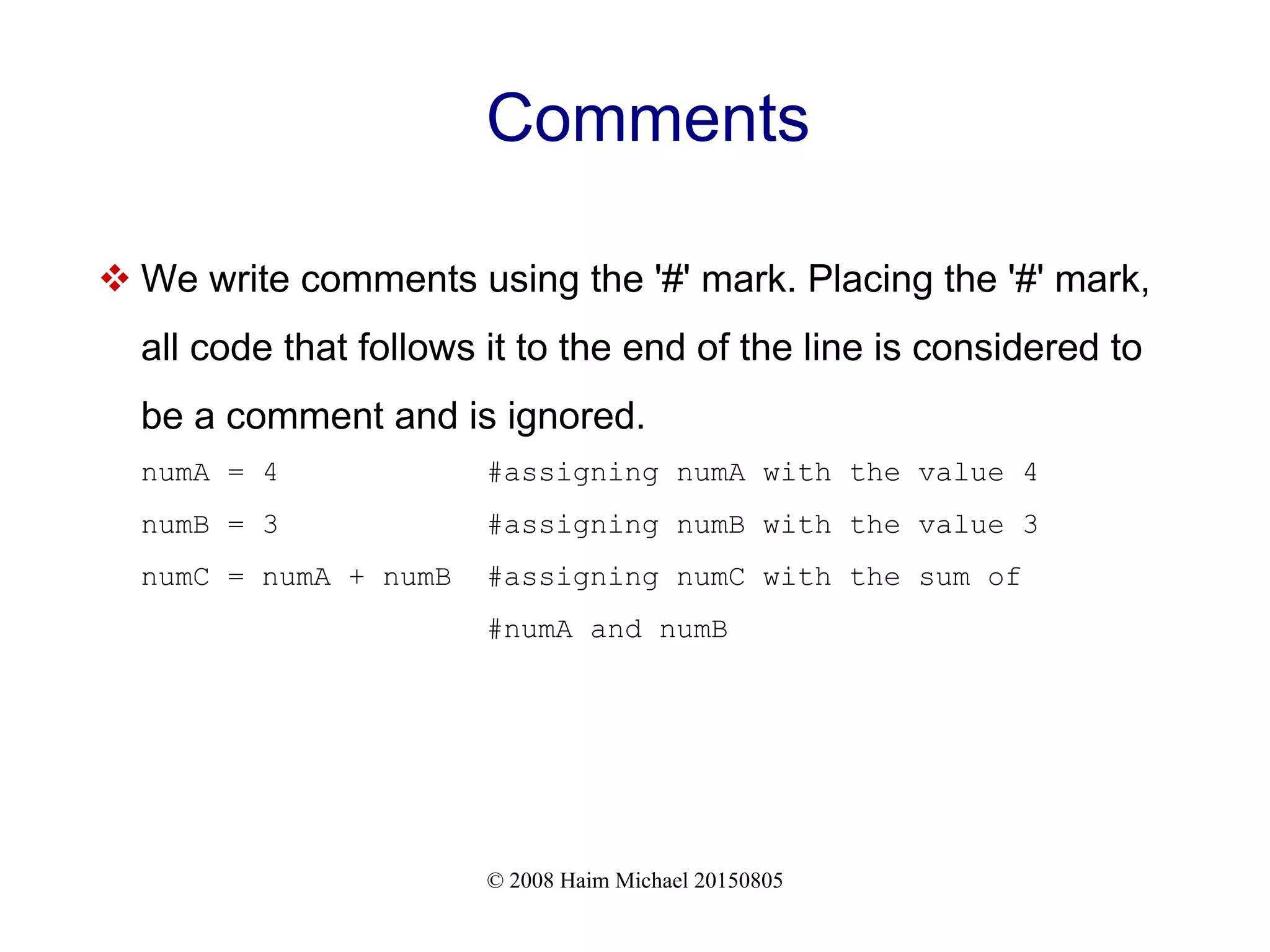
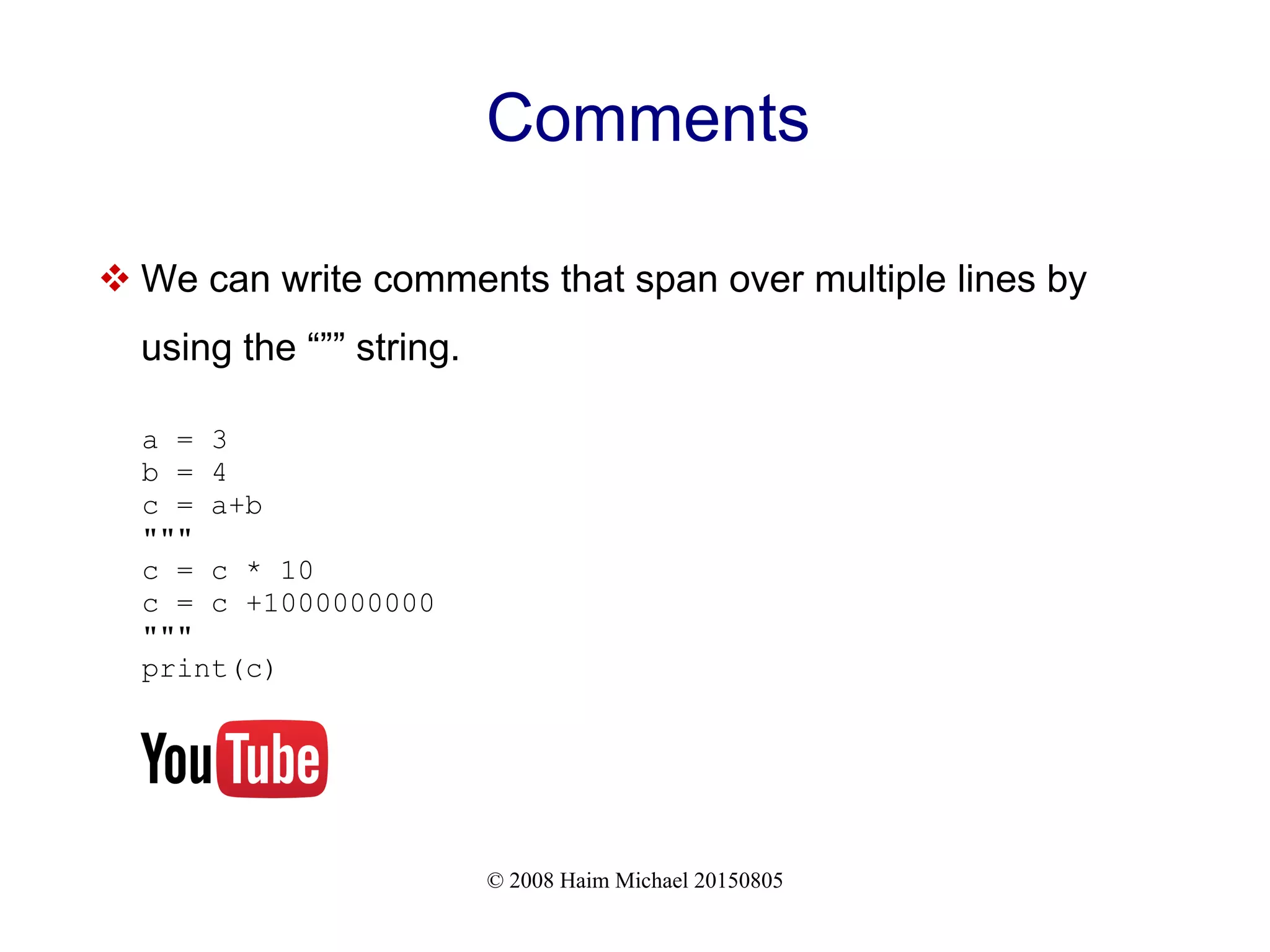

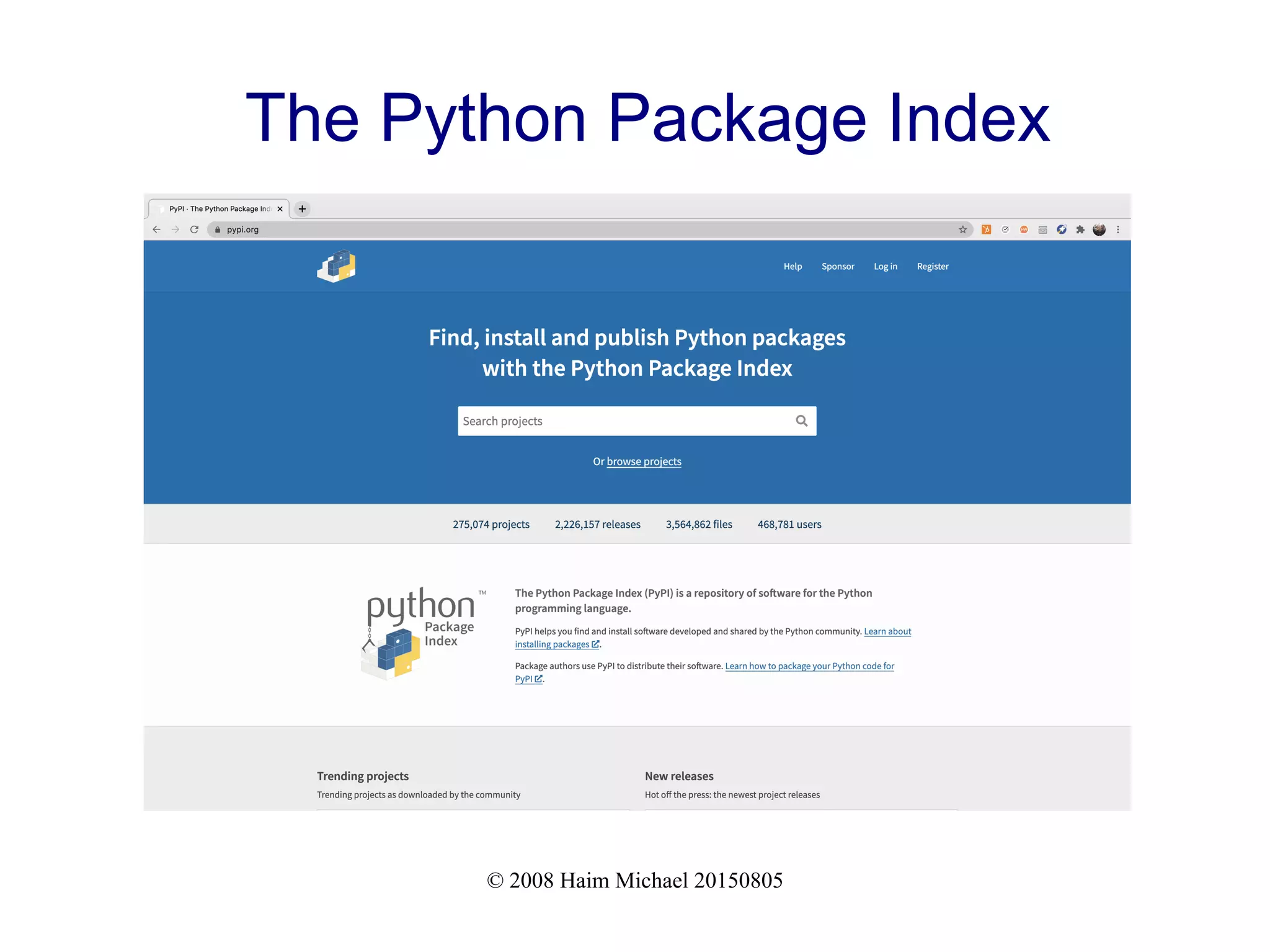
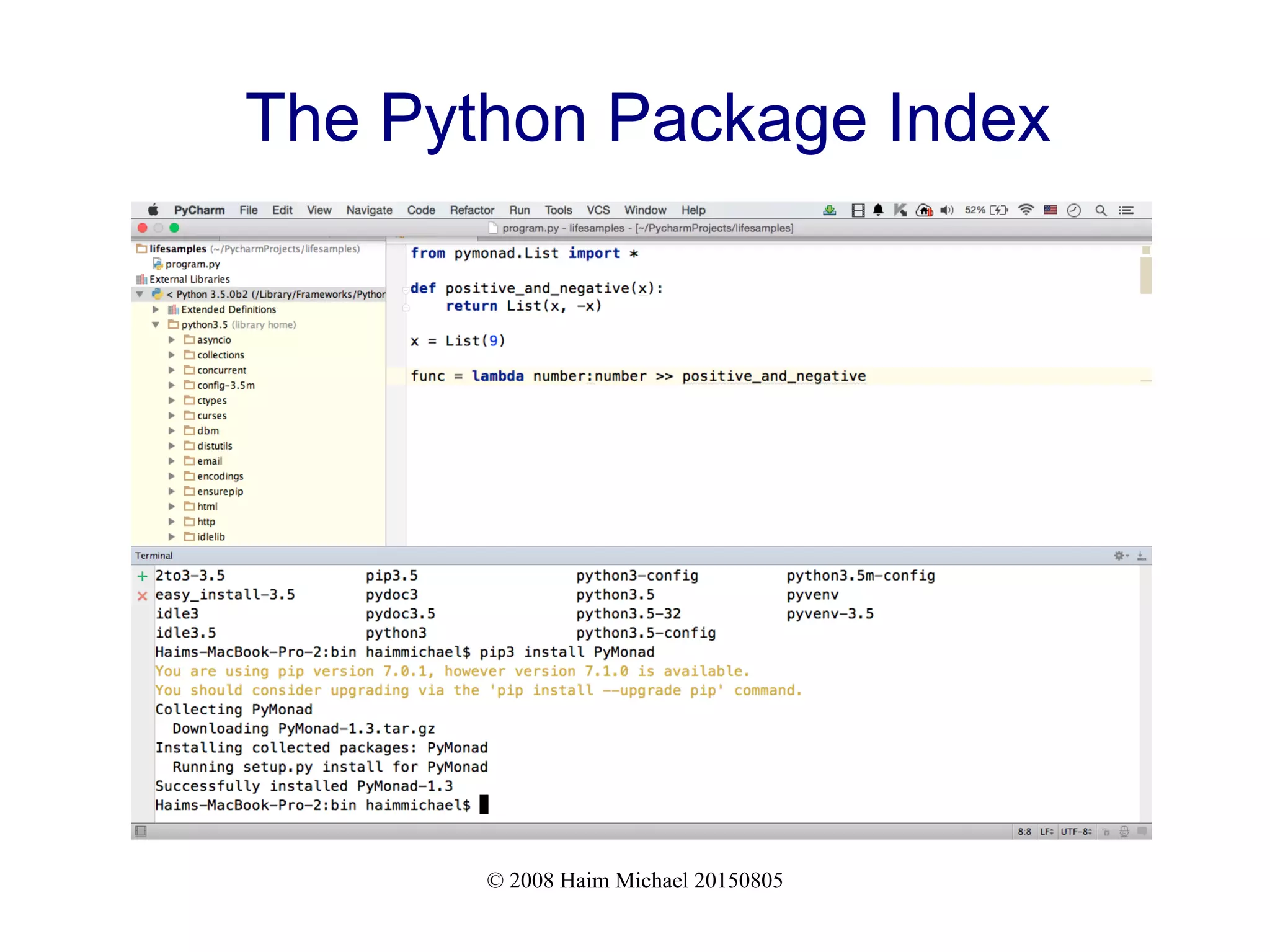

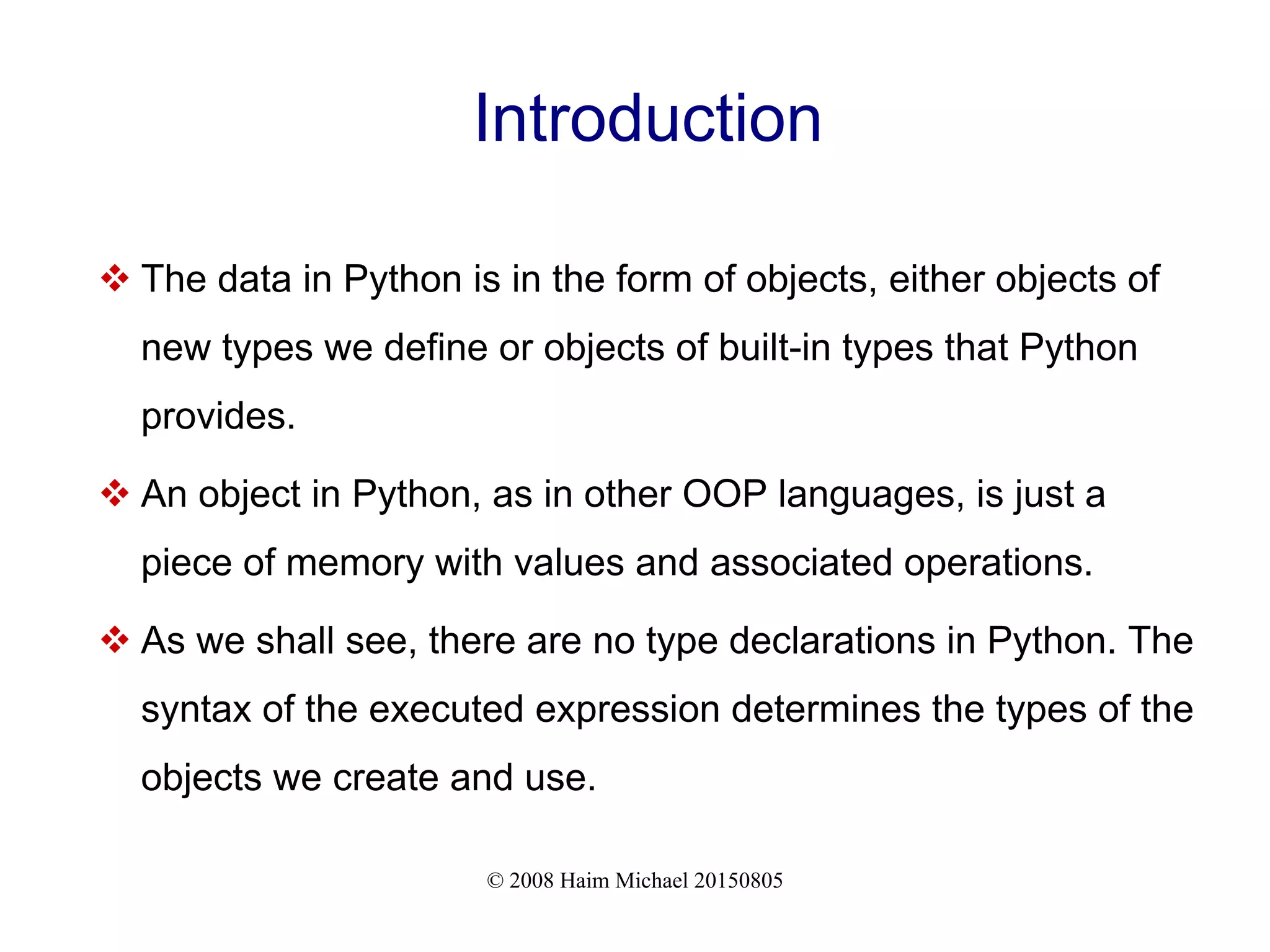
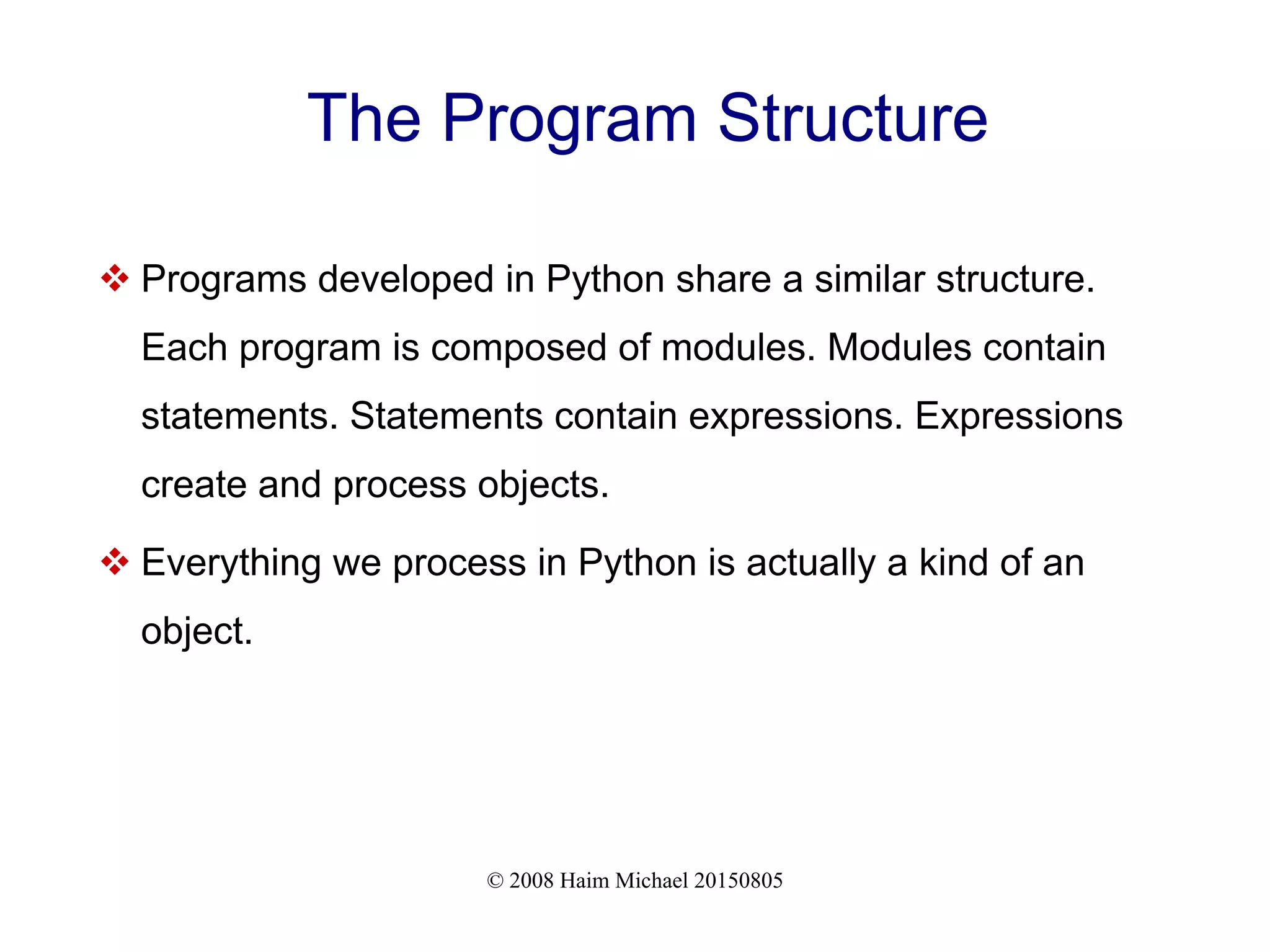
![© 2008 Haim Michael 20150805 Samples for Built-in Types Type Examples float 12.4 str 'abc', “abc”, “ab'c”, “0xA12” list [12, [2,3,4], 'a'] dict {'one':'The One', 'two': 'Two Files'} tuple (1, 'abc', 23, “A”) set {'a', 'b', 'c'}](https://image.slidesharecdn.com/programminginpythononsteroidsxxl20210225-210227210338/75/Programming-in-Python-on-Steroid-32-2048.jpg)
![© 2008 Haim Michael 20150805 The type Function Using the type function we can get the type of values we have in our code. a = [3,5,21,23,5] print(type(a))](https://image.slidesharecdn.com/programminginpythononsteroidsxxl20210225-210227210338/75/Programming-in-Python-on-Steroid-33-2048.jpg)
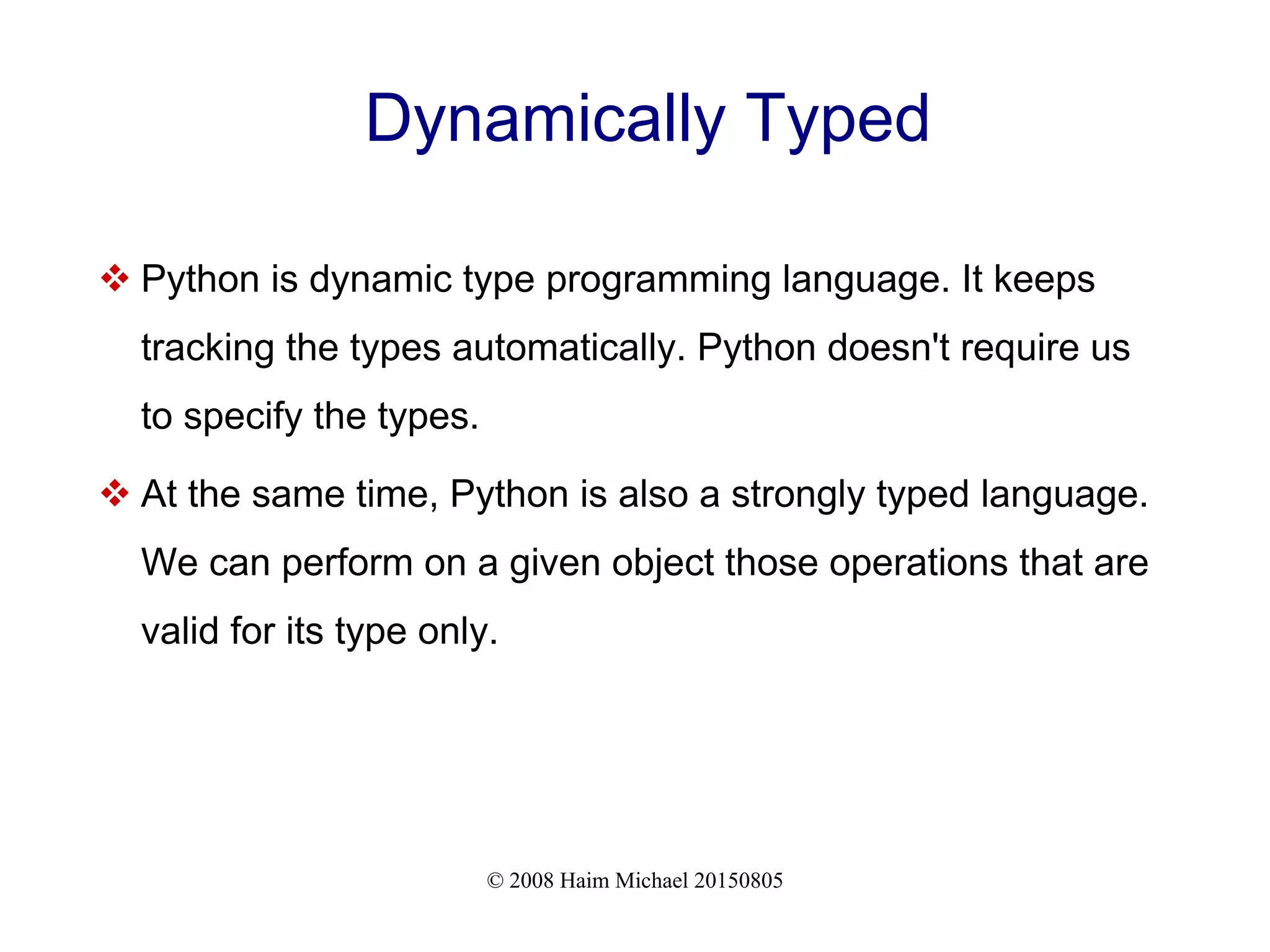
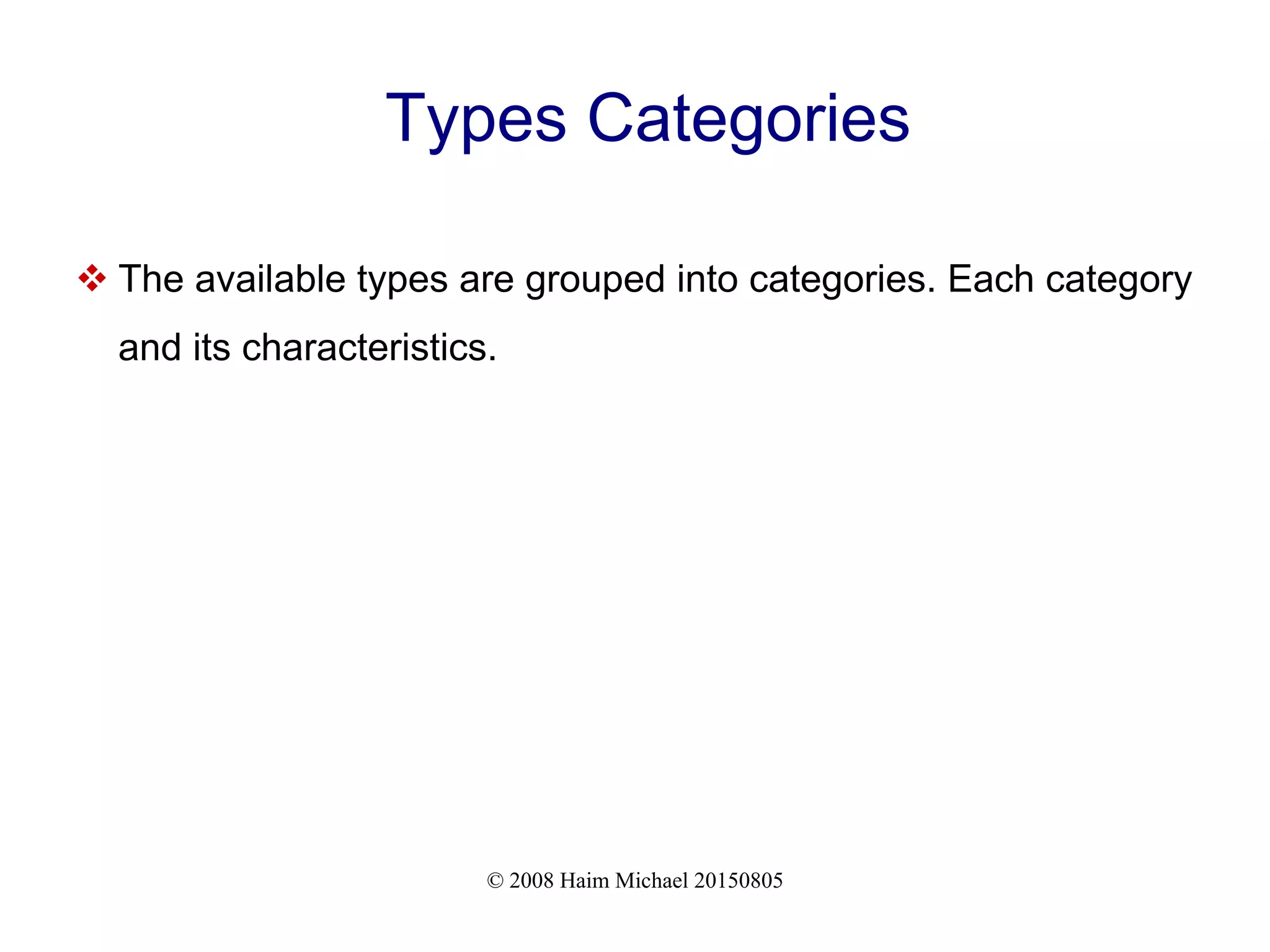
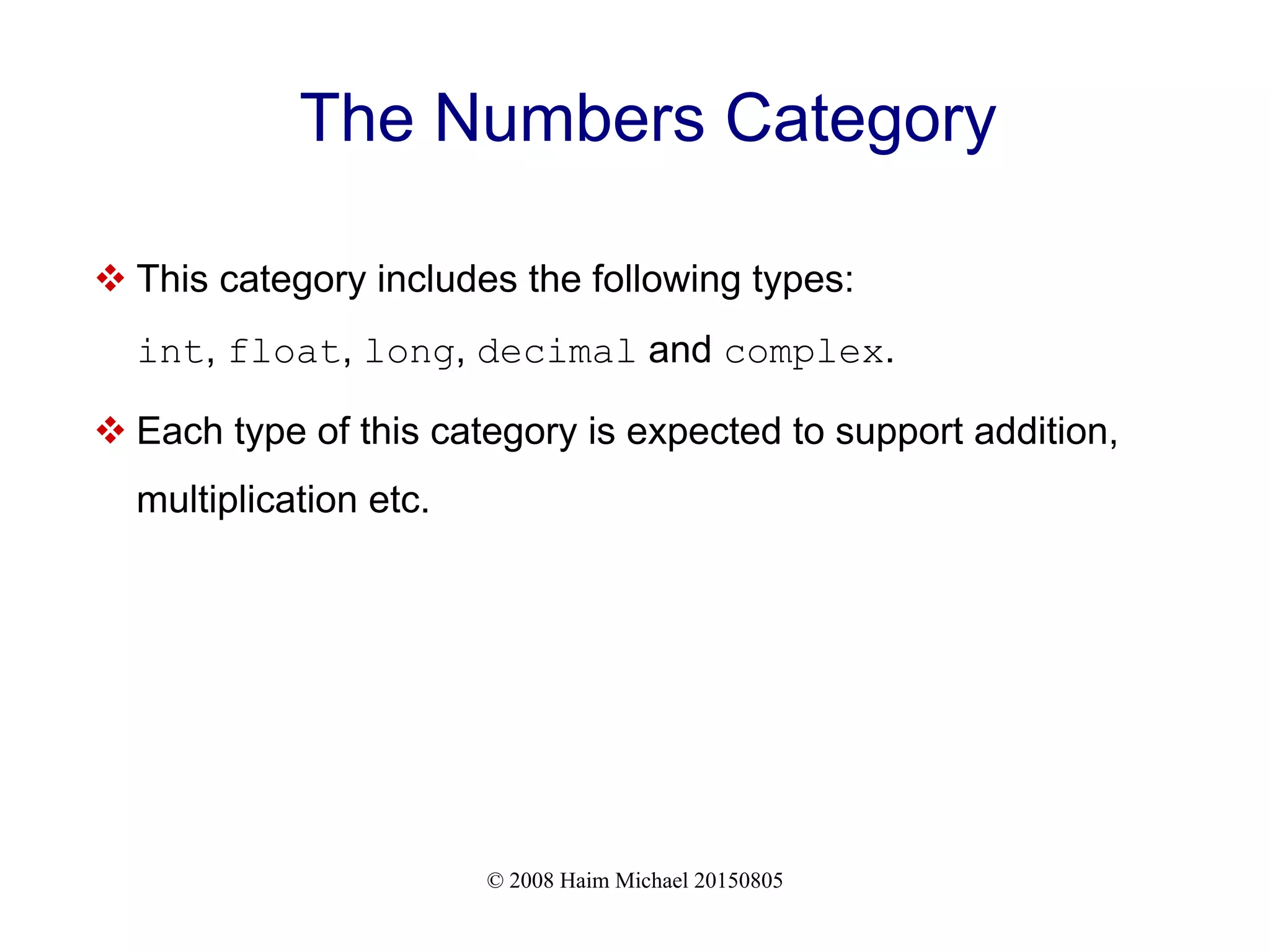
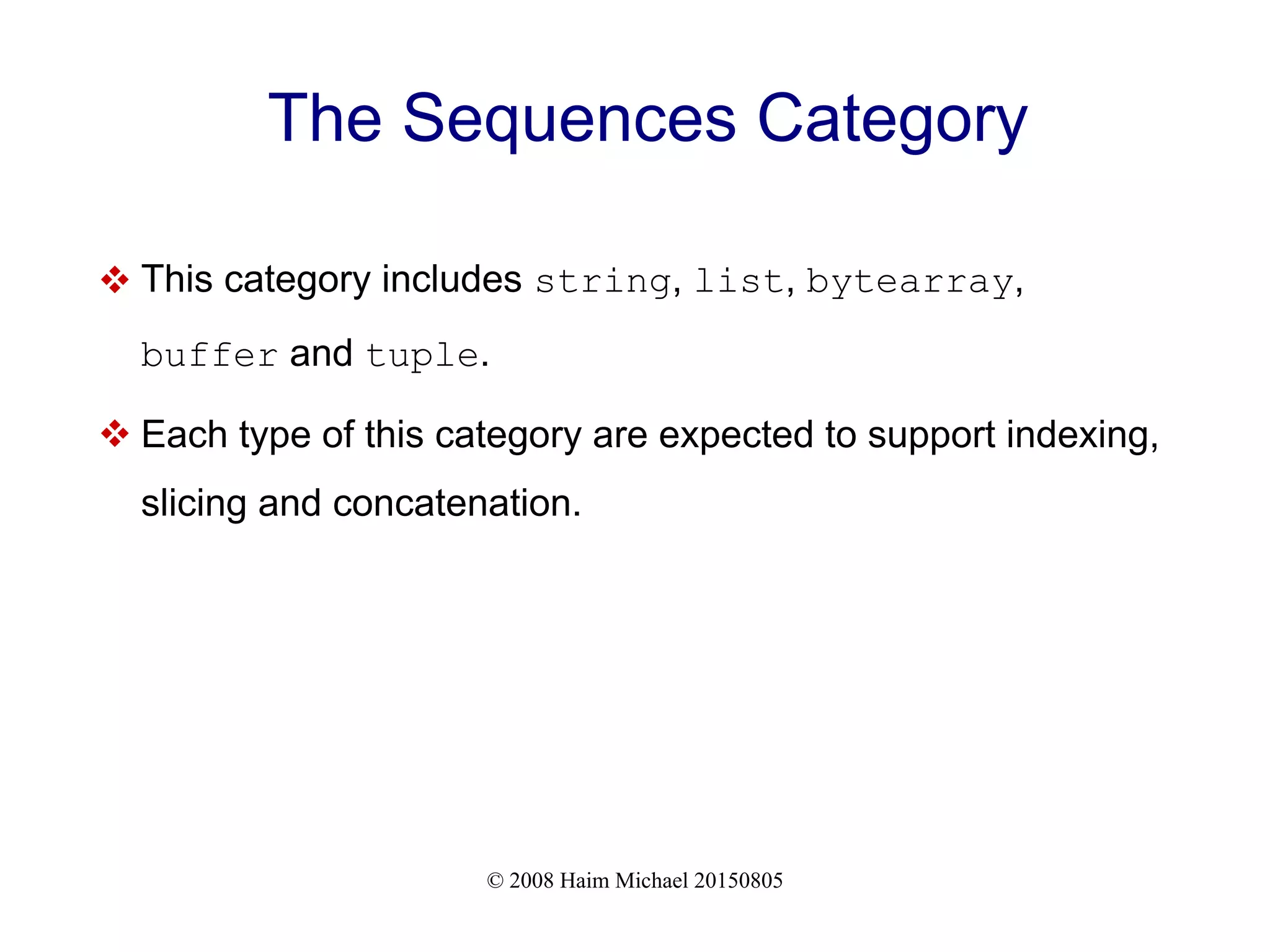
![© 2008 Haim Michael 20150805 The Sequences Category a = [3,5,21,23,5,"fafa"] a.append(499) print(a)](https://image.slidesharecdn.com/programminginpythononsteroidsxxl20210225-210227210338/75/Programming-in-Python-on-Steroid-38-2048.jpg)




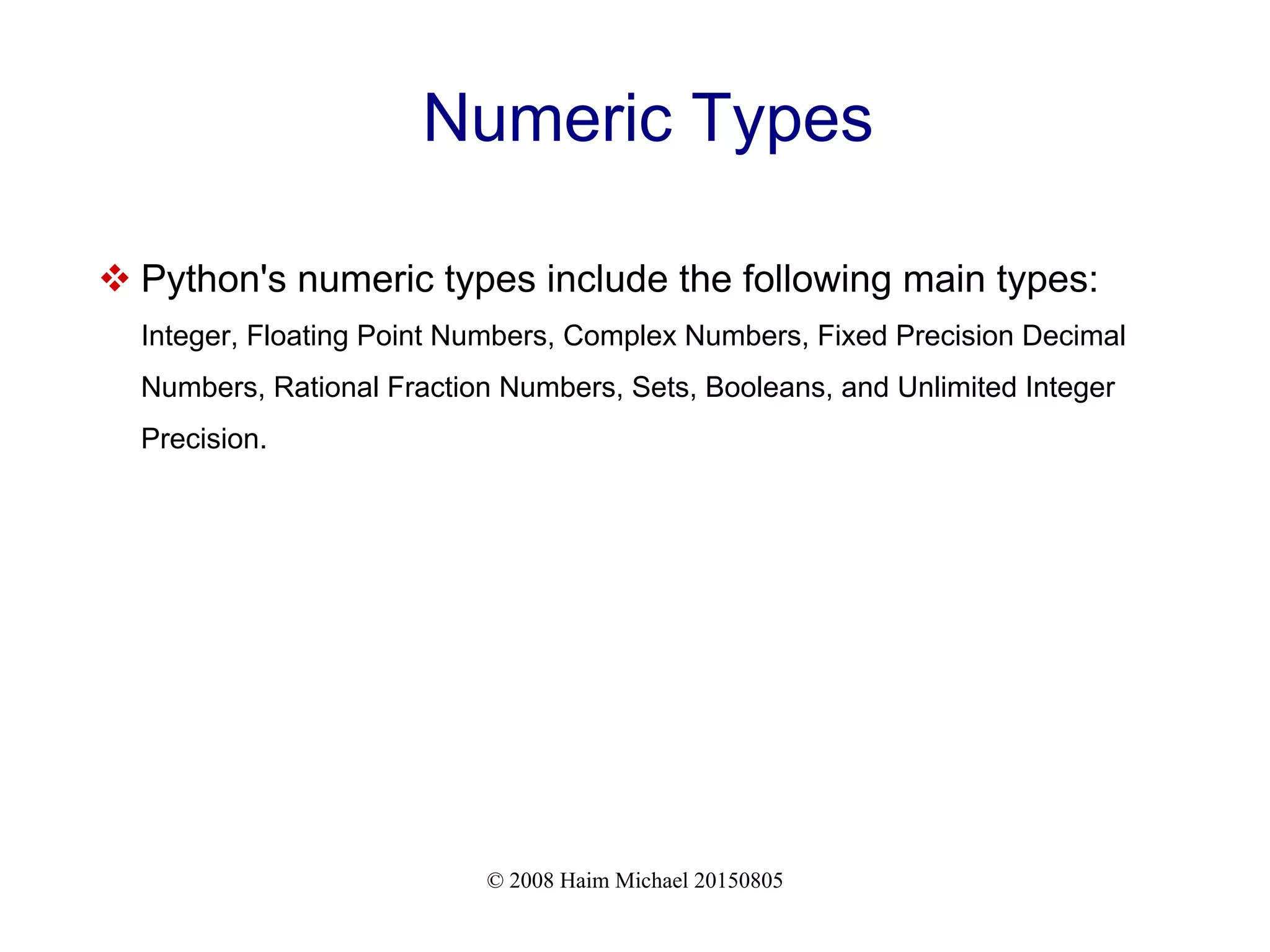
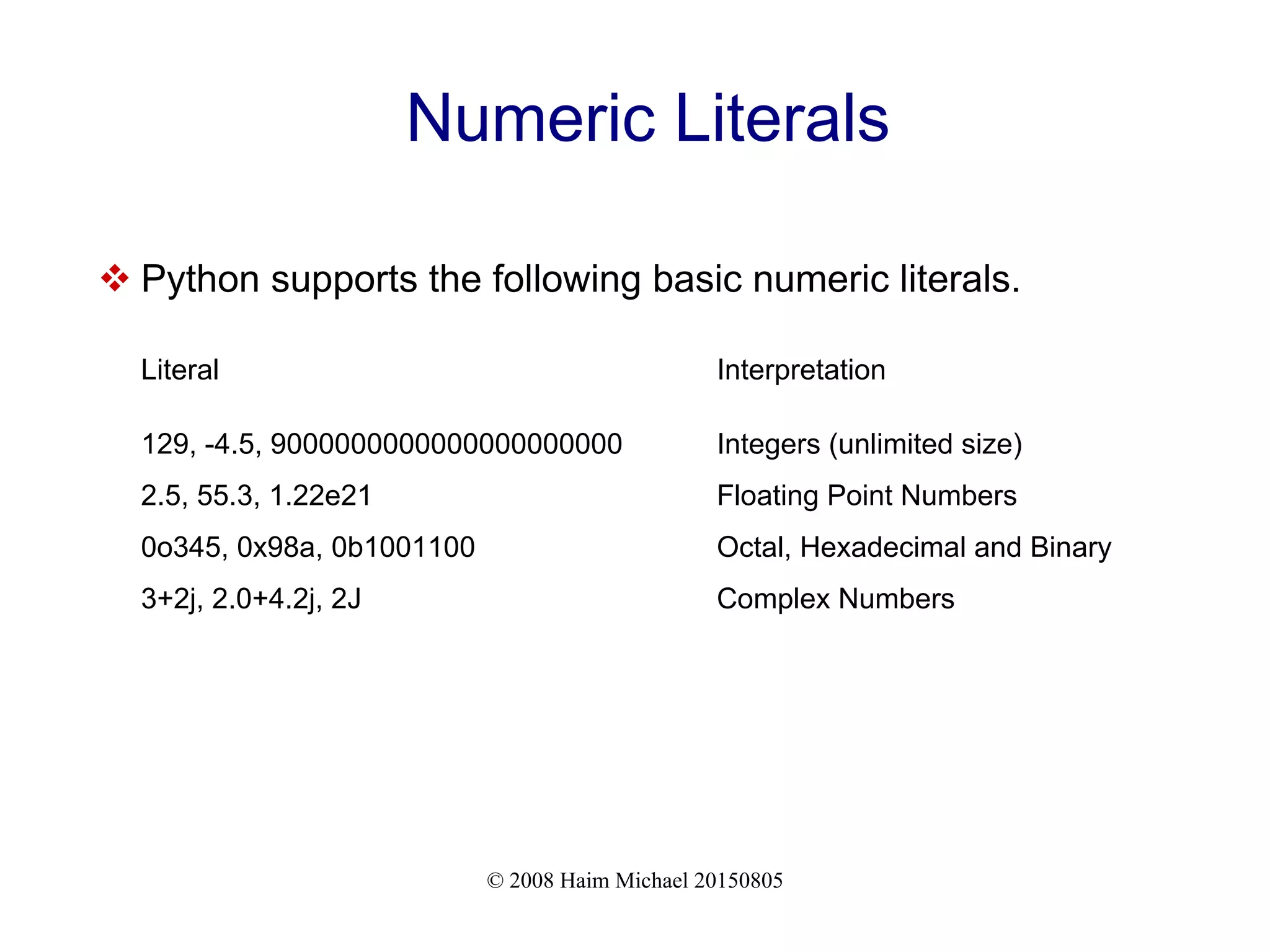
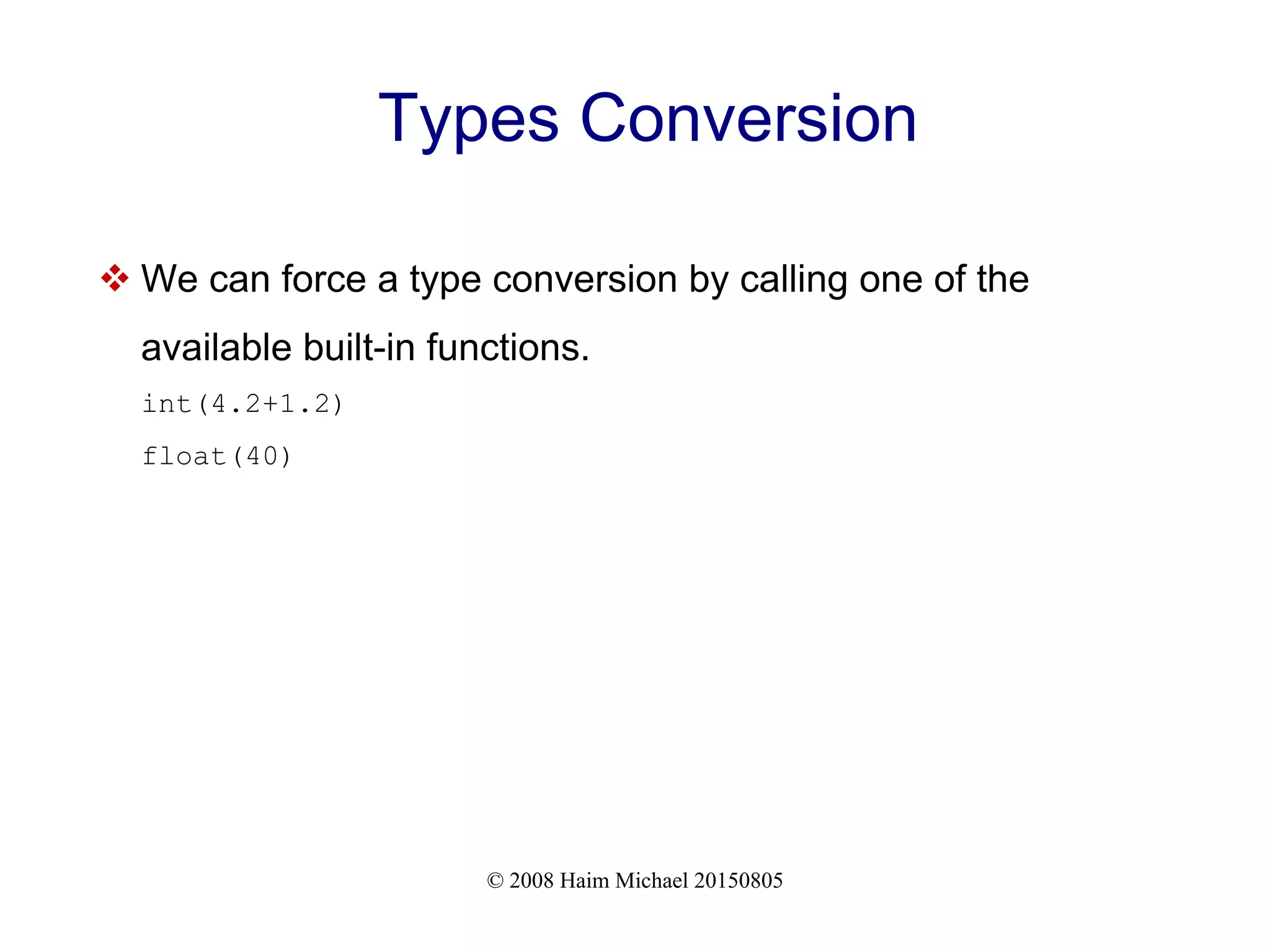
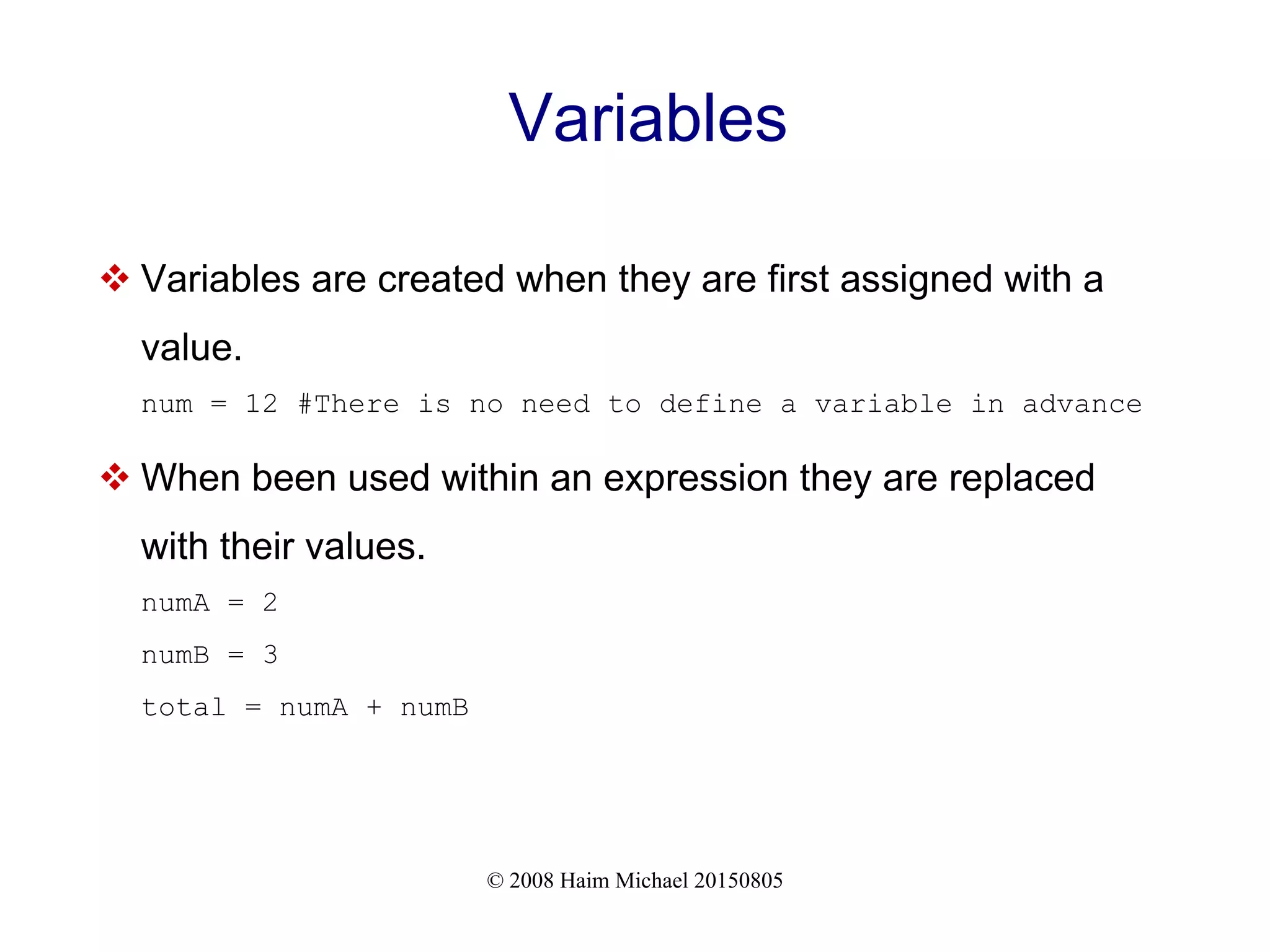
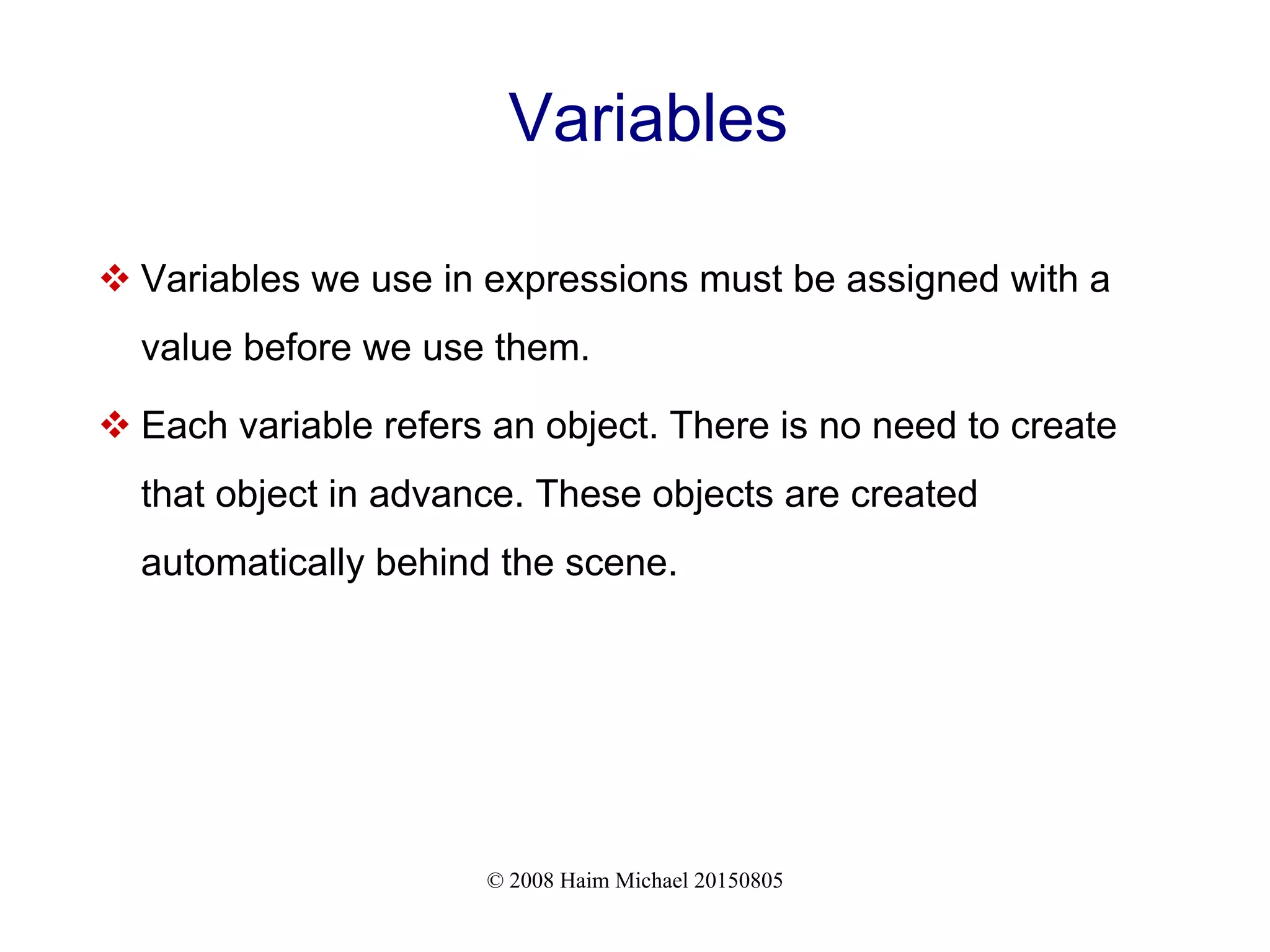
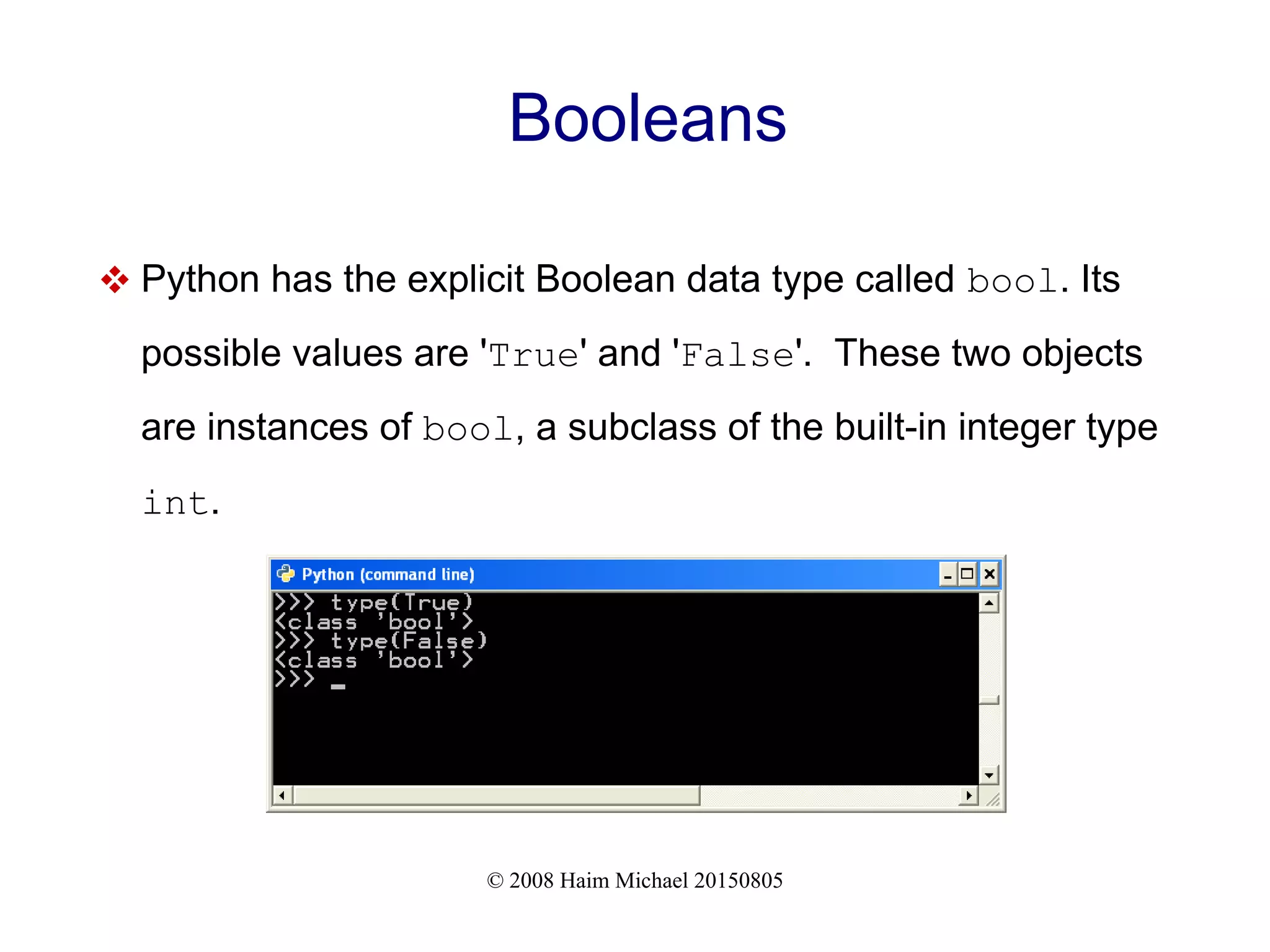
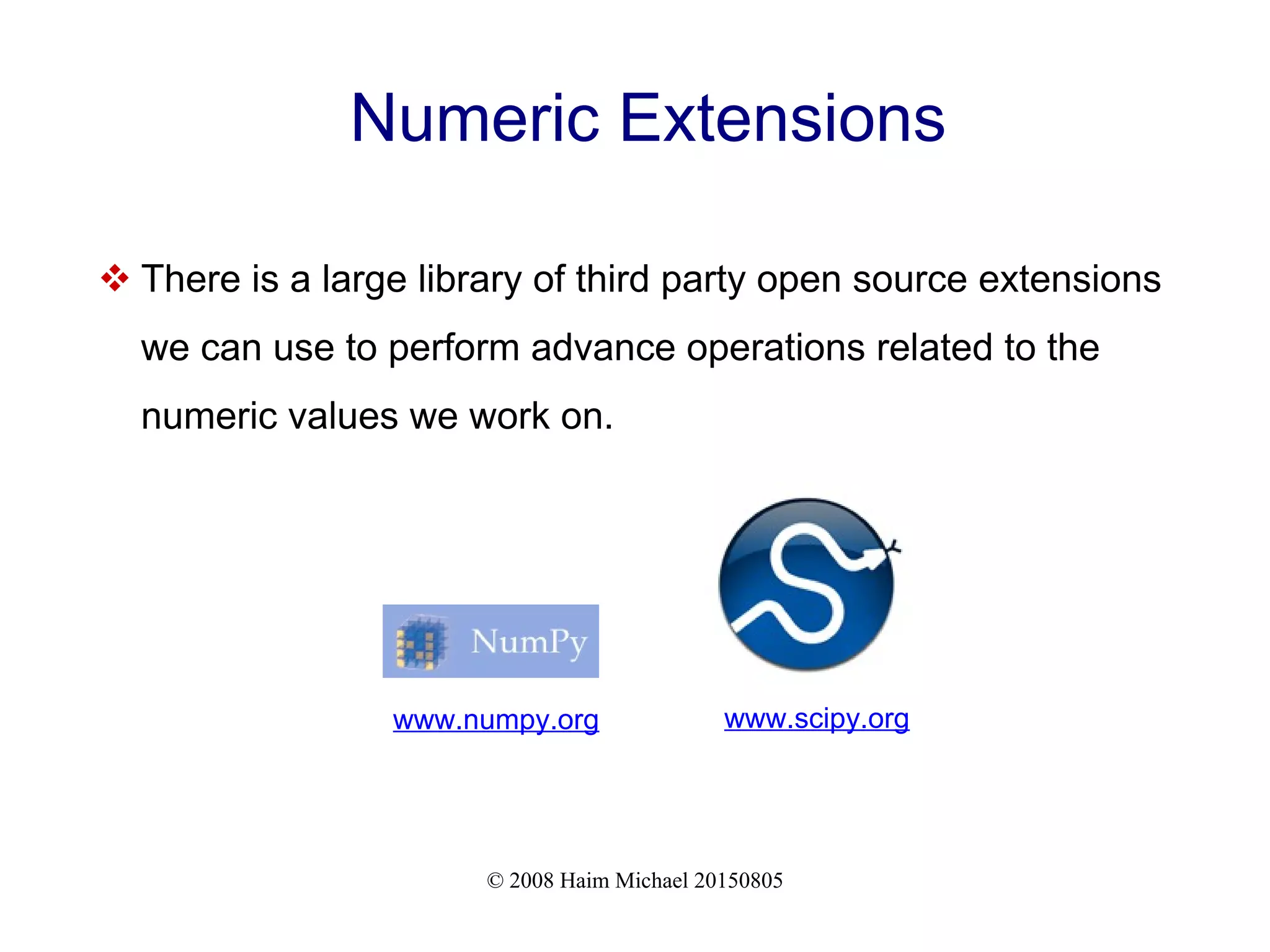
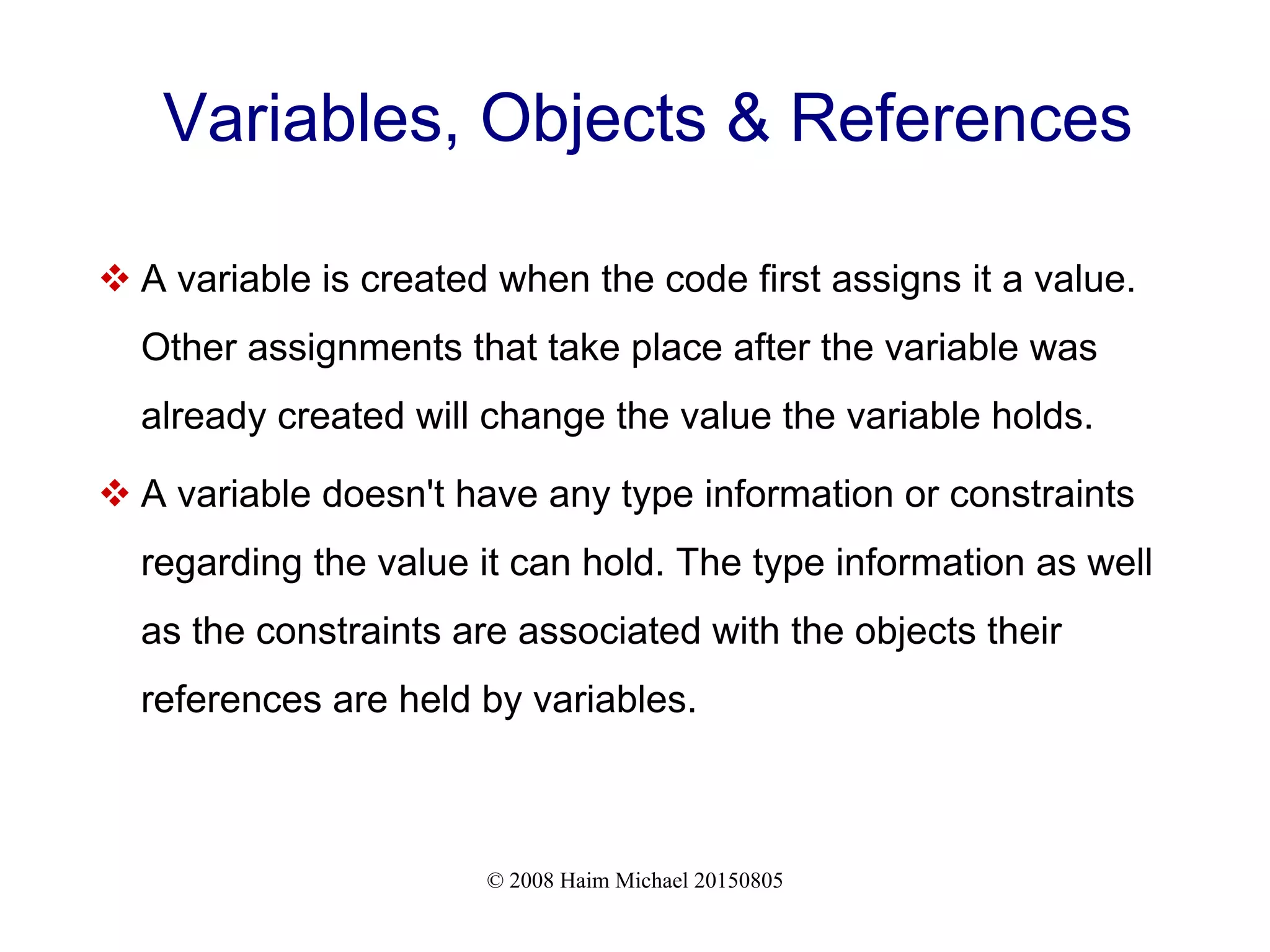
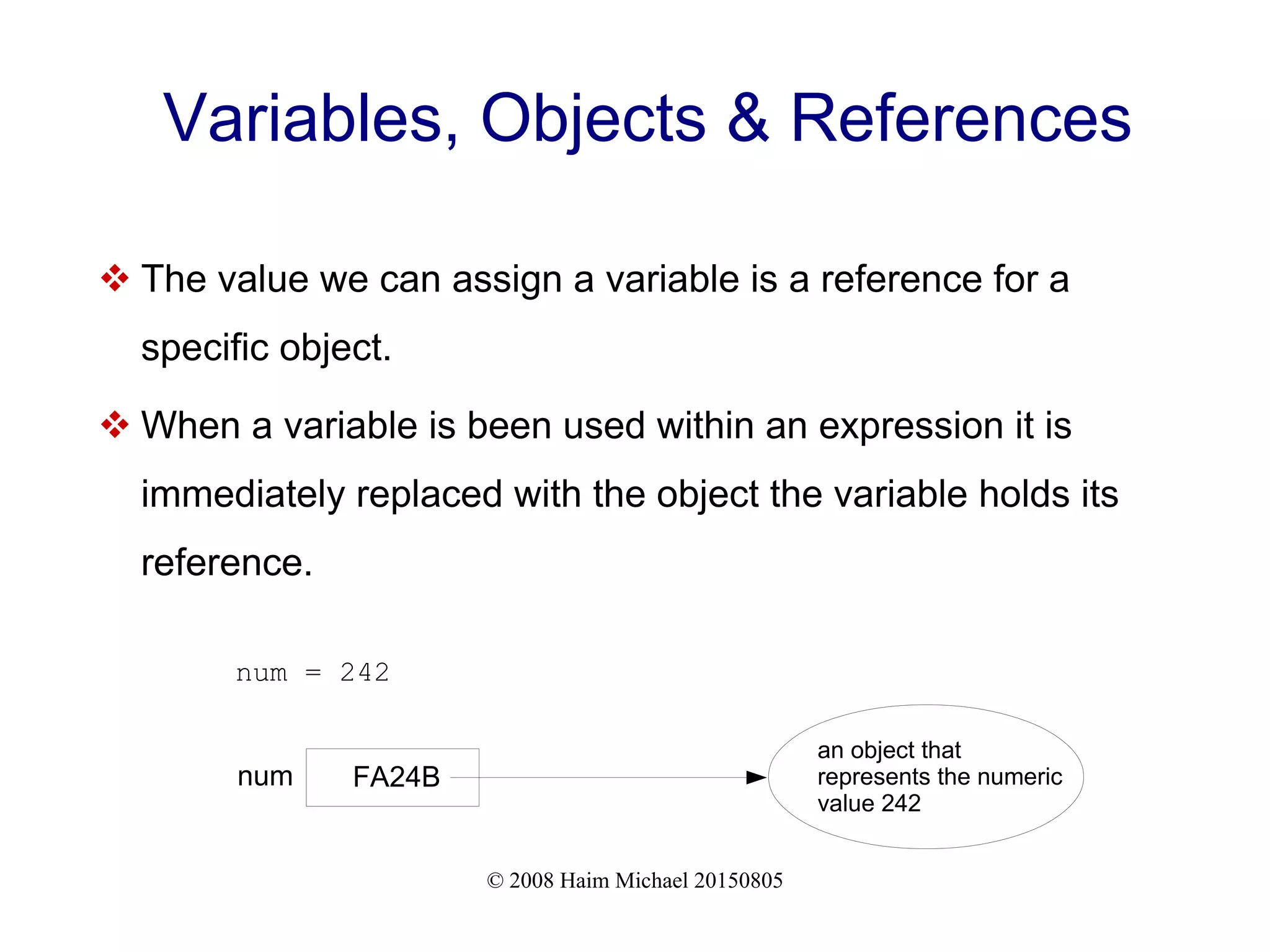
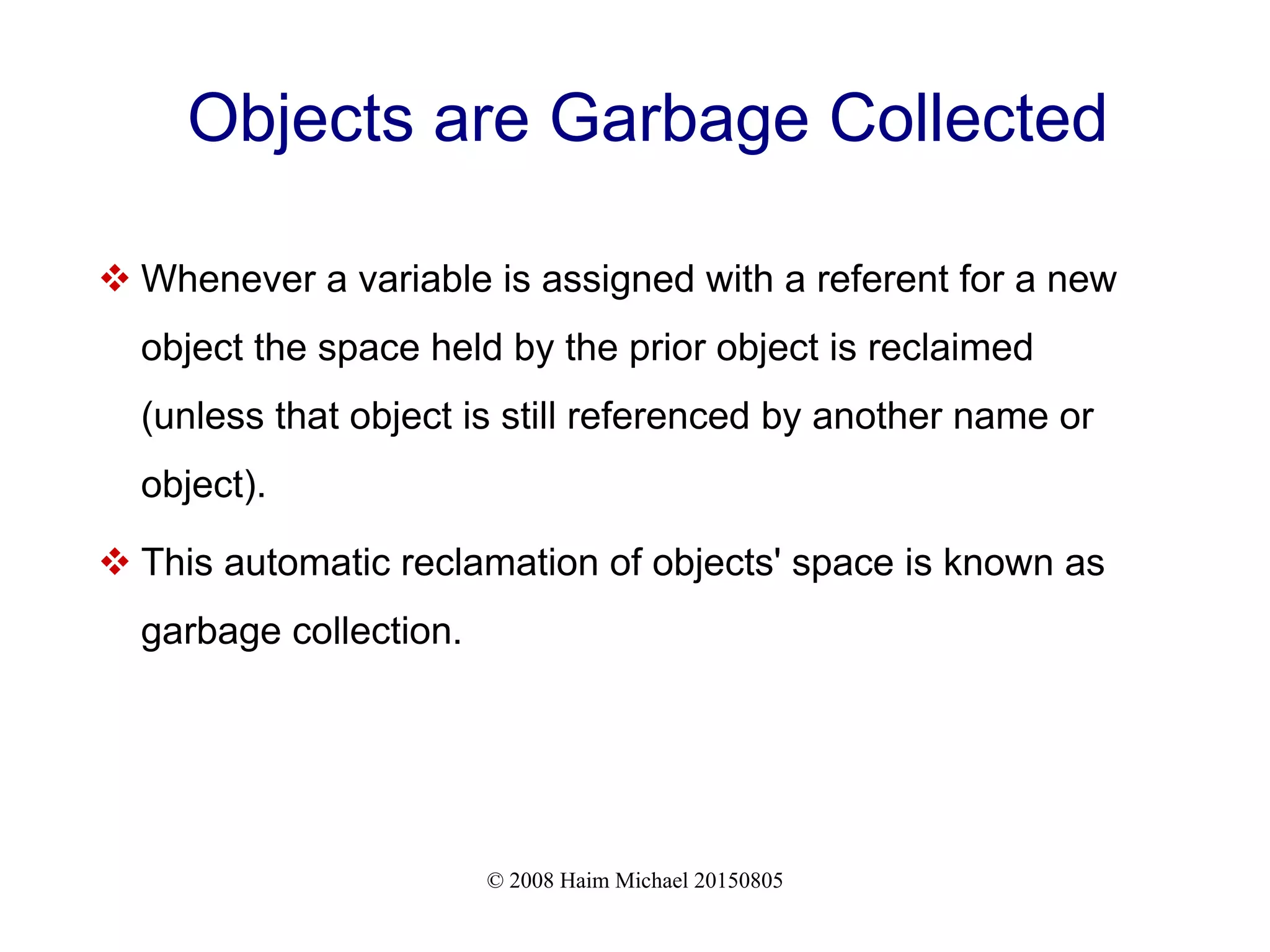
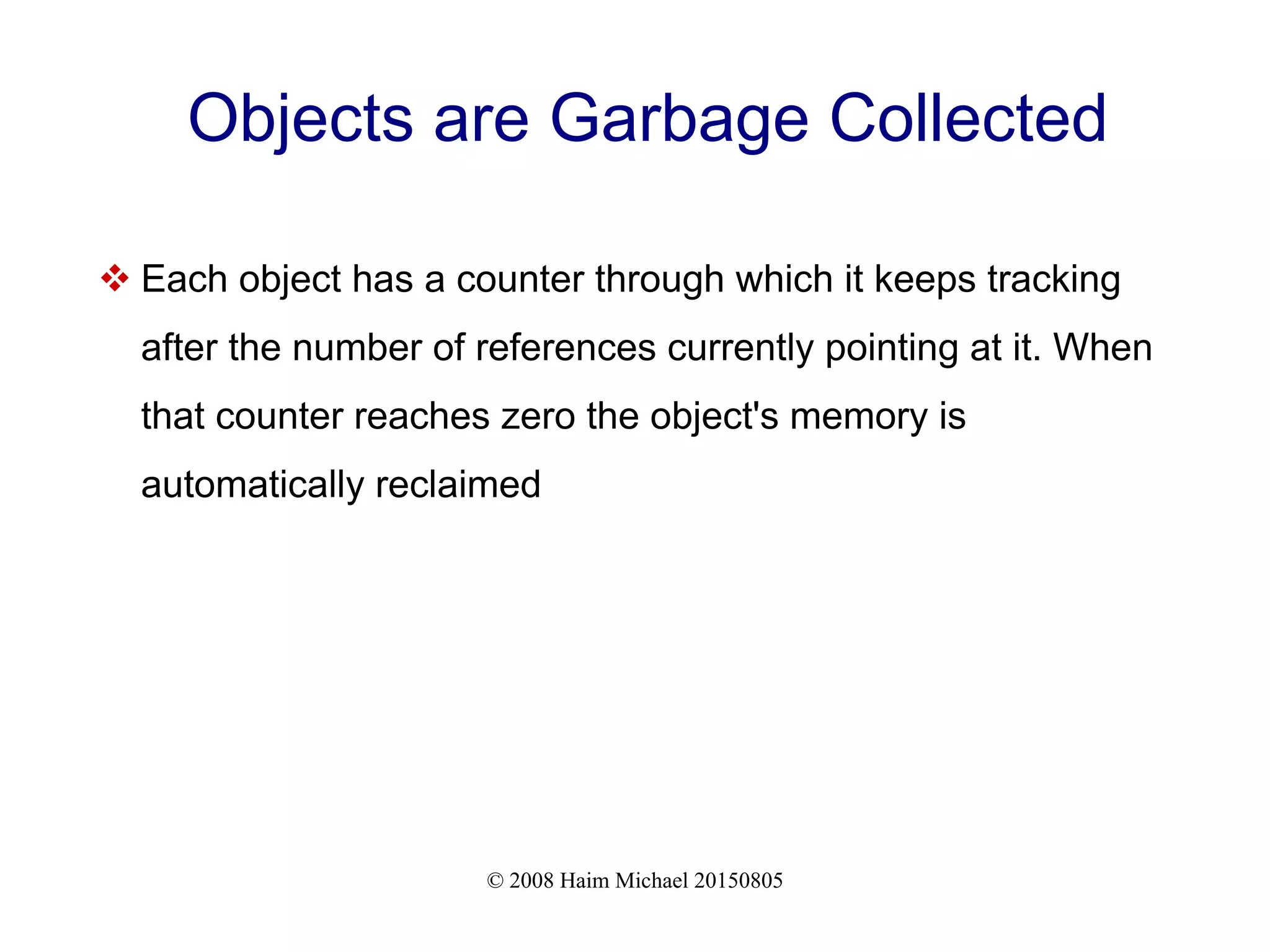

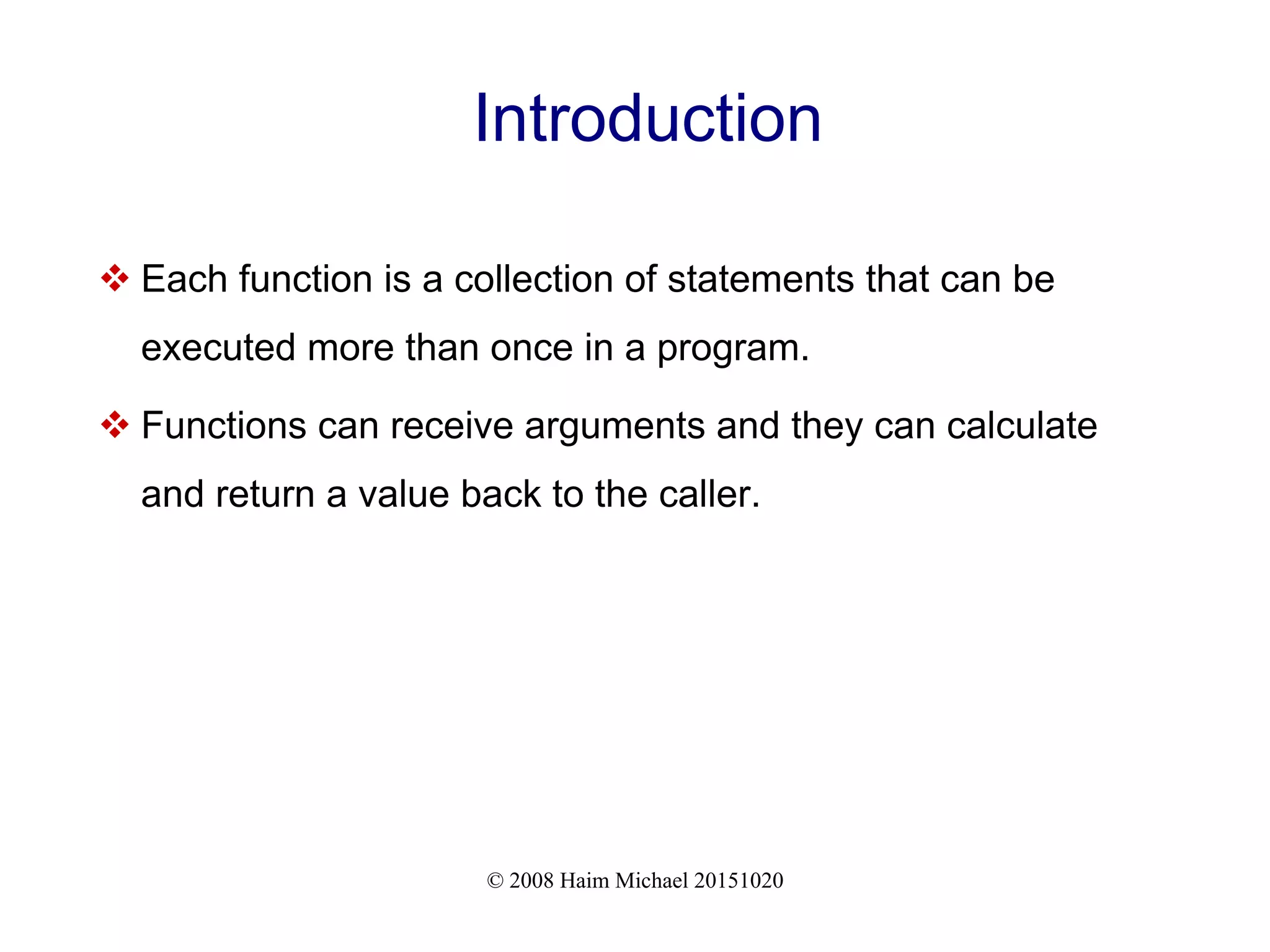
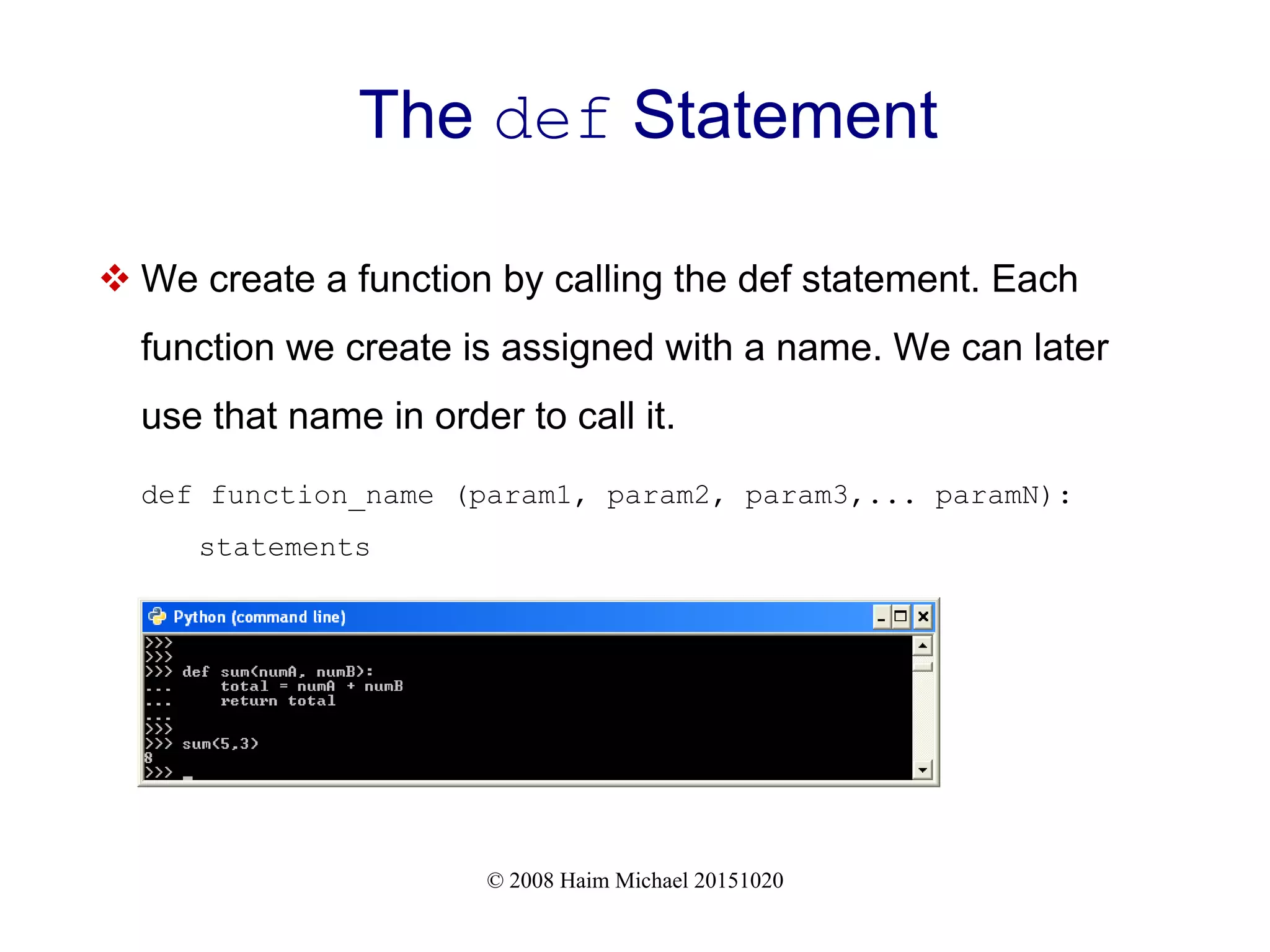
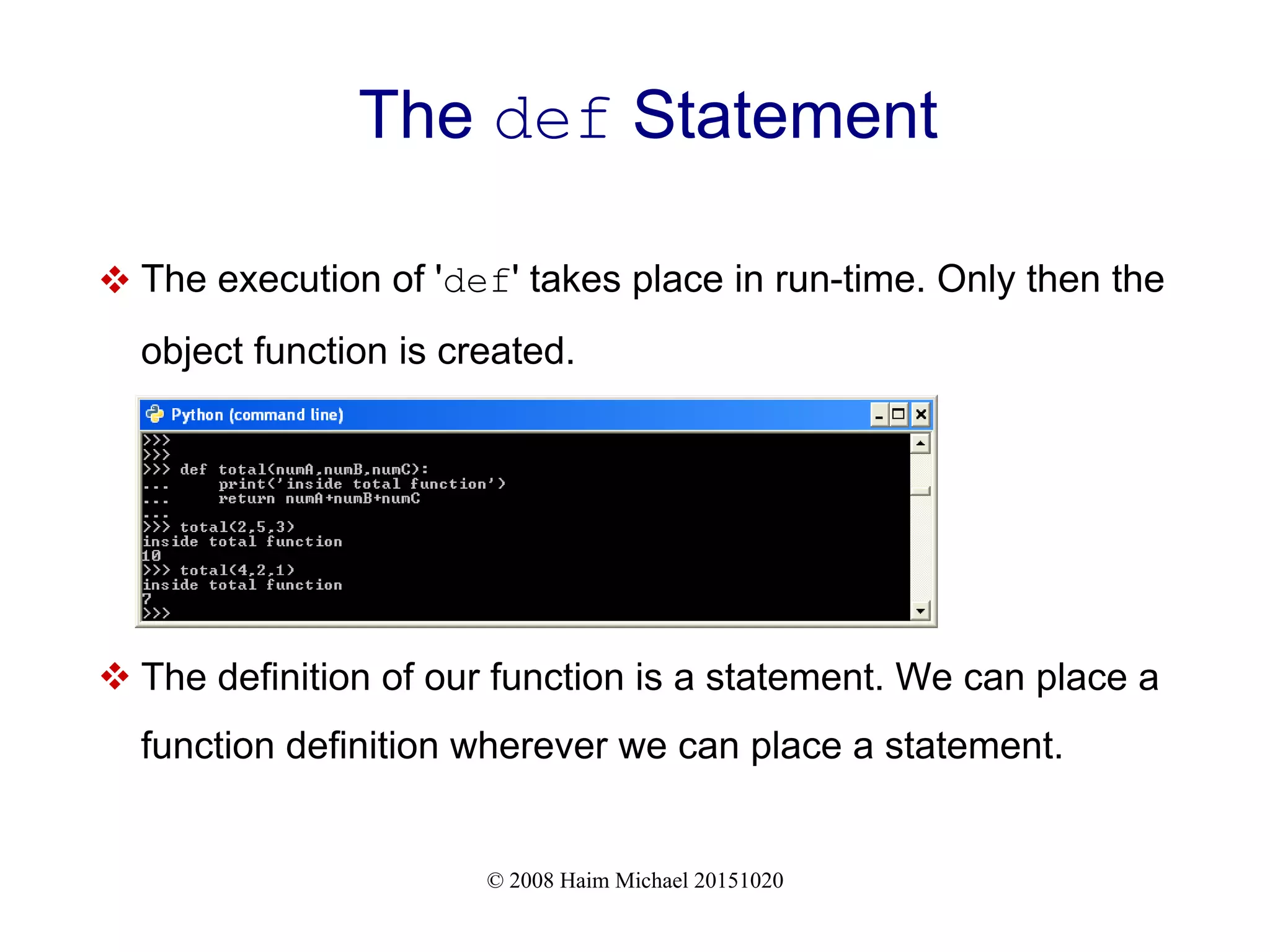
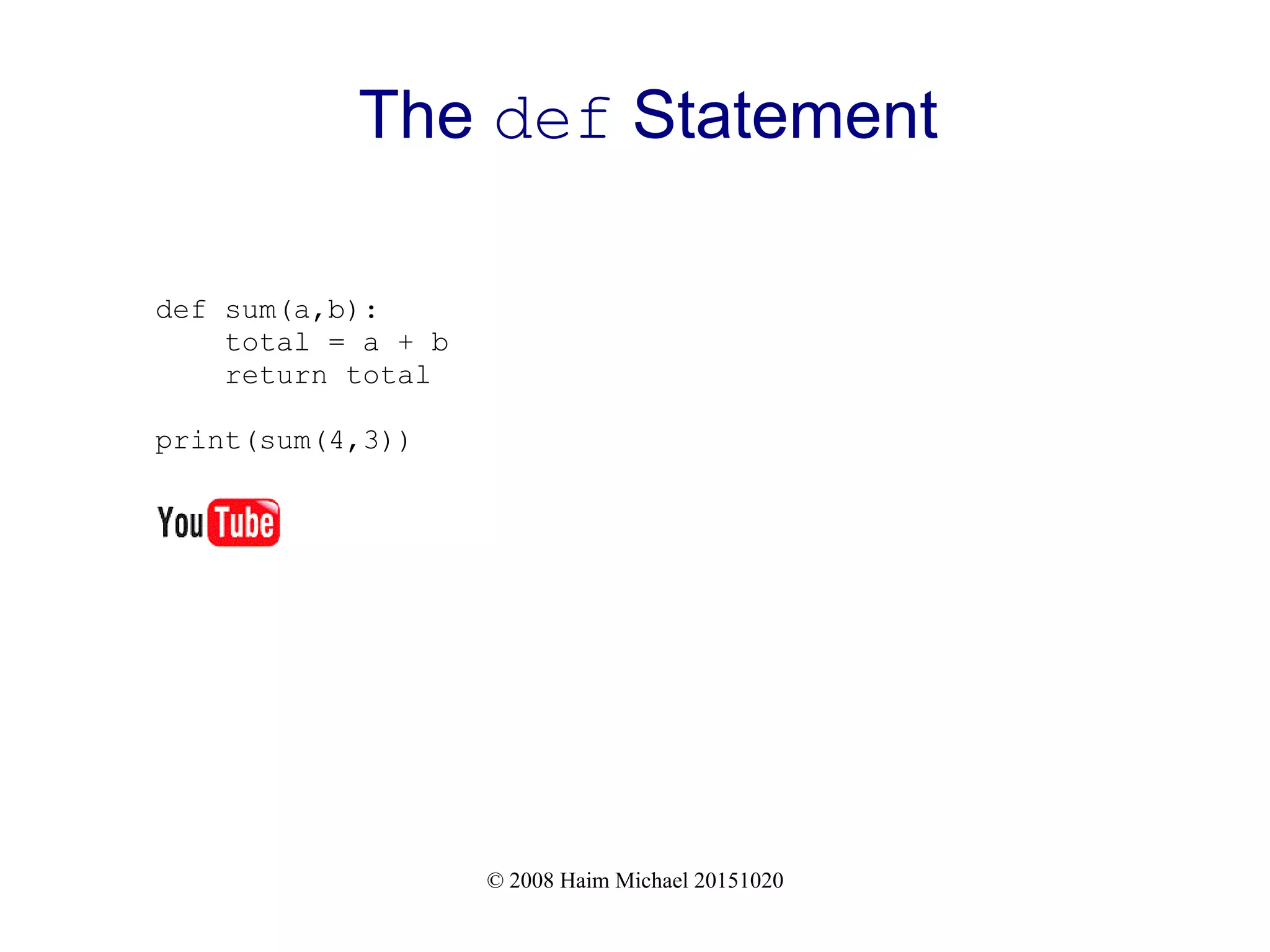
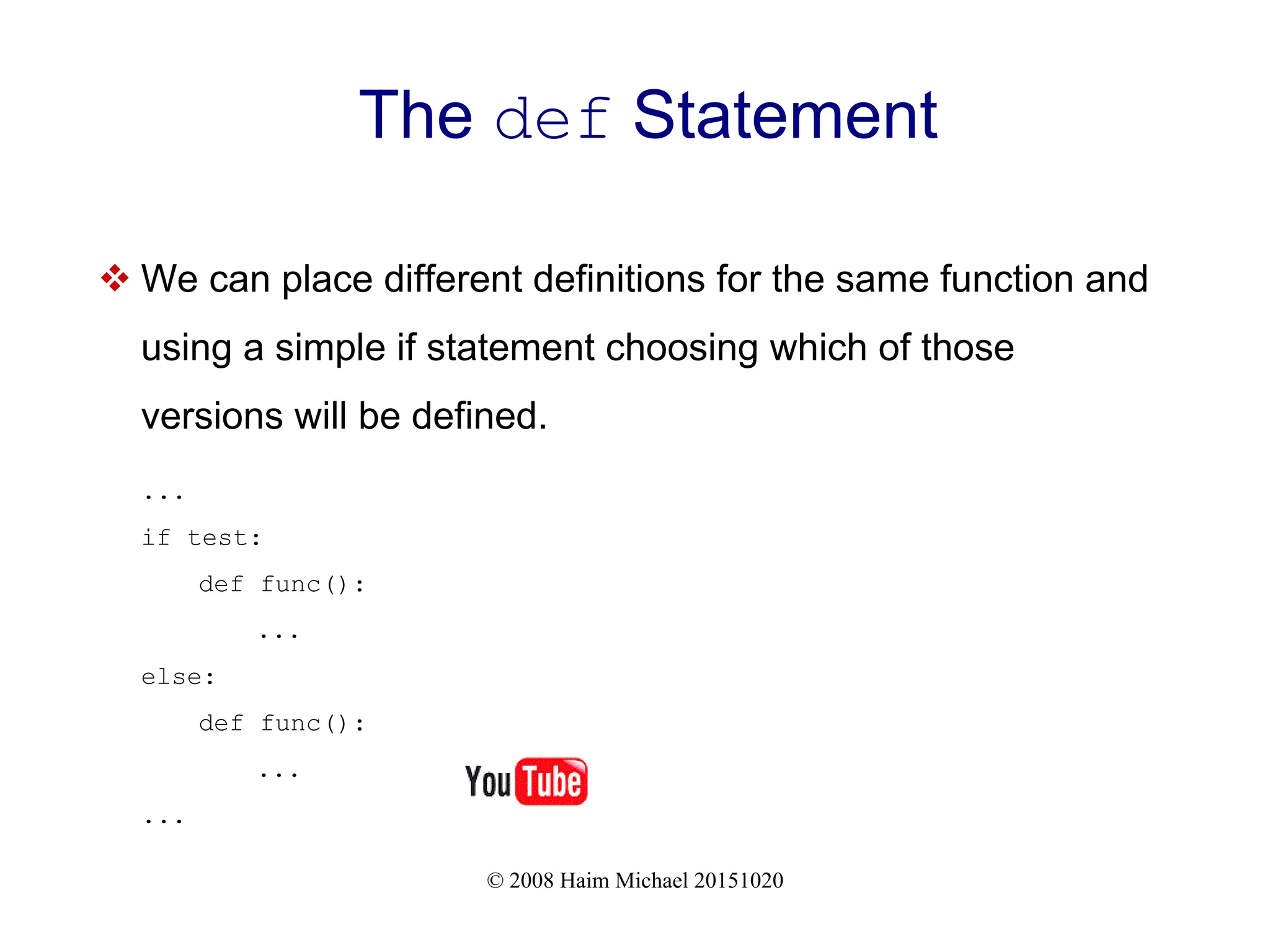
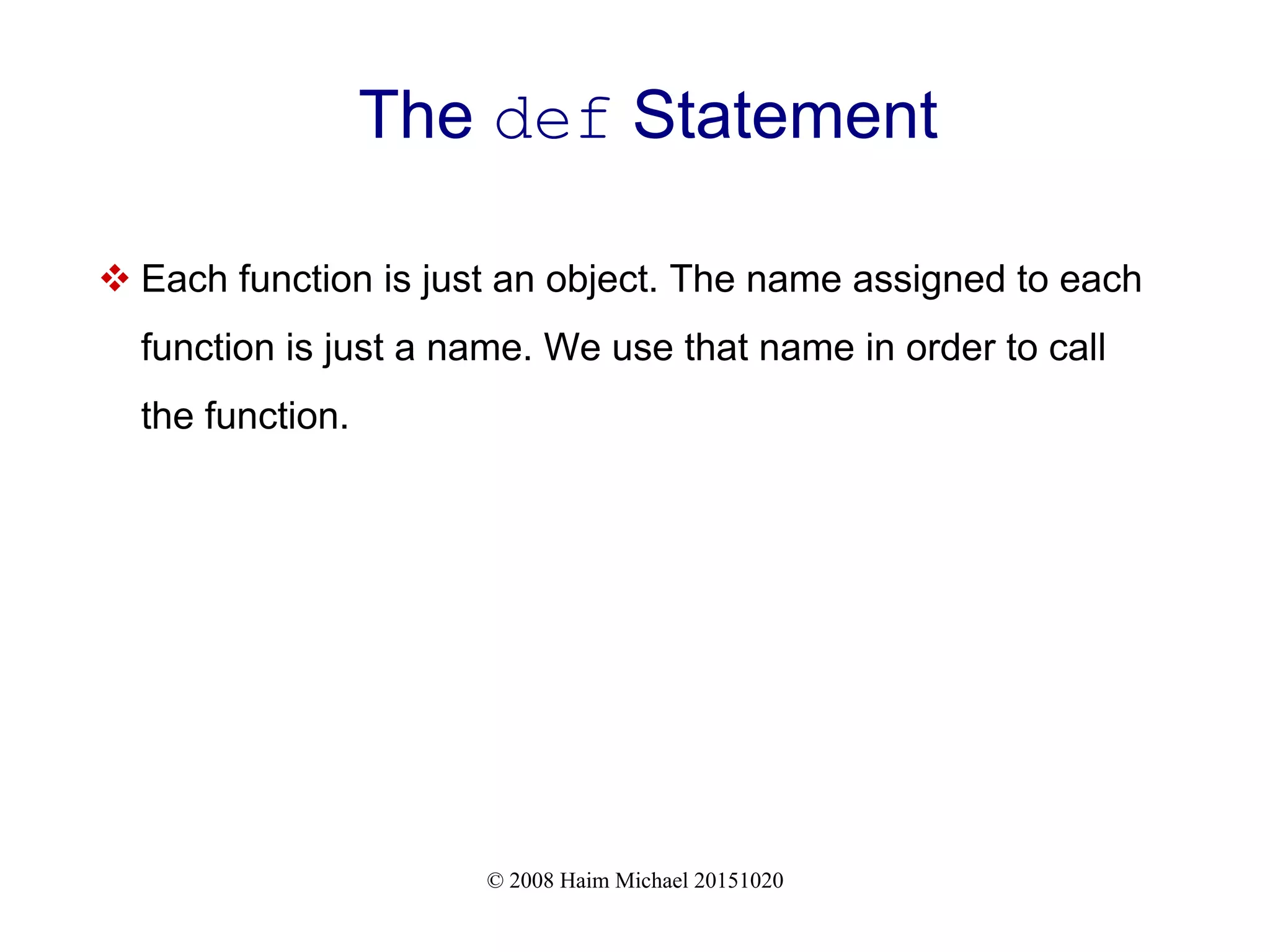
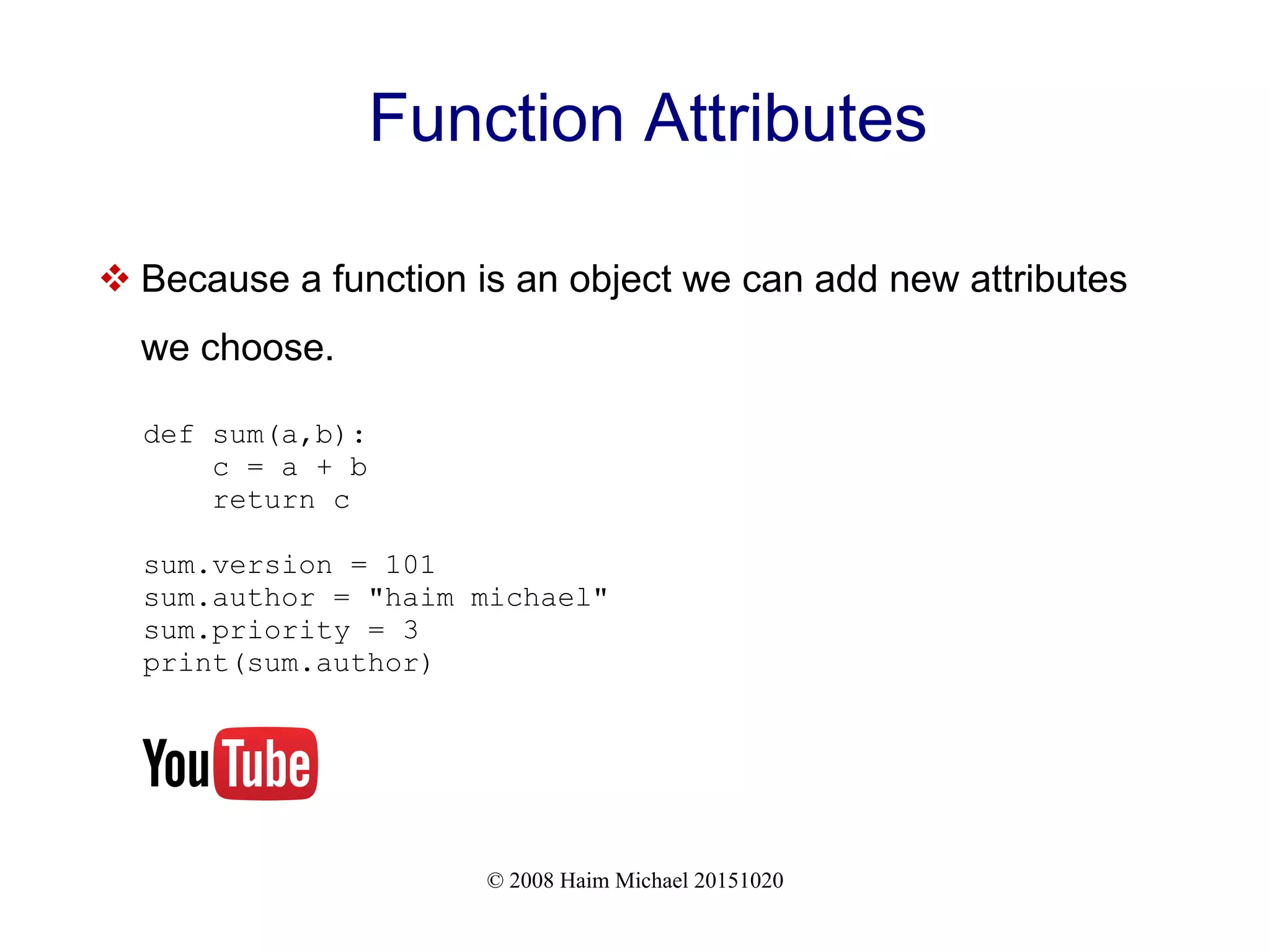
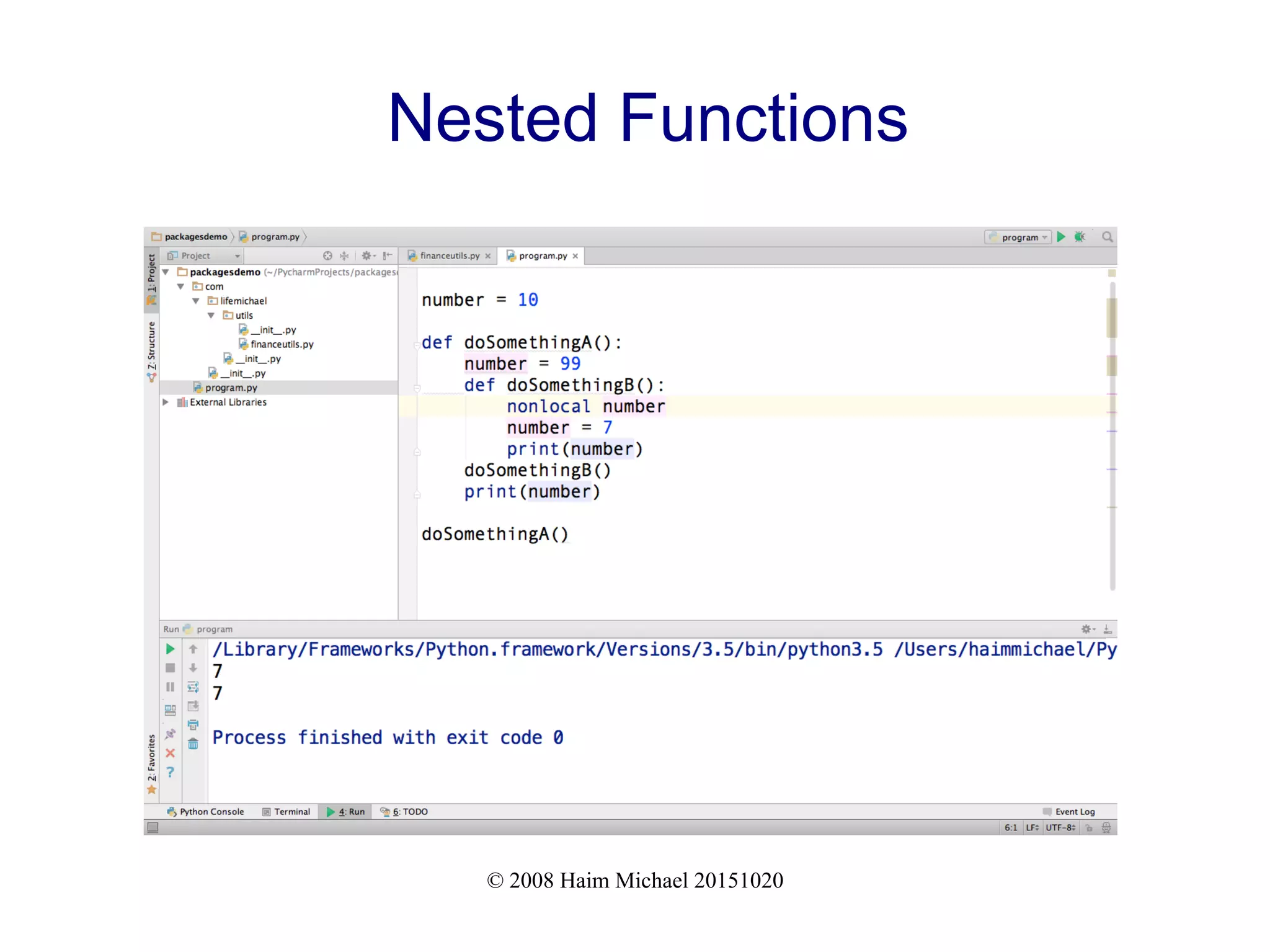
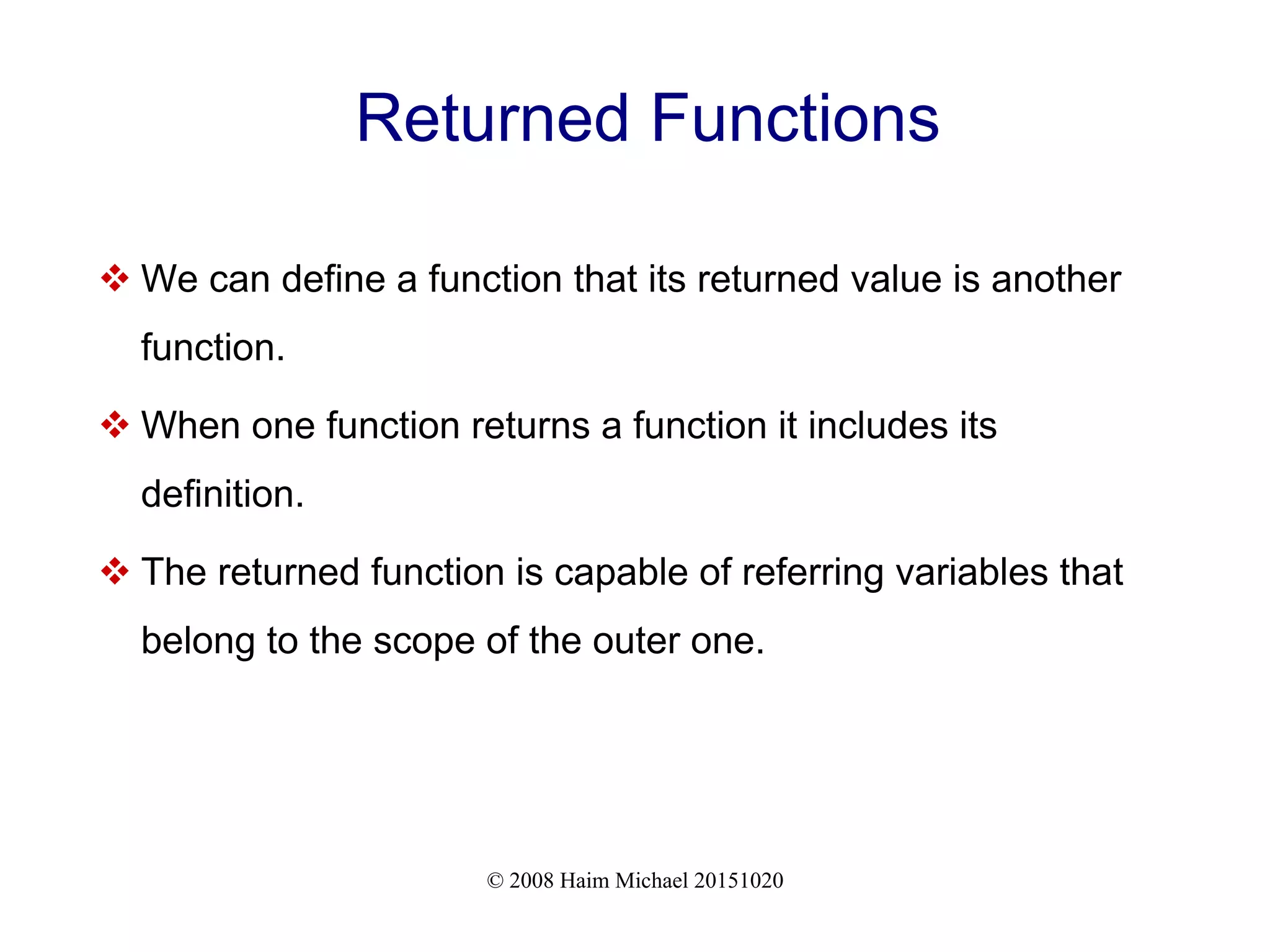
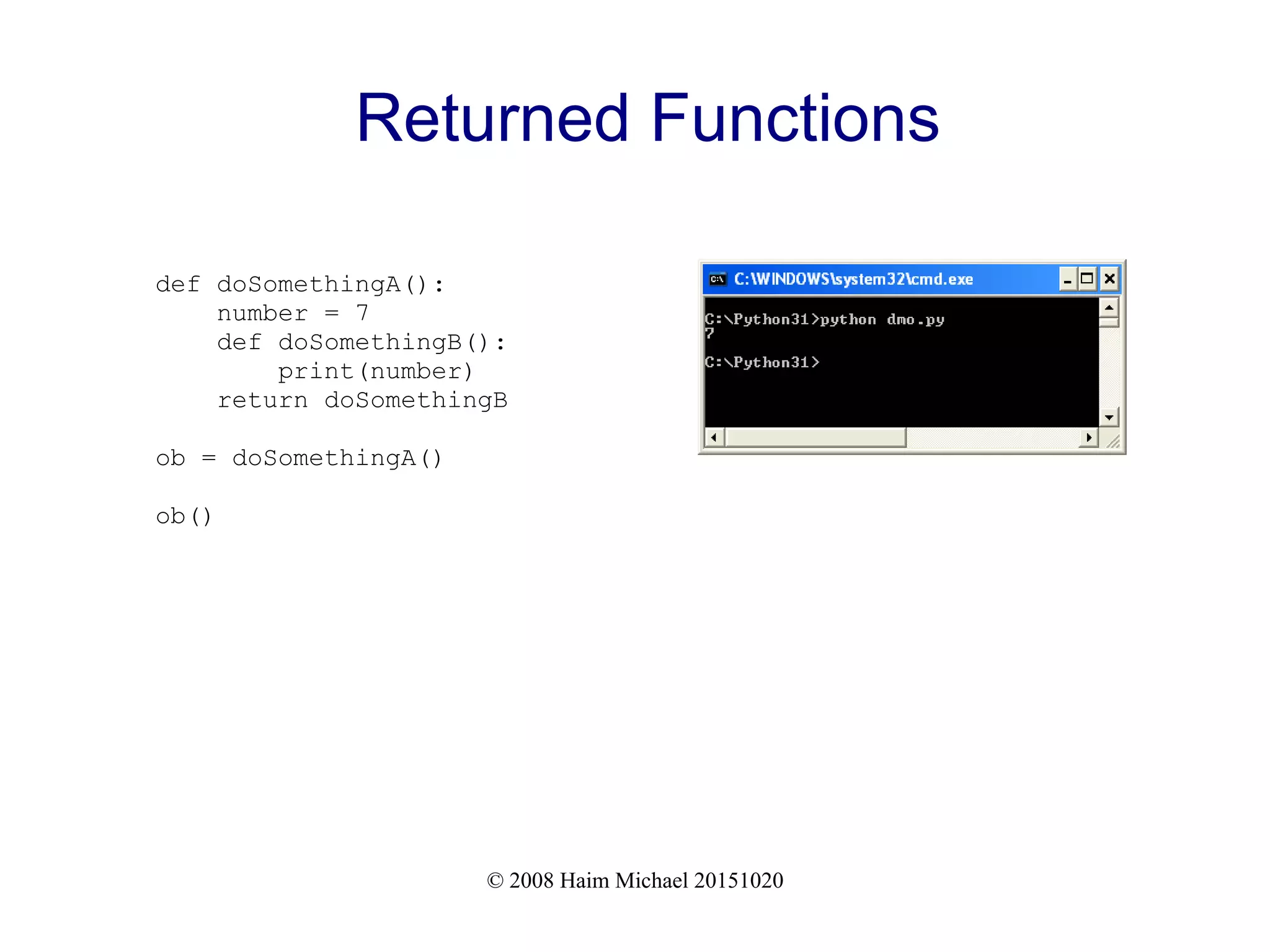
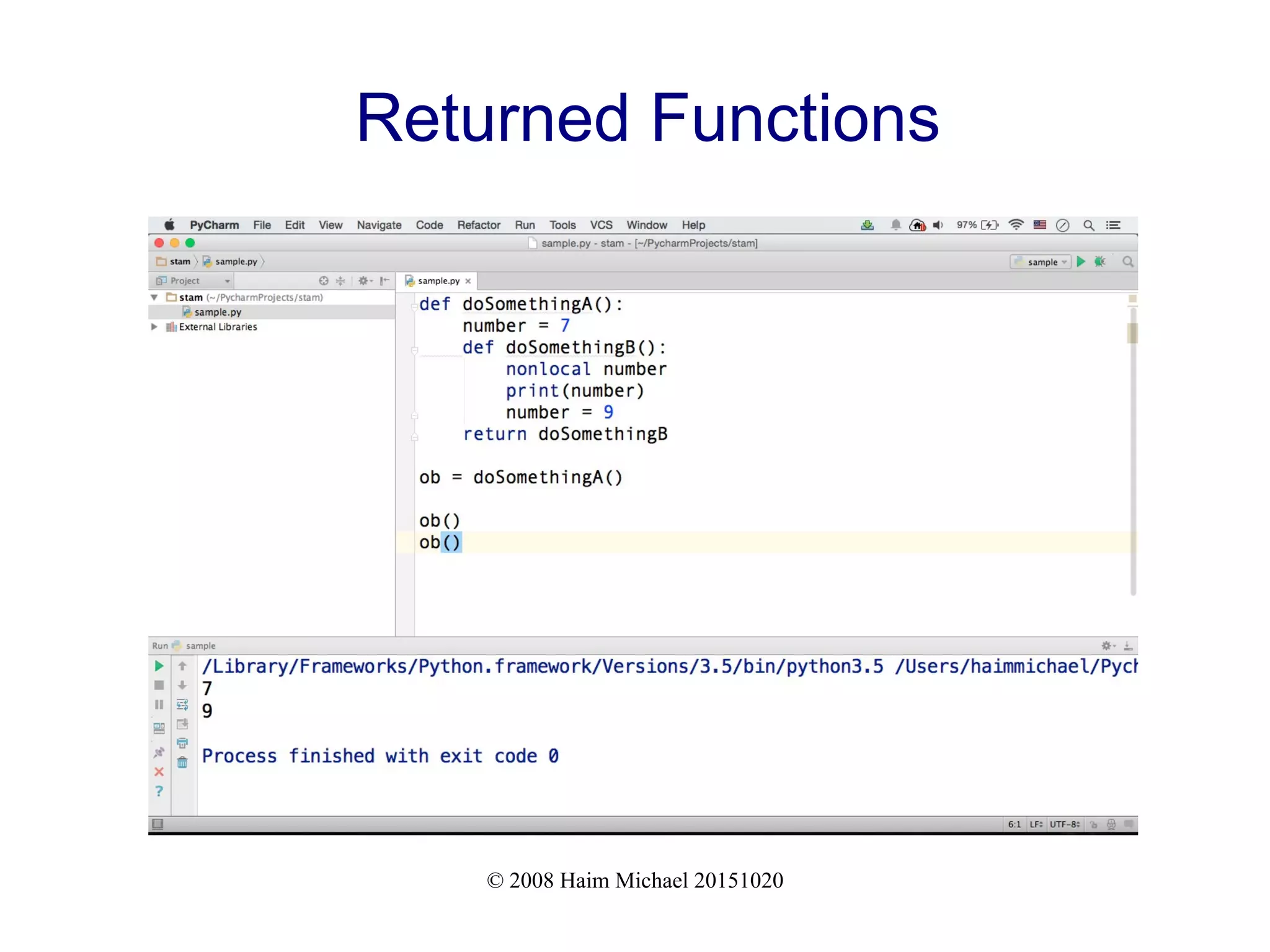
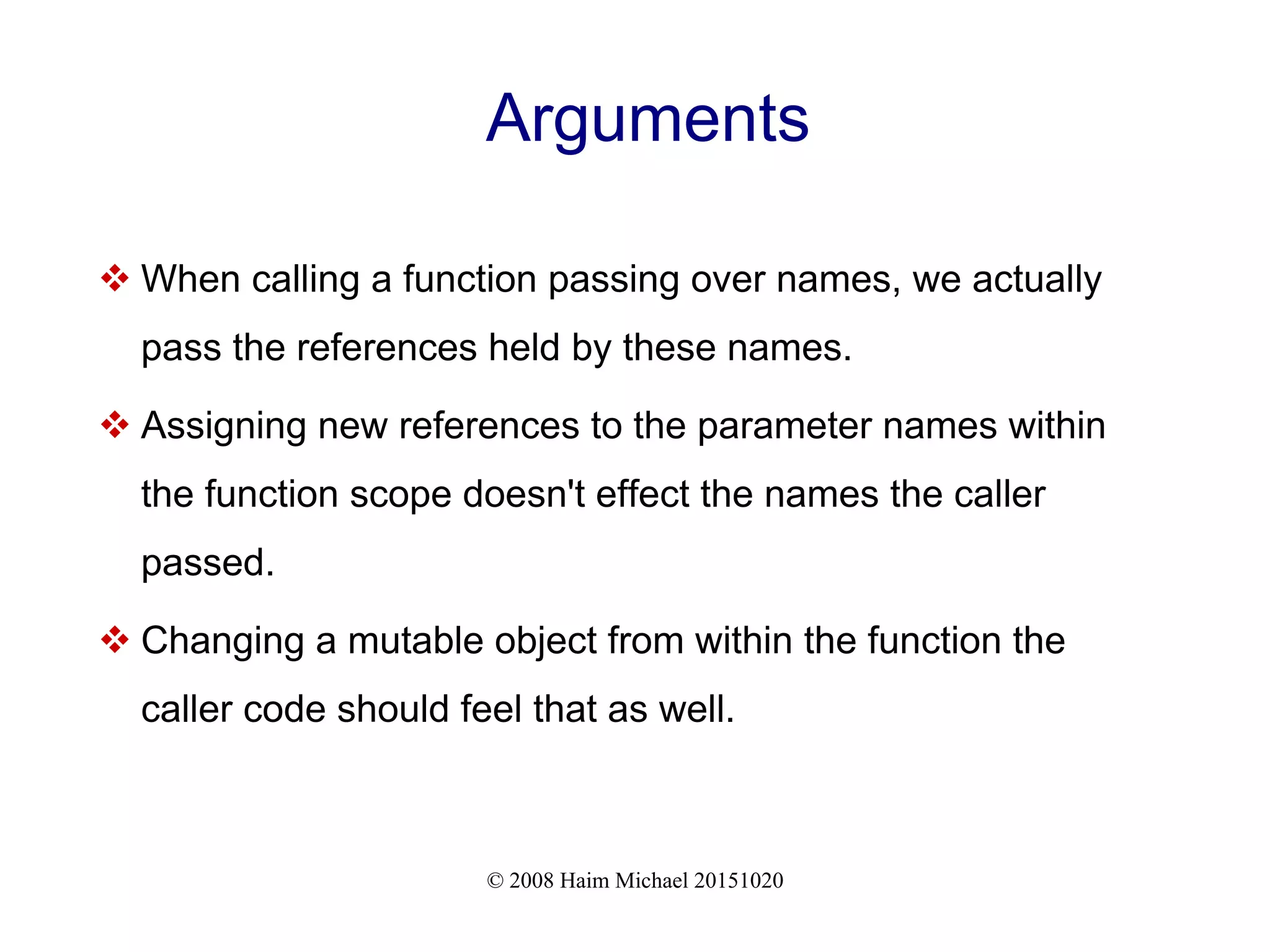
![© 2008 Haim Michael 20151020 Sequence Returned Value We can define a function that returns a tuple, or any other sequence type. #dmo def f(a,b): numA = 2 * a numB = 2 * b return [numA,numB] x = f(3,5) print(x)](https://image.slidesharecdn.com/programminginpythononsteroidsxxl20210225-210227210338/75/Programming-in-Python-on-Steroid-67-2048.jpg)
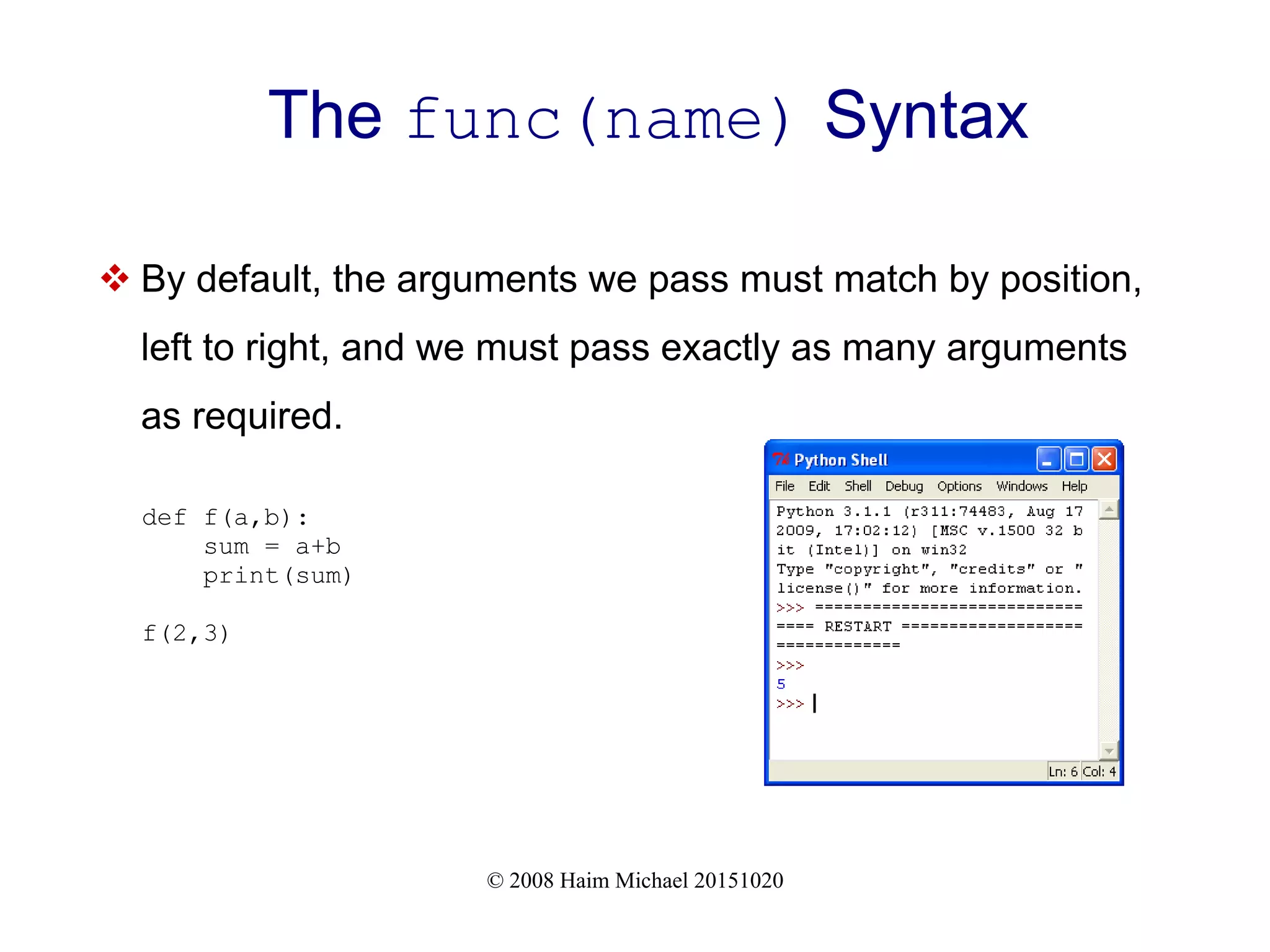
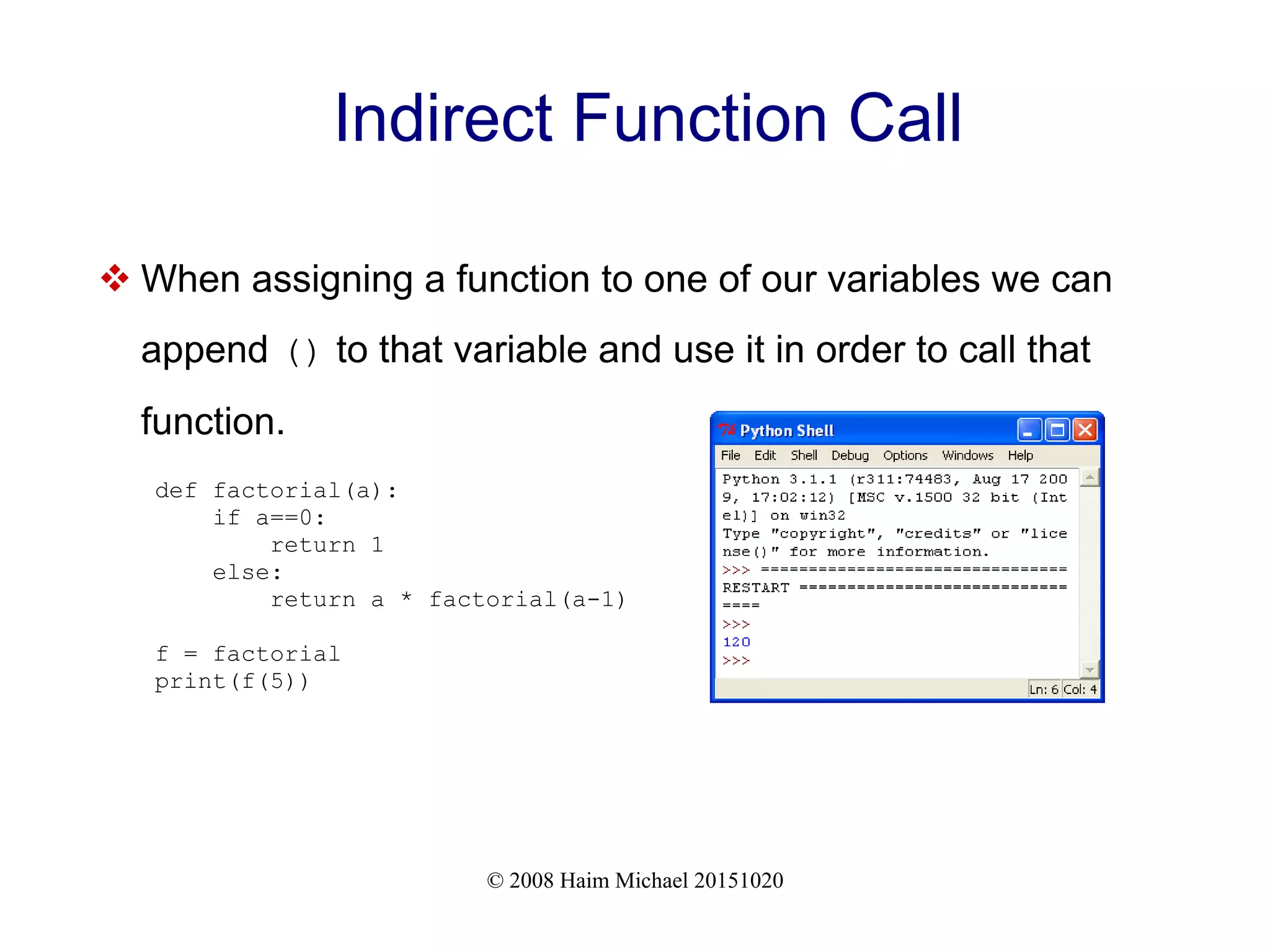
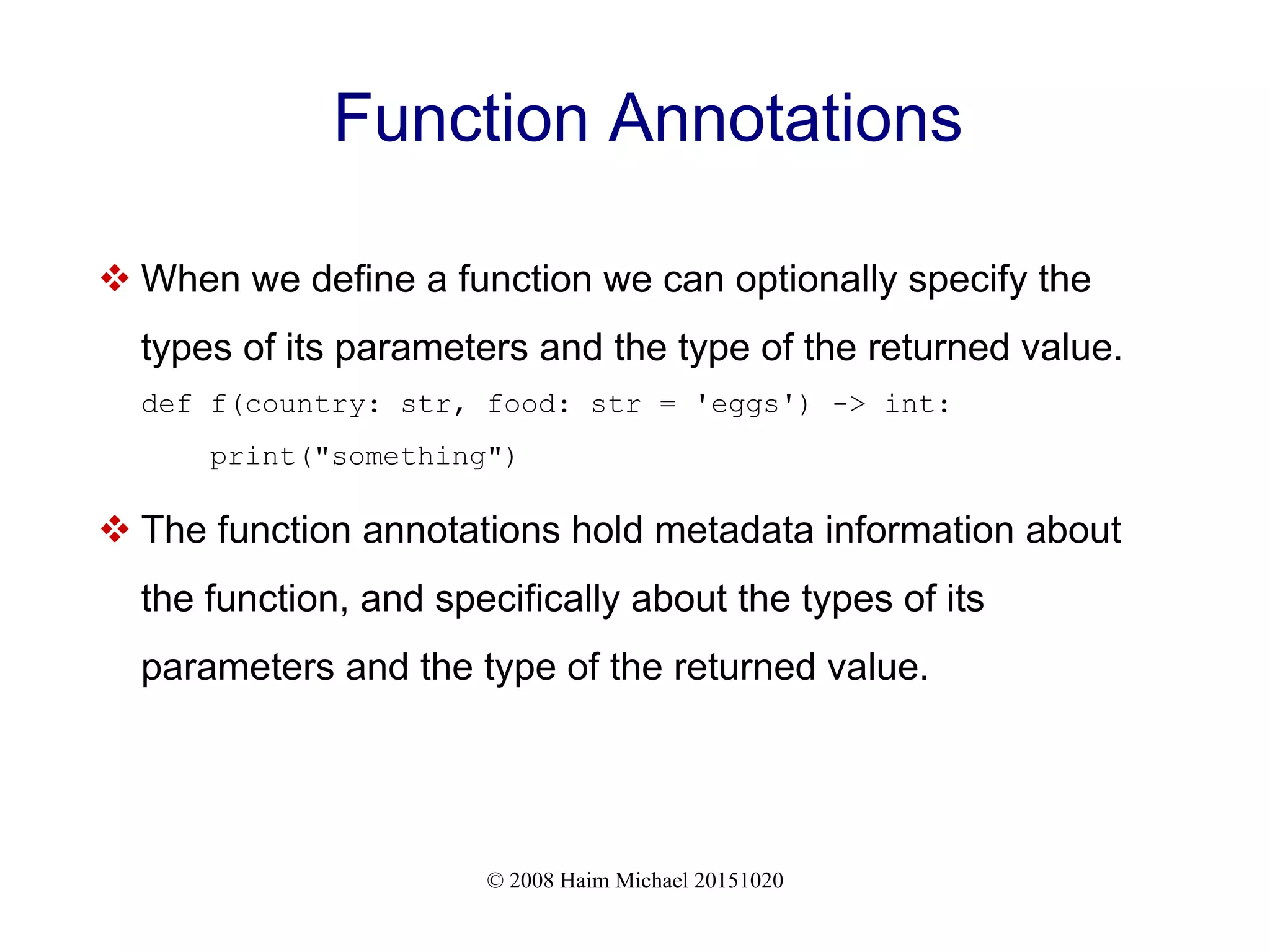
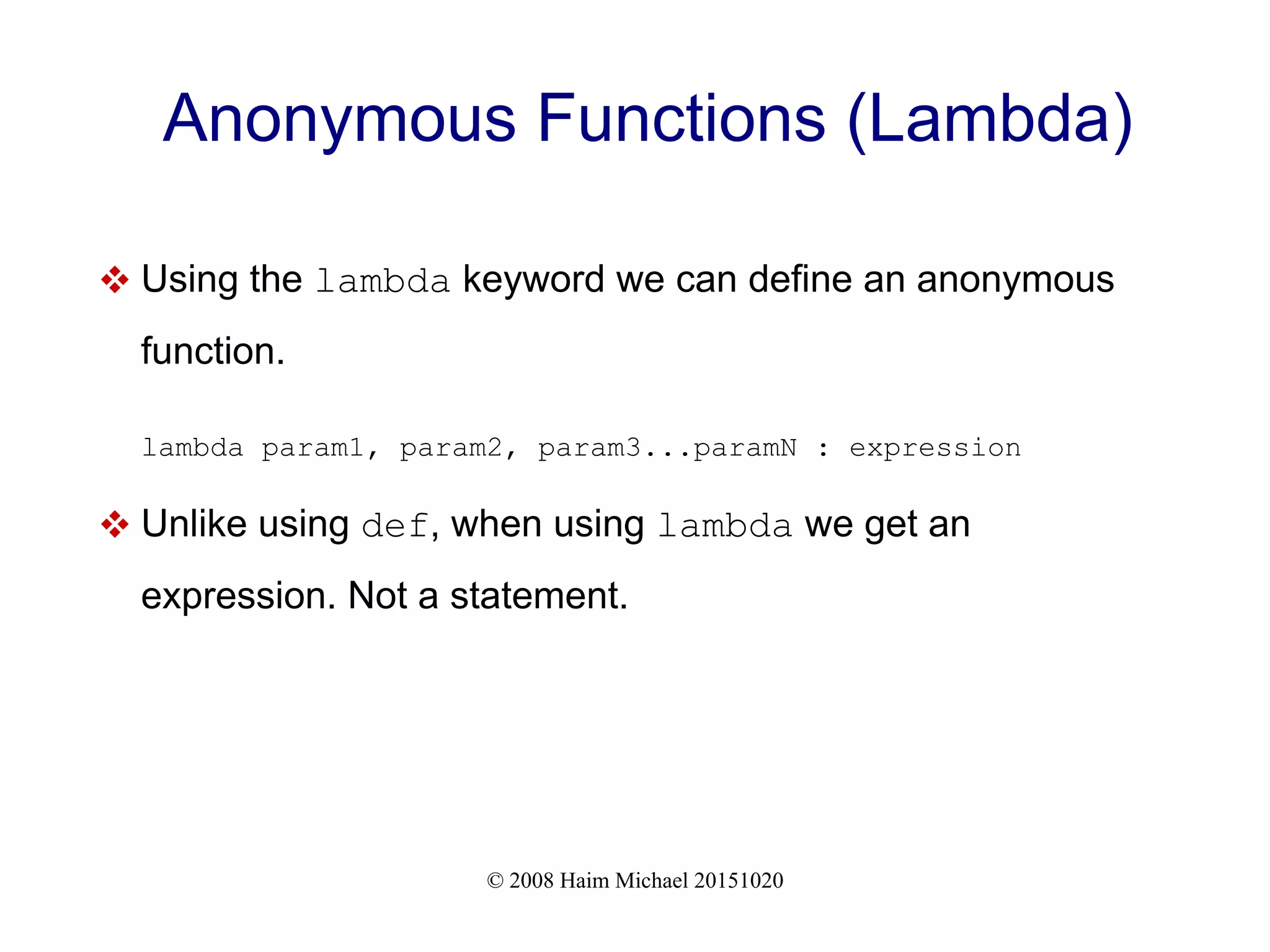
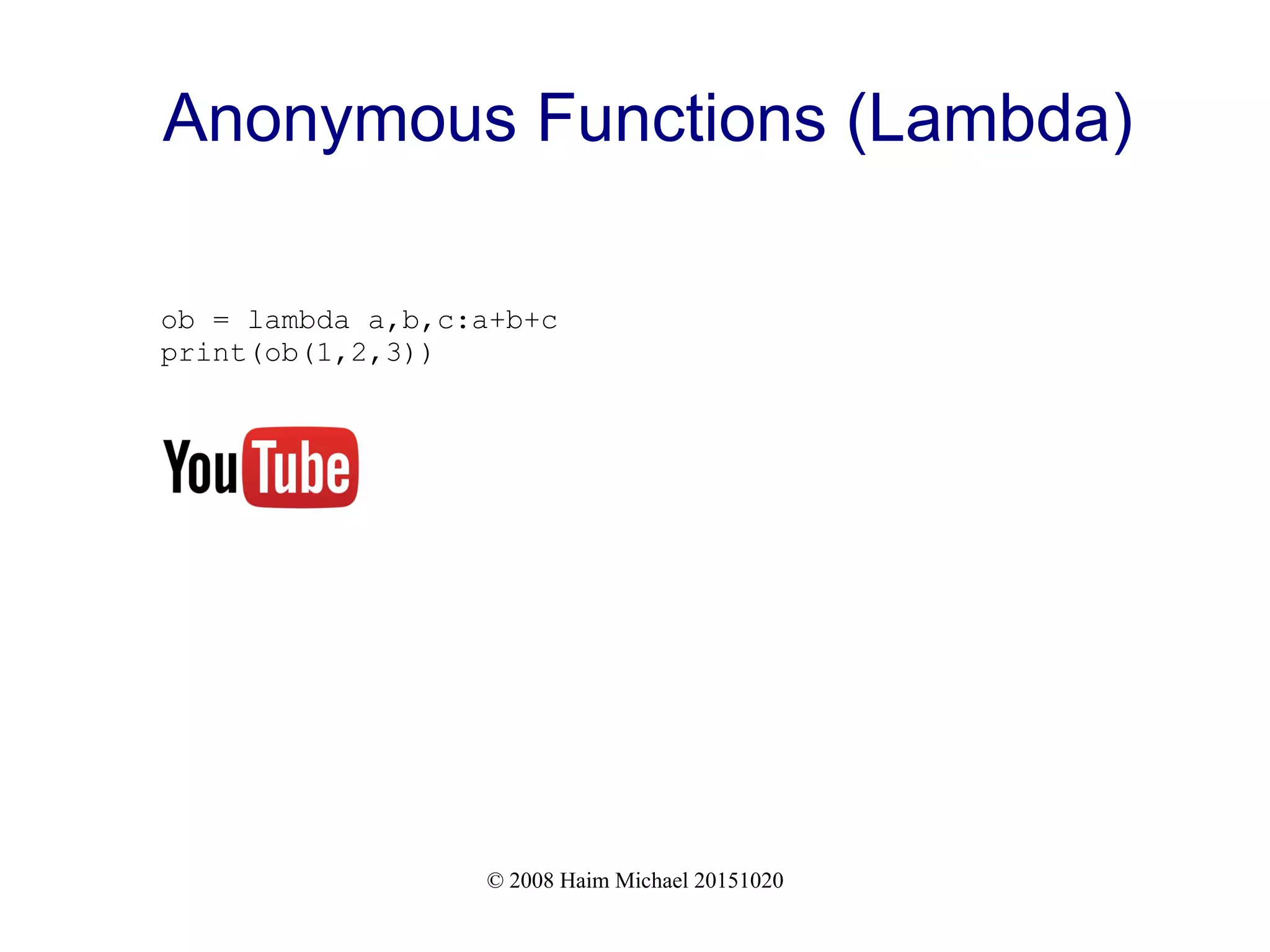
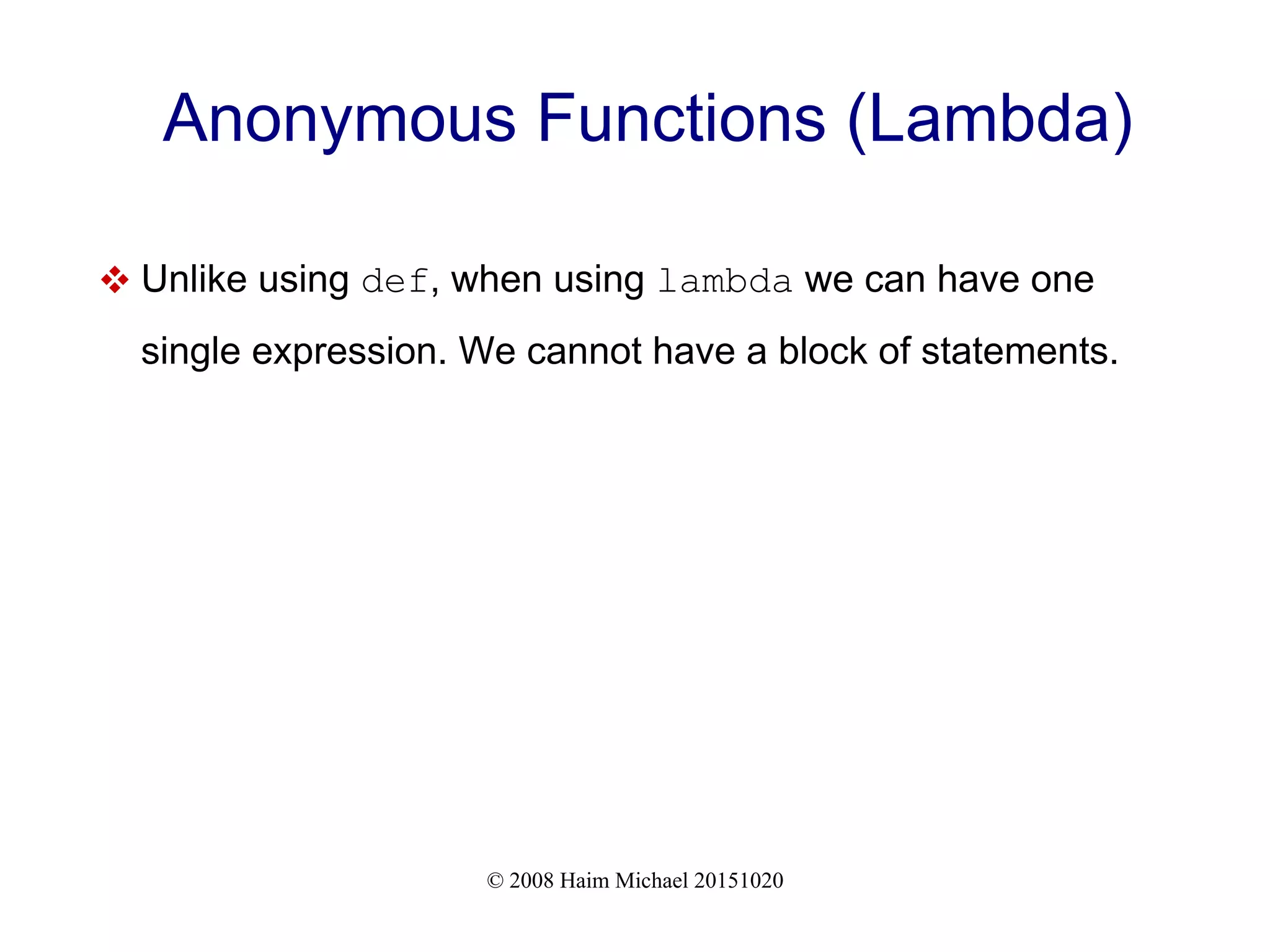
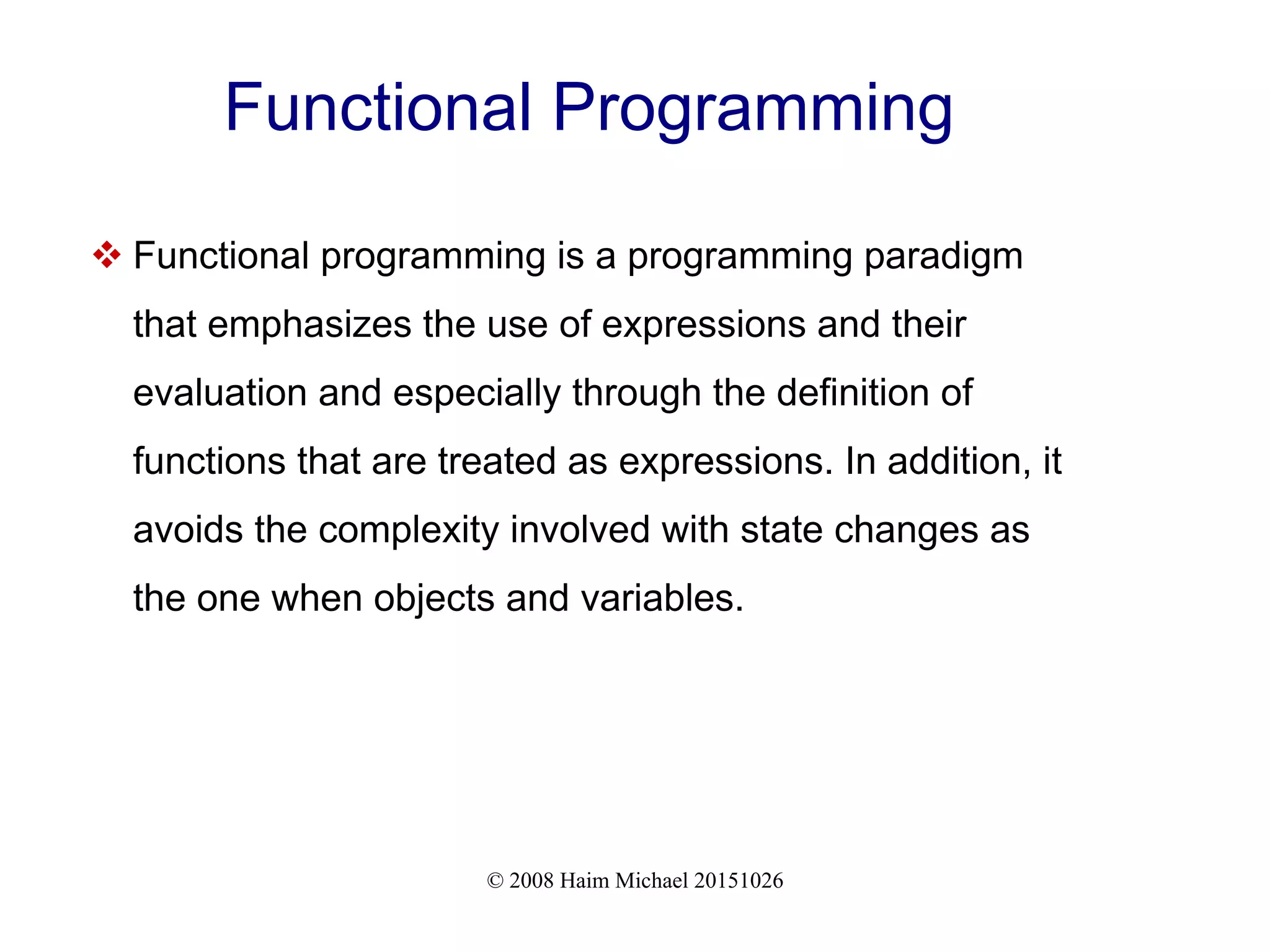
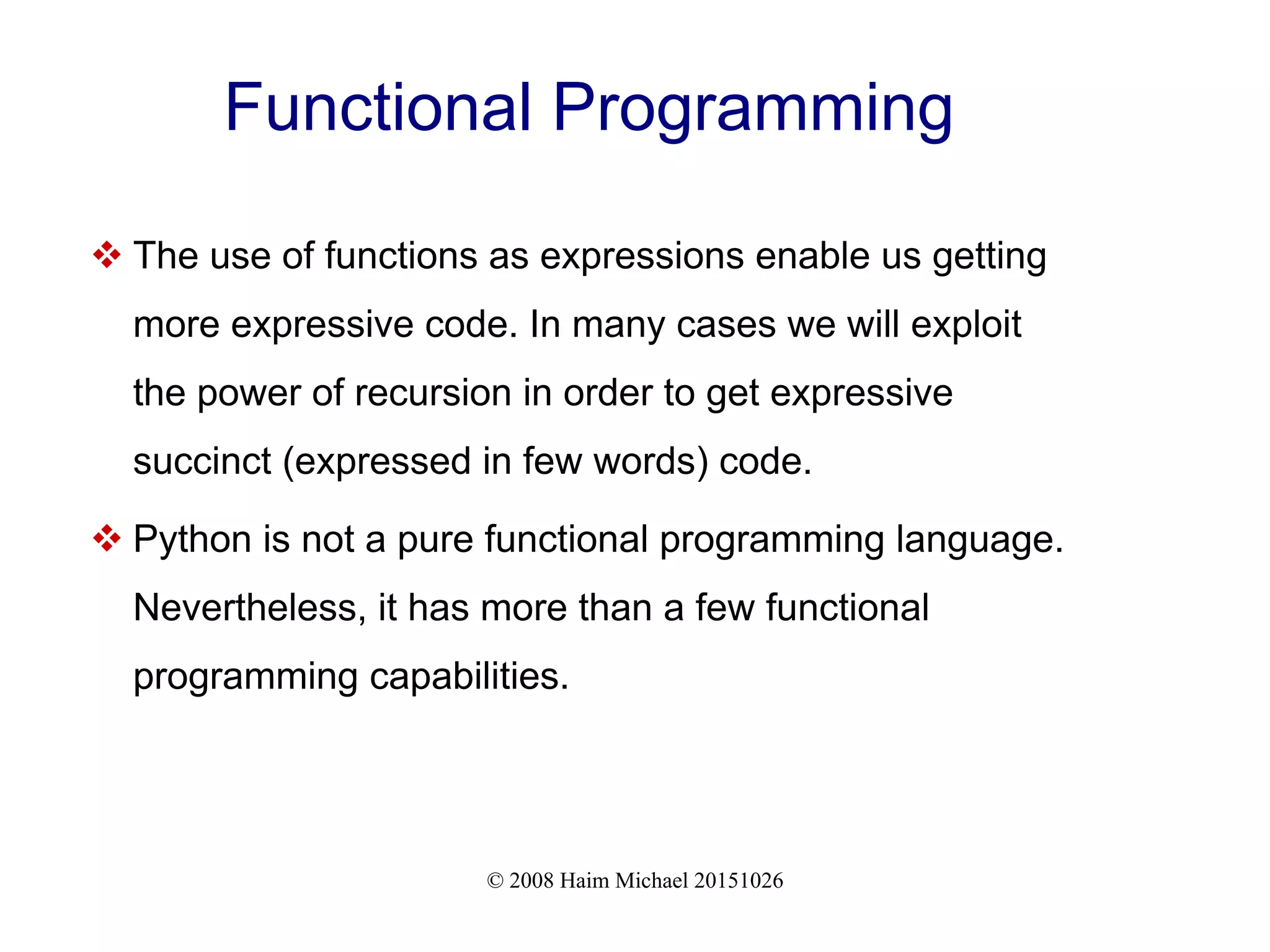
![© 2008 Haim Michael 20151026 Recursive Function def total(numbers): if len(numbers) == 0: return 0 else: return numbers[0] + total(numbers[1:]) print(total([2,5,7]))](https://image.slidesharecdn.com/programminginpythononsteroidsxxl20210225-210227210338/75/Programming-in-Python-on-Steroid-76-2048.jpg)
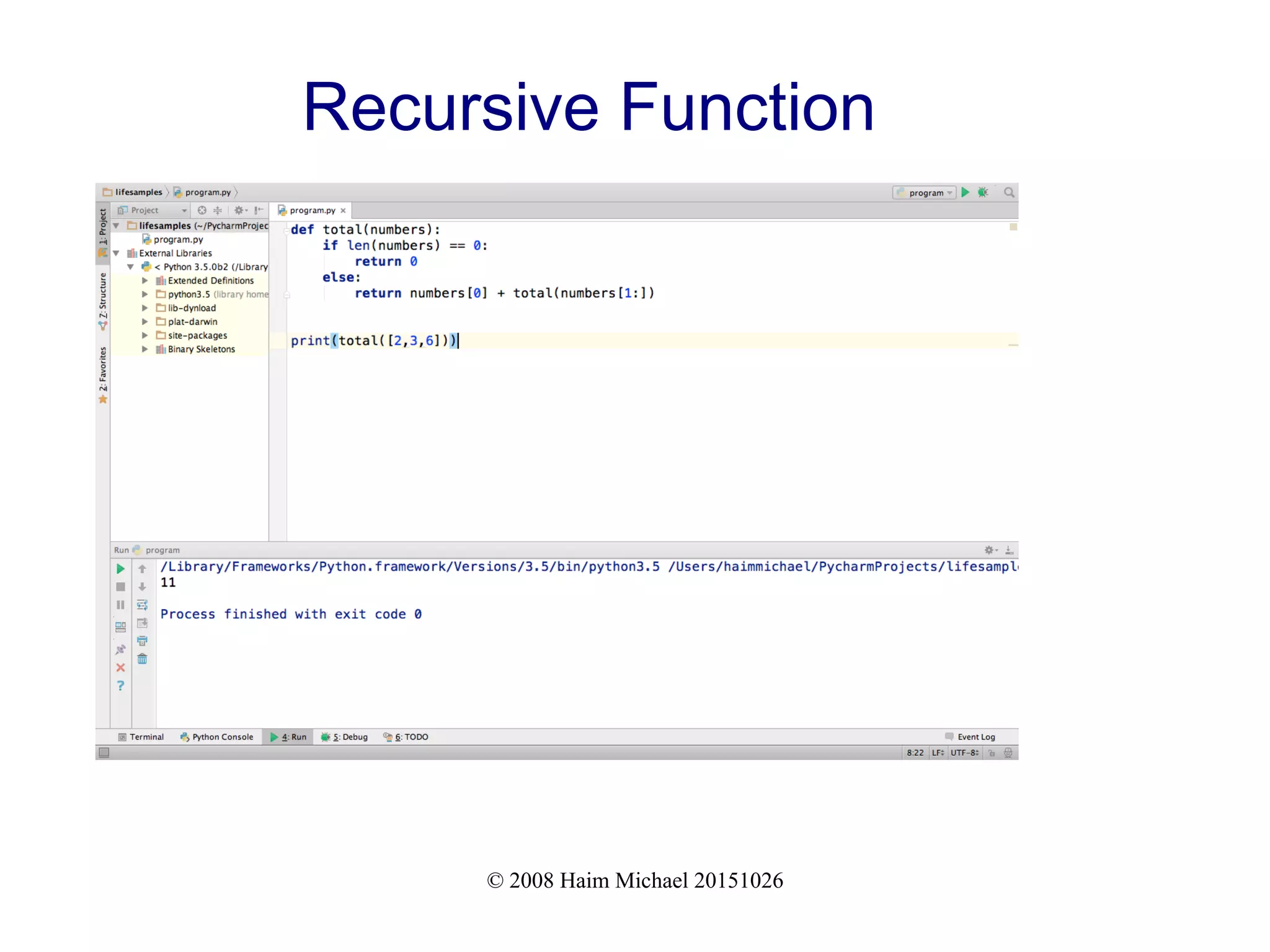
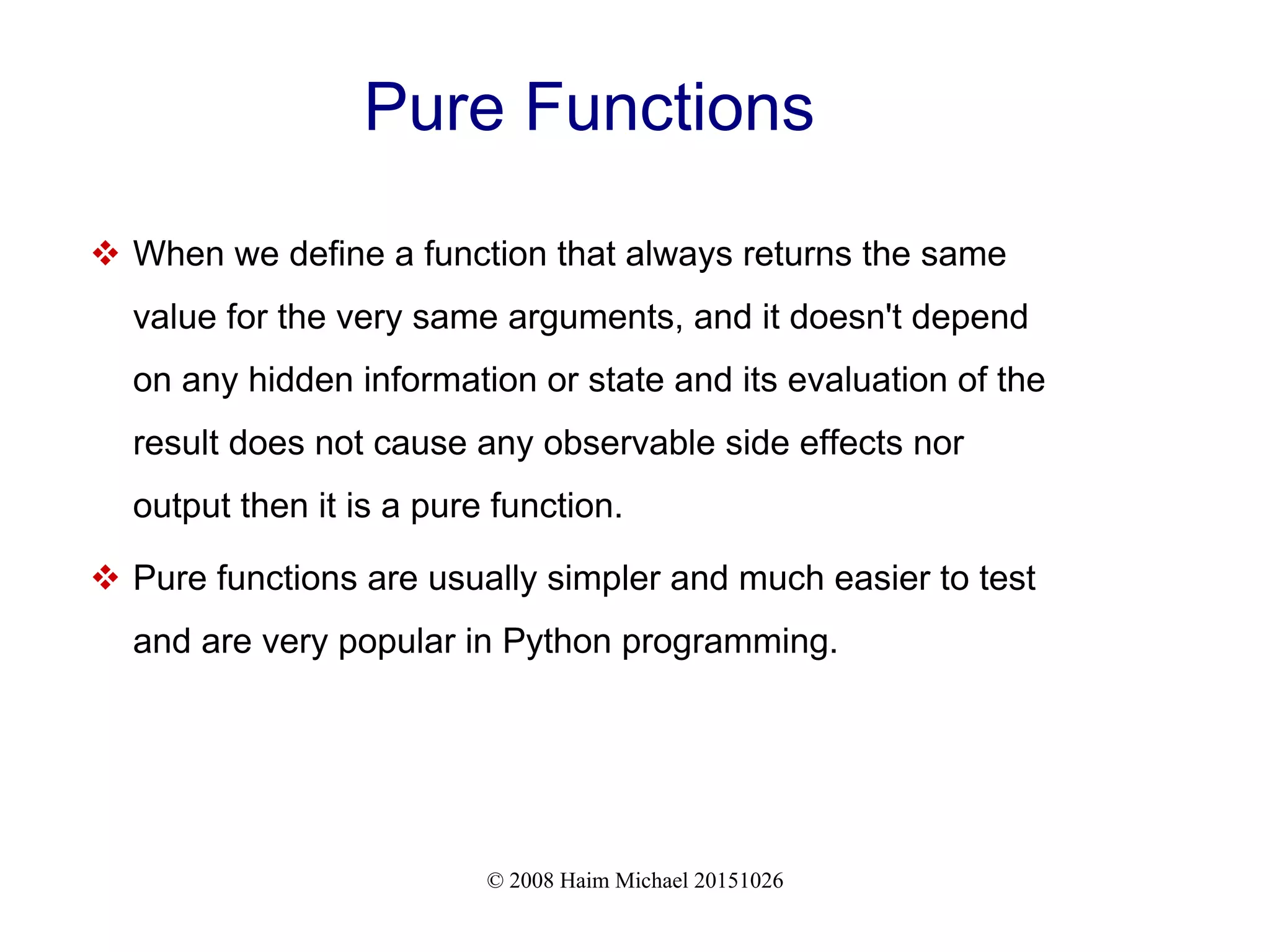
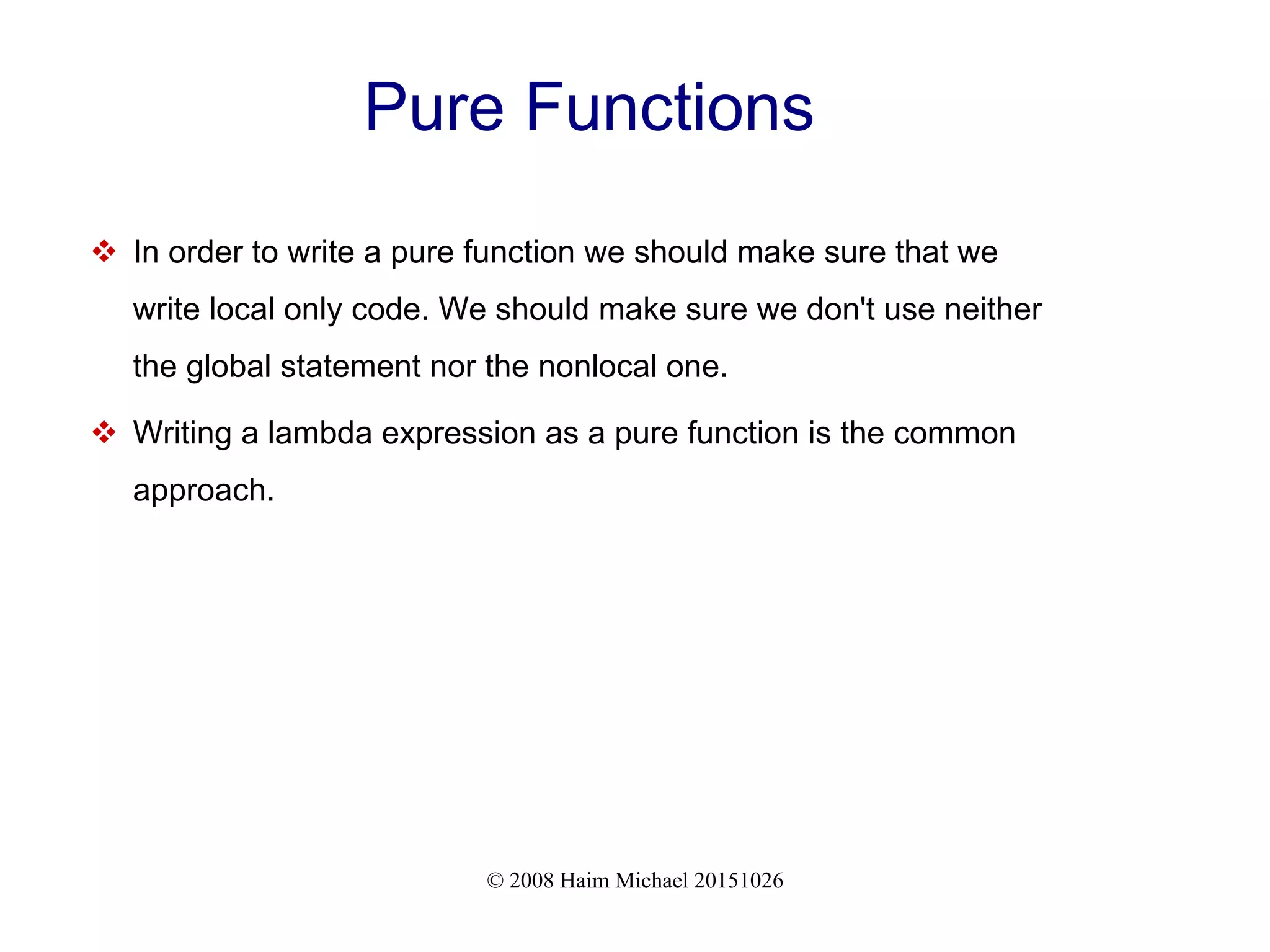
![© 2008 Haim Michael 20151026 Lambda Expression Using lambda expressions we can define a recursive function that feels much more as an expression than a function we define using the def keyword. total = lambda numbers: 0 if len(numbers)==0 else numbers[0] + total(numbers[1:]) print(total([5,2,3,6]))](https://image.slidesharecdn.com/programminginpythononsteroidsxxl20210225-210227210338/75/Programming-in-Python-on-Steroid-80-2048.jpg)
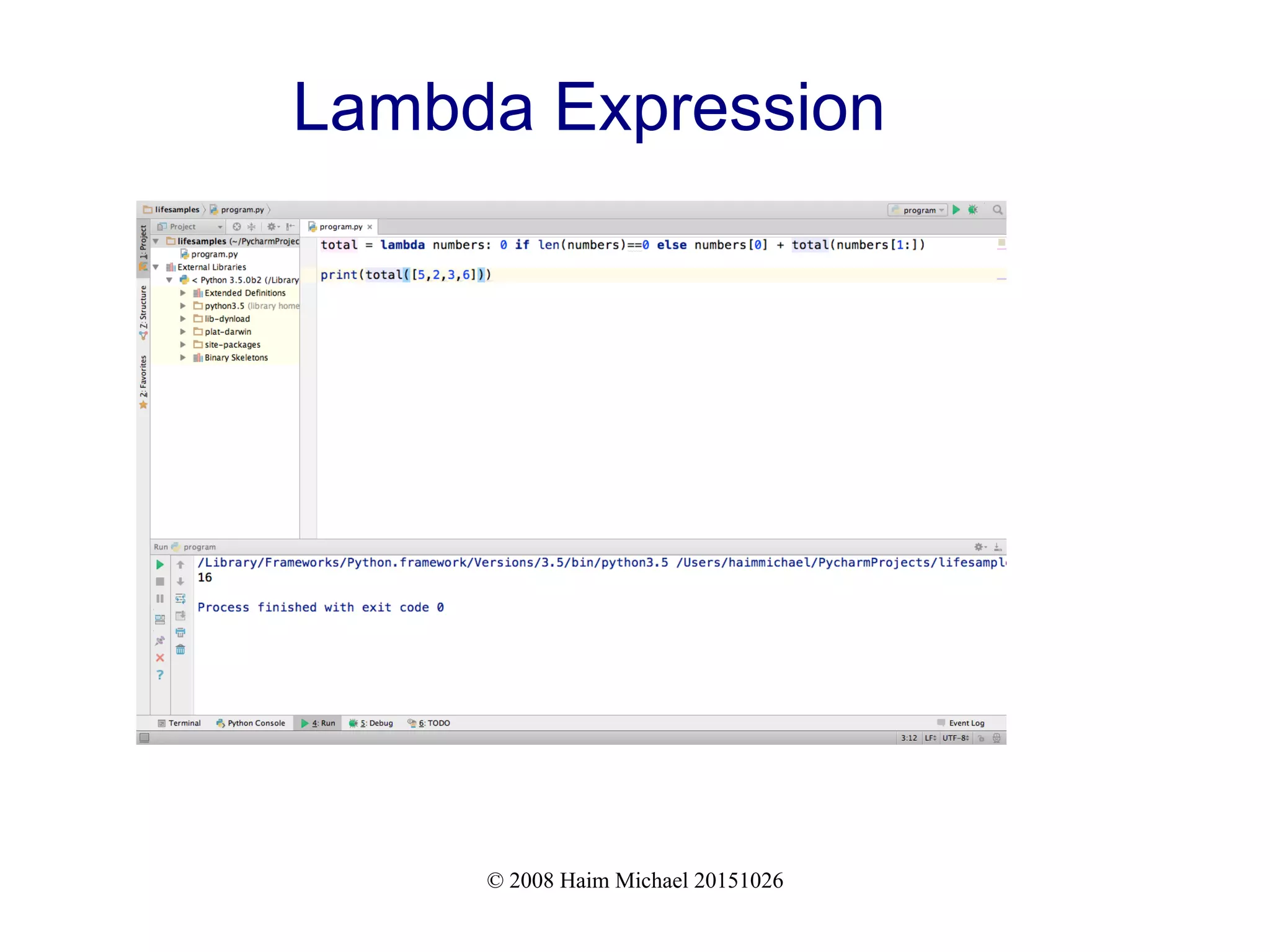
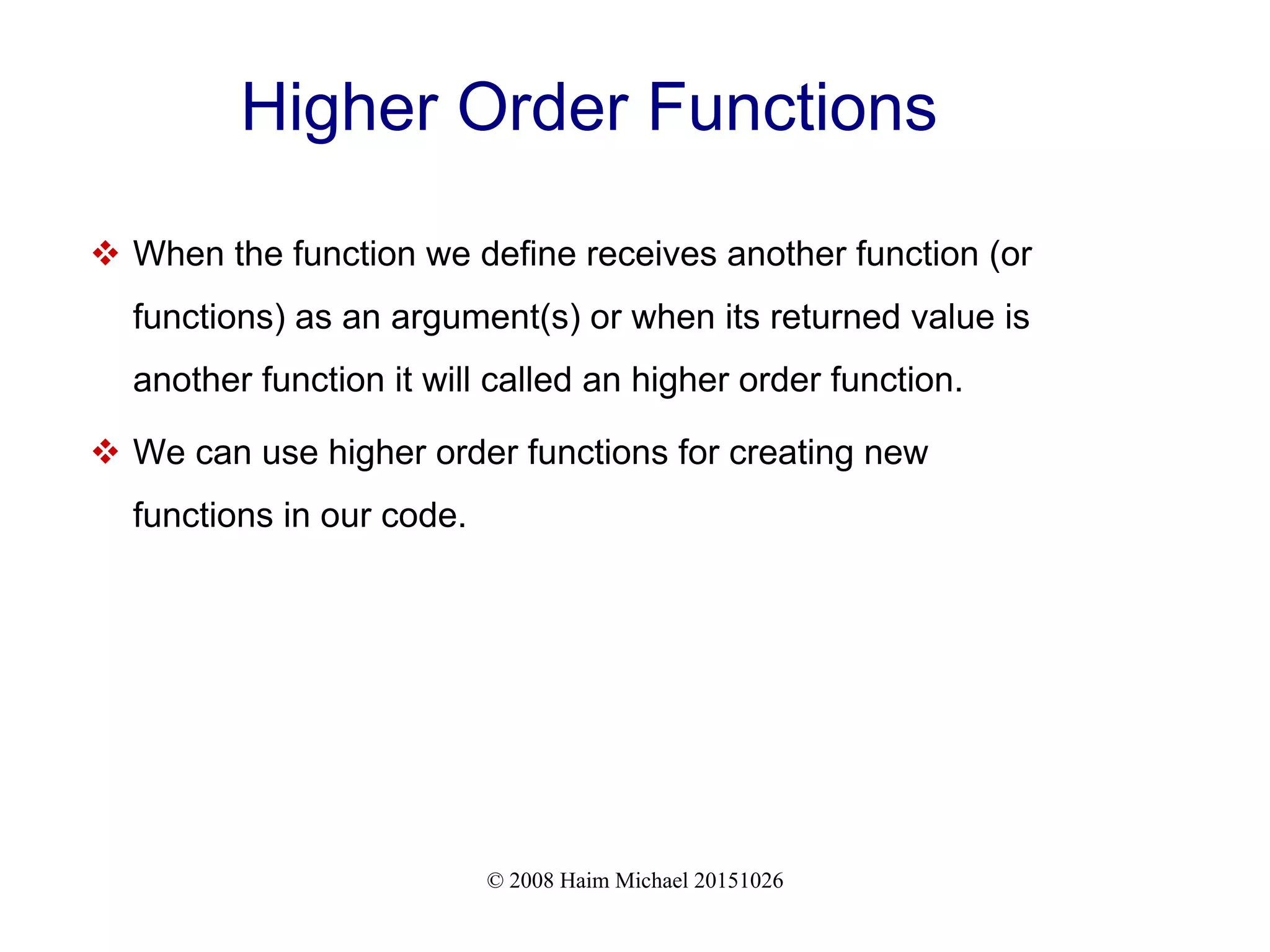
![© 2008 Haim Michael 20151026 Higher Order Functions data = [(13225324,"daniel",54), (3452344,"ronen",92), (98234234,"moshe",80), (65354435,"yael",70)] beststudent = lambda dat: max(dat, key=lambda ob:ob[2]) print(beststudent(data))](https://image.slidesharecdn.com/programminginpythononsteroidsxxl20210225-210227210338/75/Programming-in-Python-on-Steroid-83-2048.jpg)
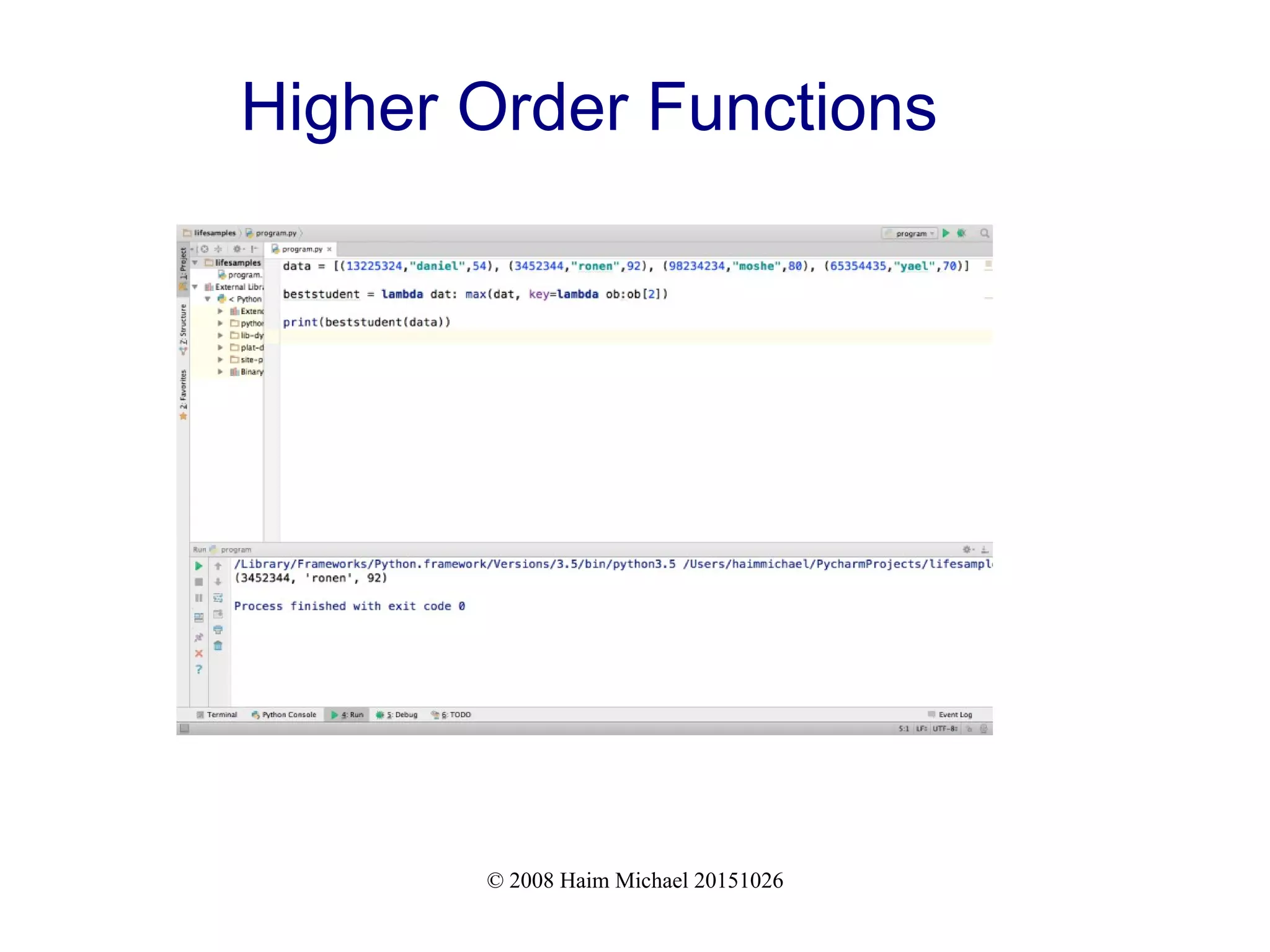

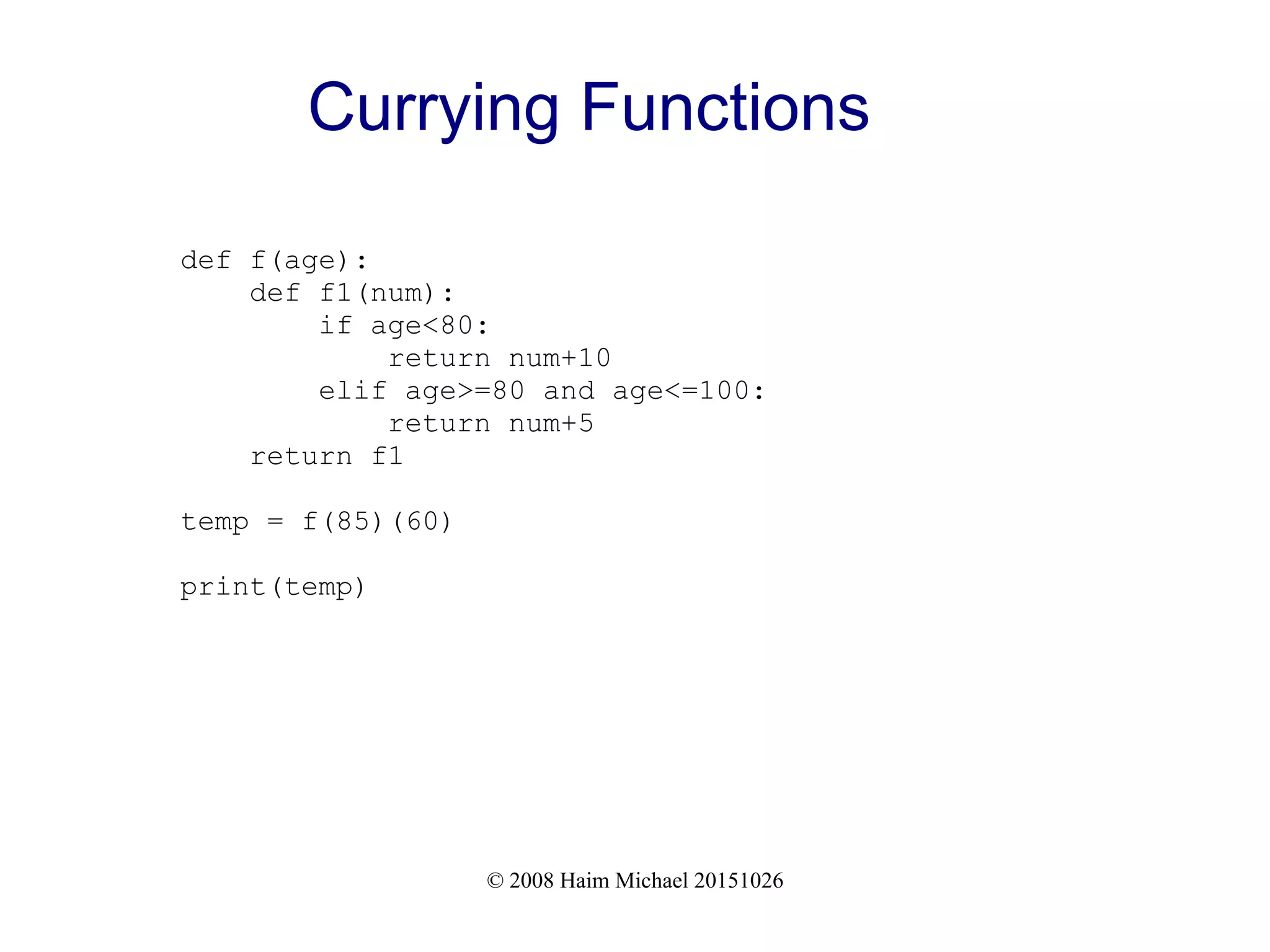

![© 2008 Haim Michael 20151020 The func(name=value) Syntax Calling a function we can specify which parameters should receive a value by using the argument's name in the name=value syntax. #dmo def f(a,b): numA = 2 * a numB = 2 * b return [numA,numB] x = f(a=3,b=5) print(x)](https://image.slidesharecdn.com/programminginpythononsteroidsxxl20210225-210227210338/75/Programming-in-Python-on-Steroid-88-2048.jpg)
![© 2008 Haim Michael 20151020 The func(*name) Syntax Adding * to the sequence we pass over to the function, the function will be capable of unpacking the passed argument into discrete separated parameters. def f(x1,y1,x2,y2): return (y2-y1)*(y2-y1)+(x2-x1)*(x2-x1) ob = [0,0,4,3] num = f(*ob) print(num)](https://image.slidesharecdn.com/programminginpythononsteroidsxxl20210225-210227210338/75/Programming-in-Python-on-Steroid-89-2048.jpg)
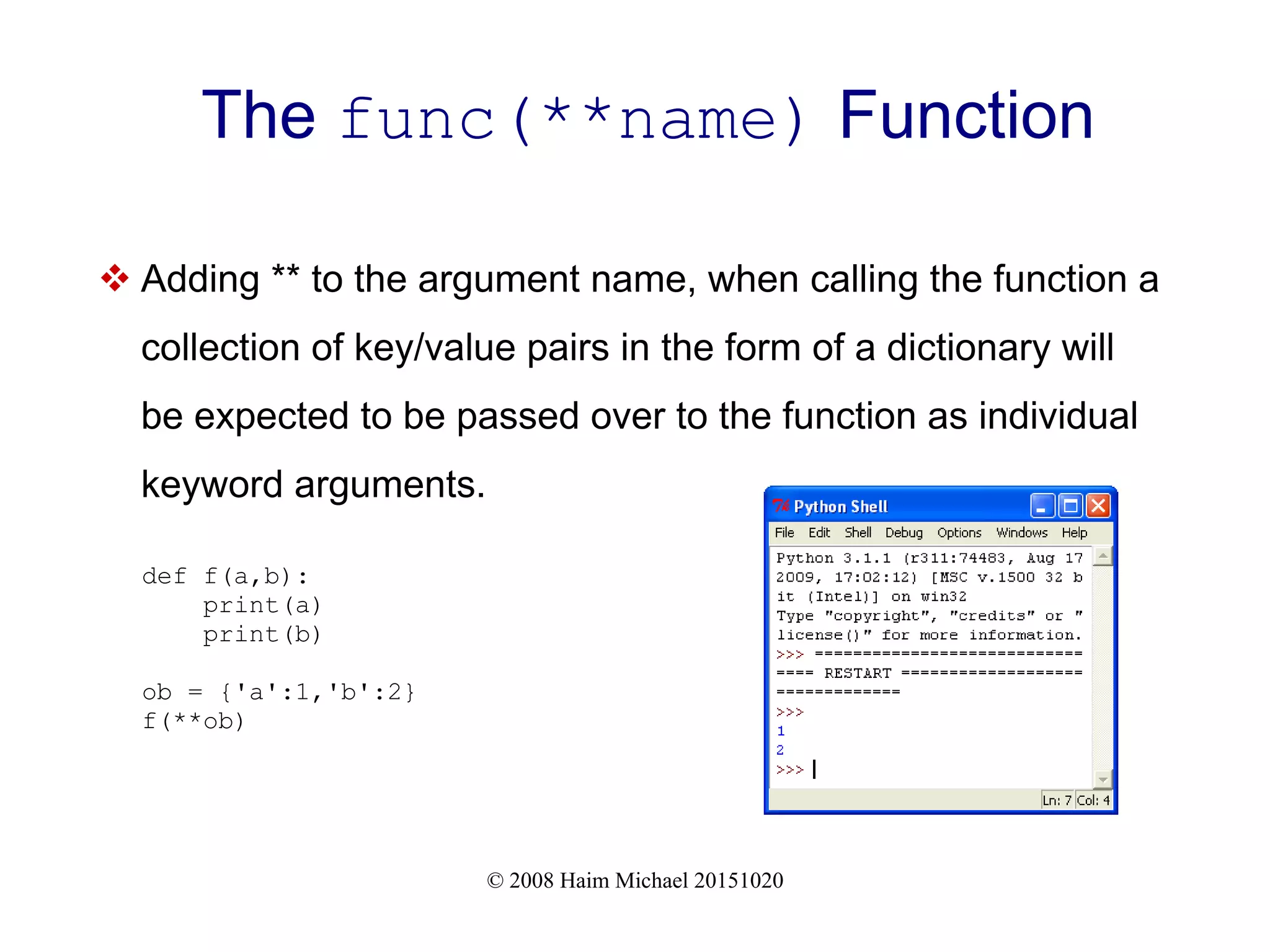
![© 2008 Haim Michael 20151020 The def func(name=value) Syntax Defining a function we can use the argument's name in the name=value syntax in order to specify default values for specific arguments. def f(a=4,b=6): numA = 2 * a numB = 2 * b return [numA,numB] x = f() print(x)](https://image.slidesharecdn.com/programminginpythononsteroidsxxl20210225-210227210338/75/Programming-in-Python-on-Steroid-91-2048.jpg)
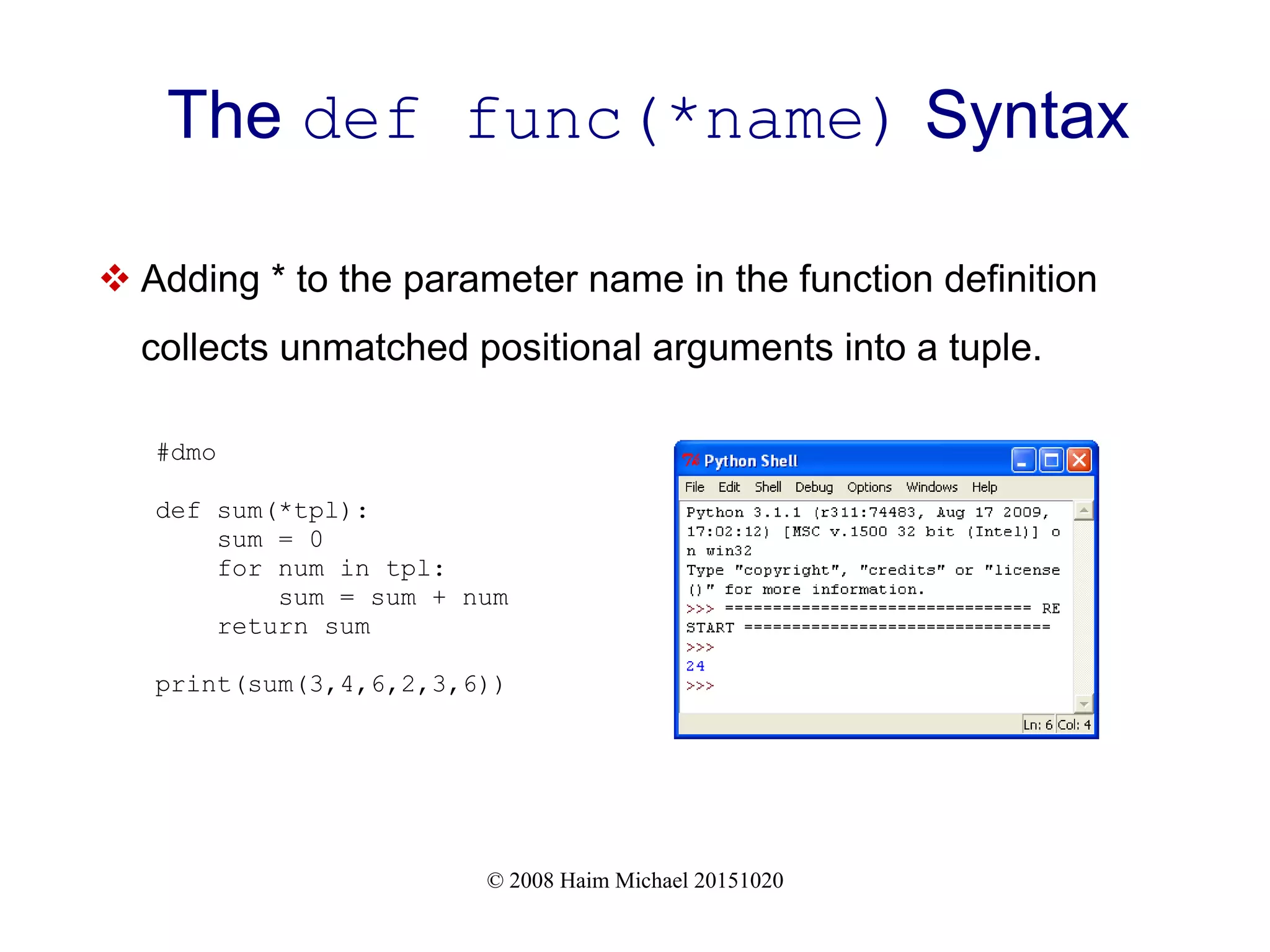
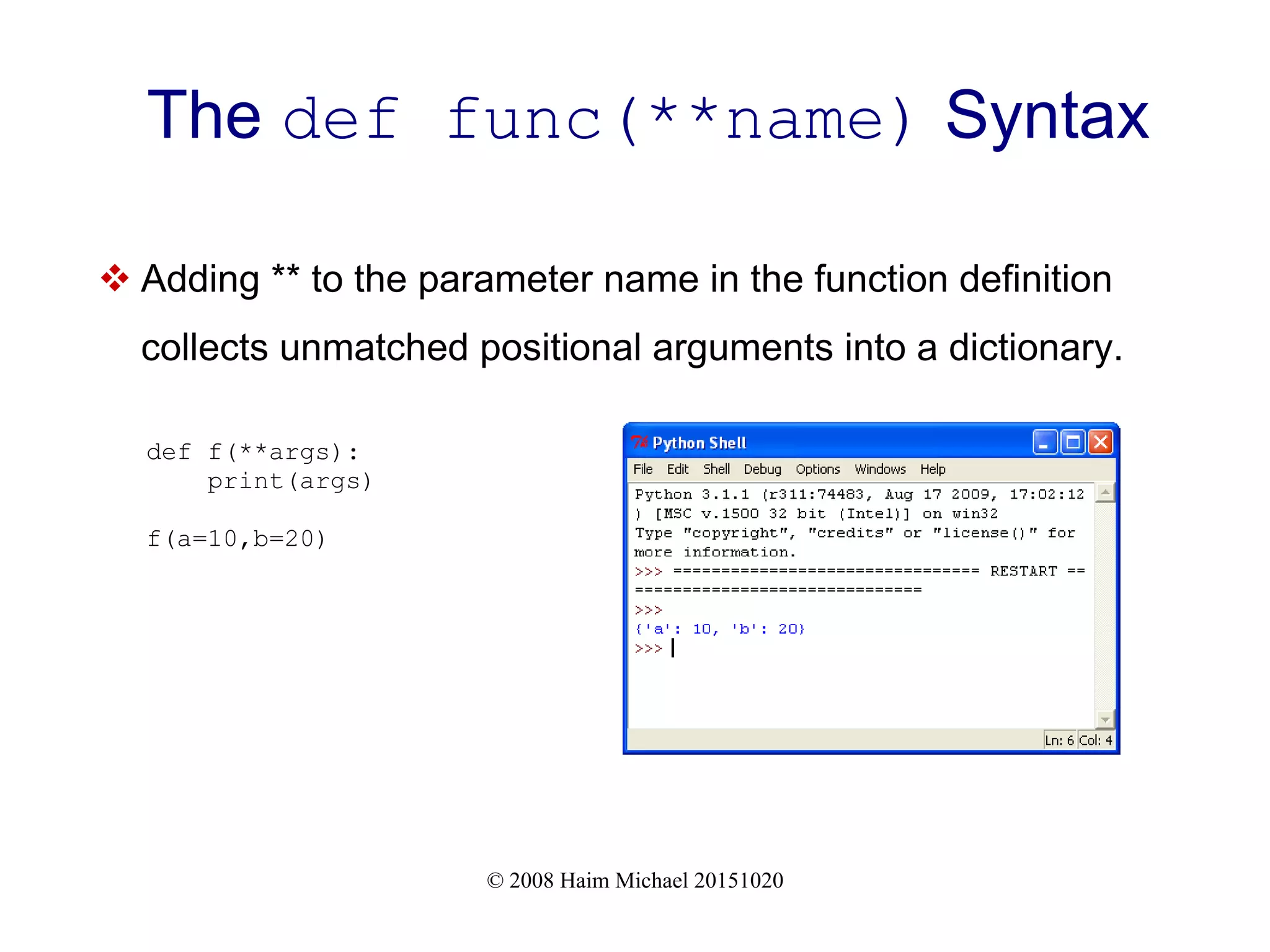
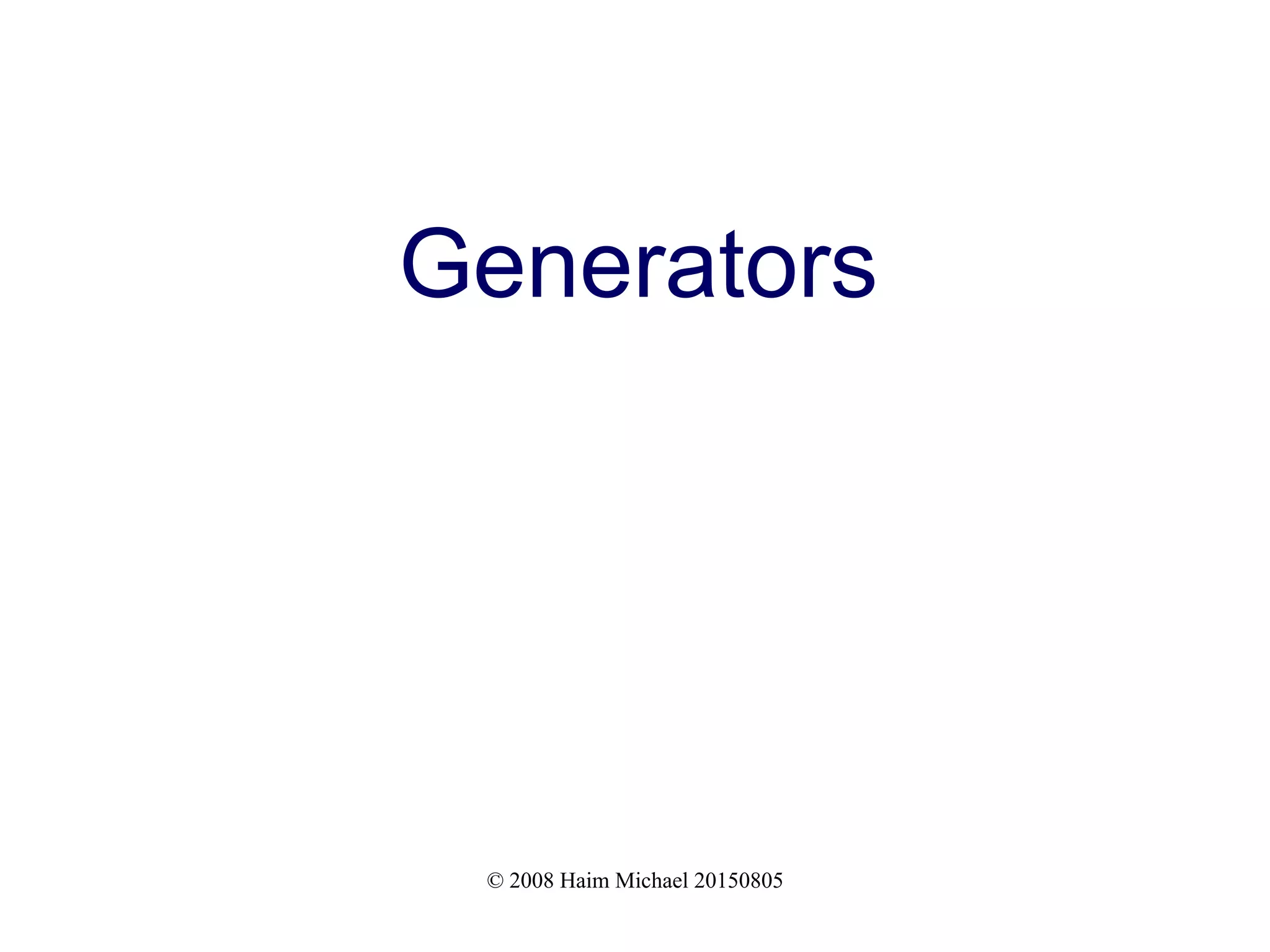
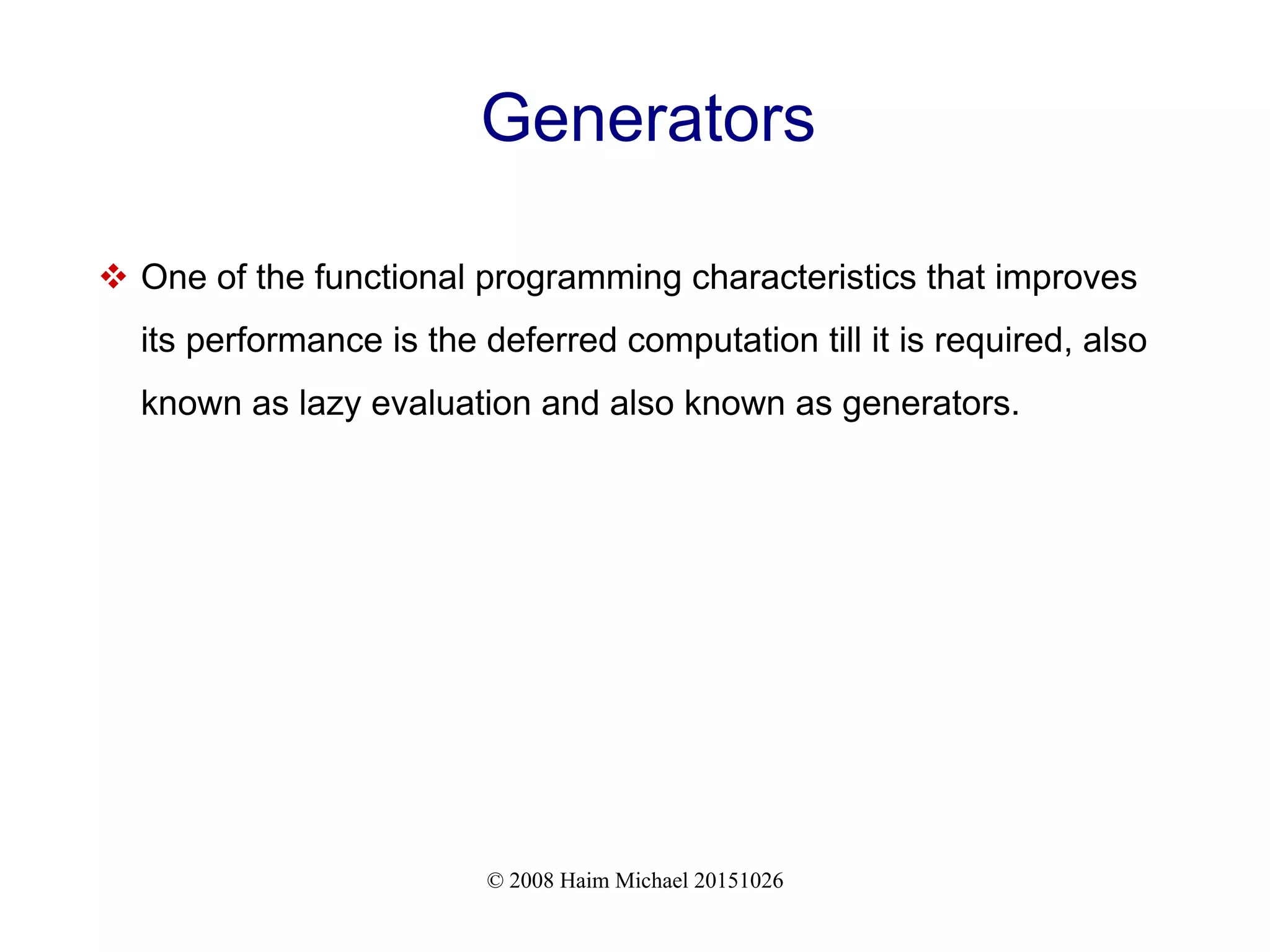
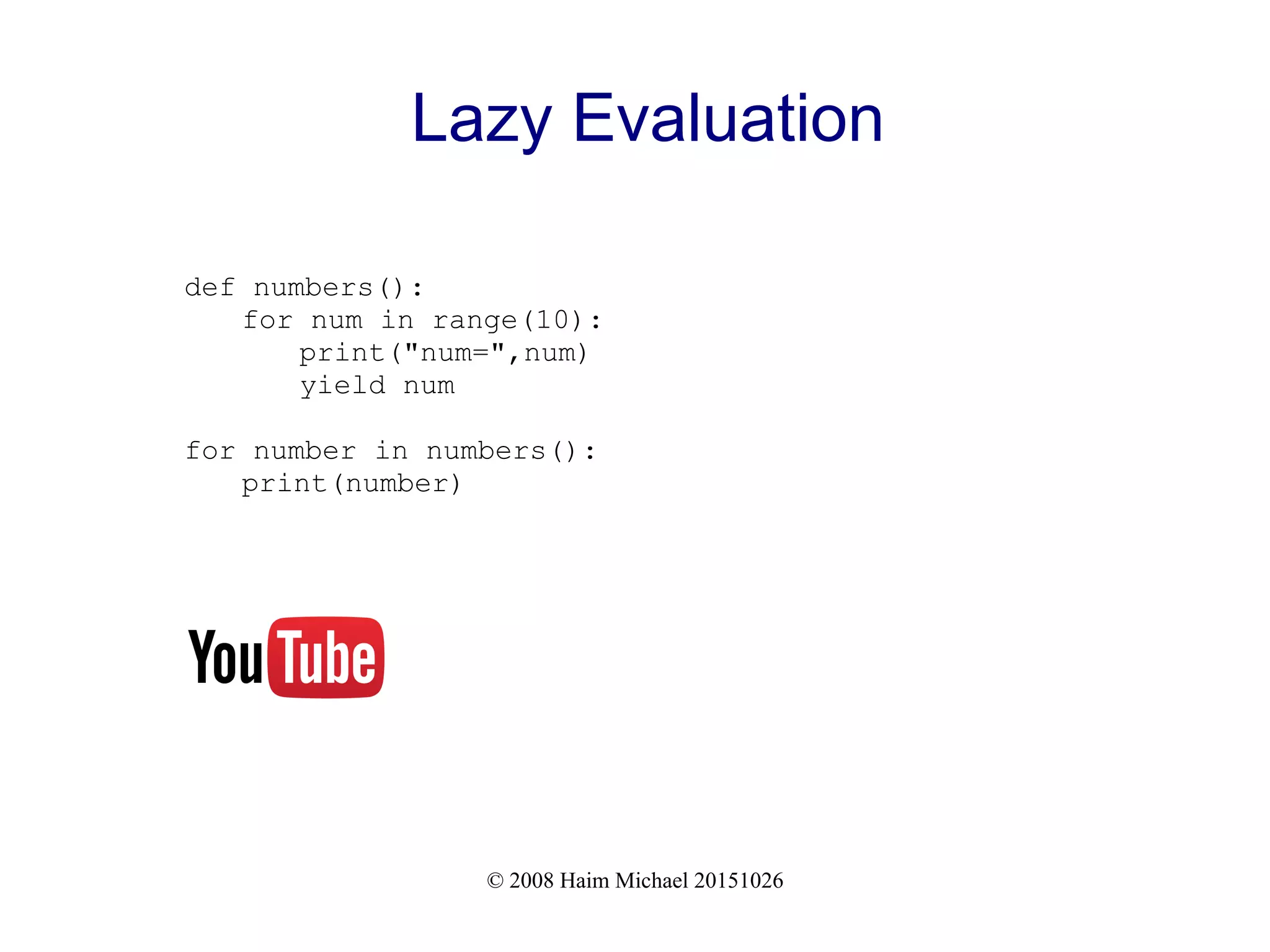
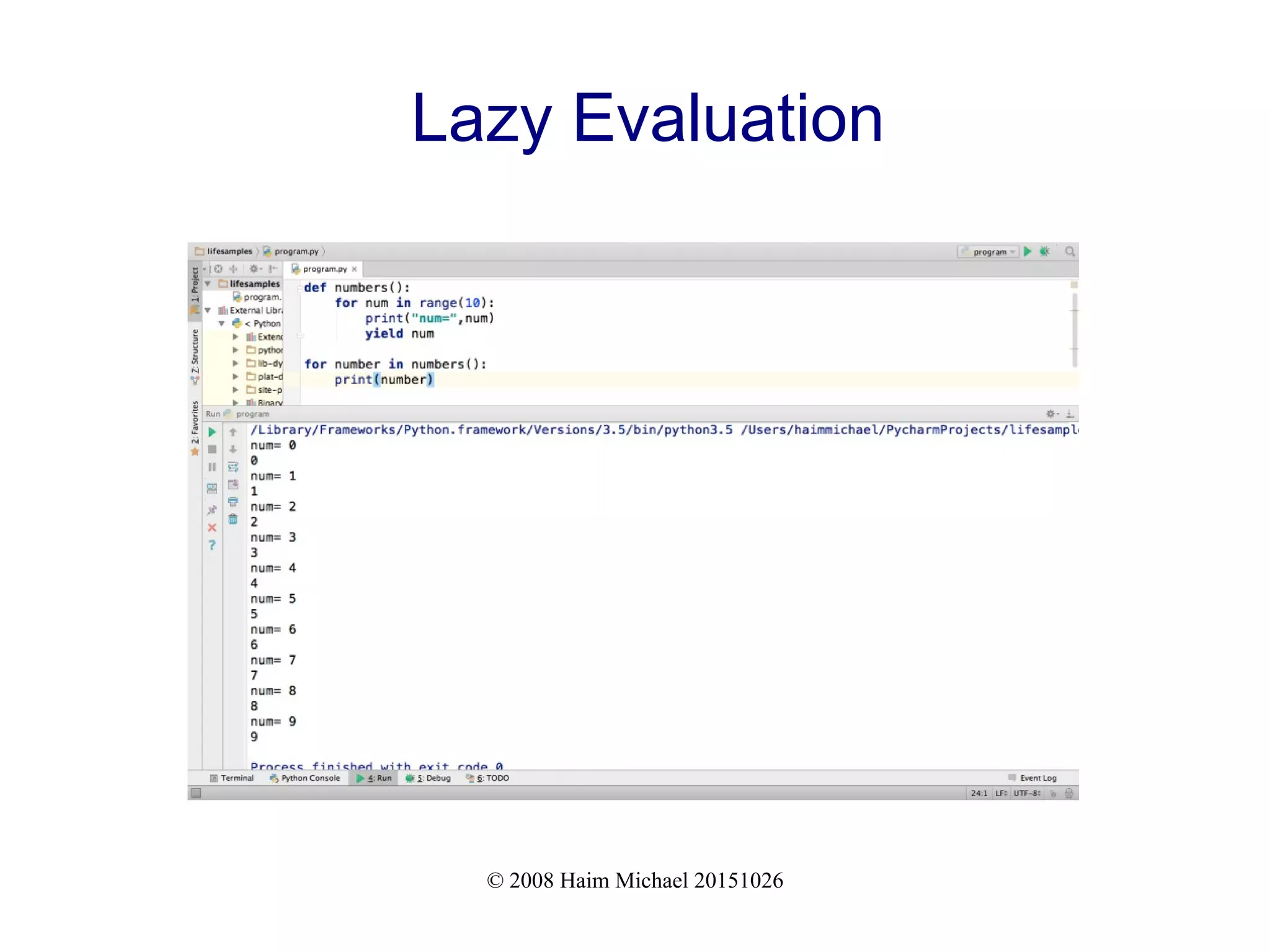

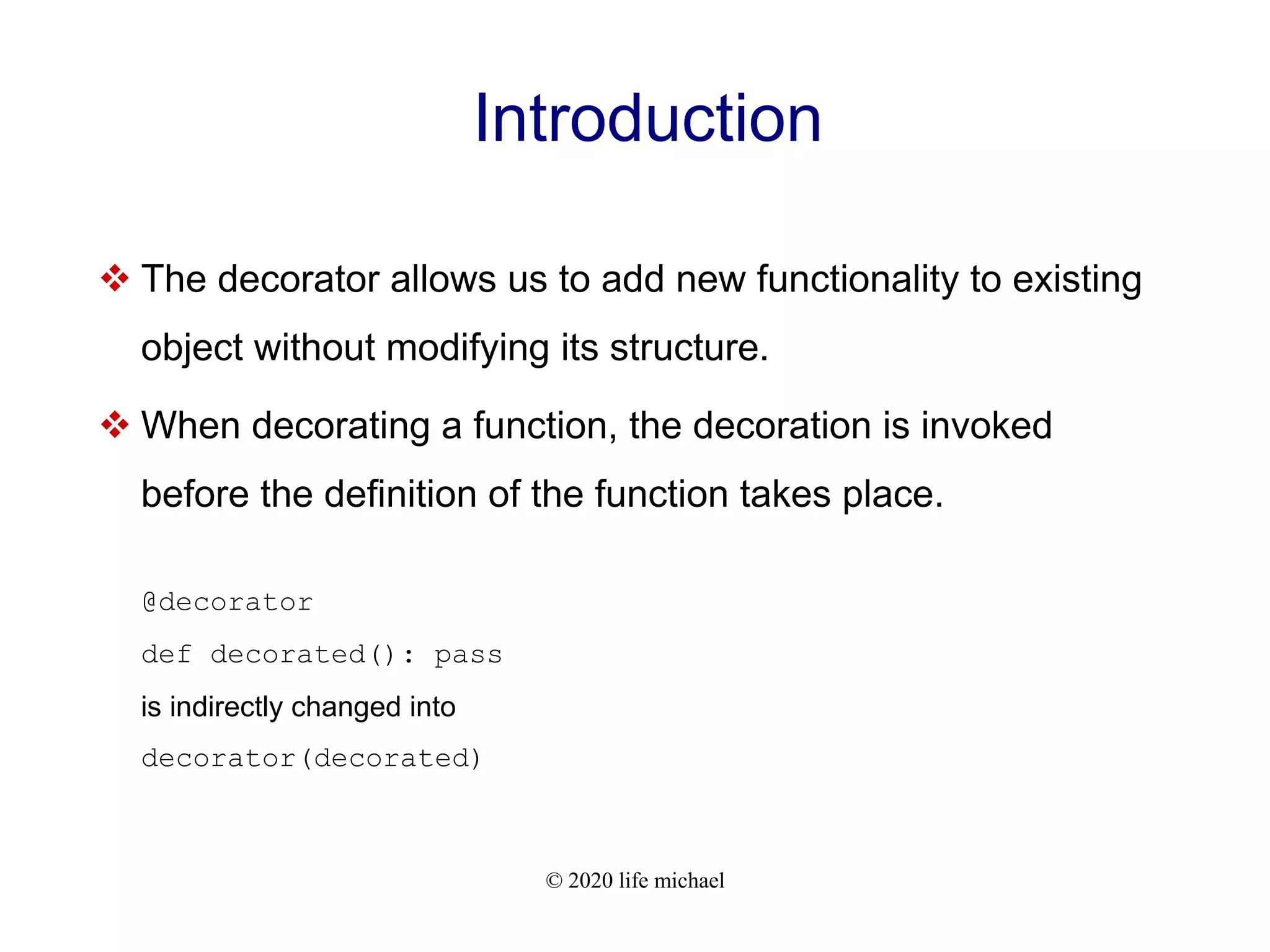
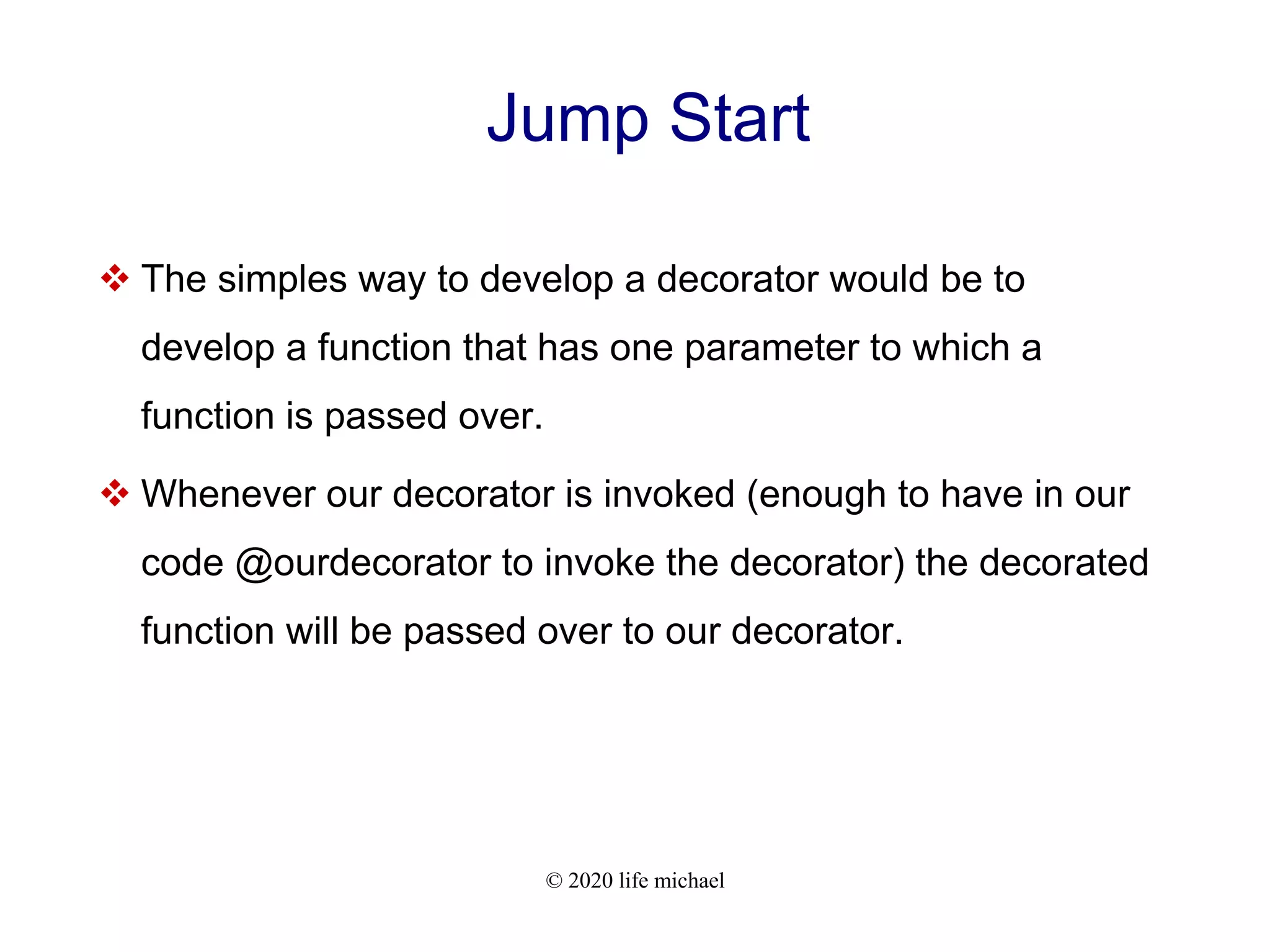
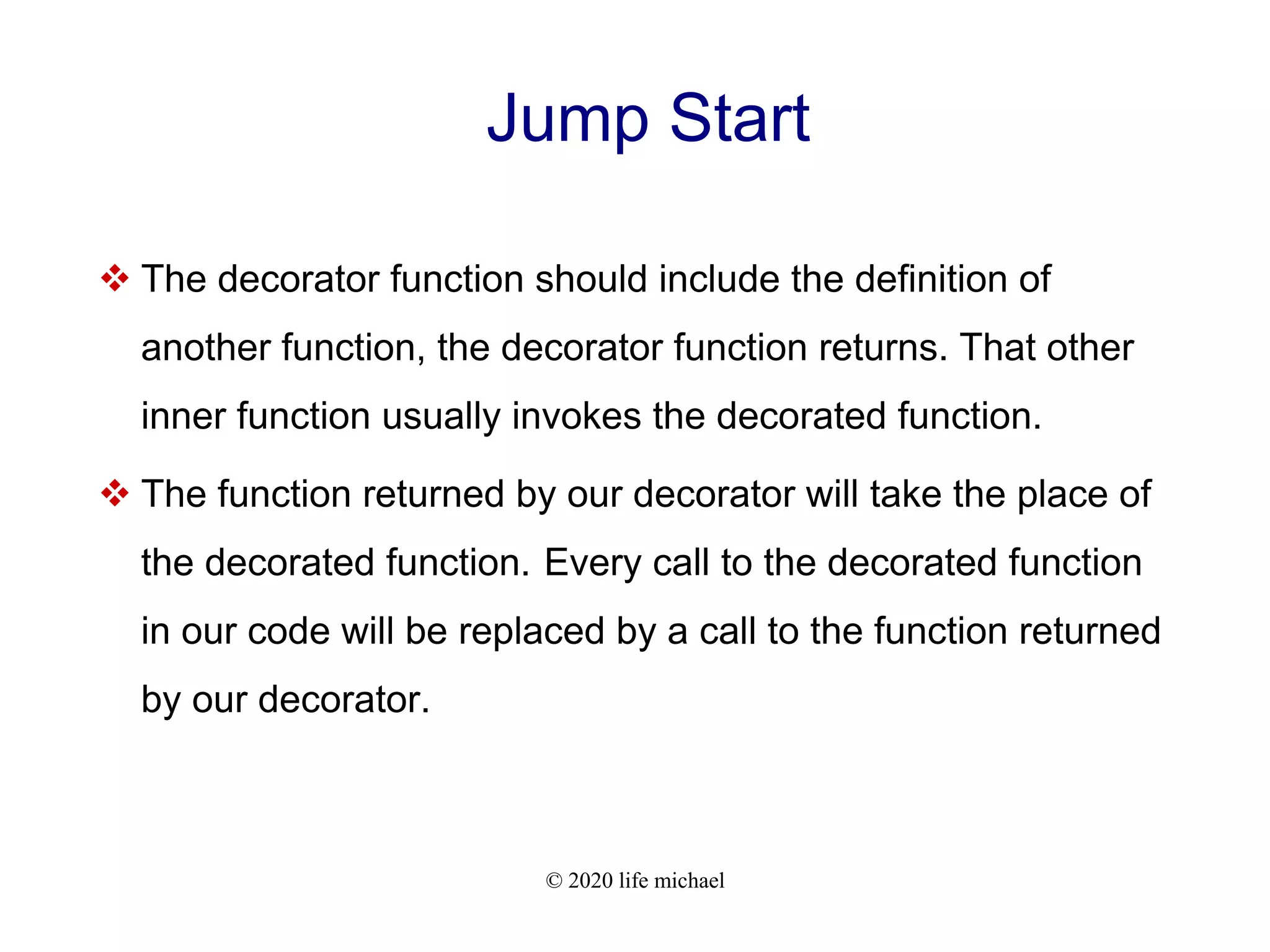
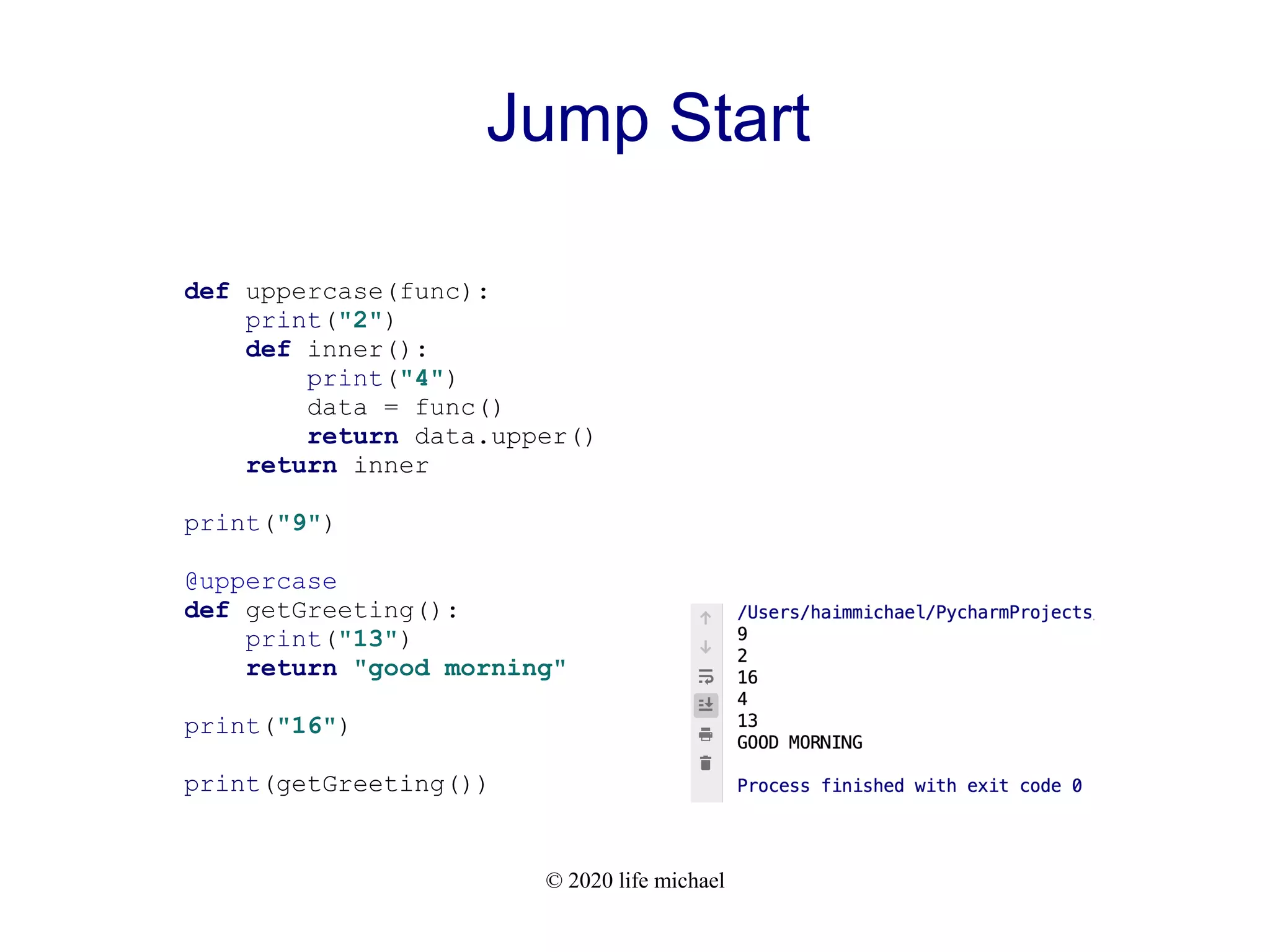
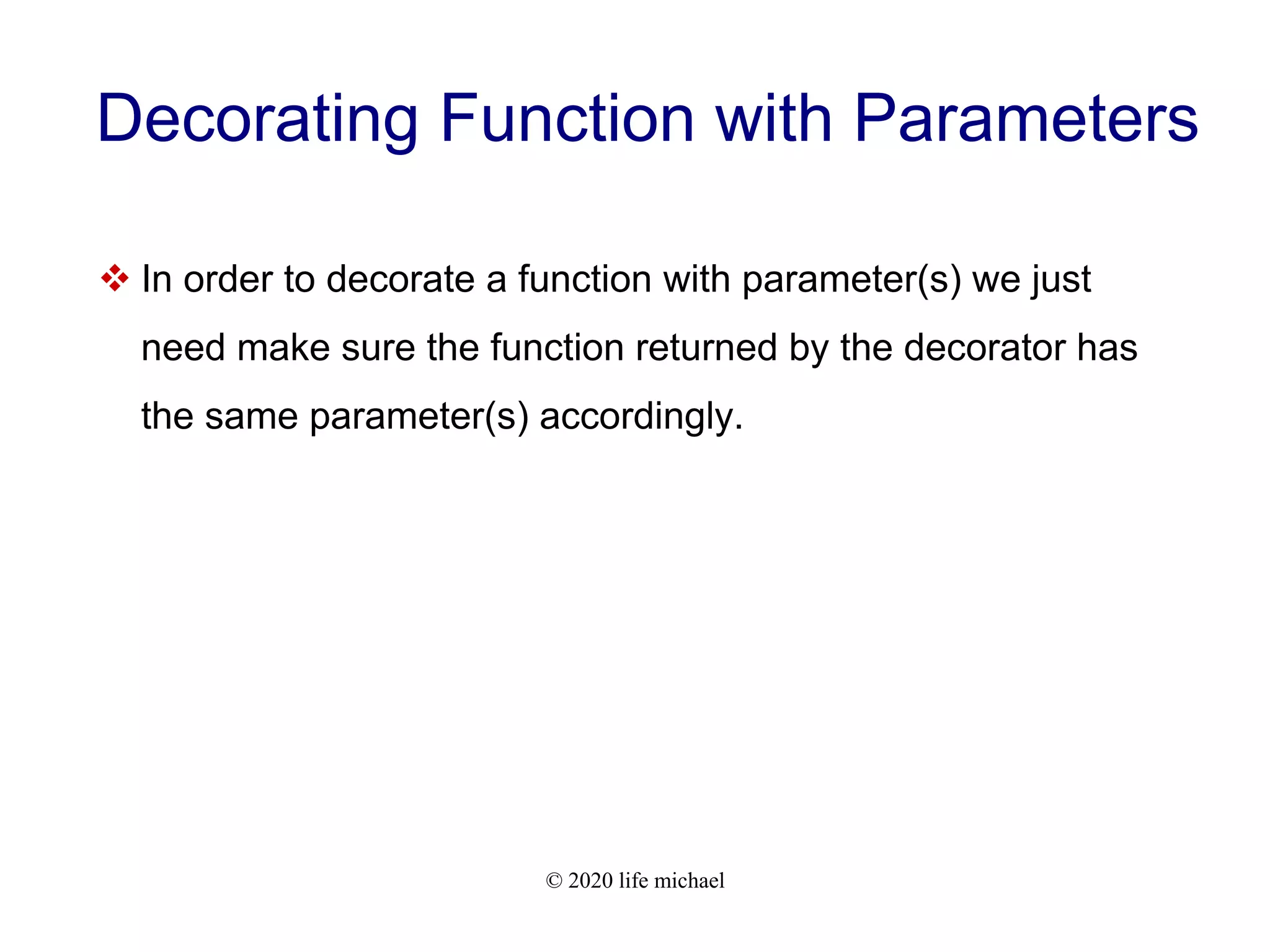
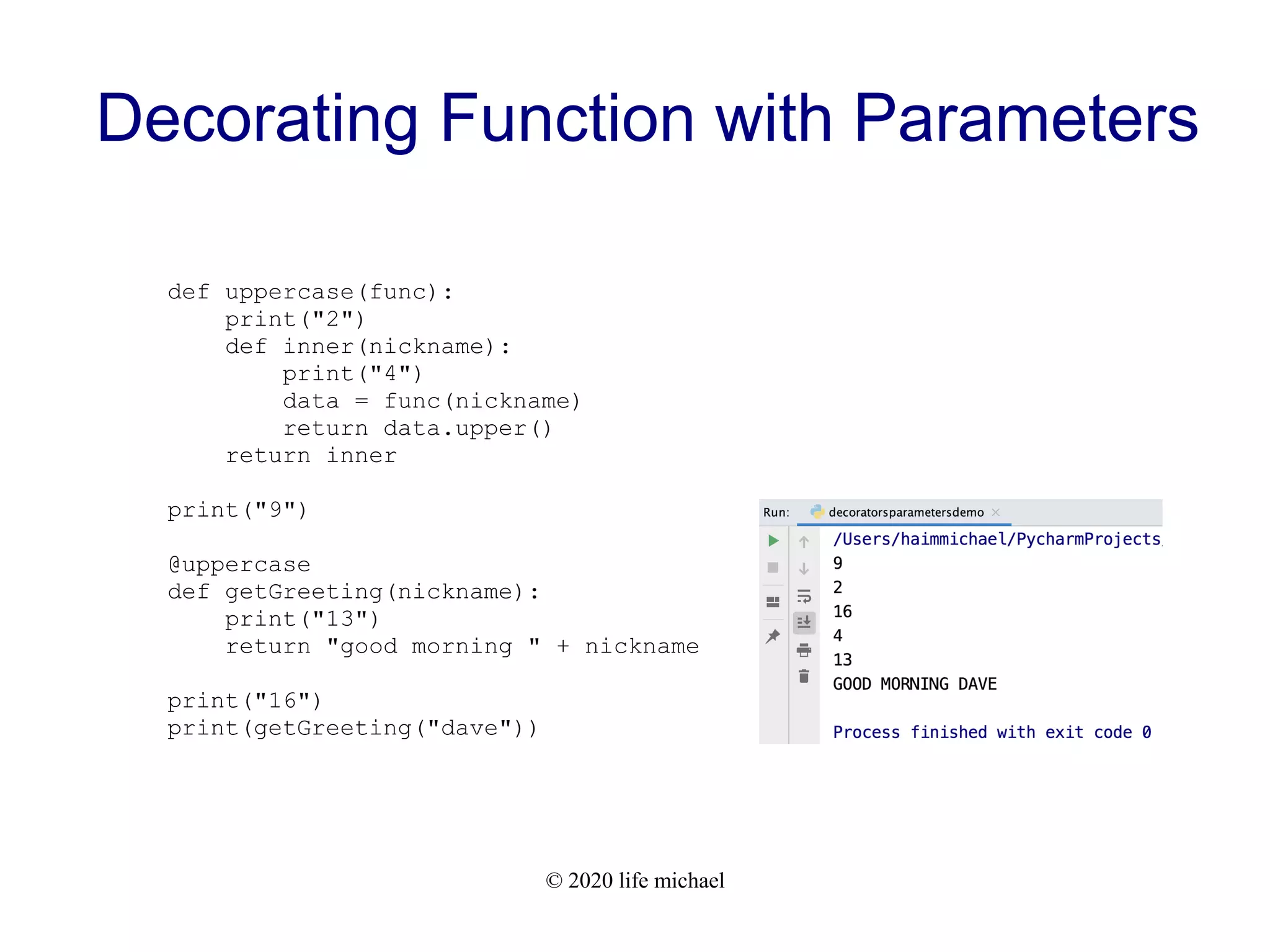
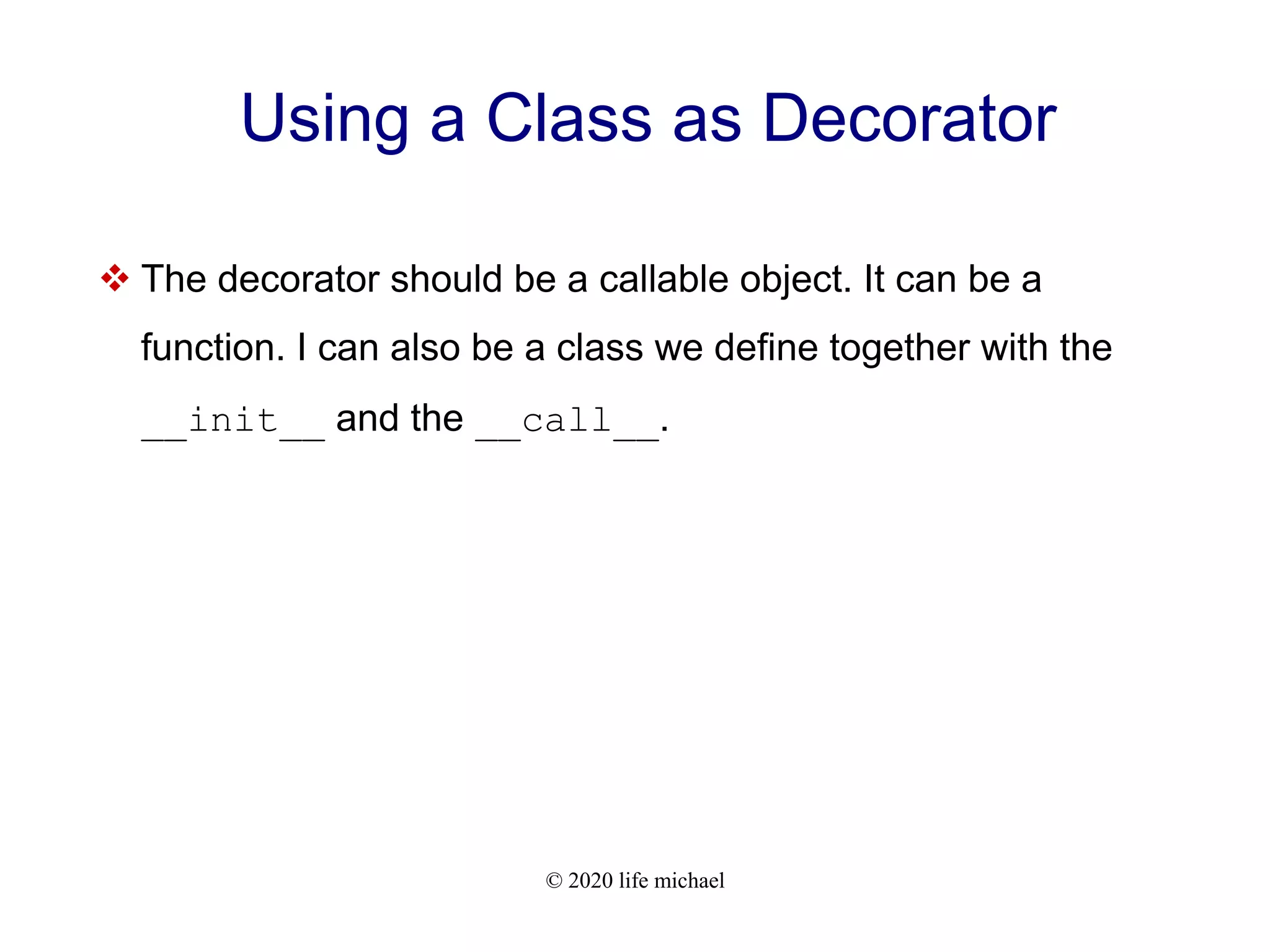
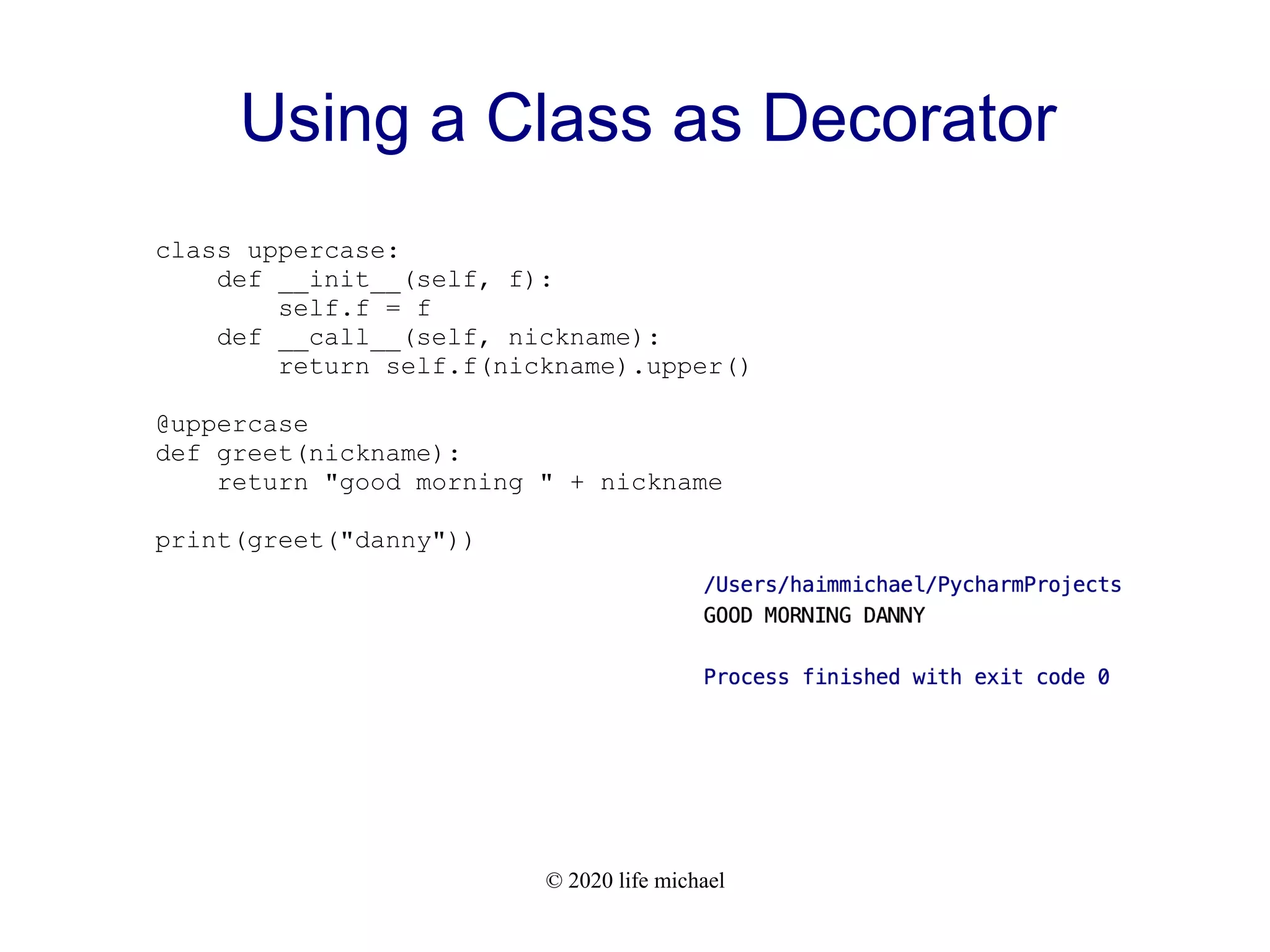
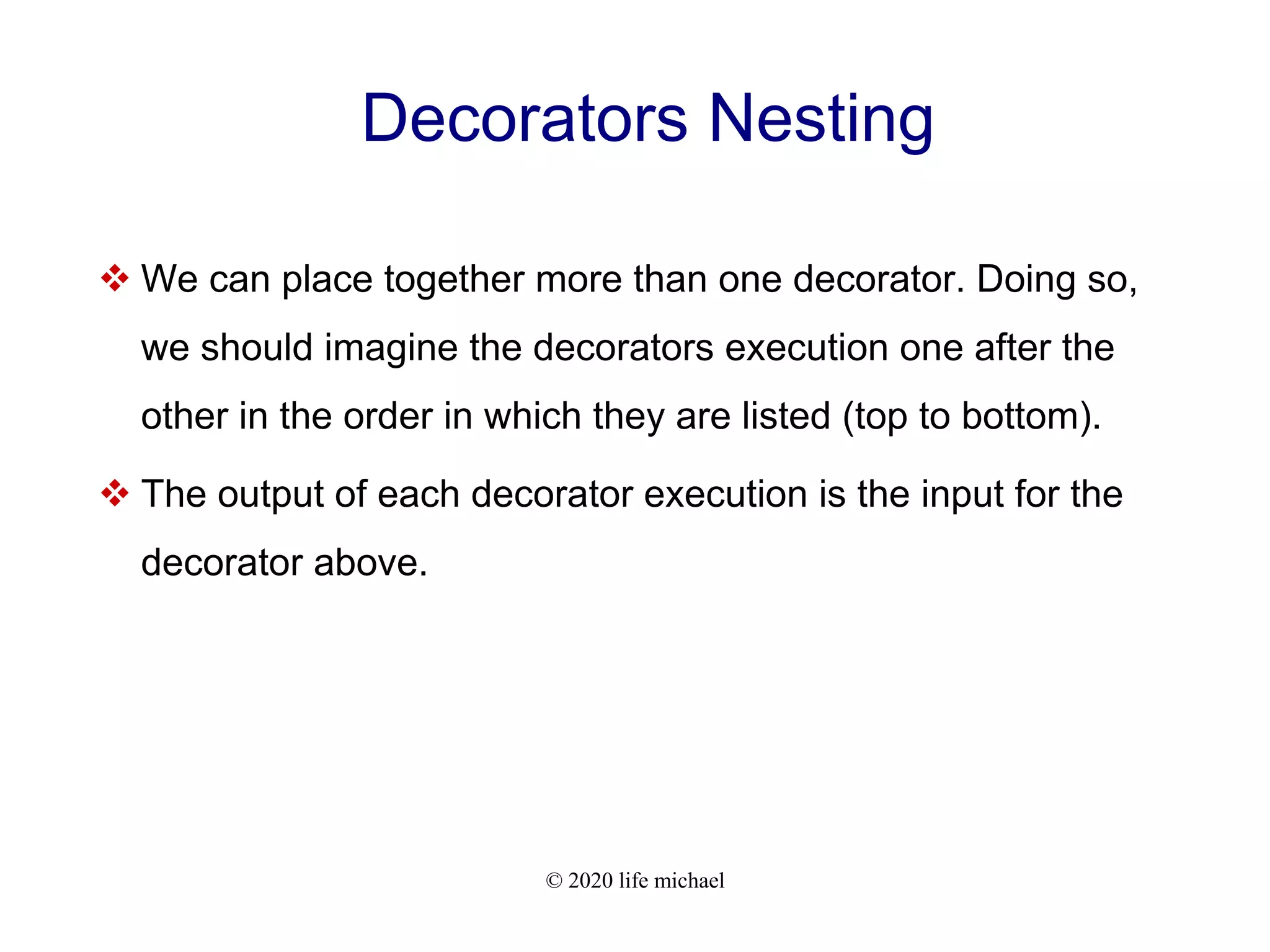
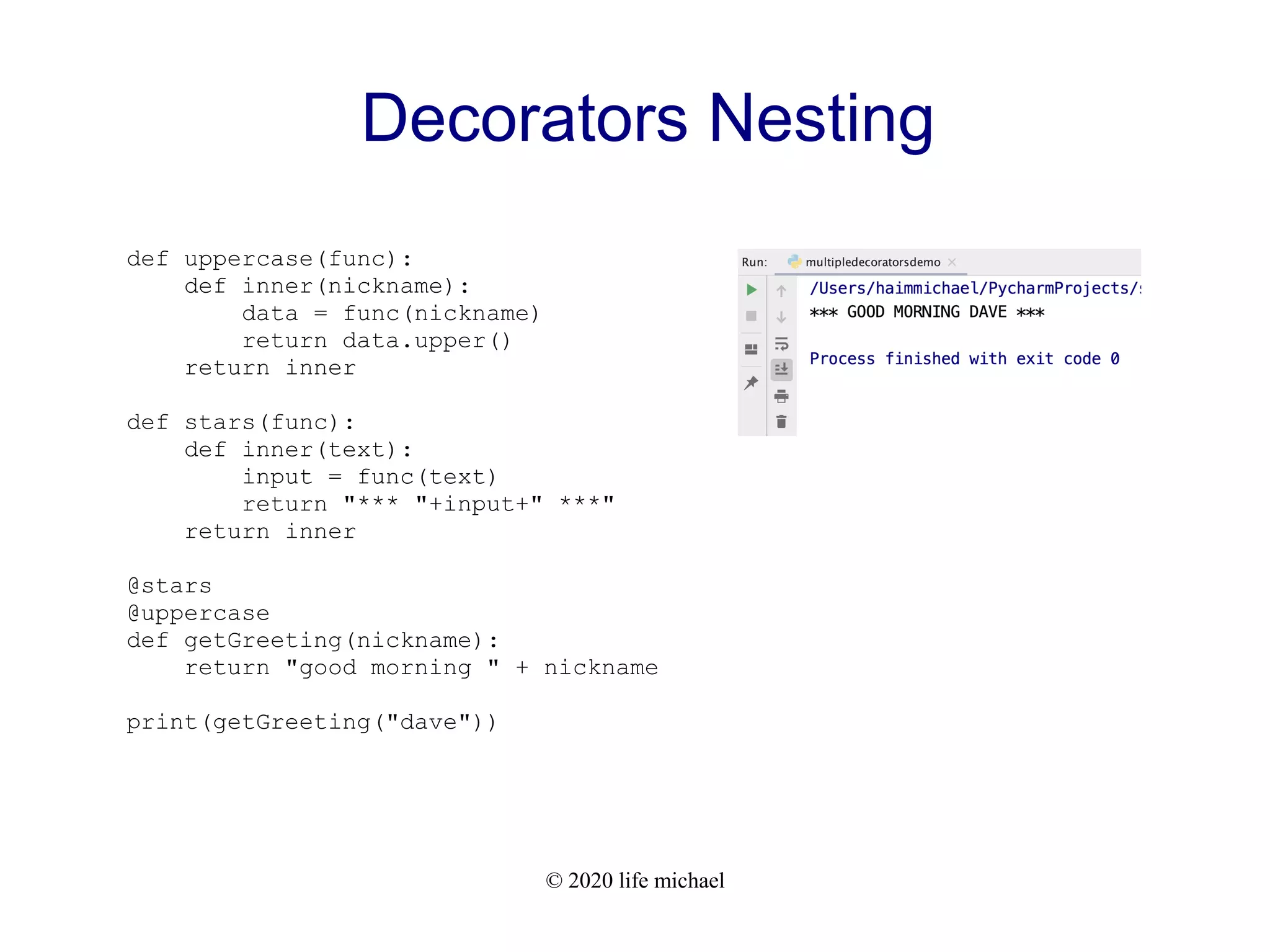

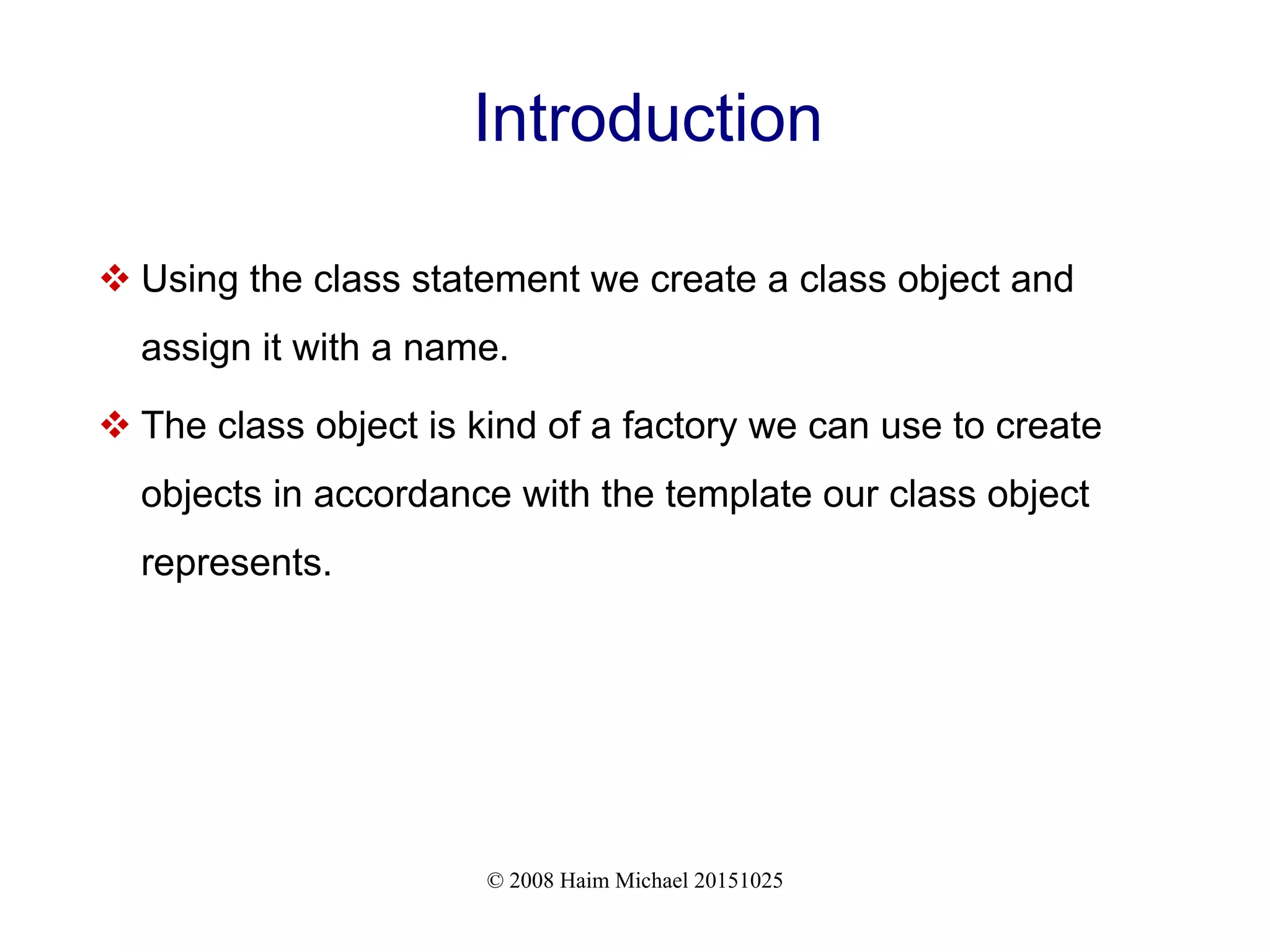
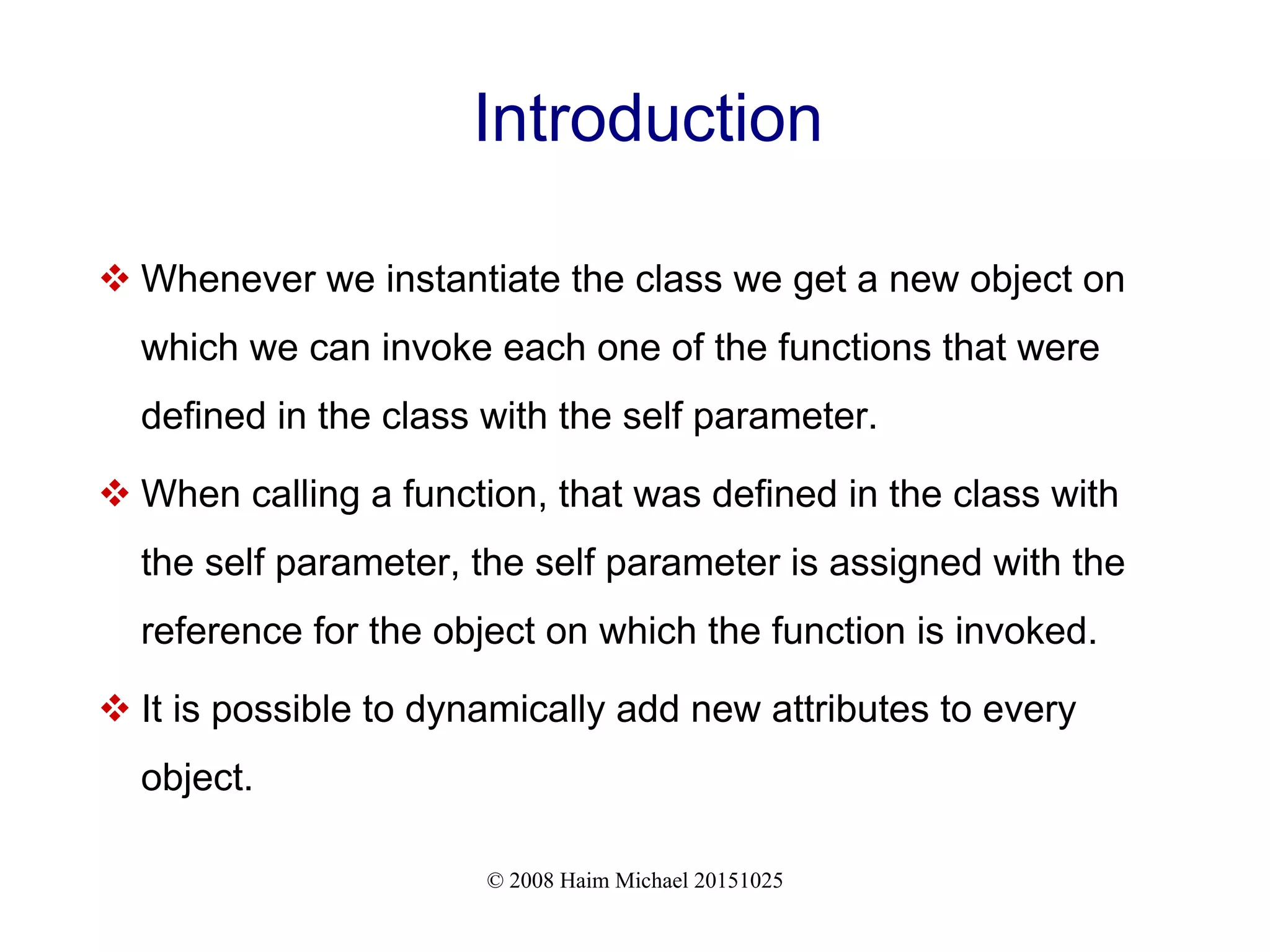
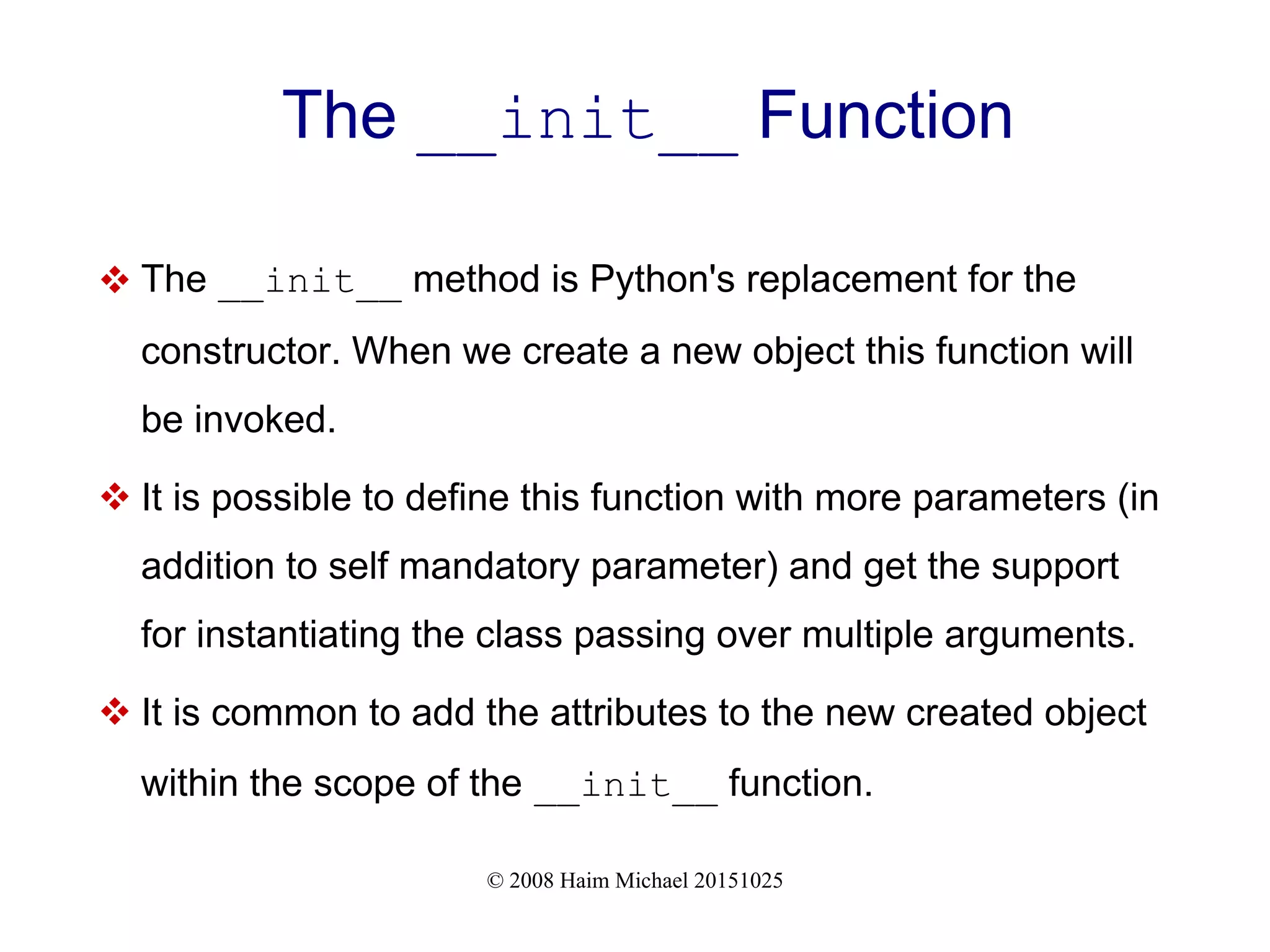
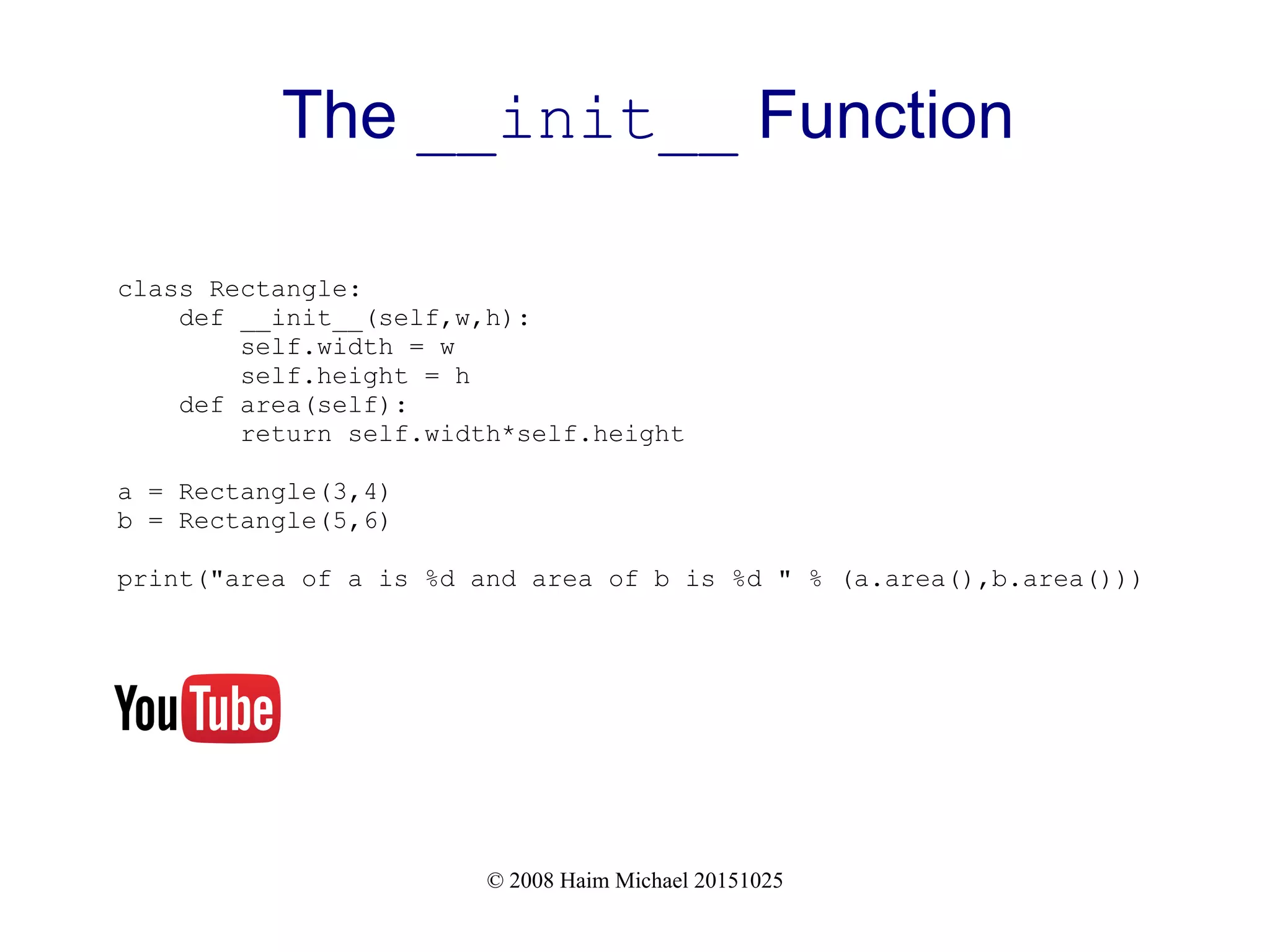
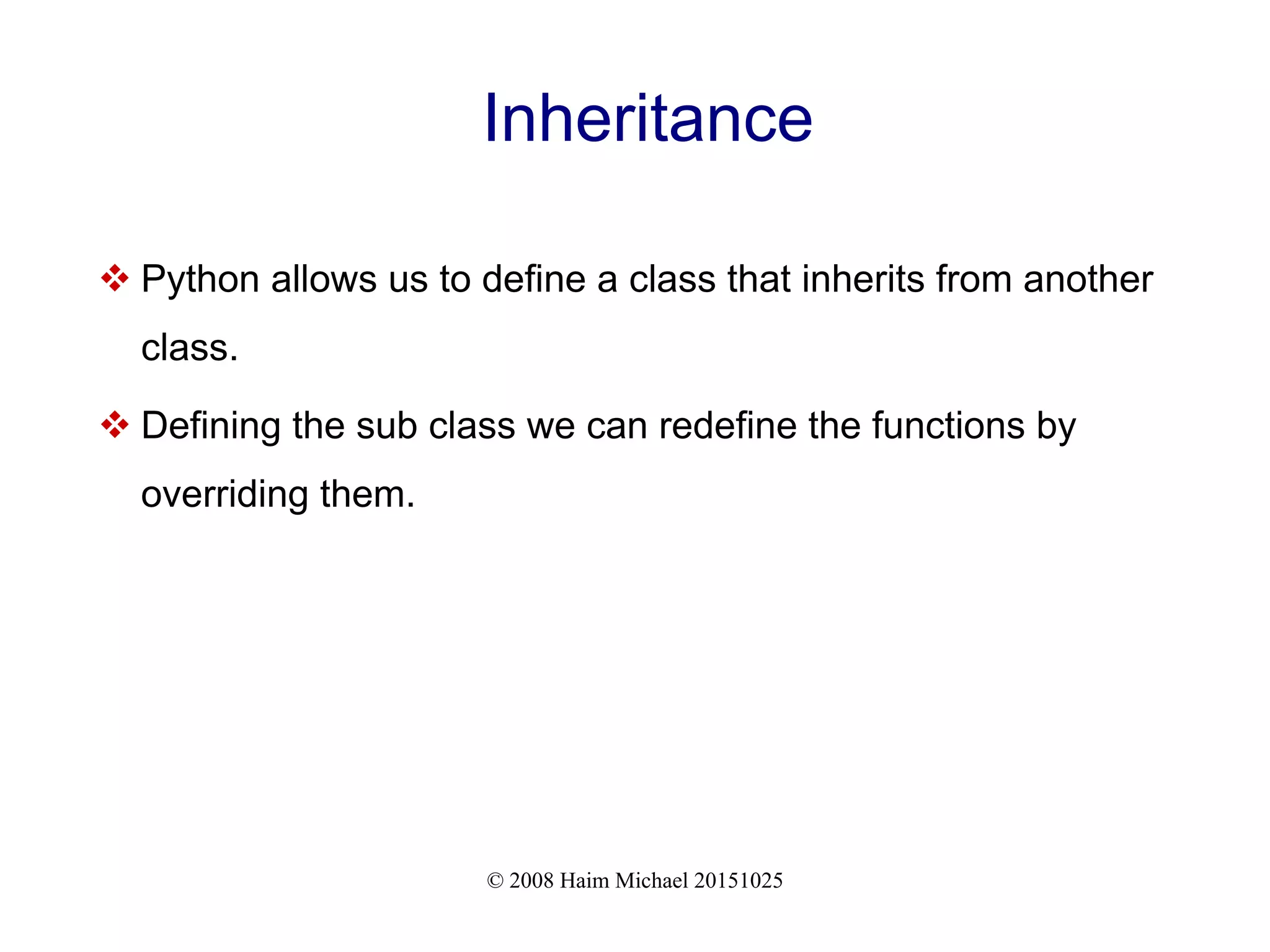

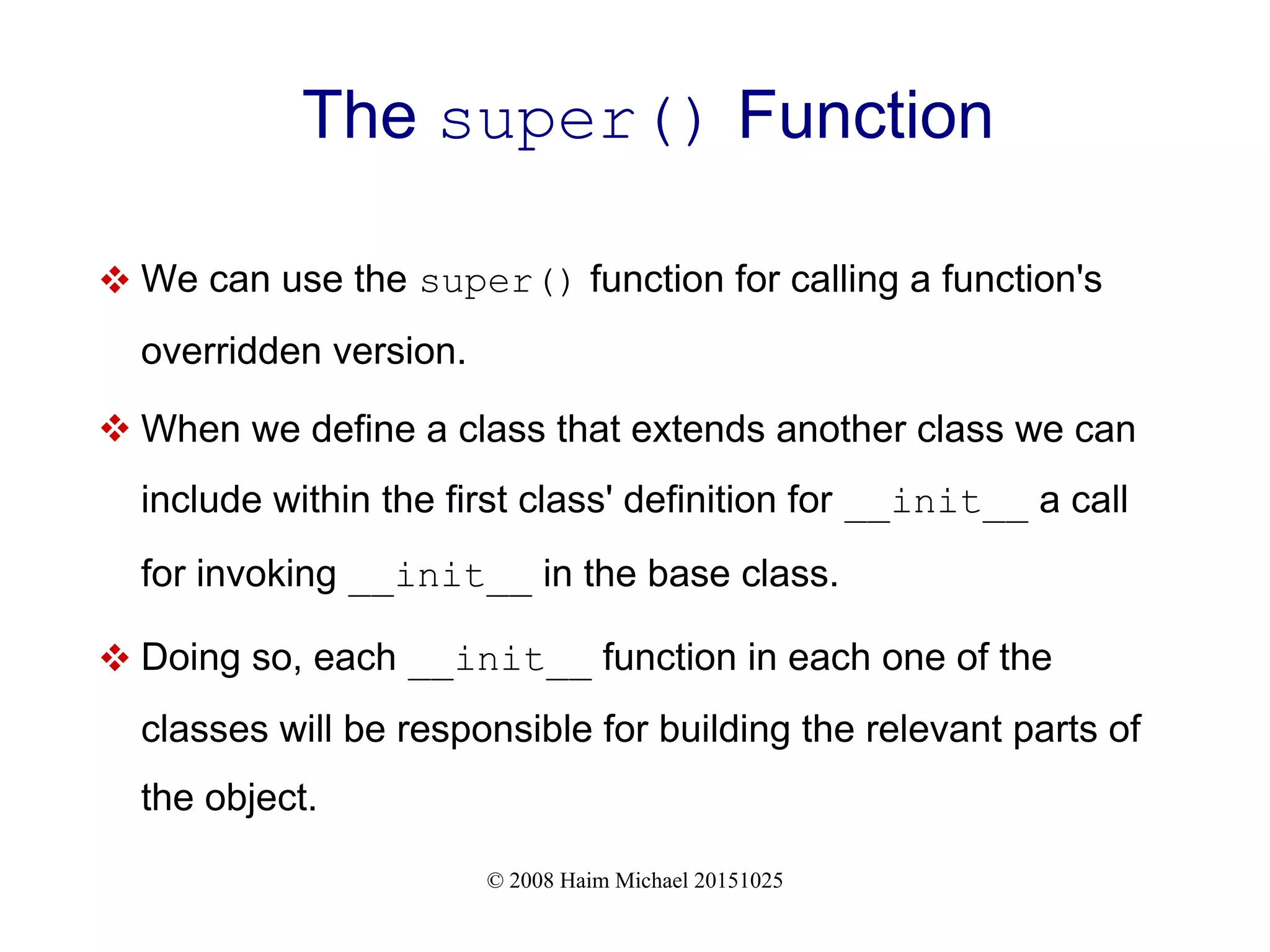
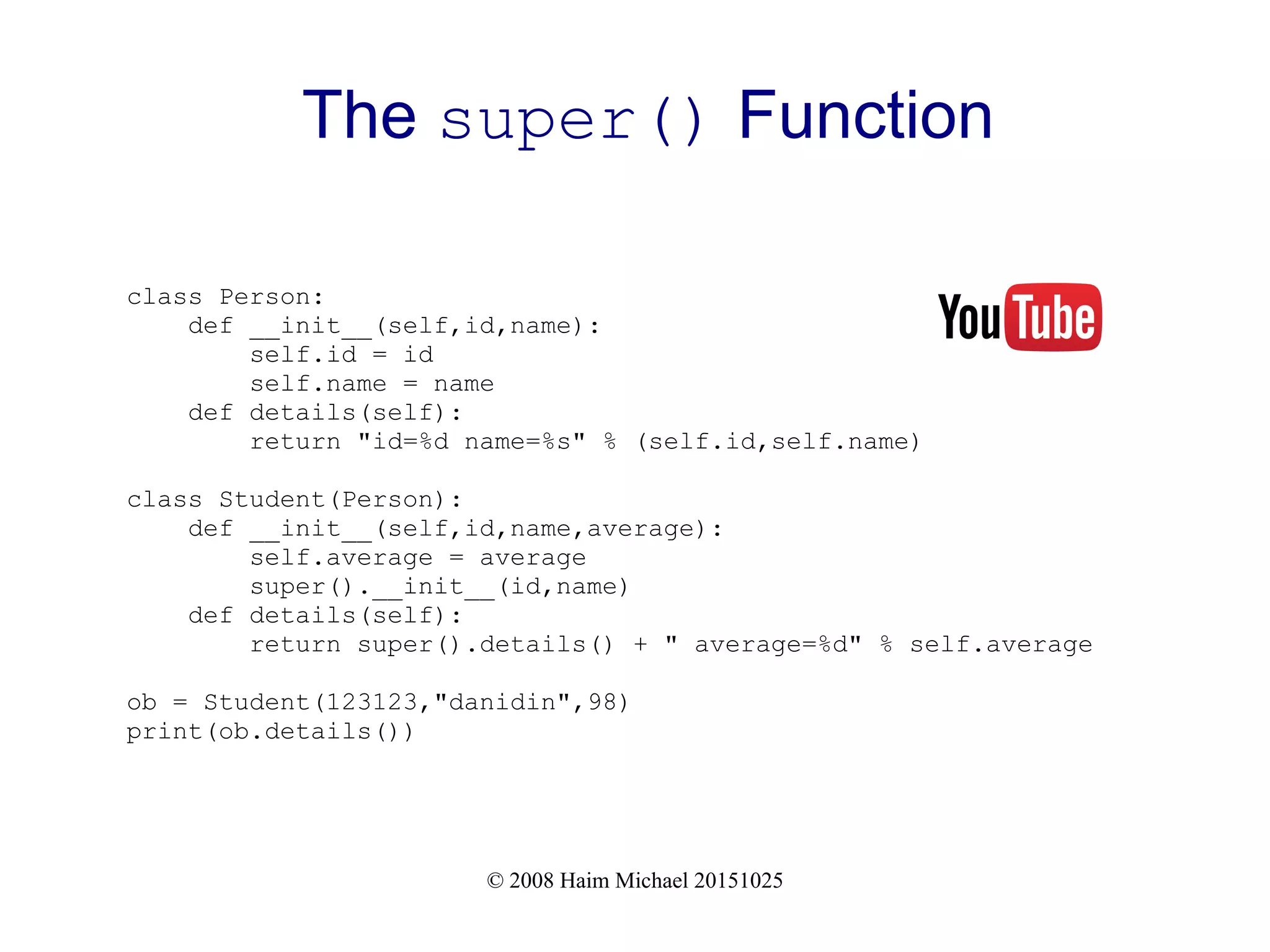
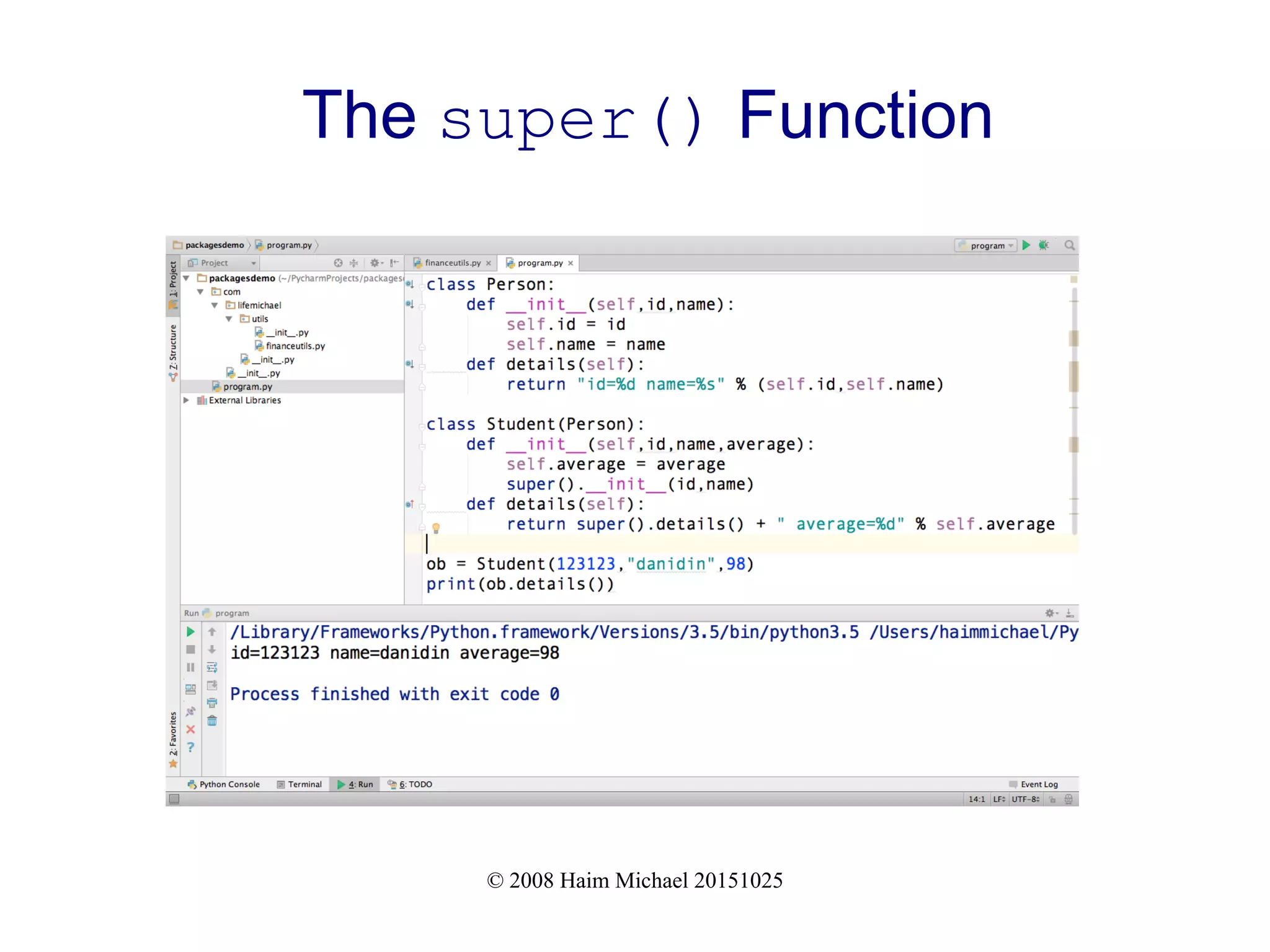
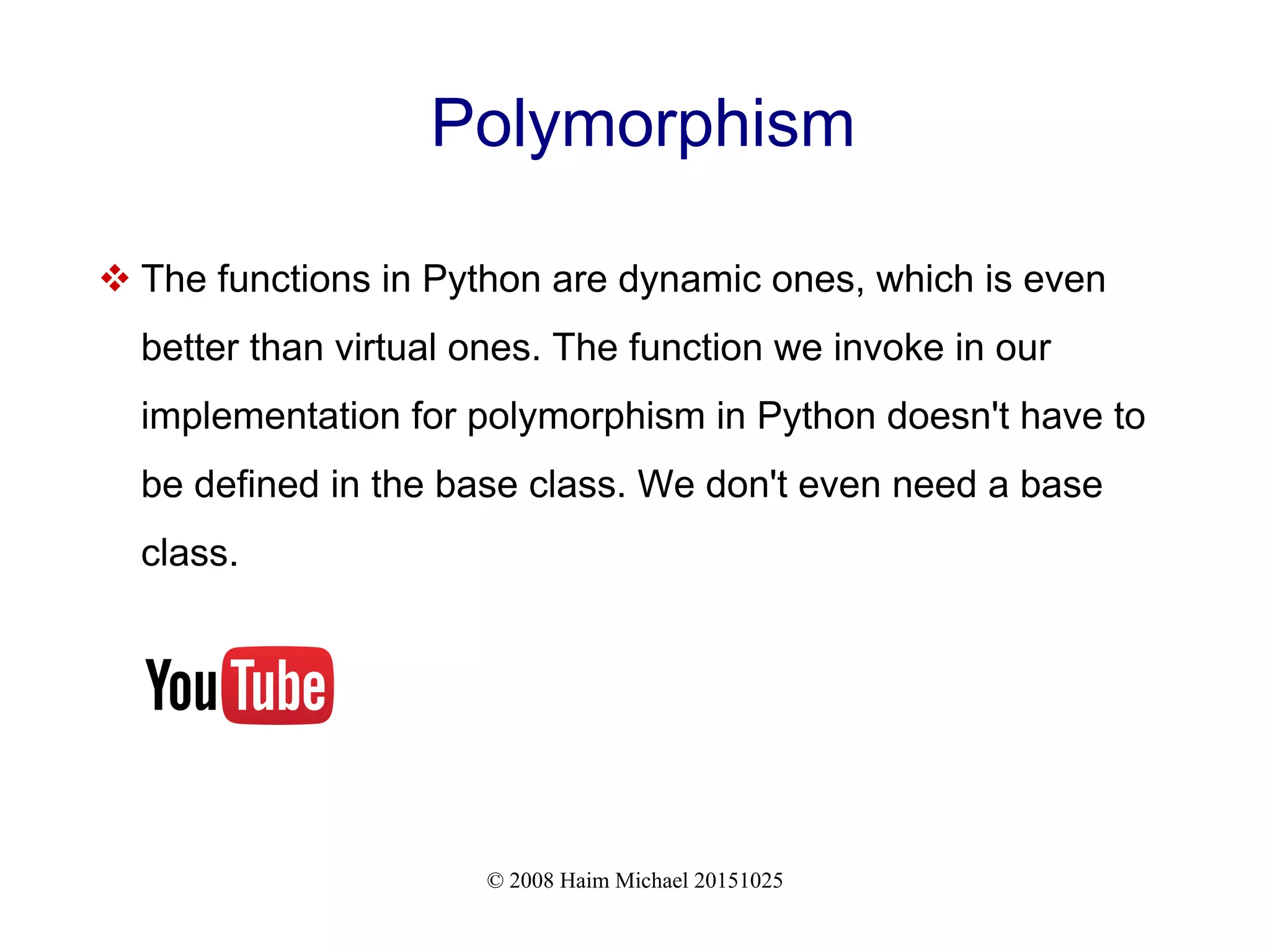
![© 2008 Haim Michael 20151025 Polymorphism class Dog: def __init__(self,str): self.name = str def hello(self): print("hau hau") class Cat: def __init__(self,str): self.name = str def hello(self): print("miau miau") class Cow: def __init__(self,str): self.name = str def hello(self): print("moo moo") animals = [Cow("Metilda"), Dog("Doberman"), Cat("Mitzi"), Cow("Shula")] for animal in animals: animal.hello()](https://image.slidesharecdn.com/programminginpythononsteroidsxxl20210225-210227210338/75/Programming-in-Python-on-Steroid-120-2048.jpg)
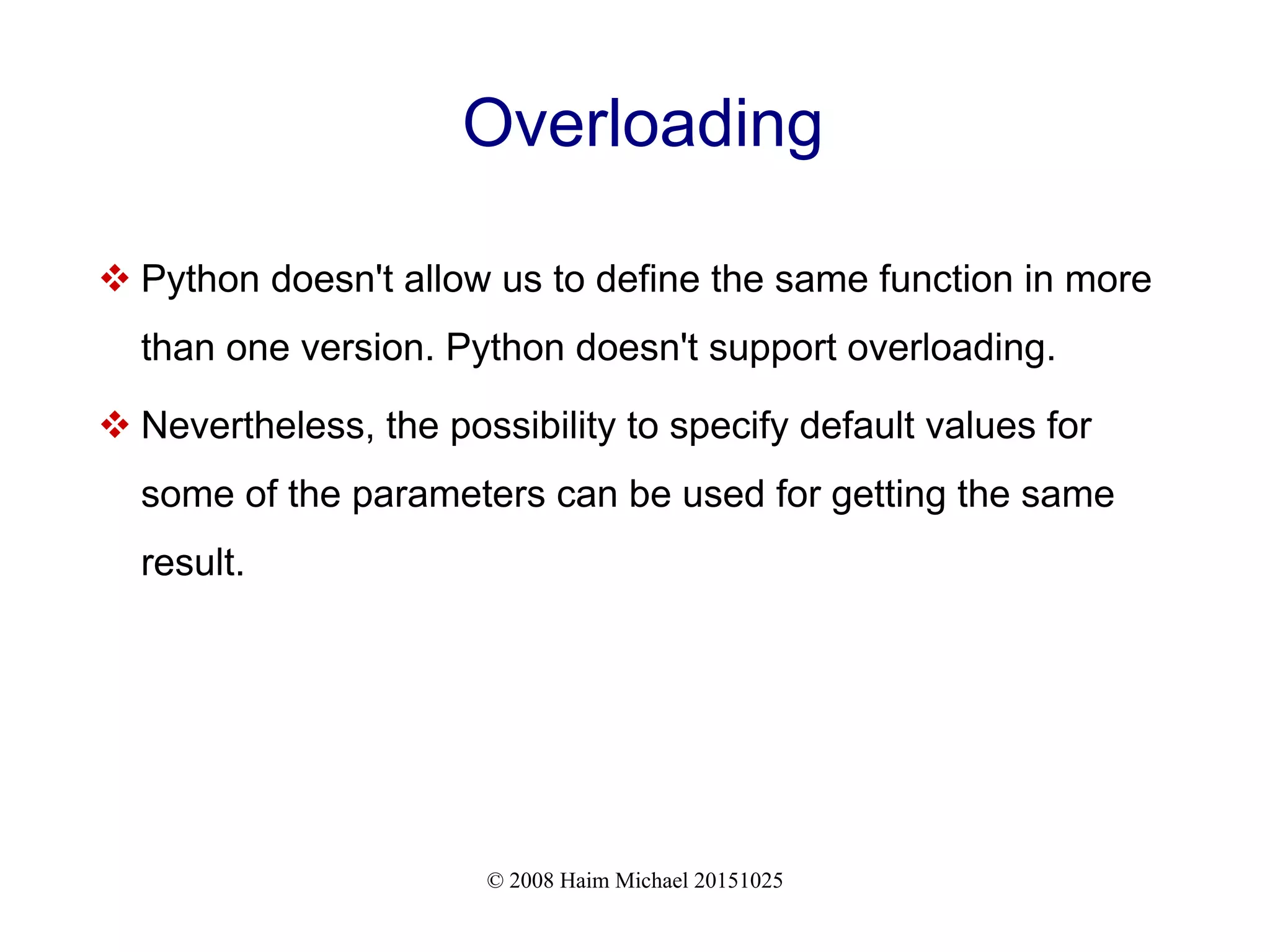
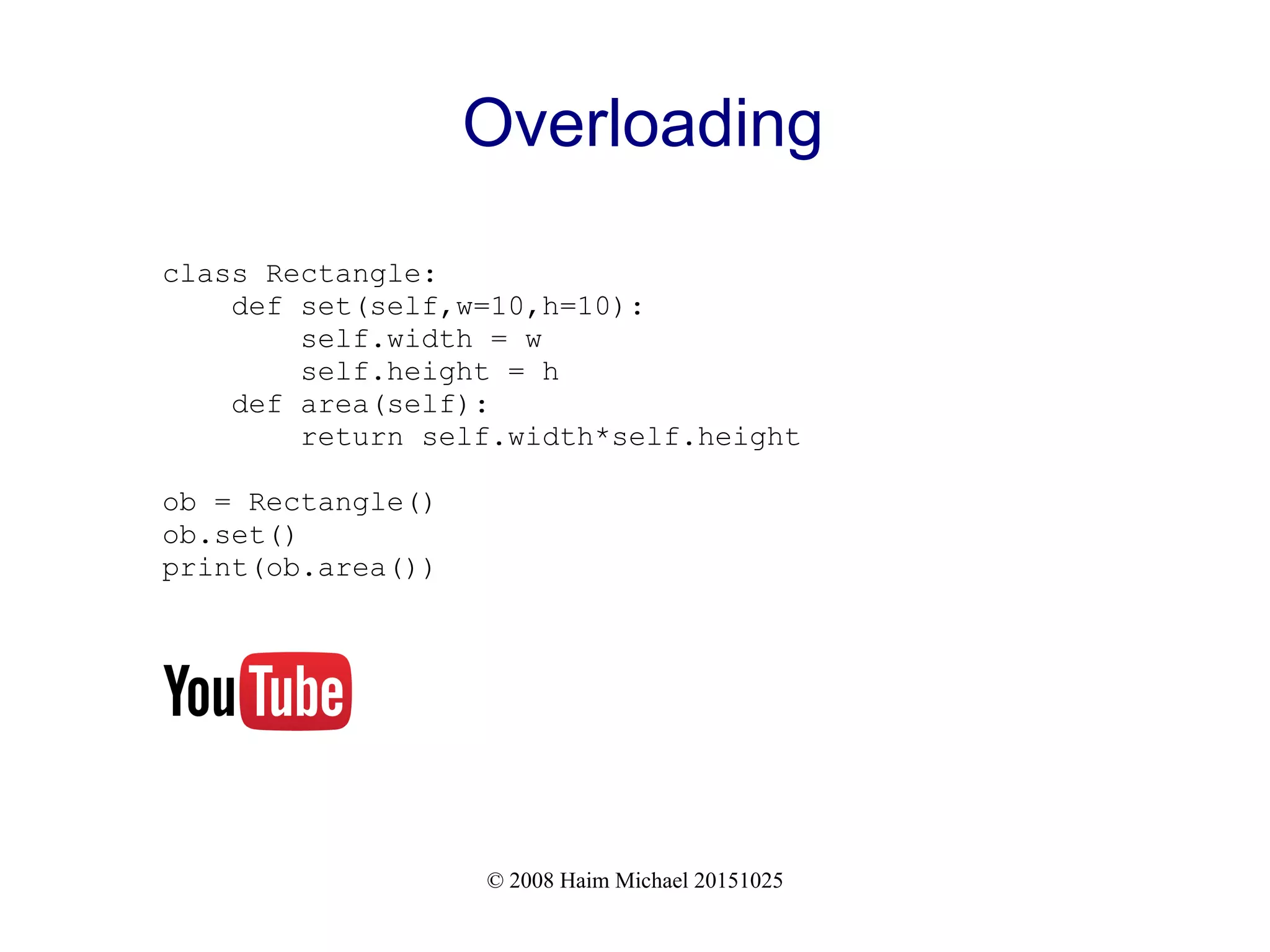
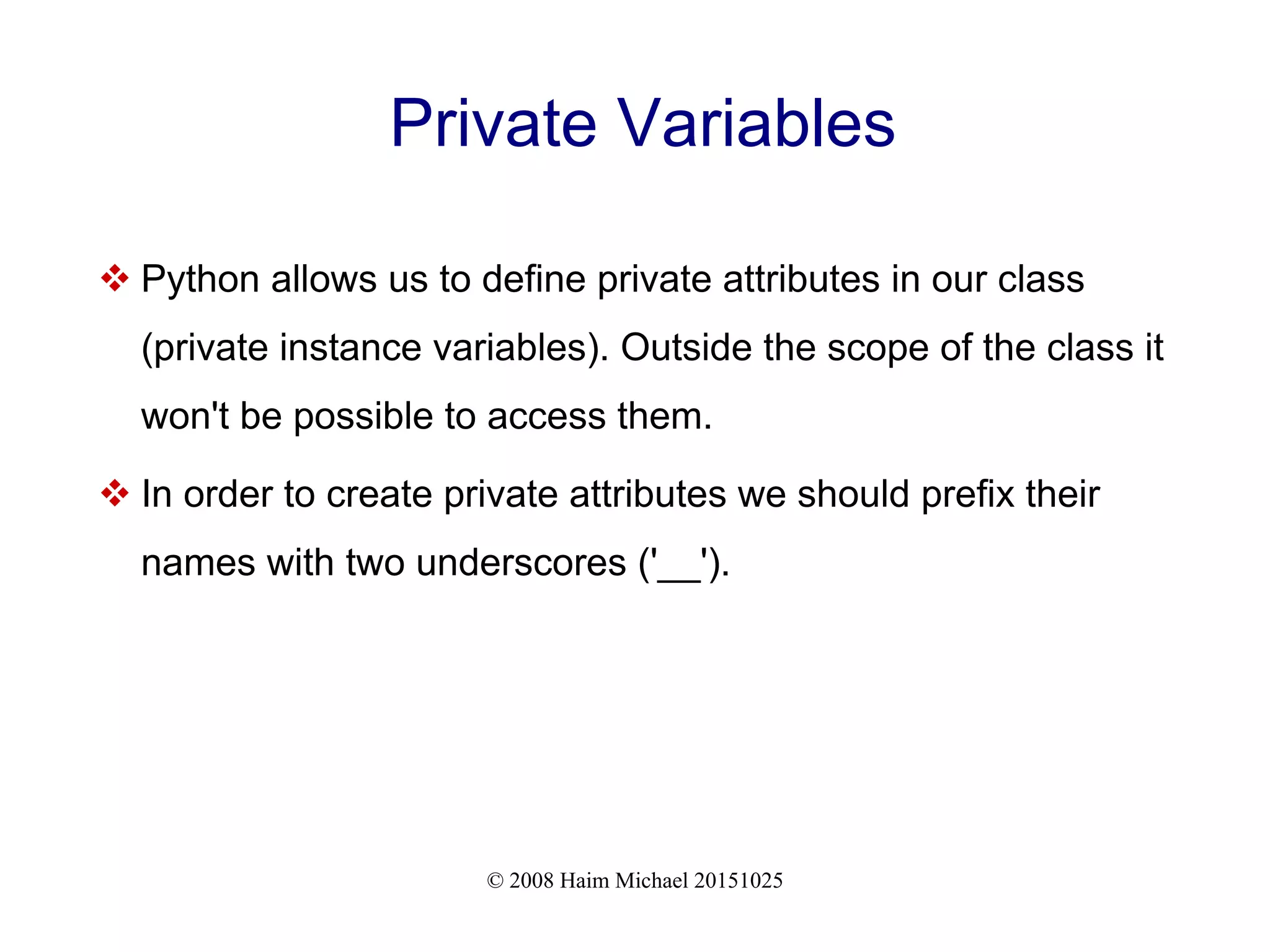
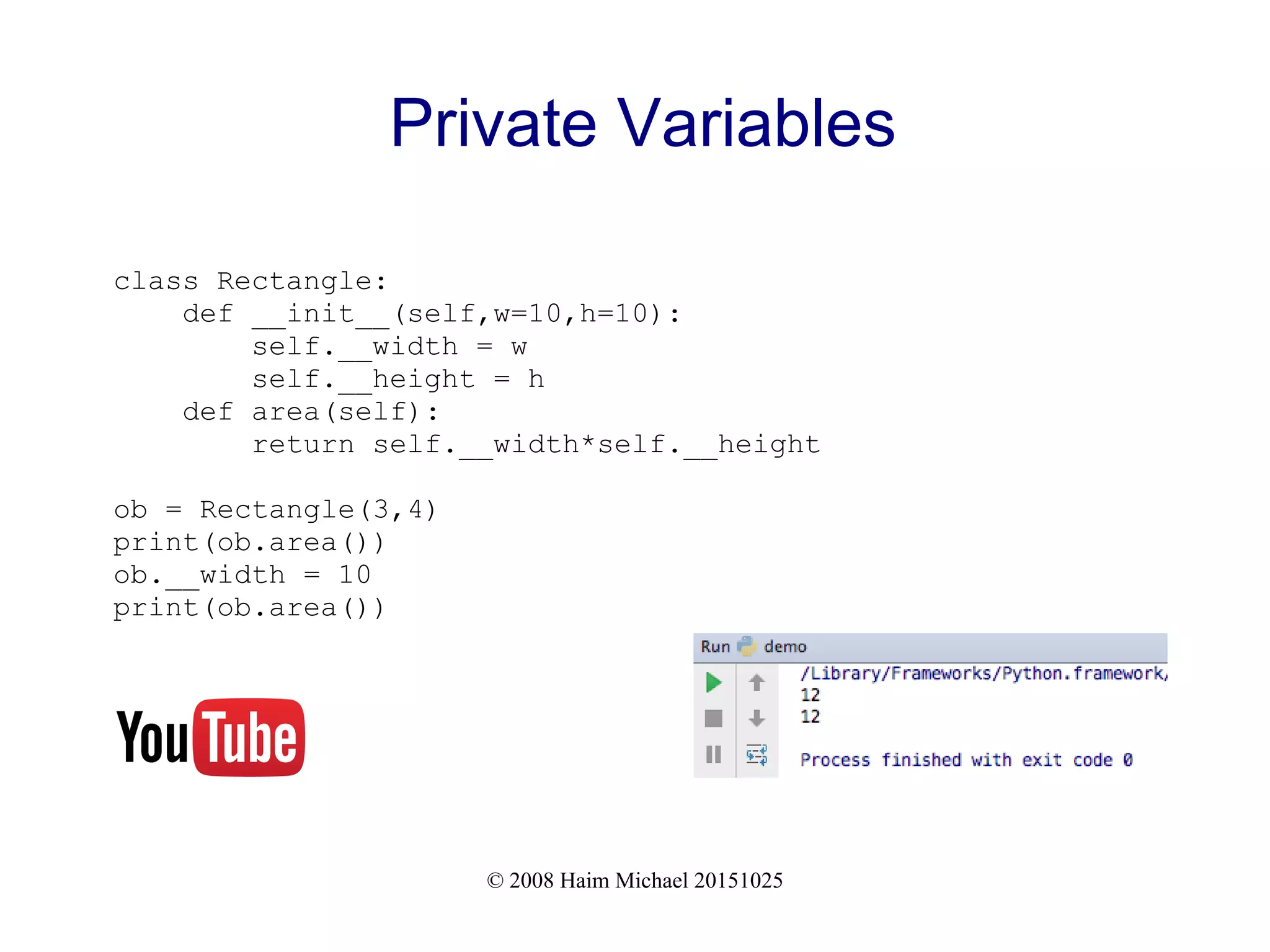
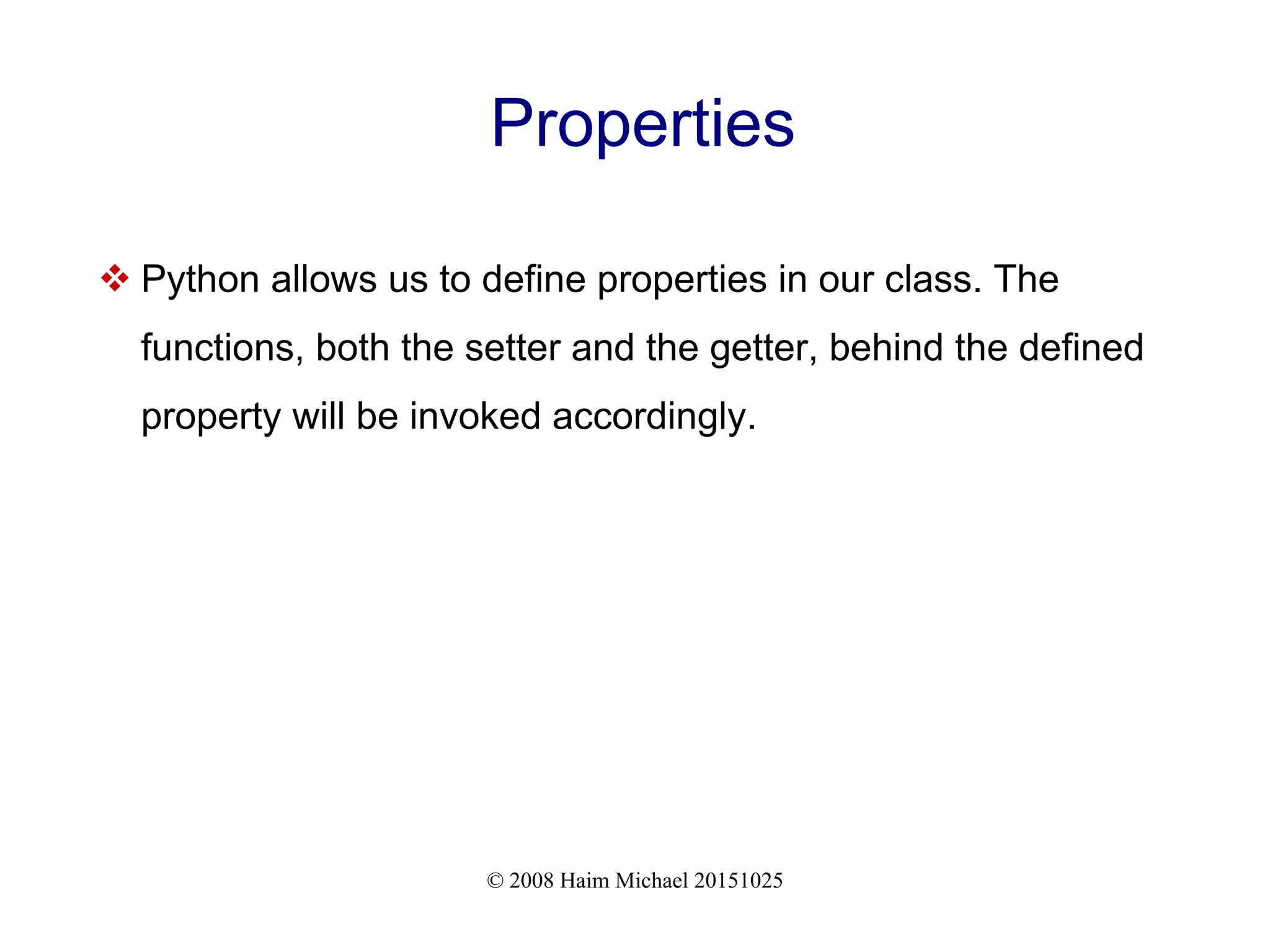
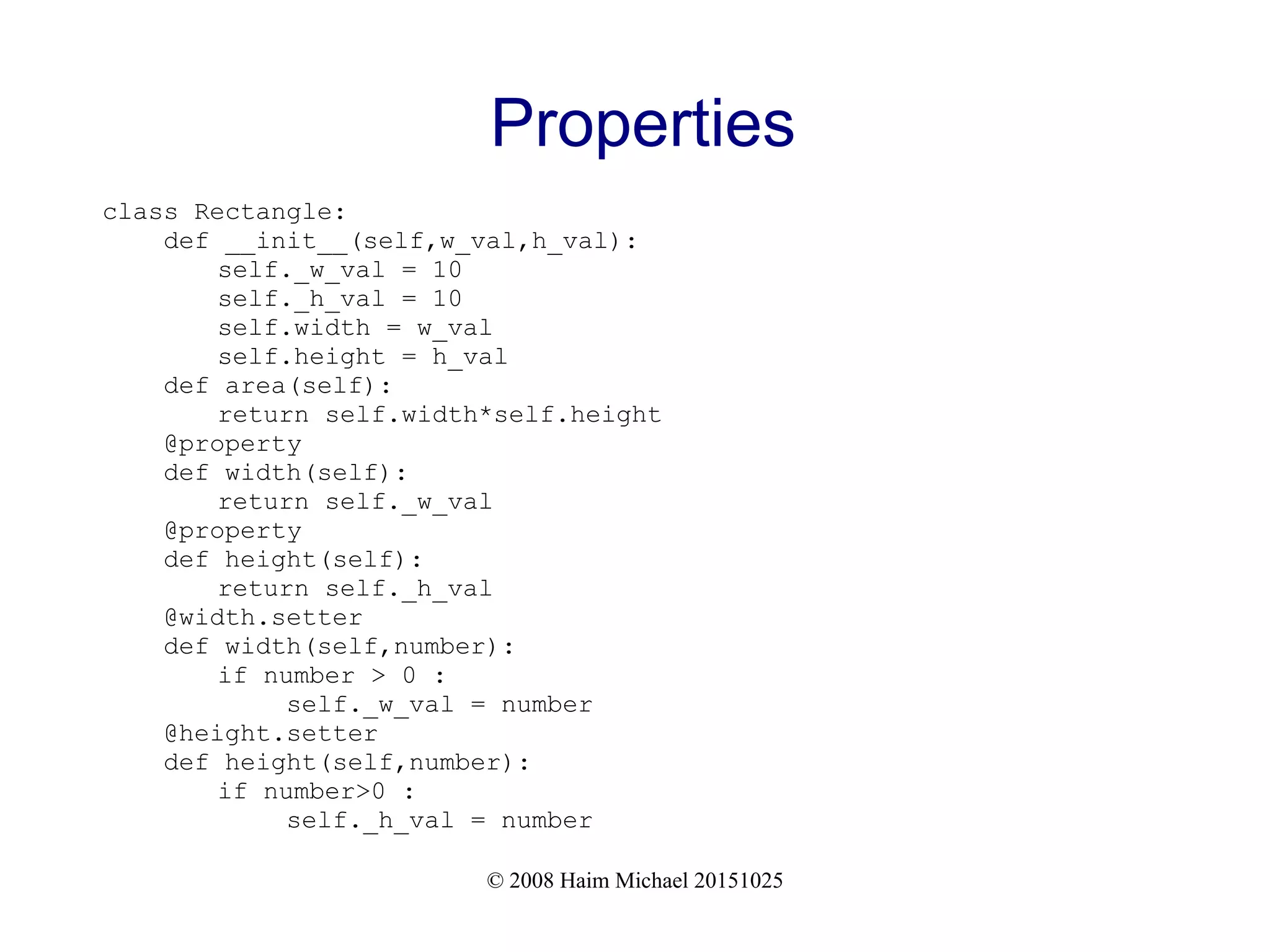
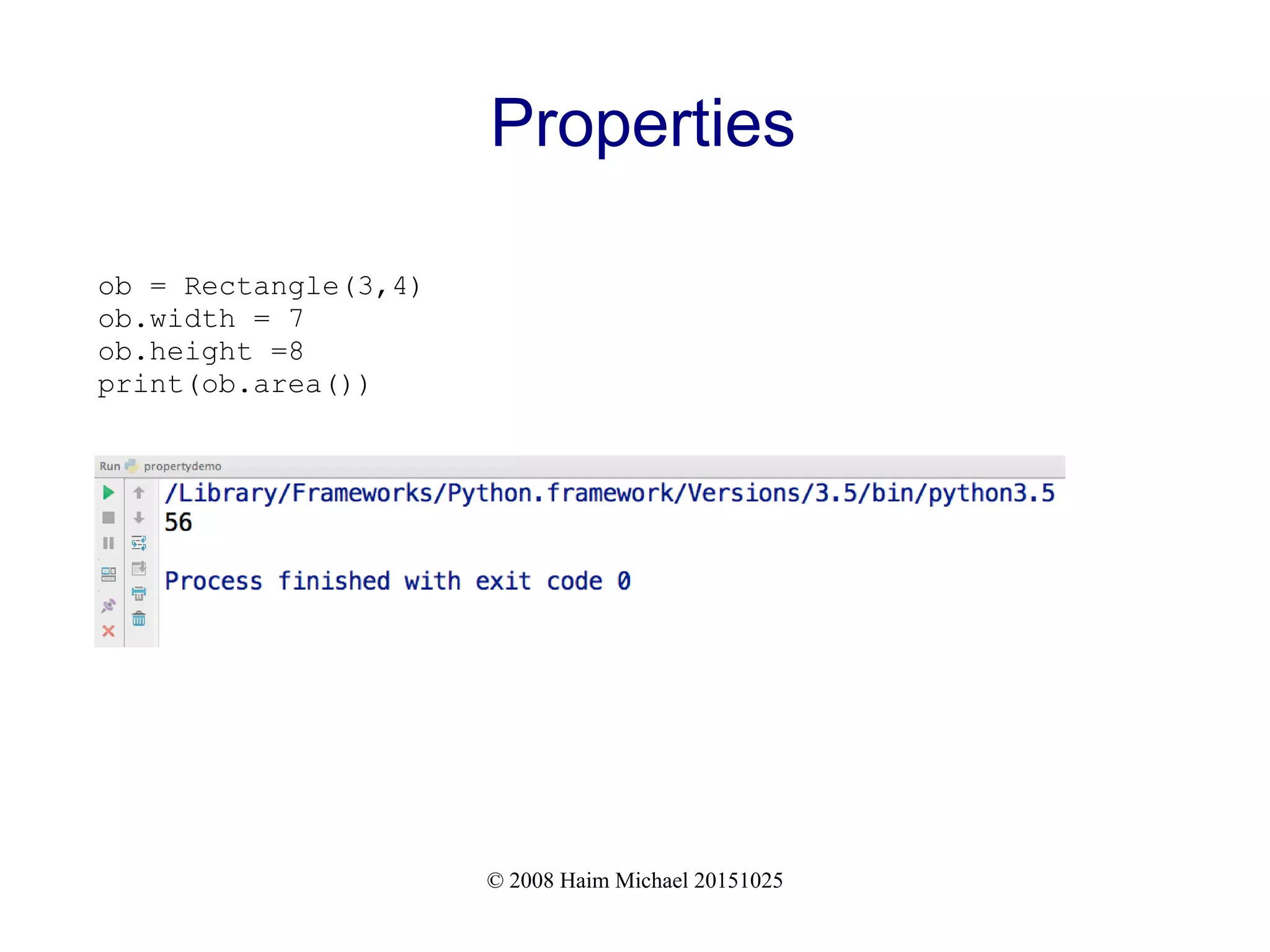
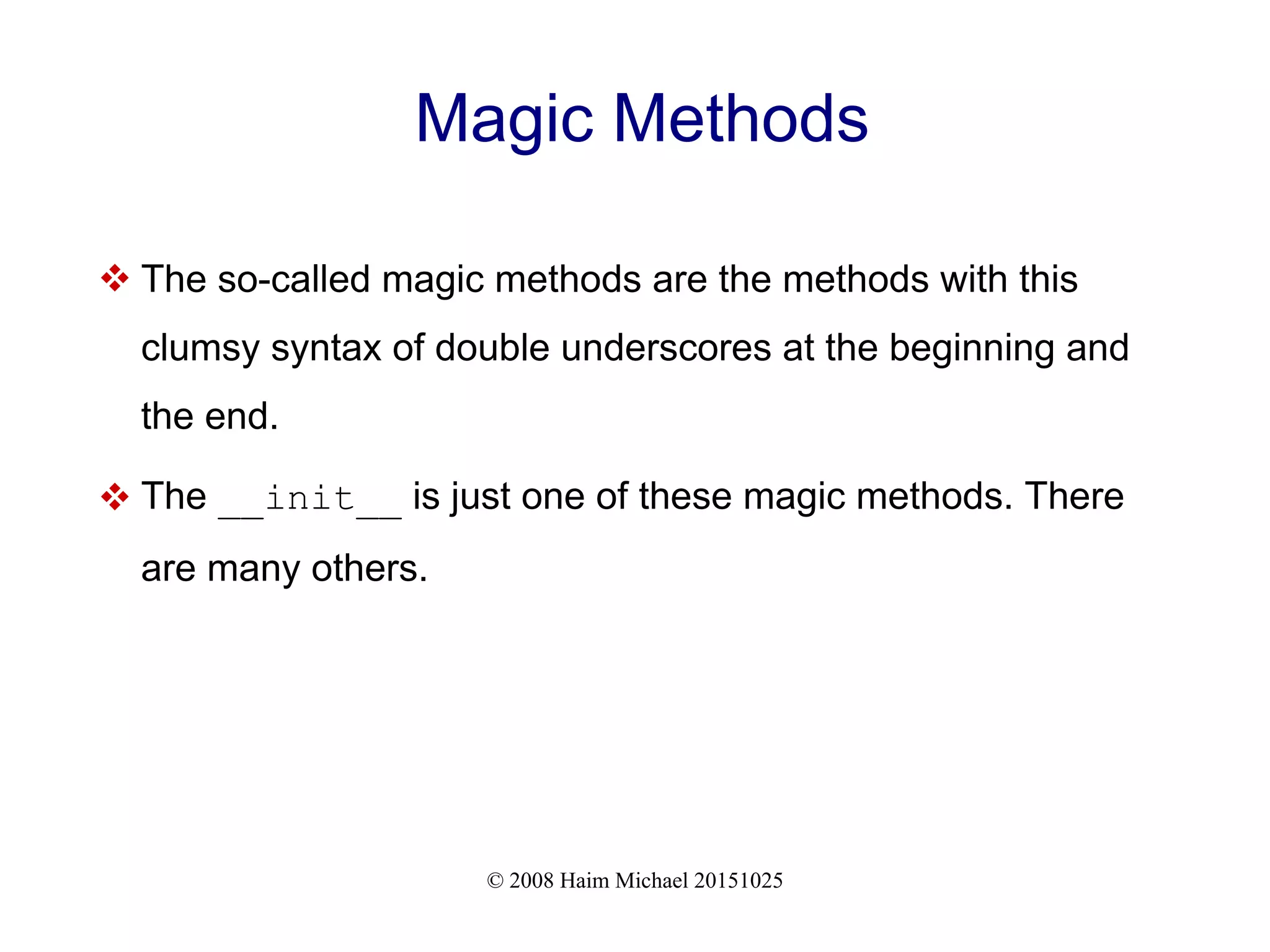
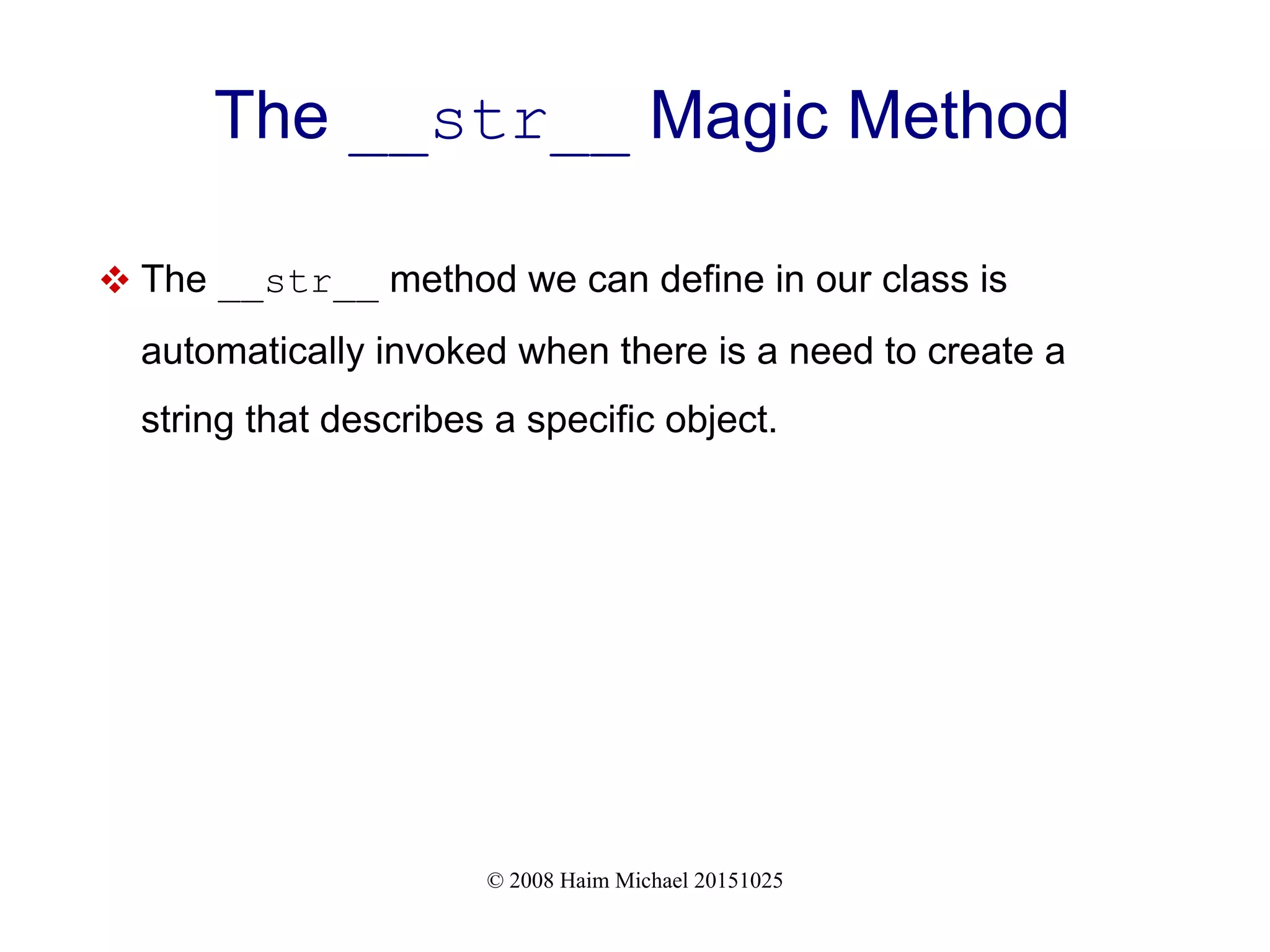
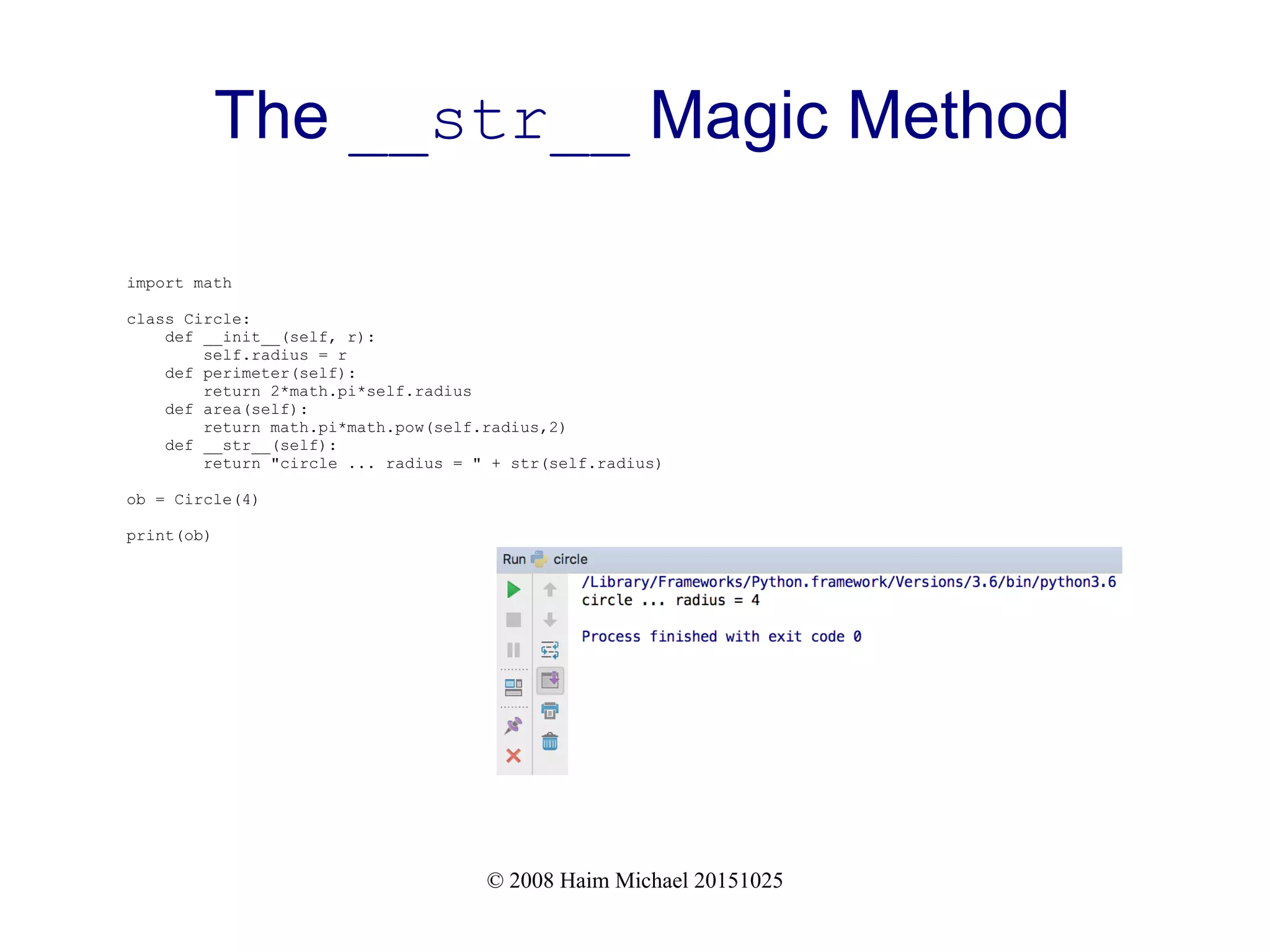
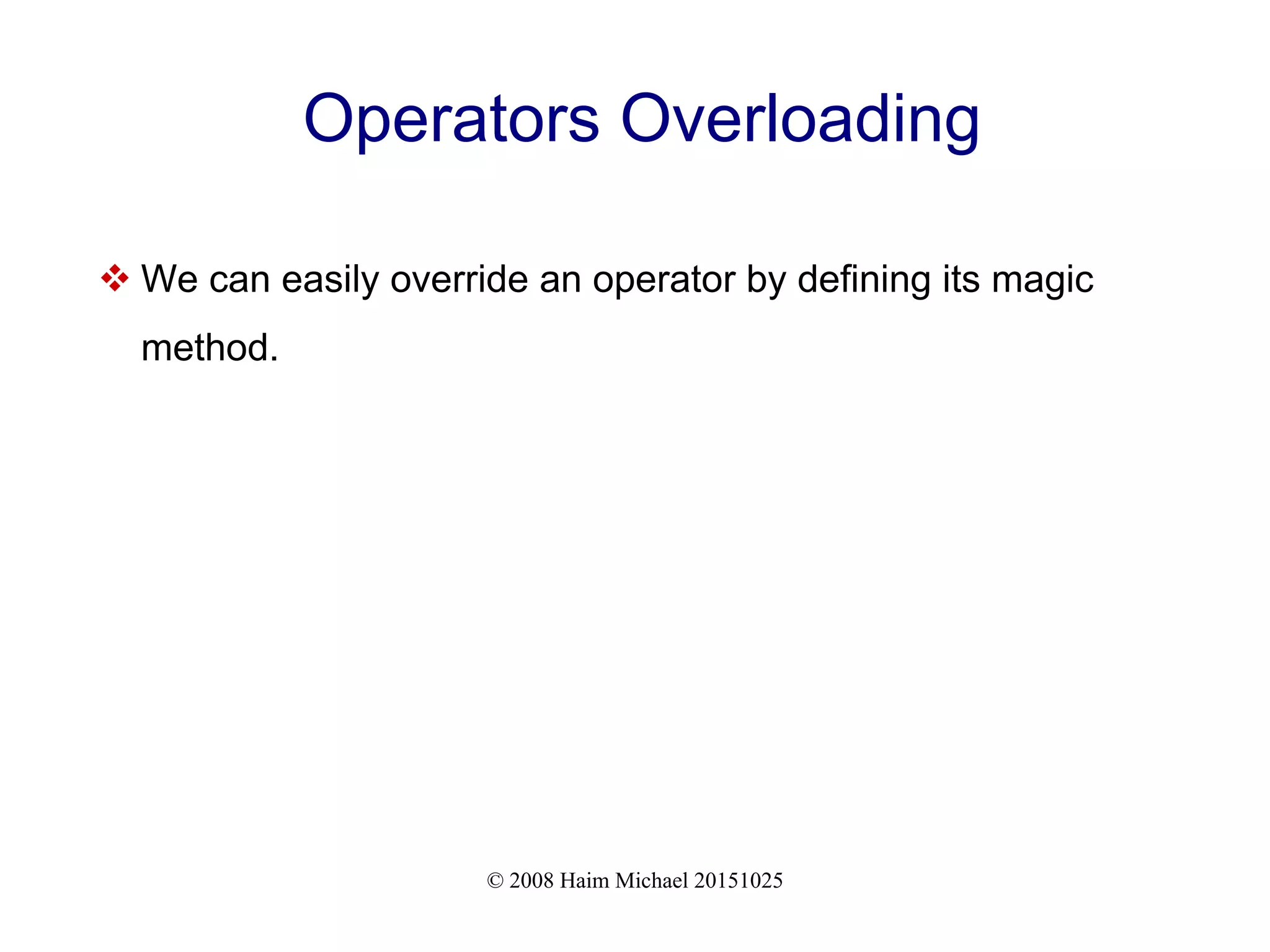
![© 2008 Haim Michael 20151025 Binary Operators Overloading Hereto the magic functions we should define in order to overload the binary operators. Operator Method + object.__add__(self, other) - object.__sub__(self, other) * object.__mul__(self, other) // object.__floordiv__(self, other) / object.__truediv__(self, other) % object.__mod__(self, other) ** object.__pow__(self, other[, modulo]) << object.__lshift__(self, other) >> object.__rshift__(self, other) & object.__and__(self, other) ^ object.__xor__(self, other) | object.__or__(self, other)](https://image.slidesharecdn.com/programminginpythononsteroidsxxl20210225-210227210338/75/Programming-in-Python-on-Steroid-132-2048.jpg)
![© 2008 Haim Michael 20151025 Assignment Operators Overloading Hereto the magic functions we should define in order to overload the extended assignment operators. Operator Method += object.__iadd__(self, other) -= object.__isub__(self, other) *= object.__imul__(self, other) /= object.__idiv__(self, other) //= object.__ifloordiv__(self, other) %= object.__imod__(self, other) **= object.__ipow__(self, other[, modulo]) <<= object.__ilshift__(self, other) >>= object.__irshift__(self, other) &= object.__iand__(self, other) ^= object.__ixor__(self, other) |= object.__ior__(self, other)](https://image.slidesharecdn.com/programminginpythononsteroidsxxl20210225-210227210338/75/Programming-in-Python-on-Steroid-133-2048.jpg)
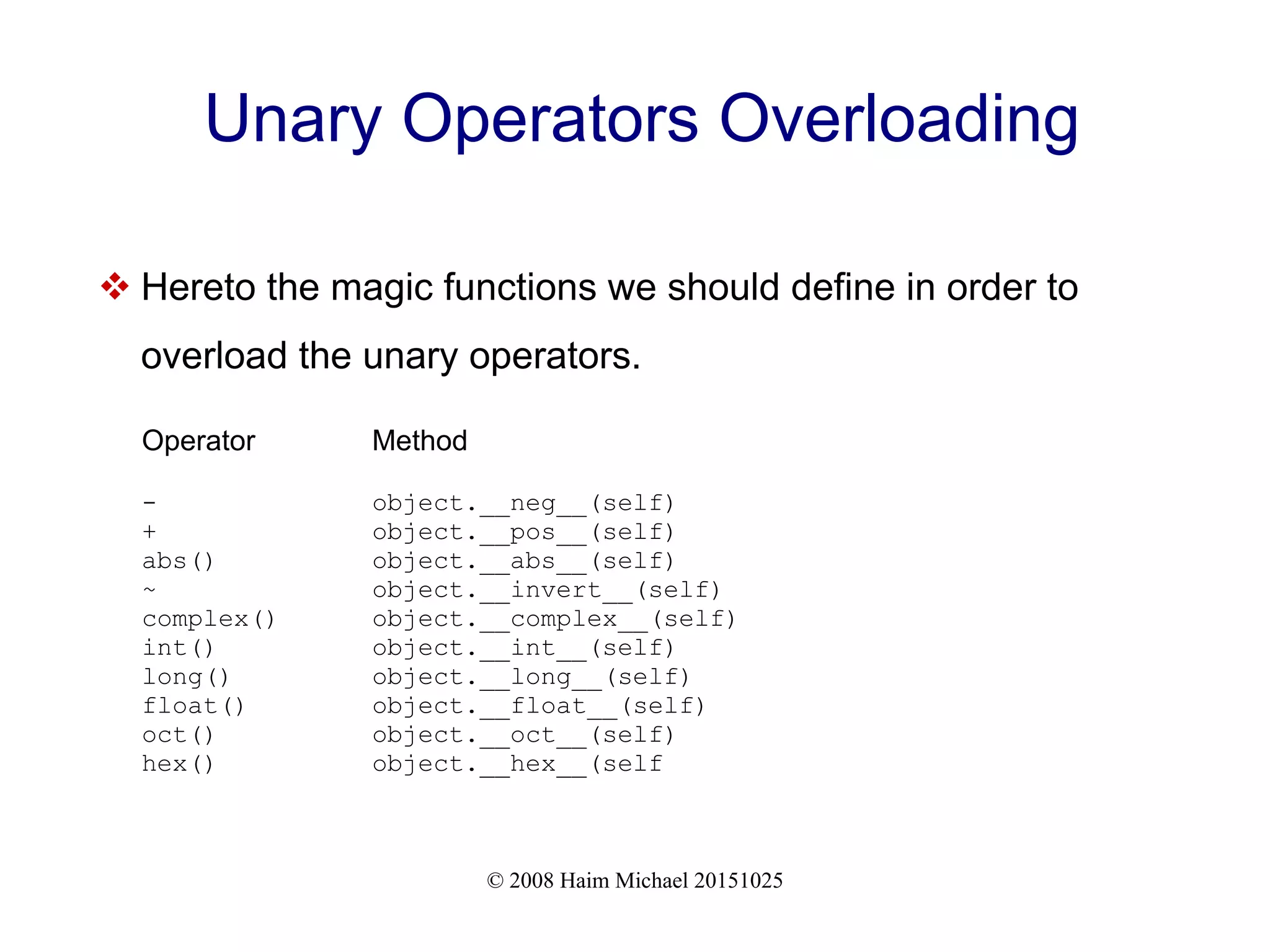
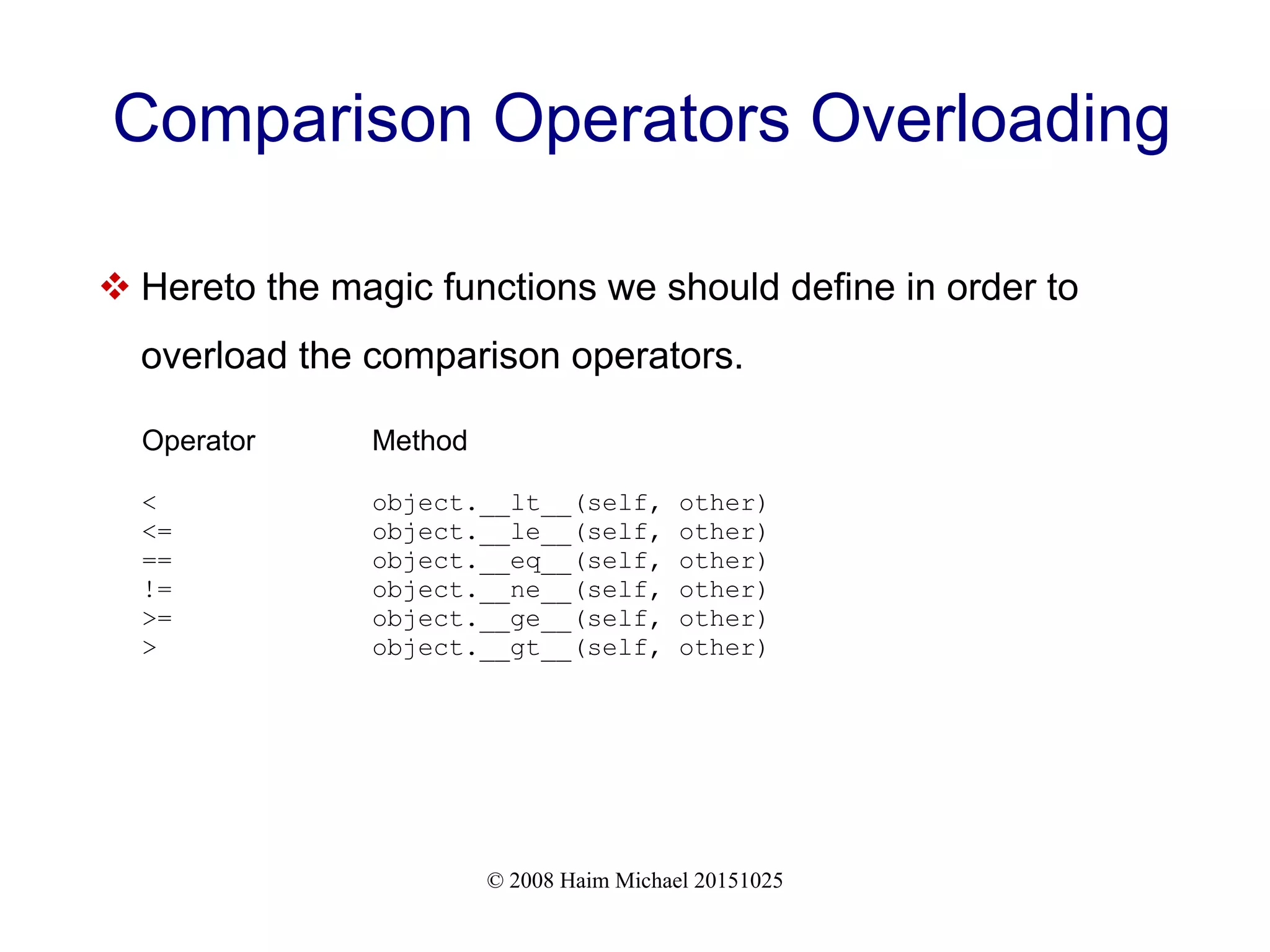
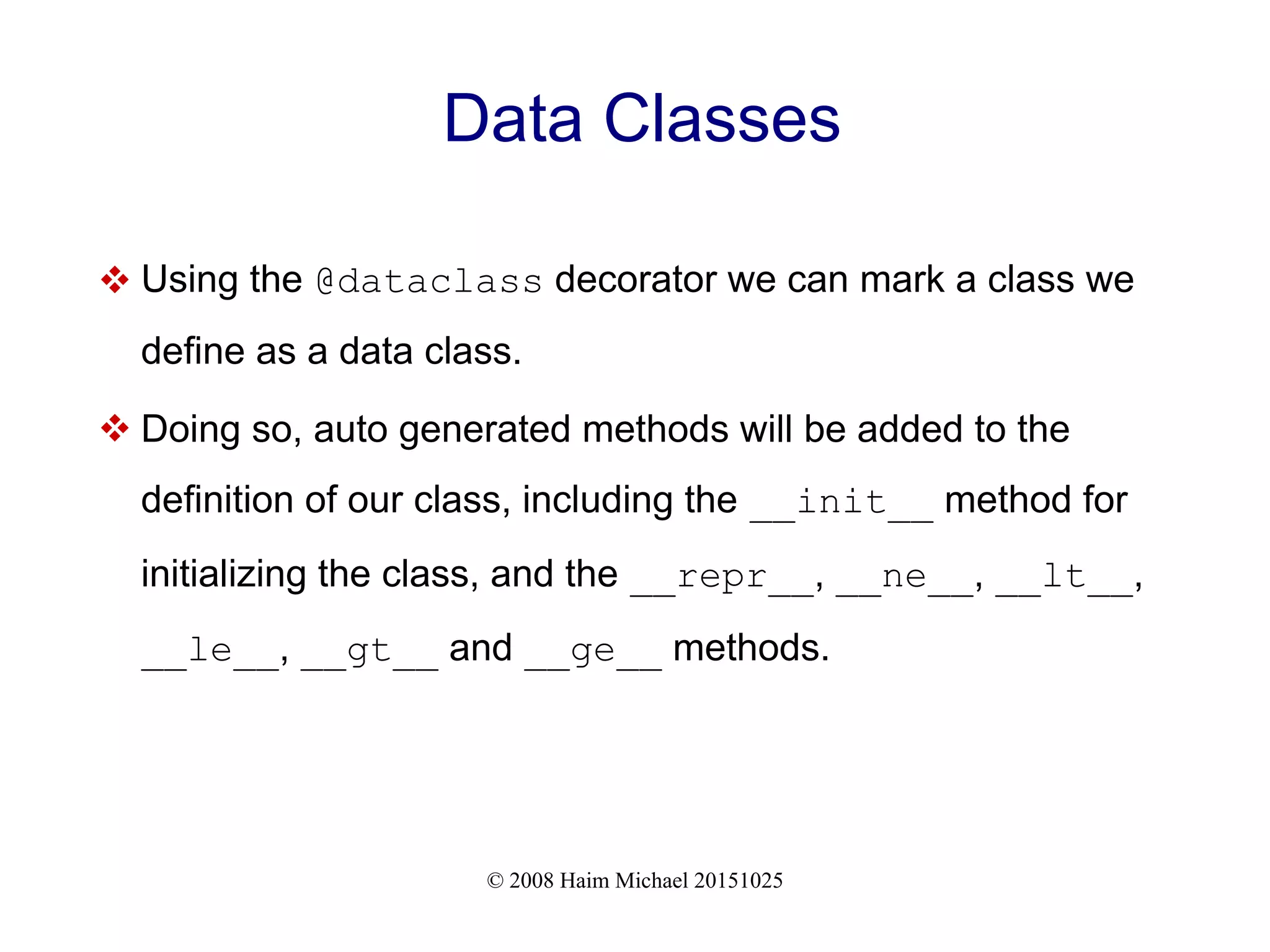
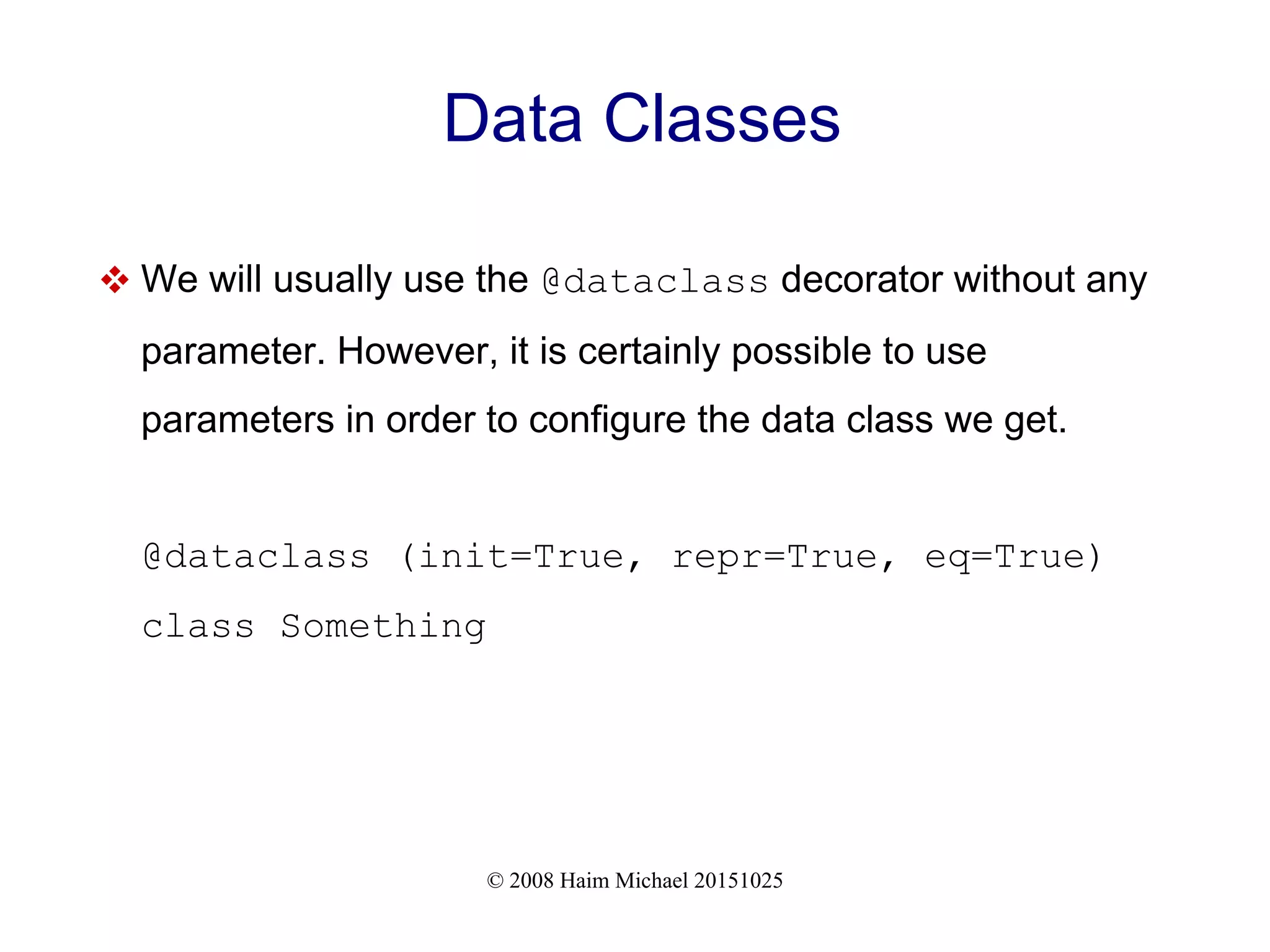
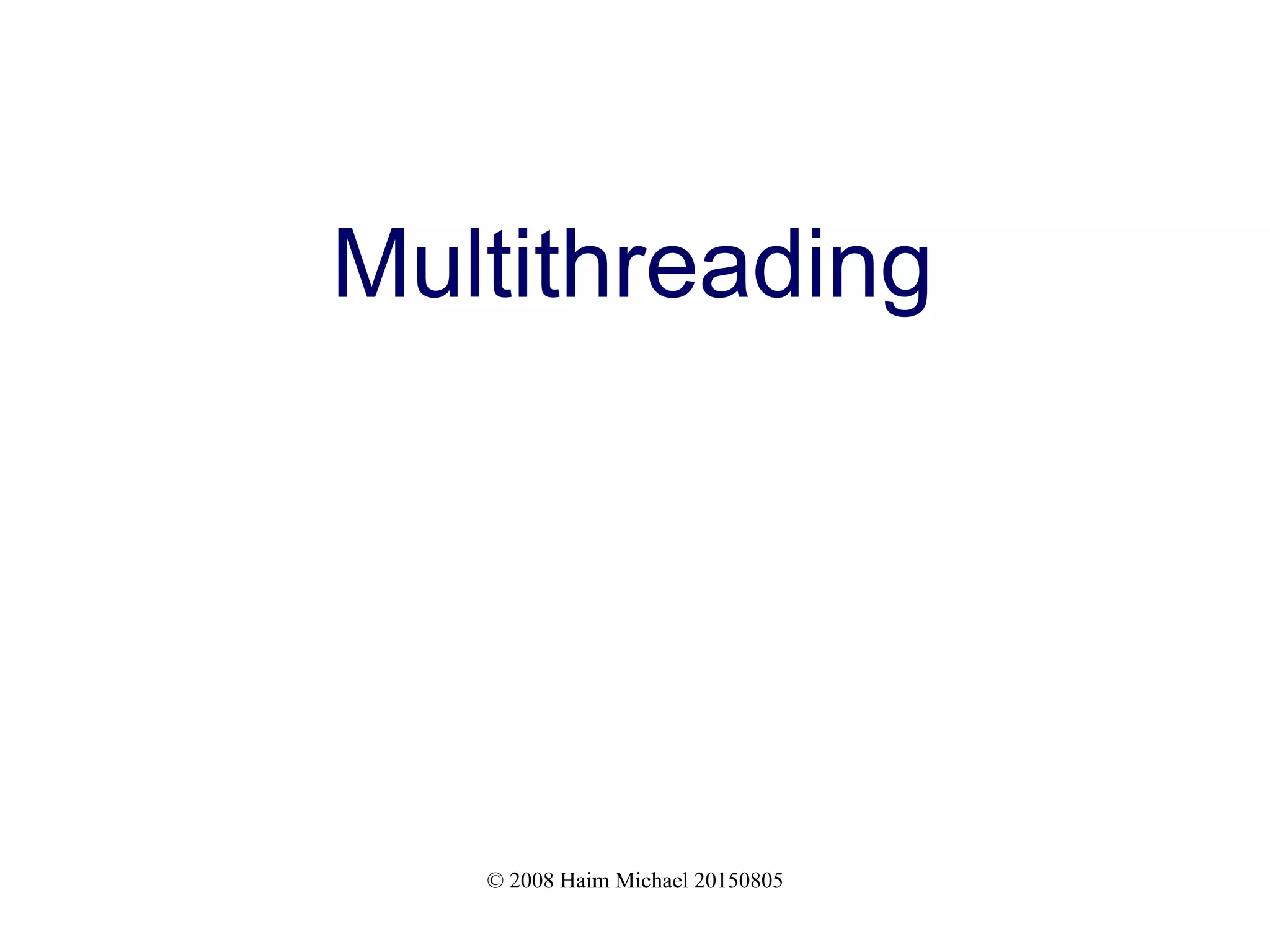
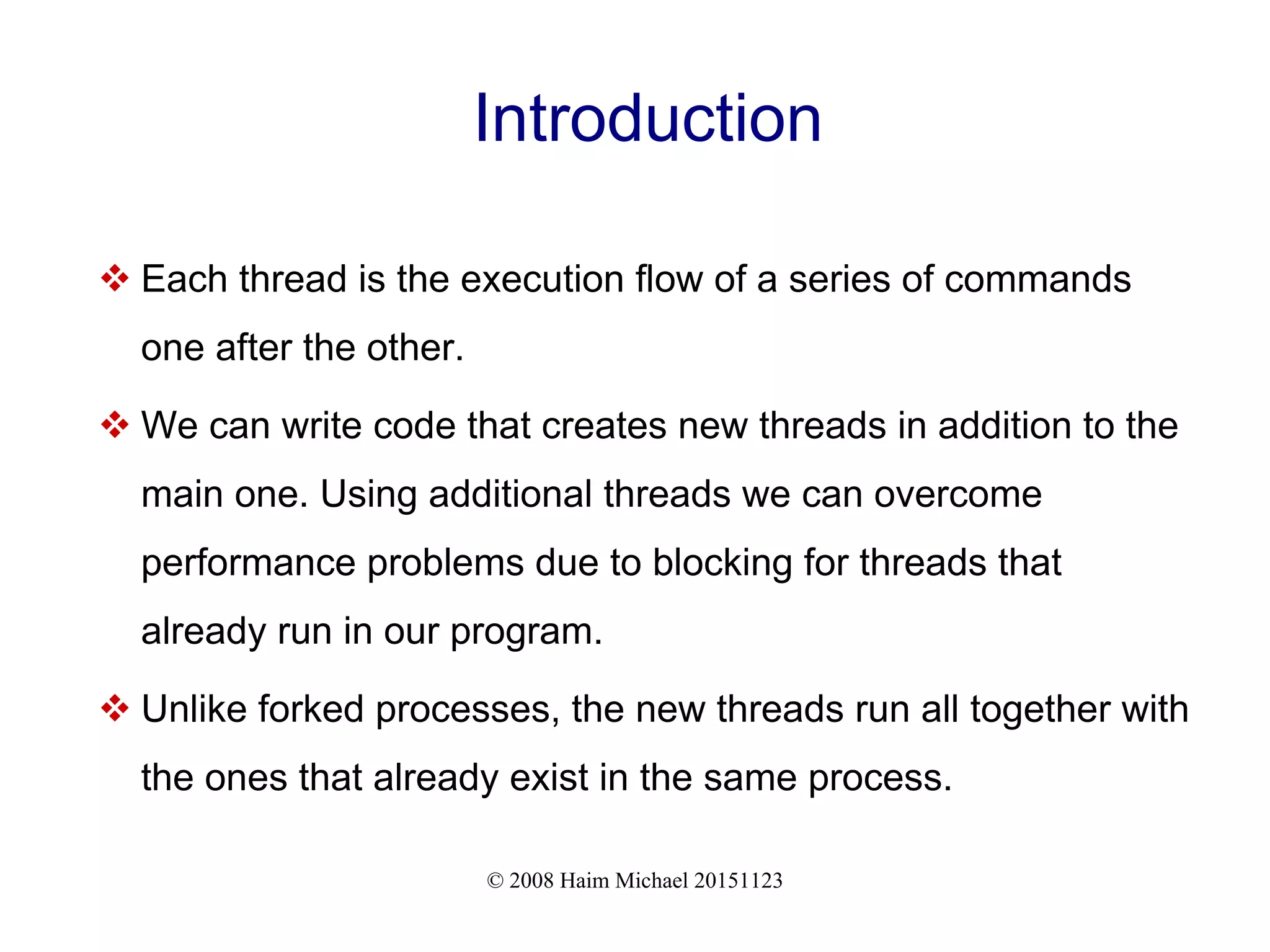
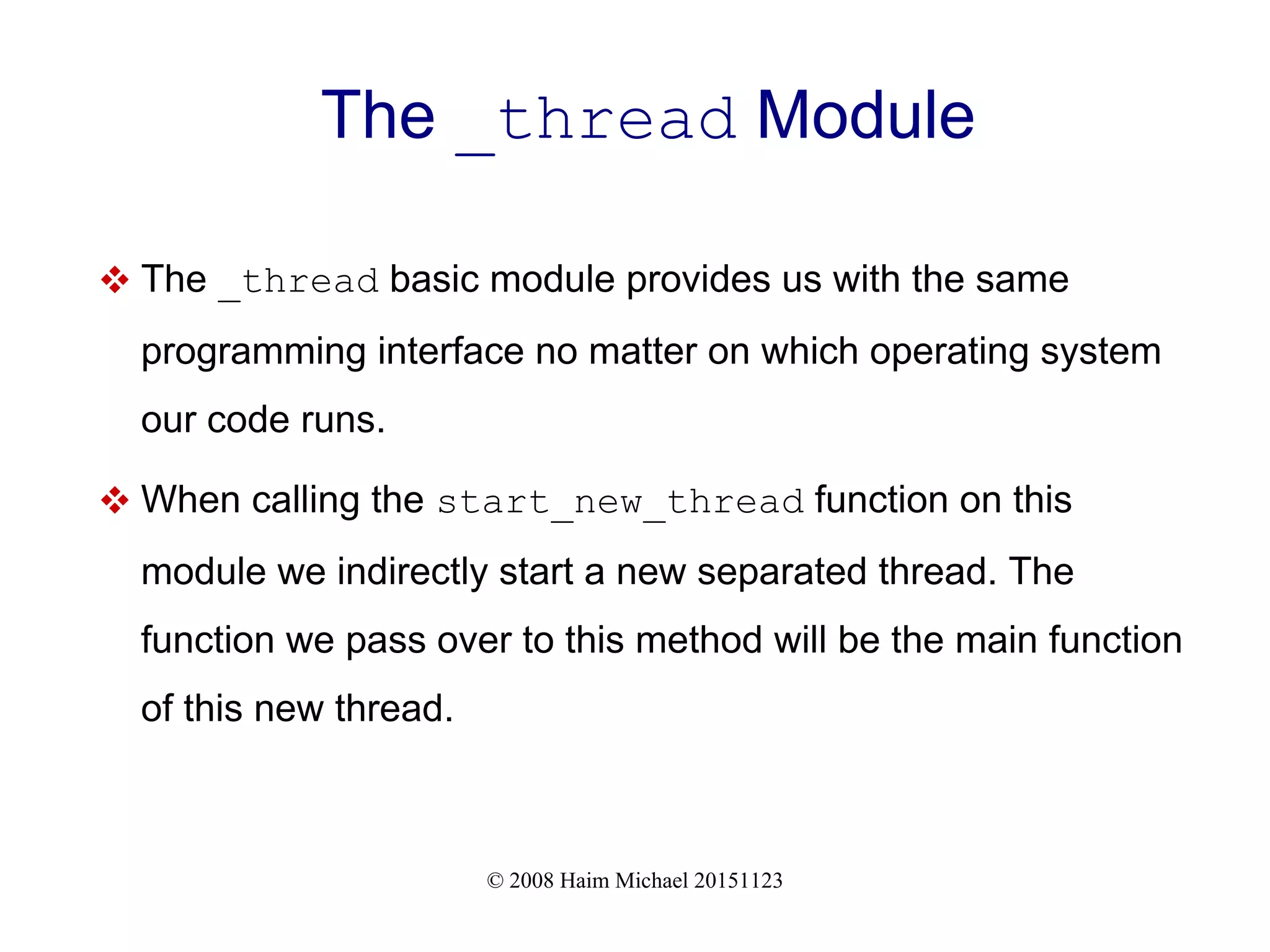
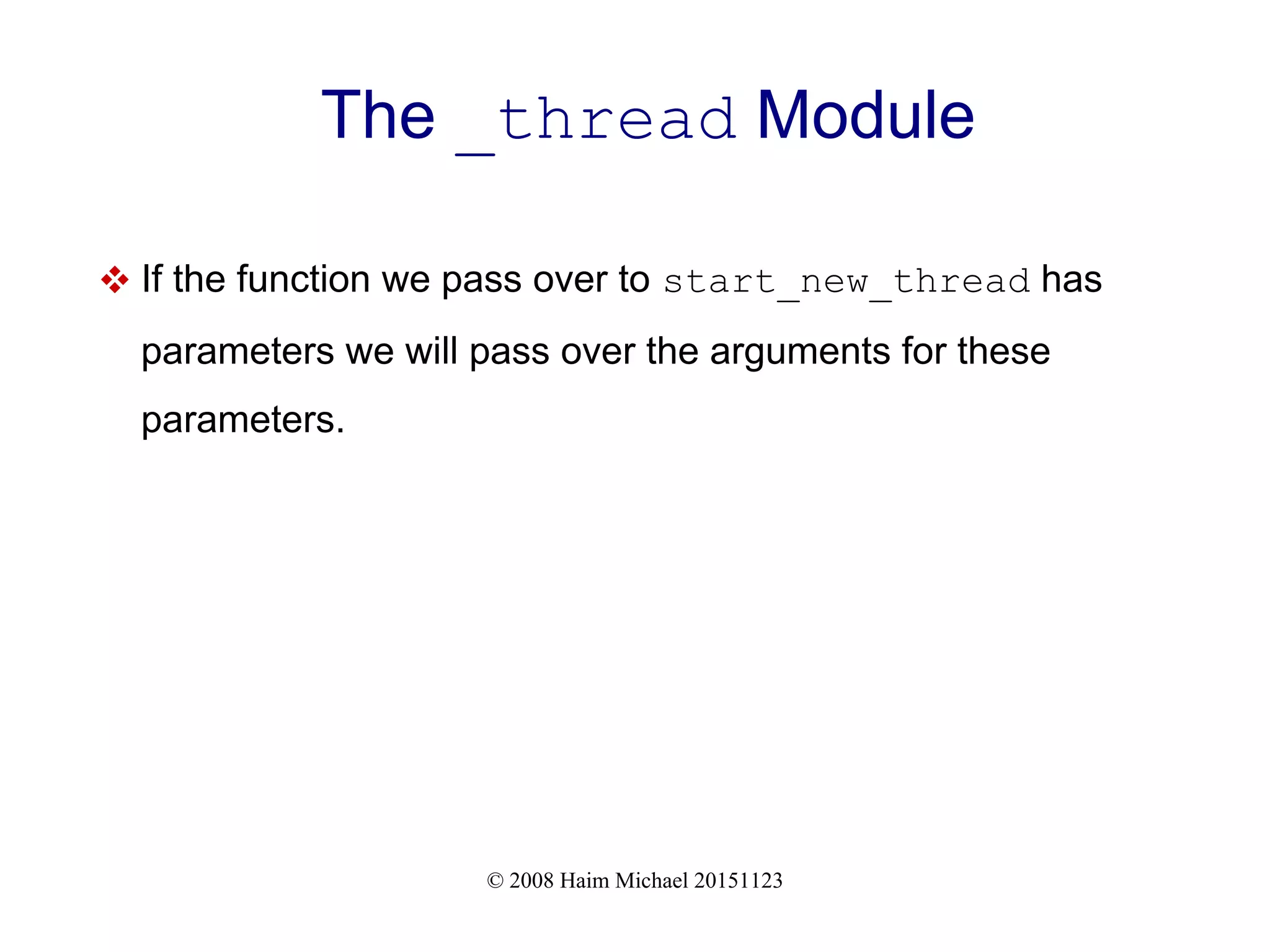
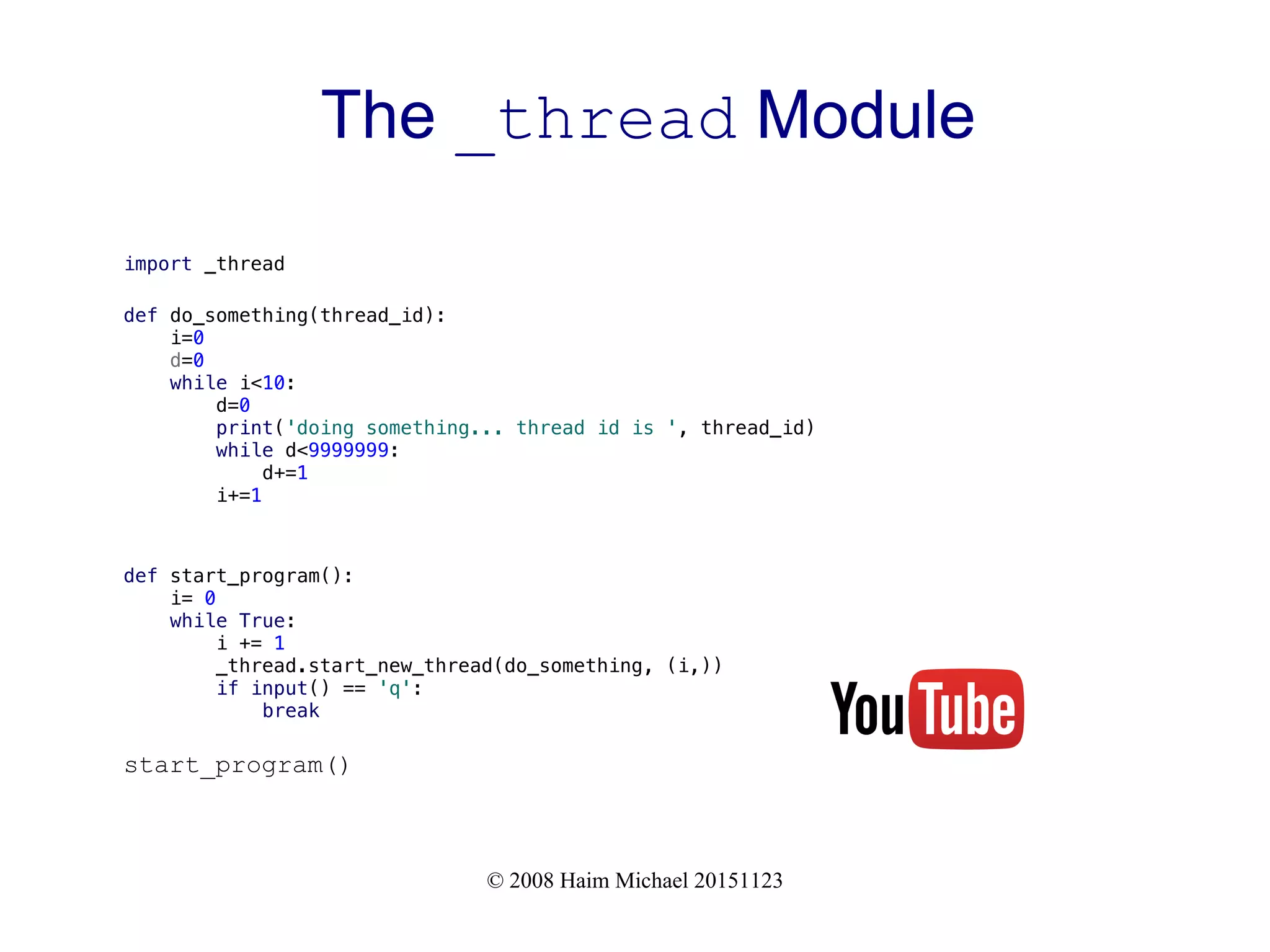
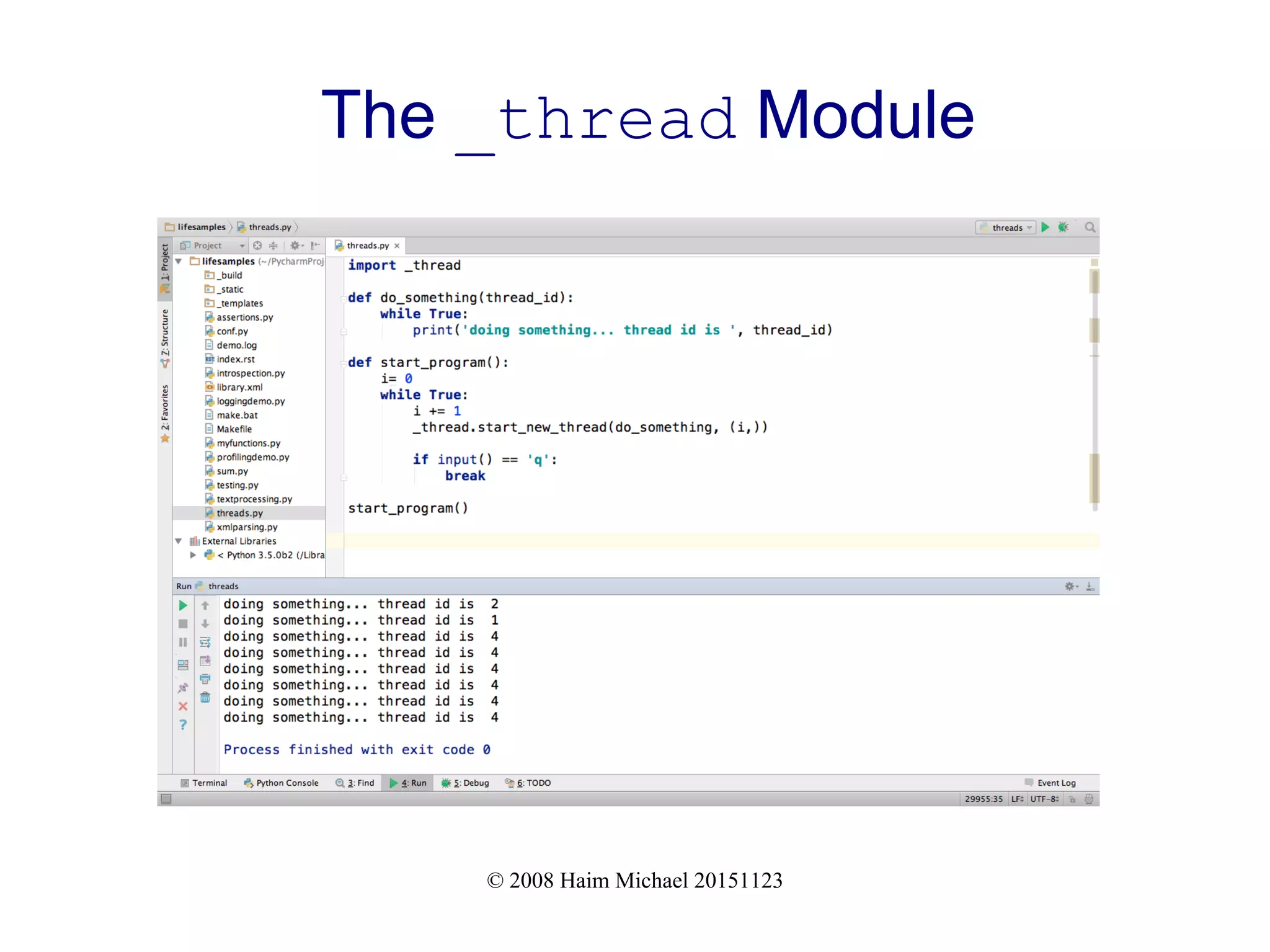
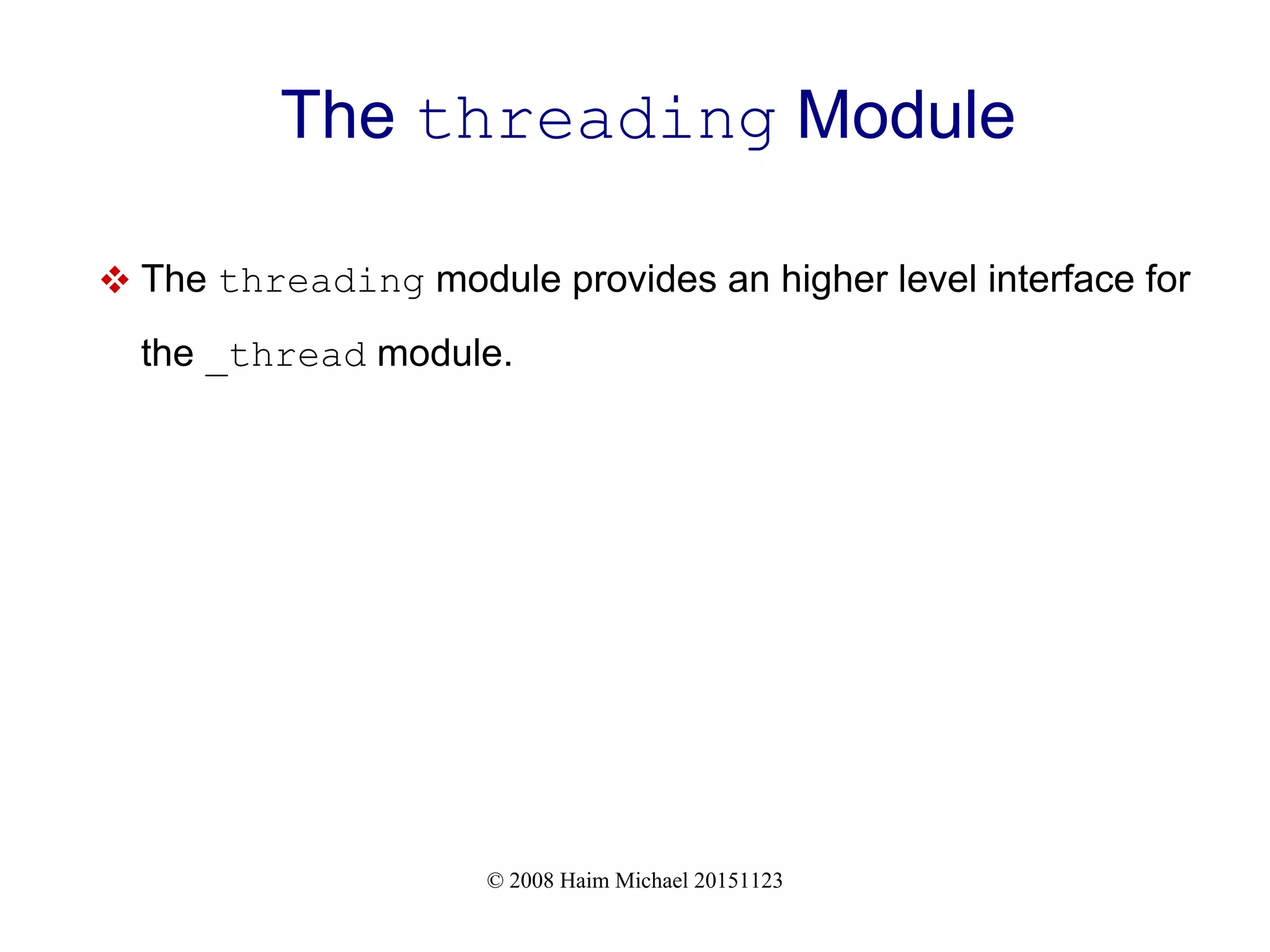
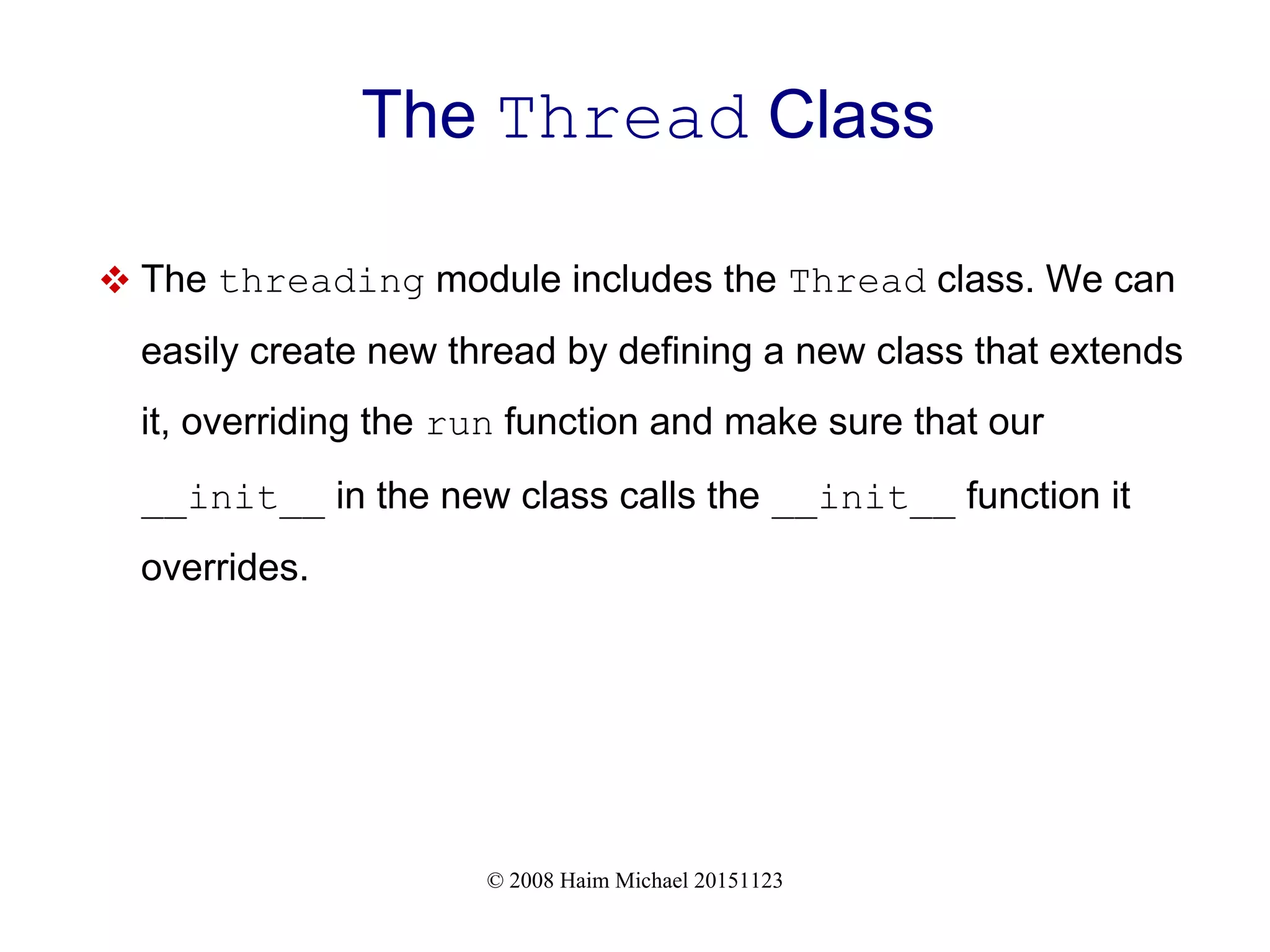
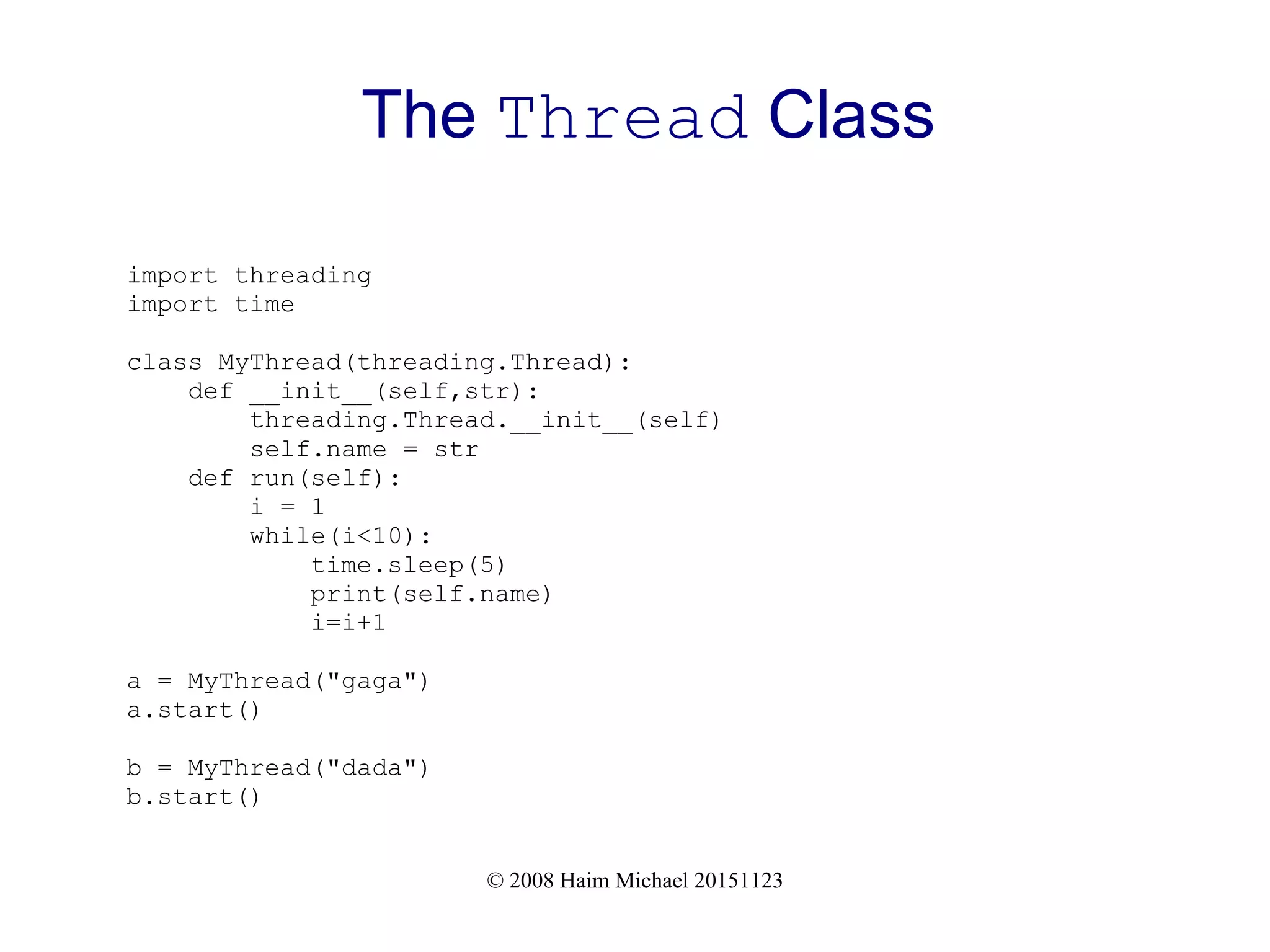
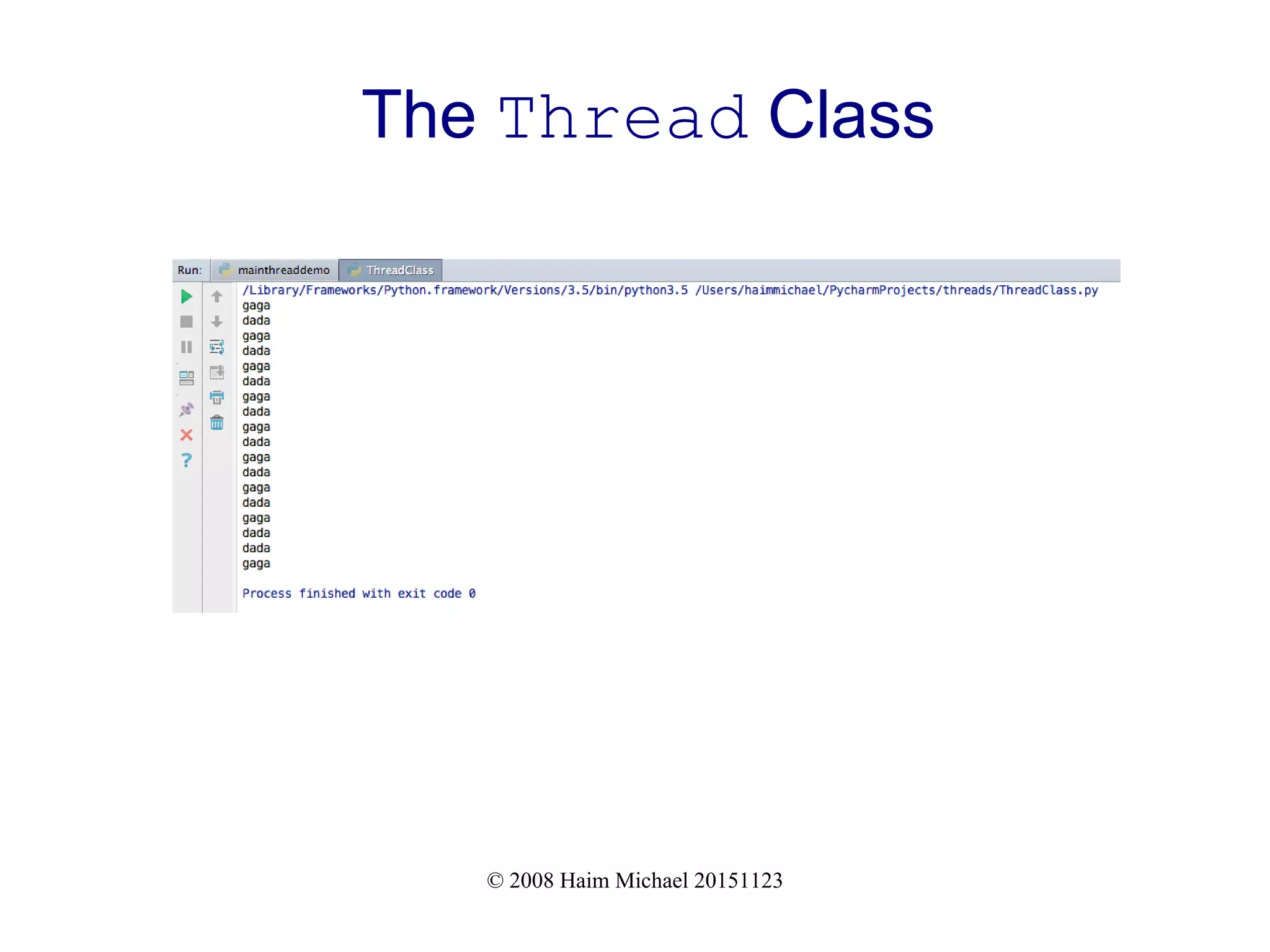
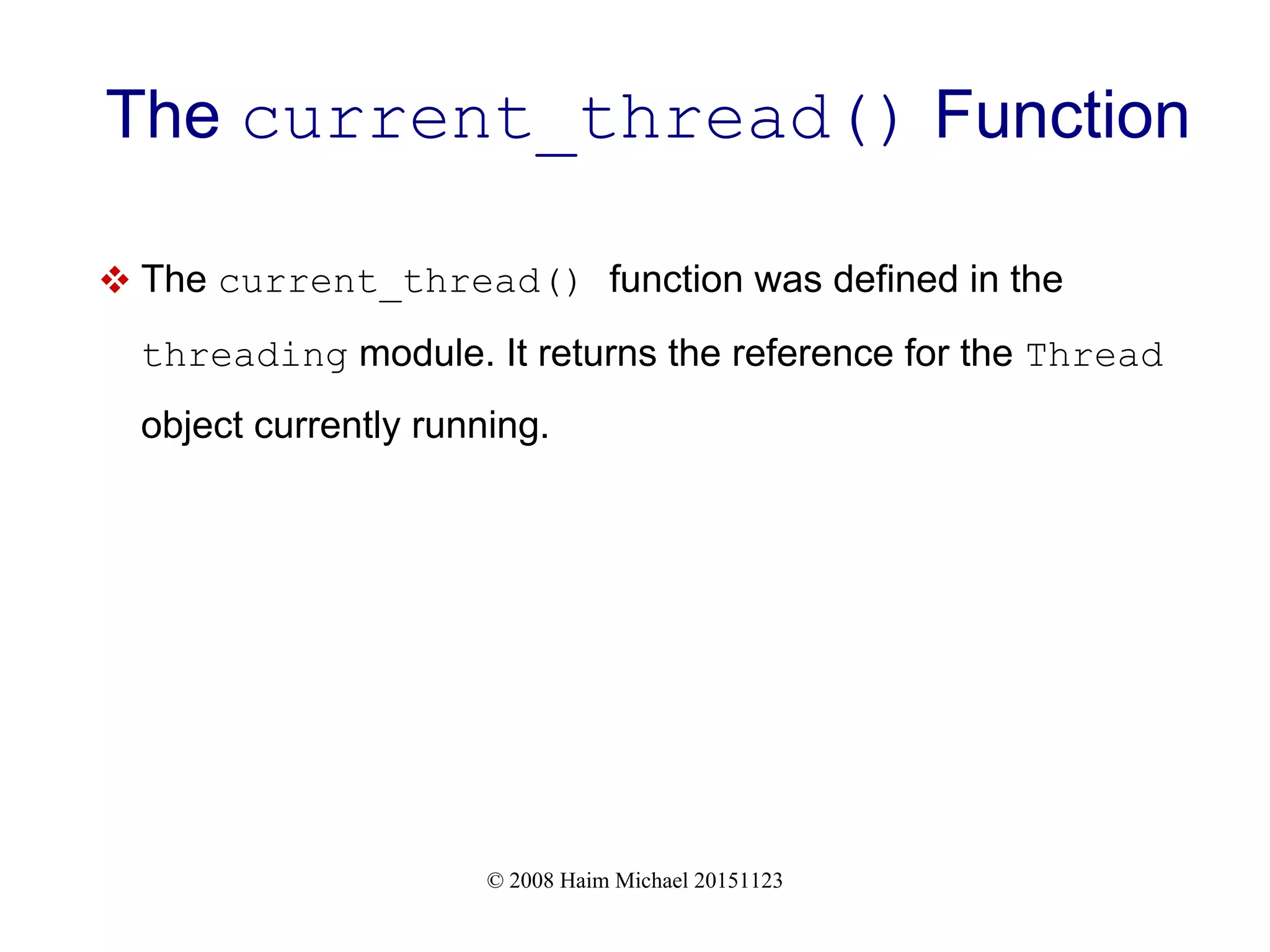
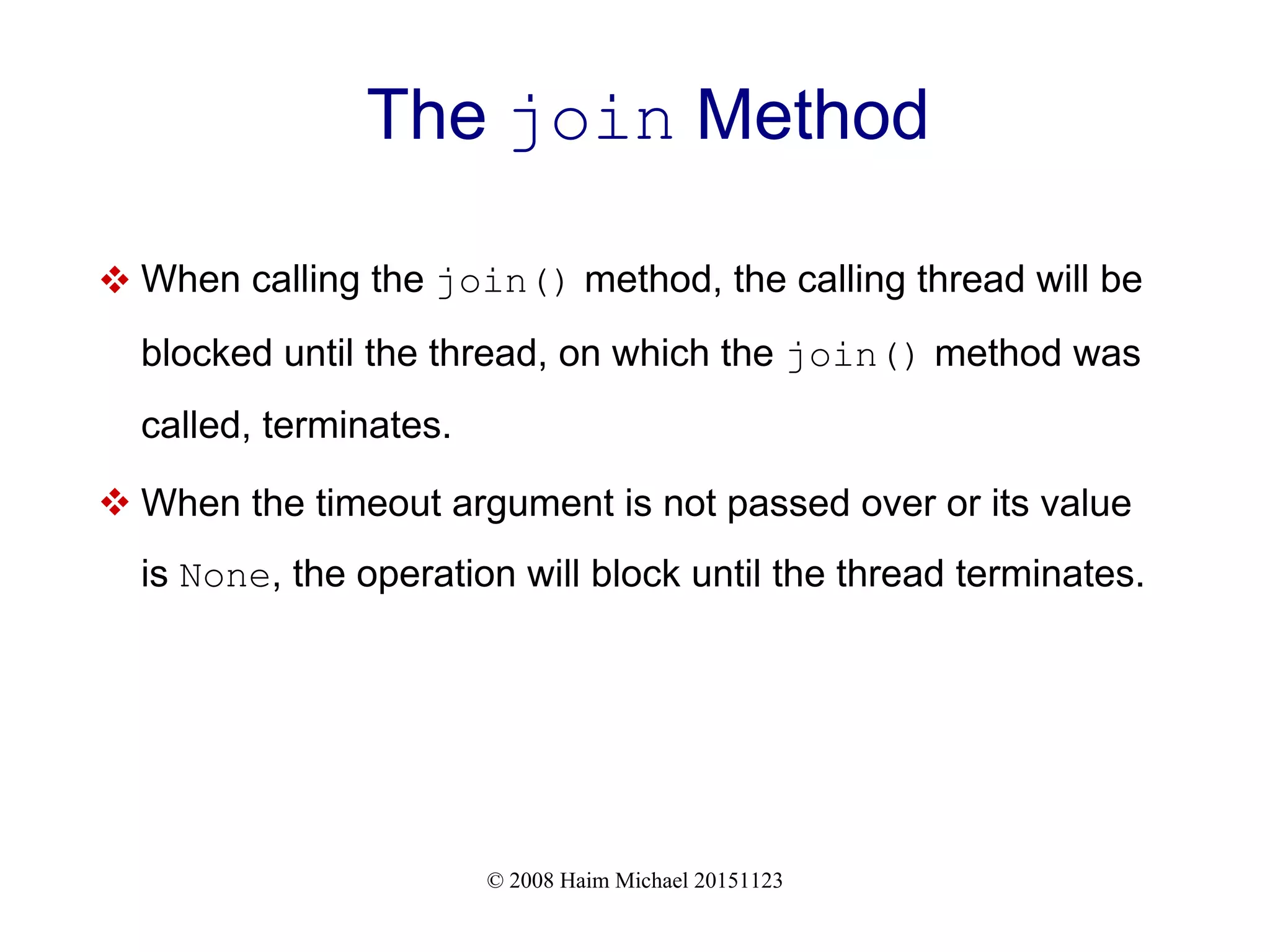
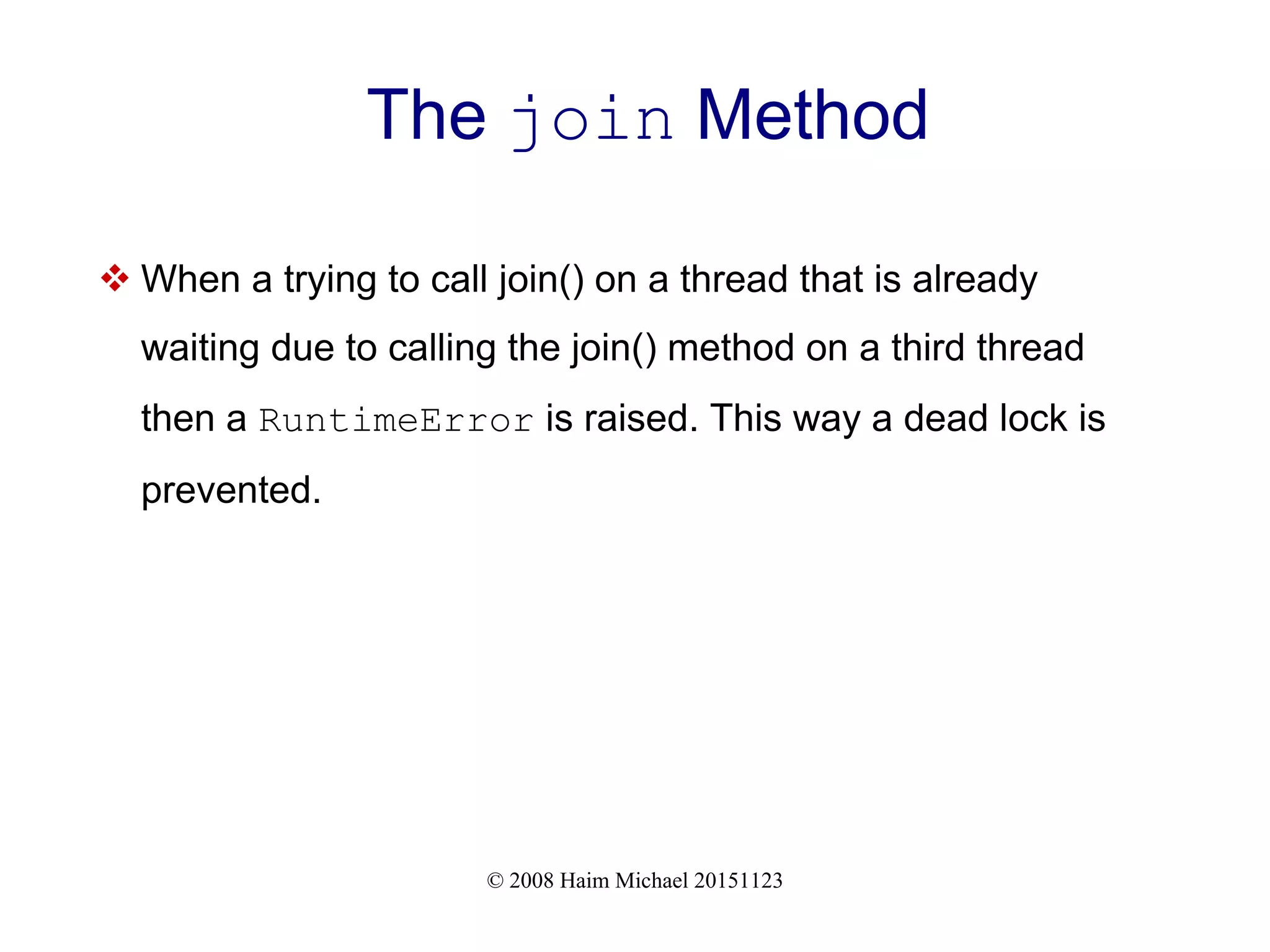
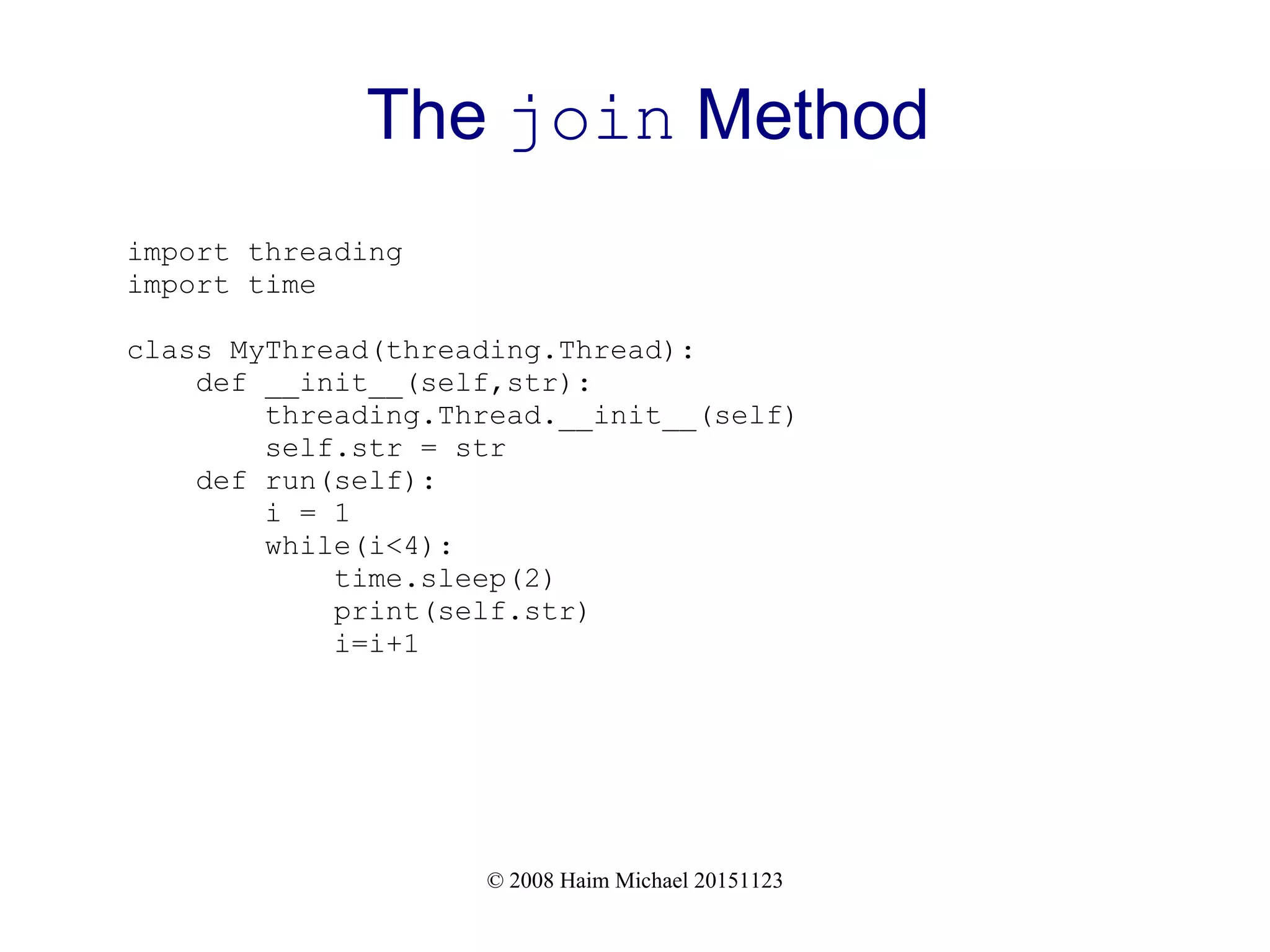
![© 2008 Haim Michael 20151123 The join Method a = MyThread("gaga") a.start() b = MyThread("mama") b.start() for i in [1,2,3]: print("main thread") time.sleep(1) print("a.join()") a.join() print("b.join()") b.join() for tav in ['a','b','c','d']: time.sleep(1) print(tav)](https://image.slidesharecdn.com/programminginpythononsteroidsxxl20210225-210227210338/75/Programming-in-Python-on-Steroid-152-2048.jpg)

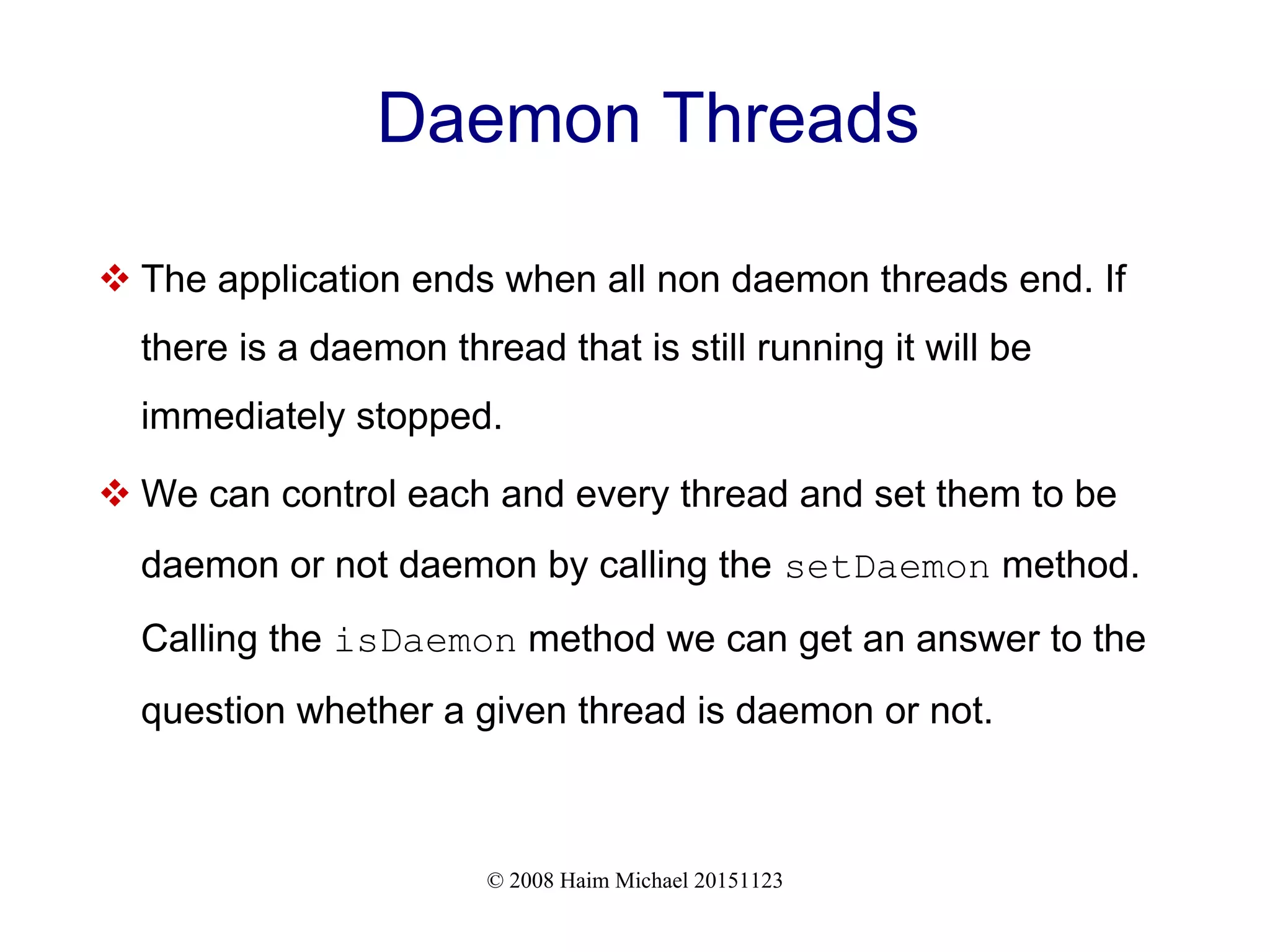
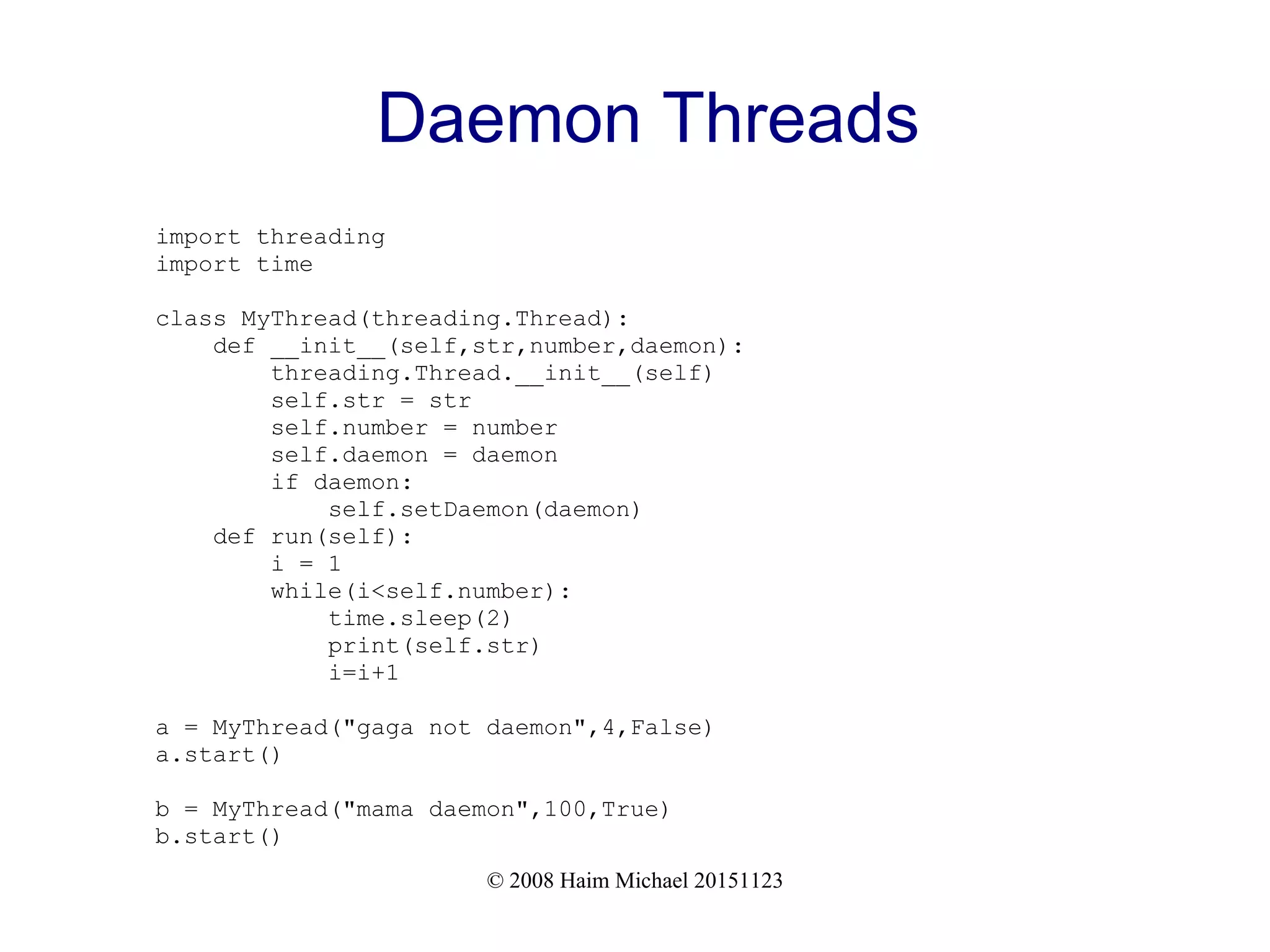
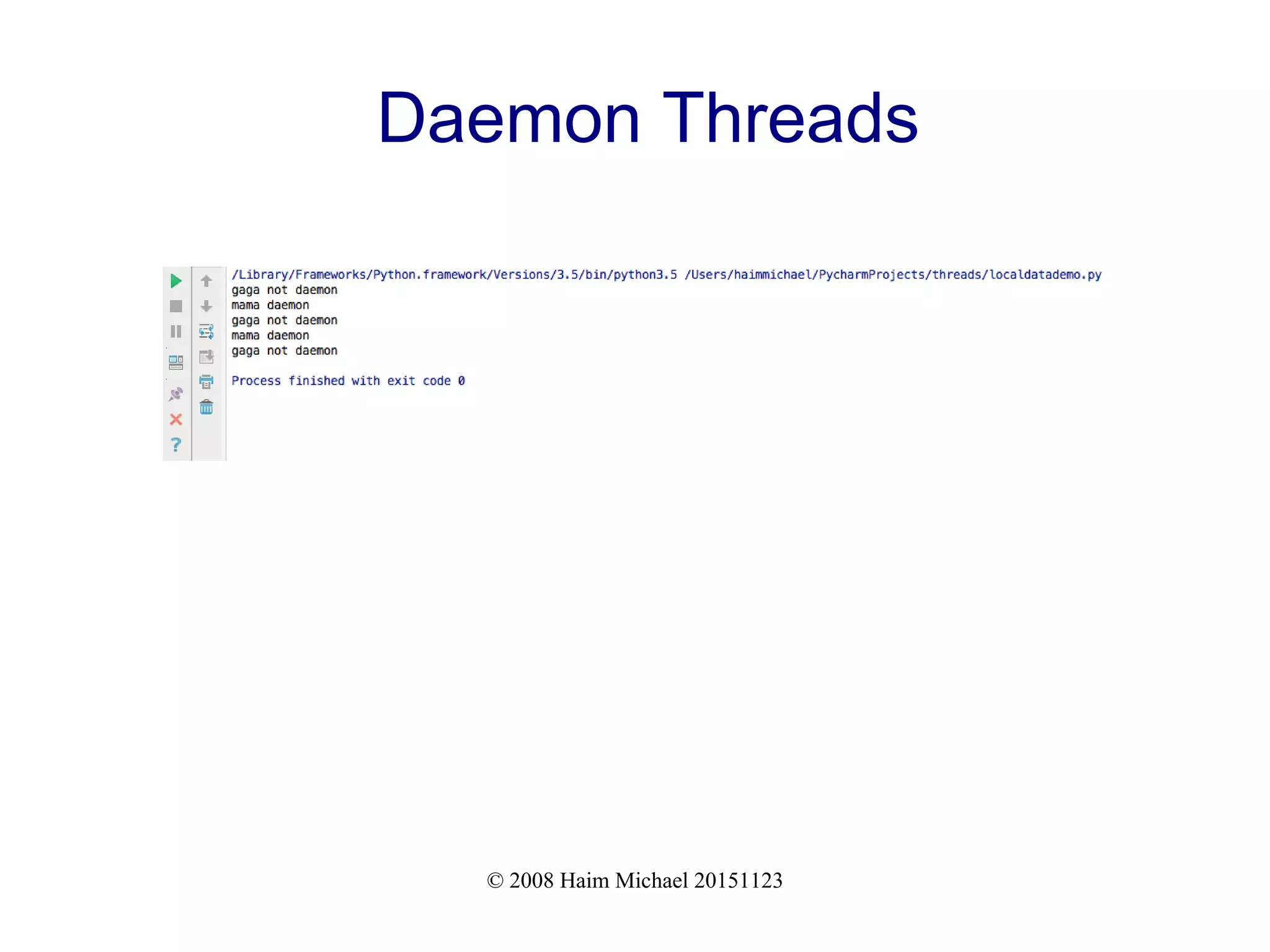
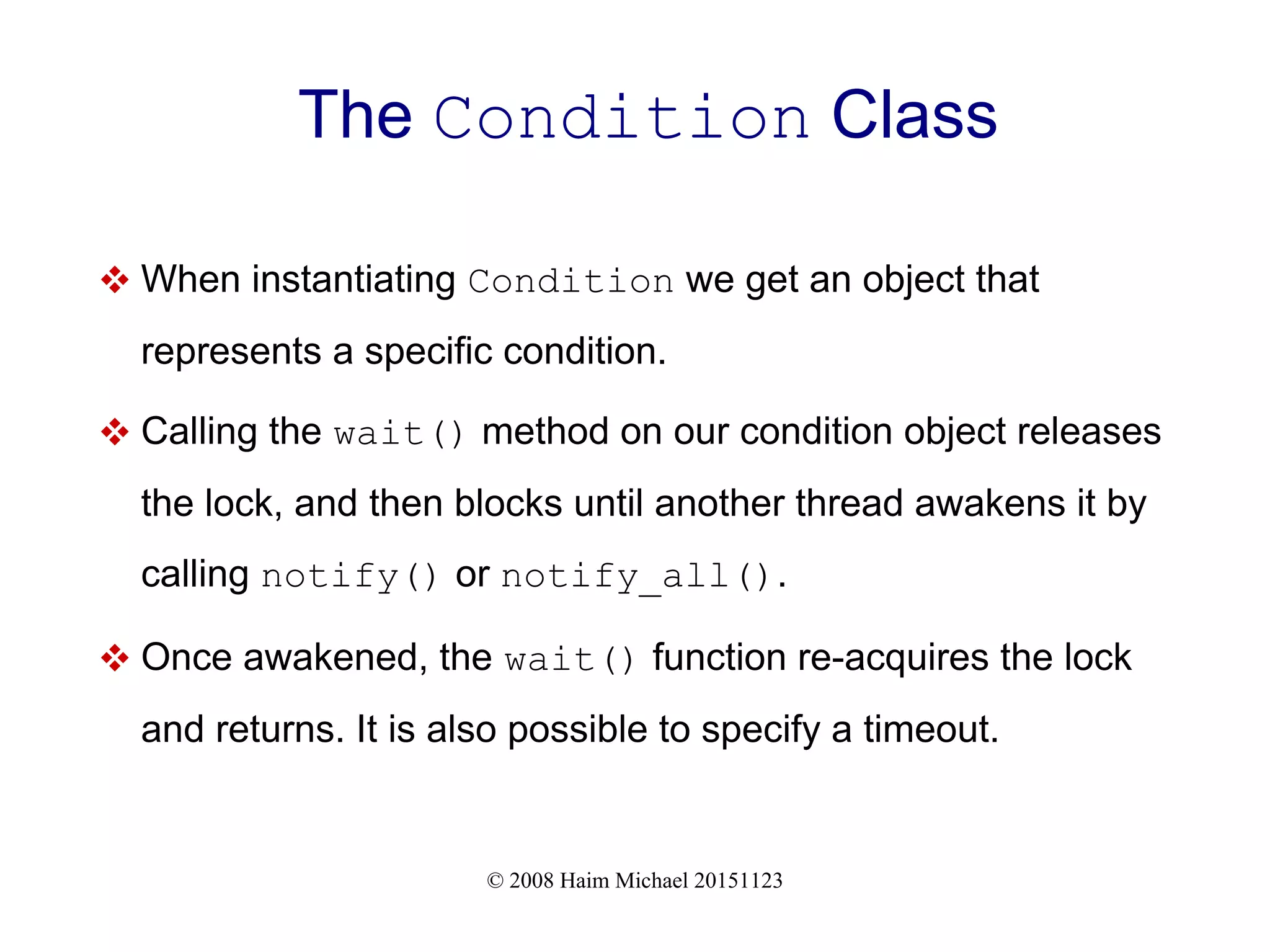
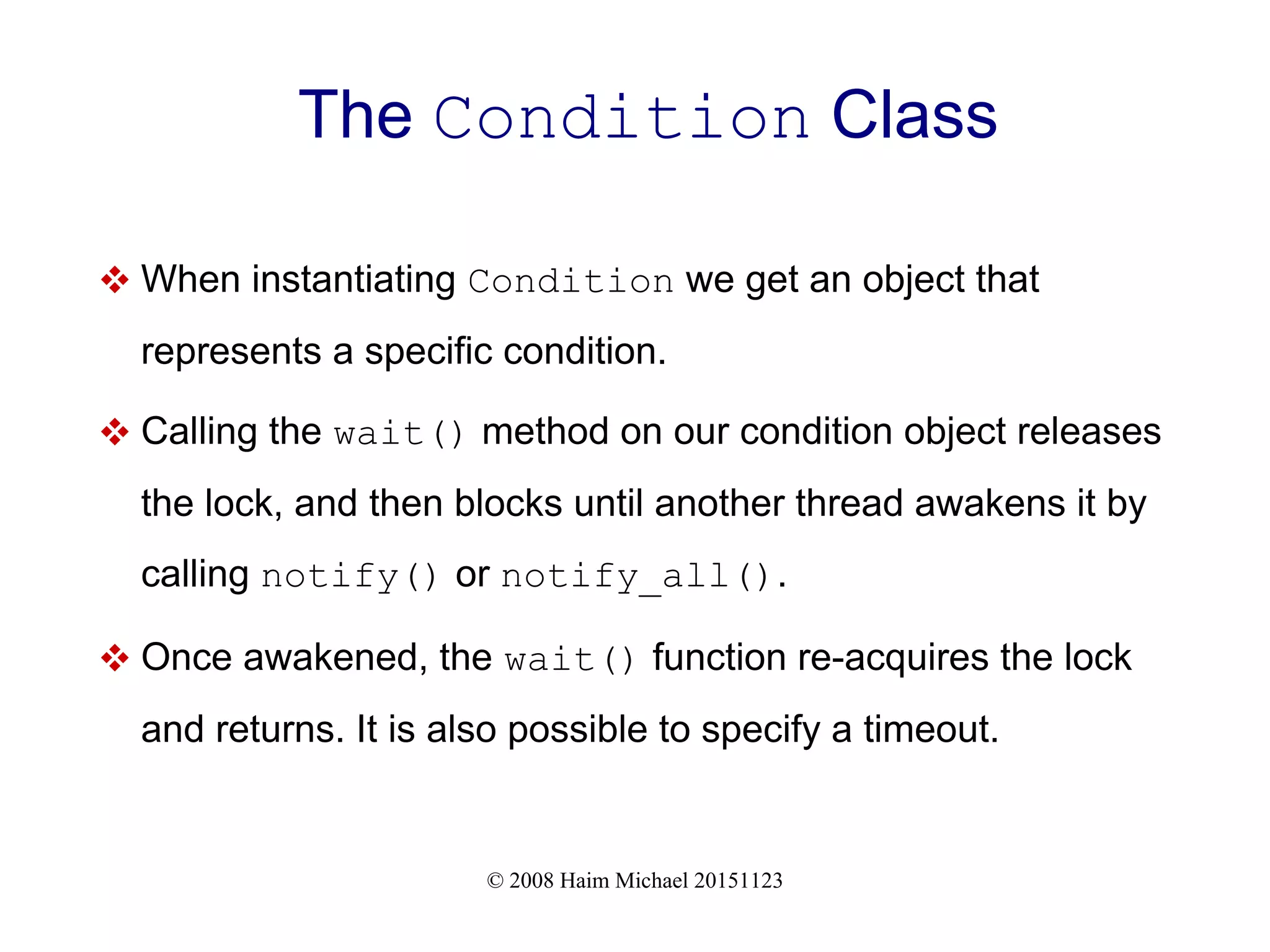
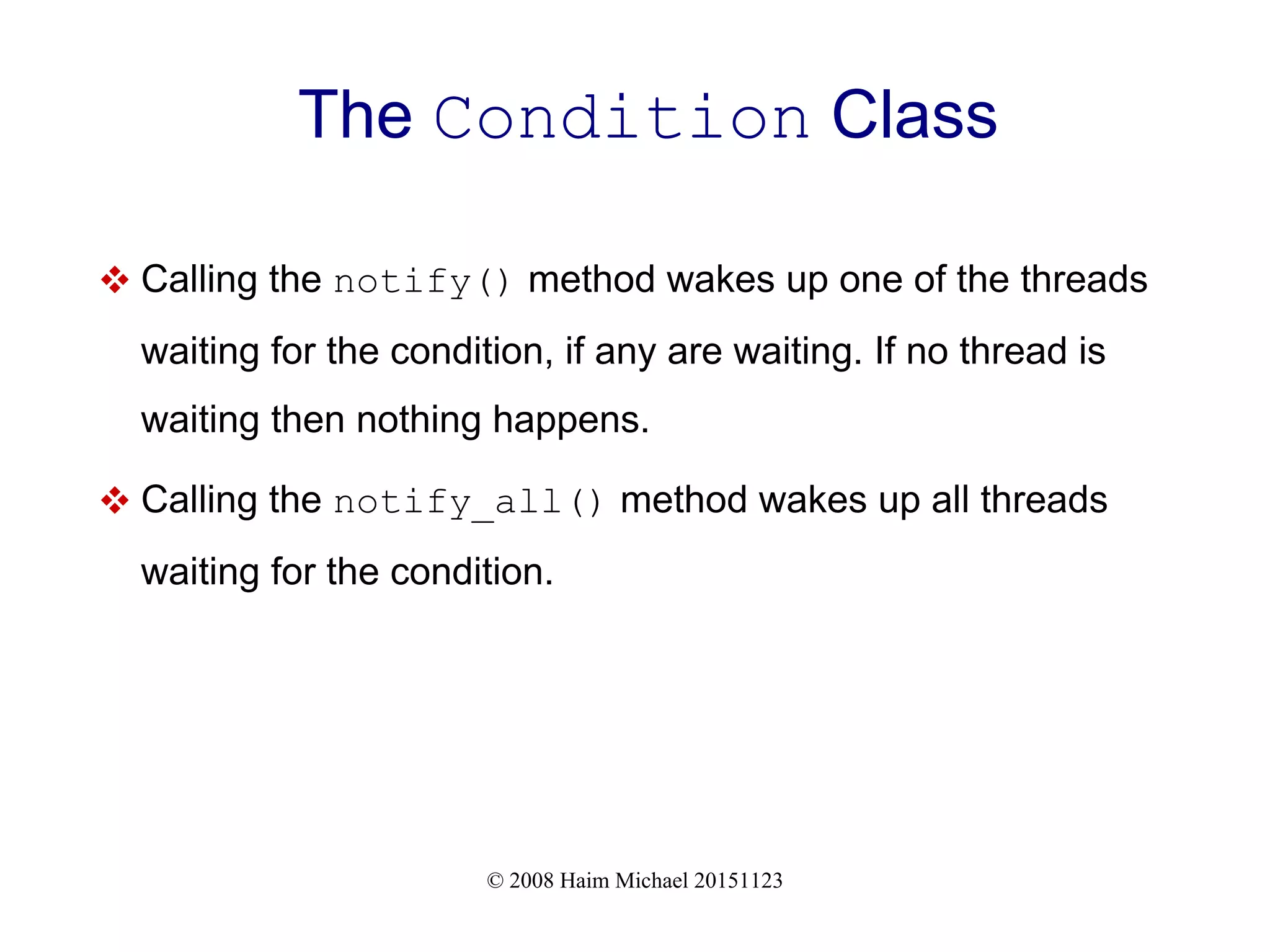
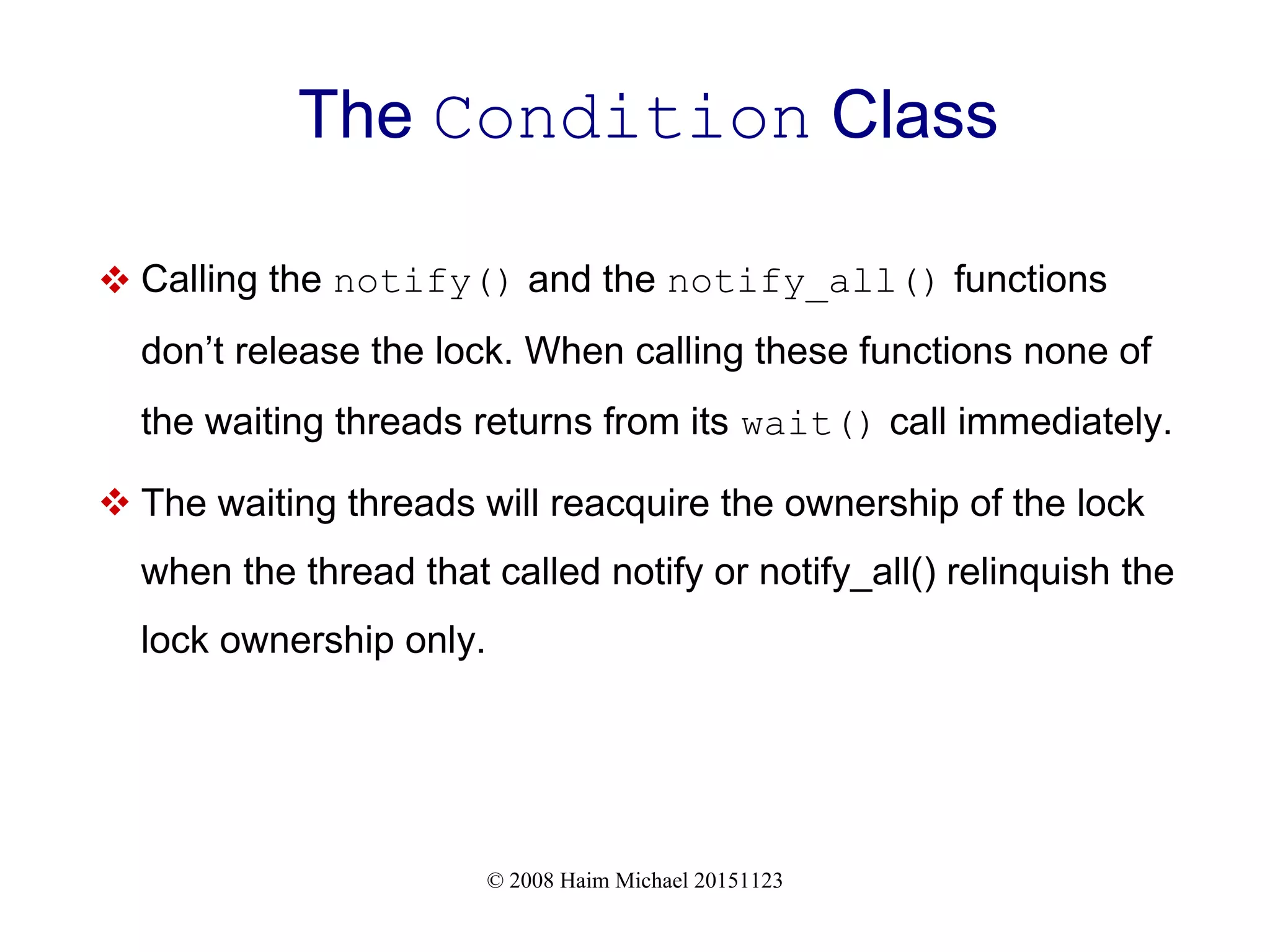
![© 2008 Haim Michael 20151123 The Condition Class import threading import time class MyStack: def __init__(self): self.list = [] self.index = 0 self.empty = threading.Condition() def push(self,number): self.empty.acquire() print("inside push ... calling notify()") self.empty.notify() self.list.append(number) print("inside push, number was added ... ",self.list) self.index += 1 self.empty.release()](https://image.slidesharecdn.com/programminginpythononsteroidsxxl20210225-210227210338/75/Programming-in-Python-on-Steroid-161-2048.jpg)
![© 2008 Haim Michael 20151123 The Condition Class def pop(self): self.empty.acquire() print("inside pop ... checking if index==0") while self.index==0: self.empty.wait() print("inside pop ... calling wait()") self.index -= 1 print("inside pop, number was removed ... ",self.list) self.empty.release() return self.list.pop(self.index) class Producer(threading.Thread): def __init__(self,stack): threading.Thread.__init__(self) self.stack = stack def run(self): for num in [12,33,52,54,56,15,200]: self.stack.push(num) time.sleep(4)](https://image.slidesharecdn.com/programminginpythononsteroidsxxl20210225-210227210338/75/Programming-in-Python-on-Steroid-162-2048.jpg)
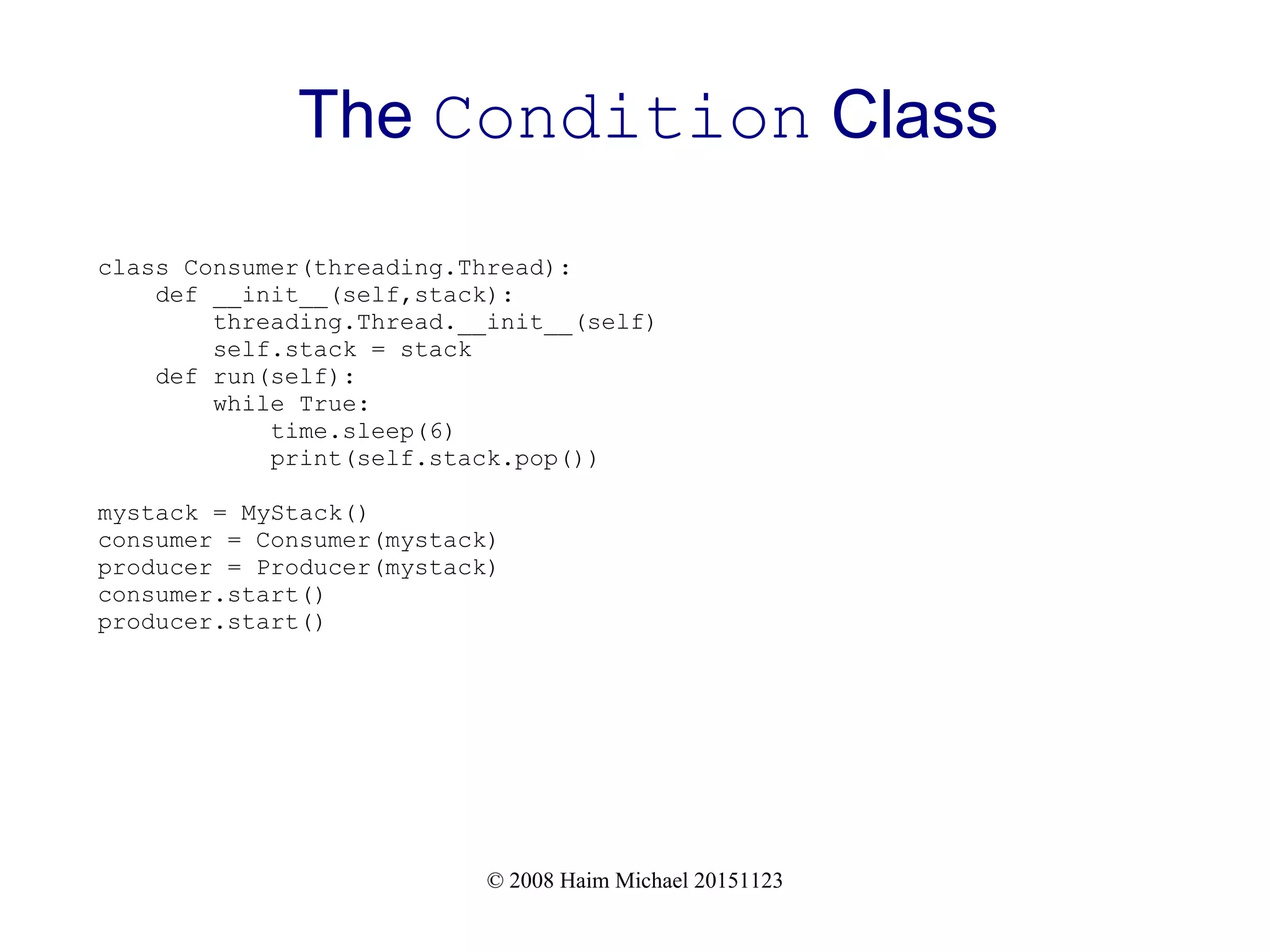
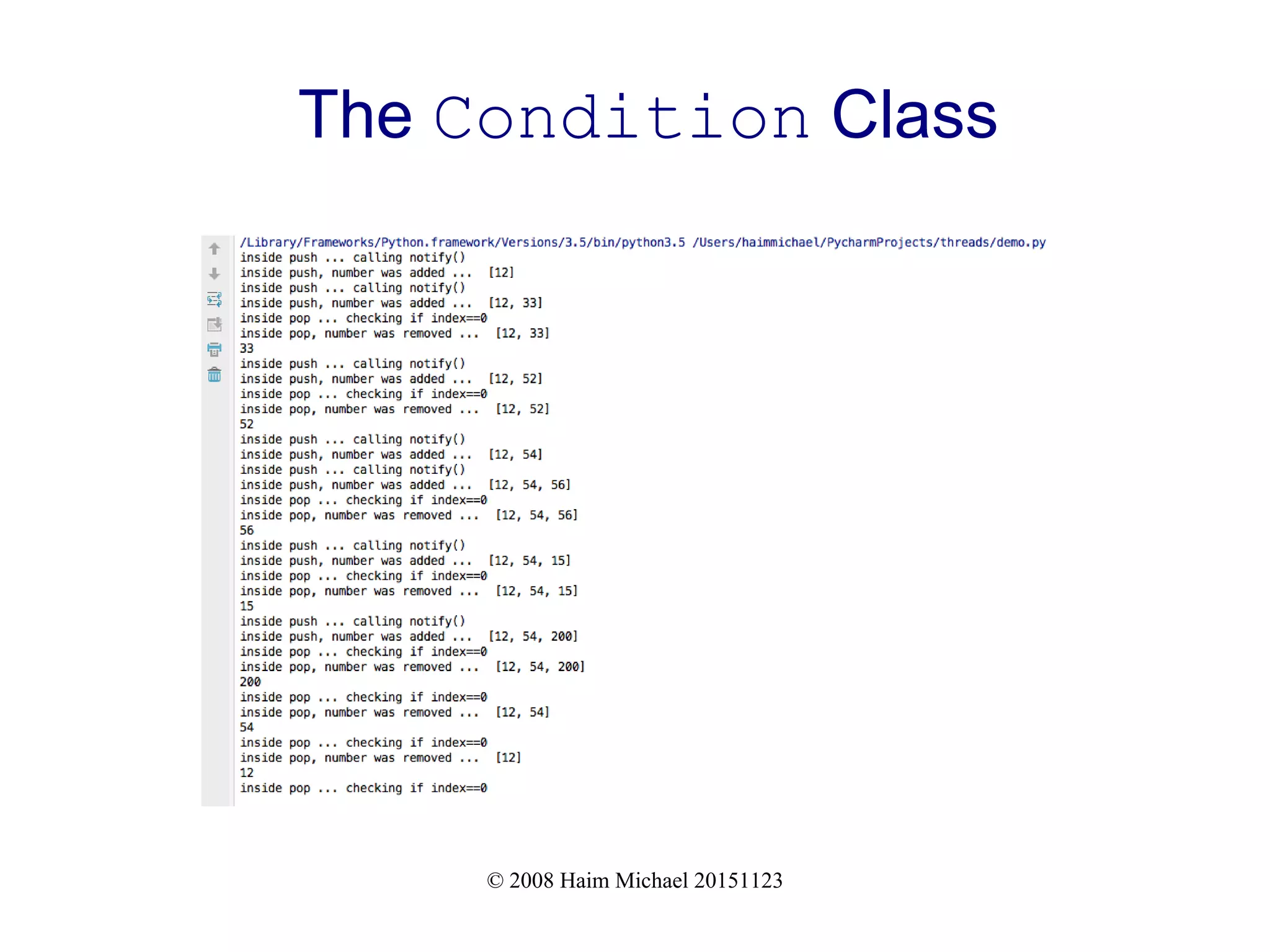
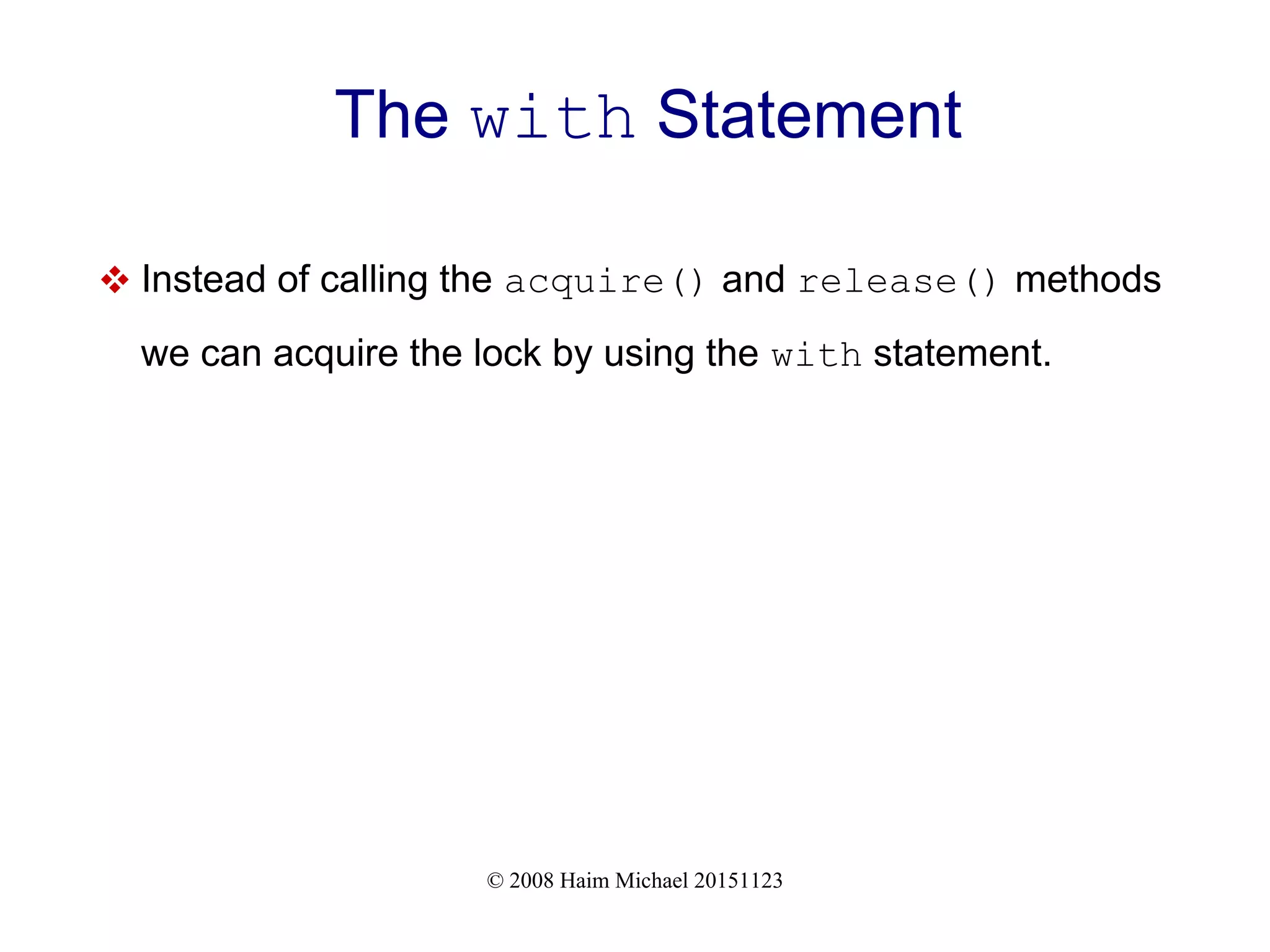
![© 2008 Haim Michael 20151123 The with Statement import threading import time class MyStack: def __init__(self): self.list = [] self.index = 0 self.empty = threading.Condition() def push(self,number): with self.empty: print("inside push ... calling notify()") self.empty.notify() self.list.append(number) print("inside push, number was added ... ",self.list) self.index += 1](https://image.slidesharecdn.com/programminginpythononsteroidsxxl20210225-210227210338/75/Programming-in-Python-on-Steroid-166-2048.jpg)
![© 2008 Haim Michael 20151123 The with Statement def pop(self): with self.empty: print("inside pop ... checking if index==0") while self.index==0: self.empty.wait() print("inside pop ... calling wait()") self.index -= 1 print("inside pop, number was removed ... ",self.list) return self.list.pop(self.index) class Producer(threading.Thread): def __init__(self,stack): threading.Thread.__init__(self) self.stack = stack def run(self): for num in [12,33,52,54,56,15,200]: self.stack.push(num) time.sleep(4)](https://image.slidesharecdn.com/programminginpythononsteroidsxxl20210225-210227210338/75/Programming-in-Python-on-Steroid-167-2048.jpg)
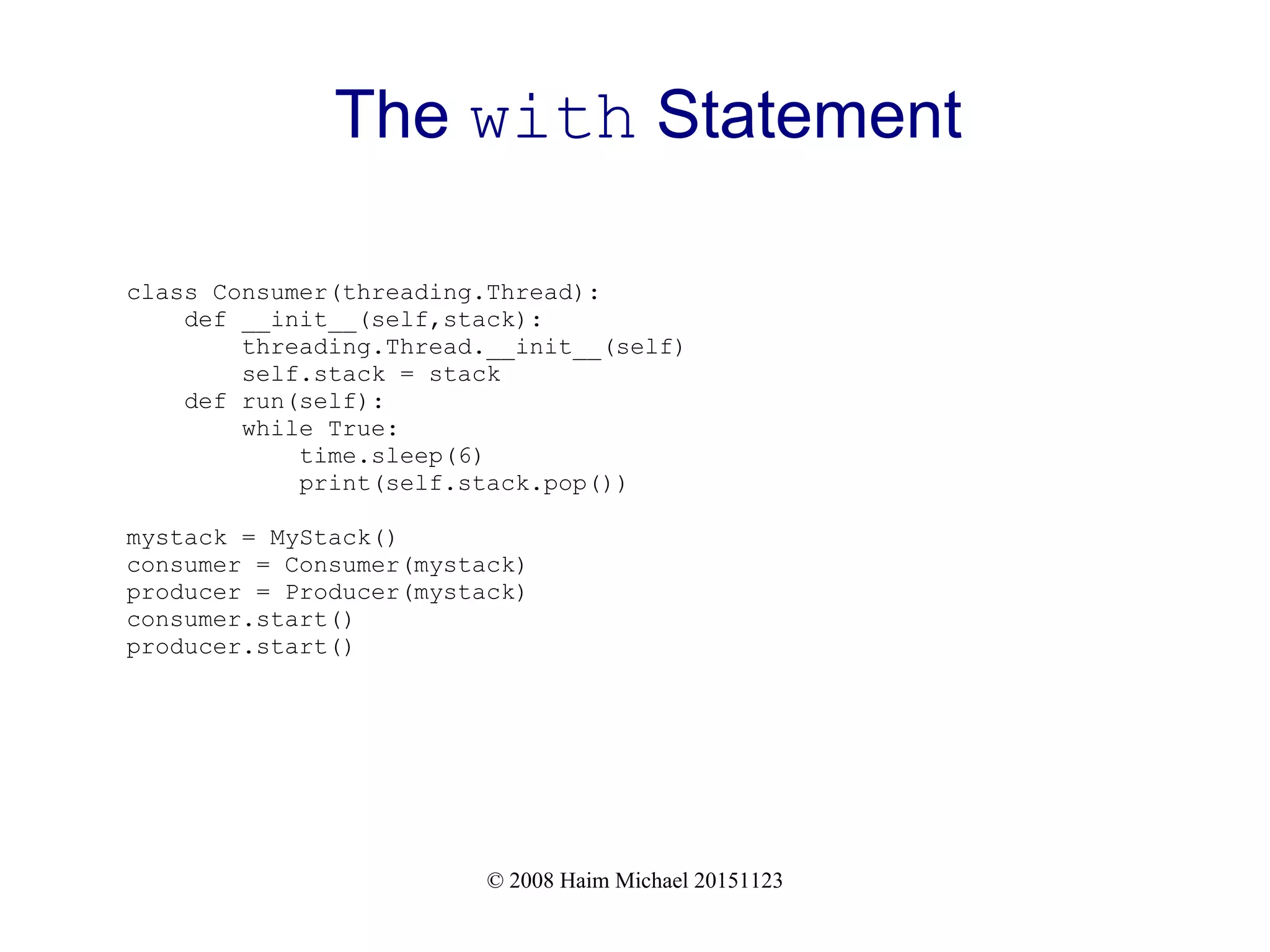
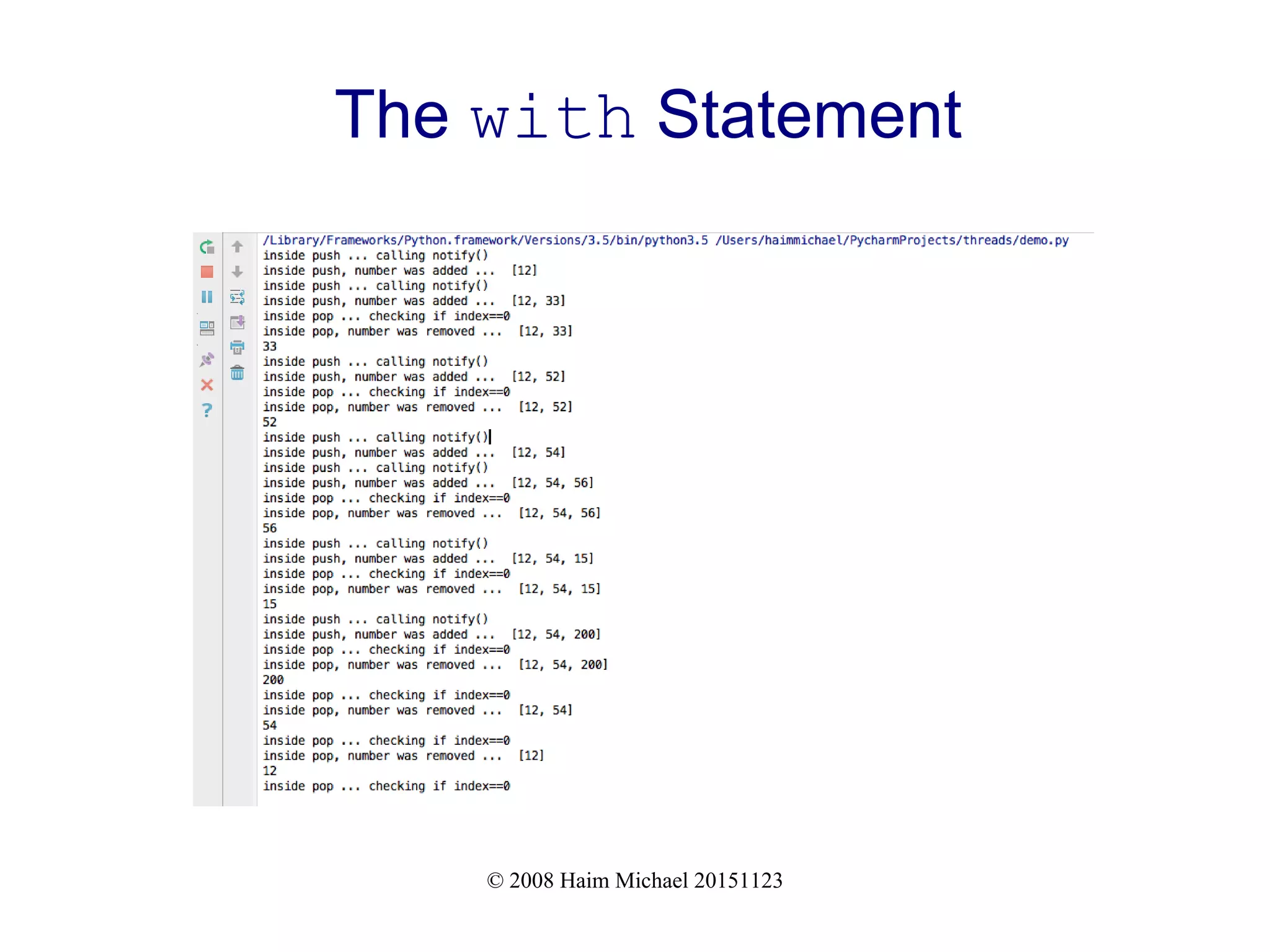
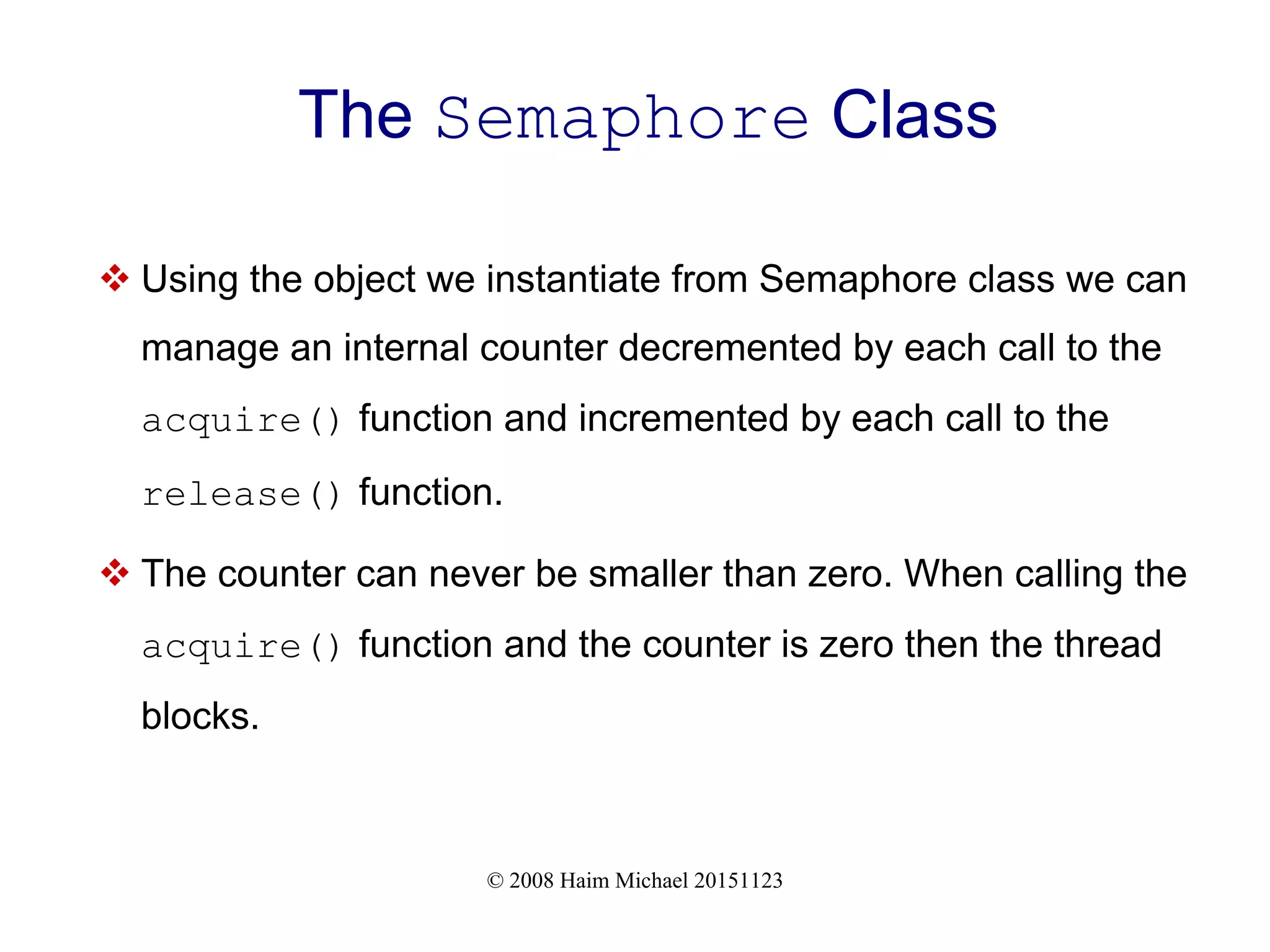
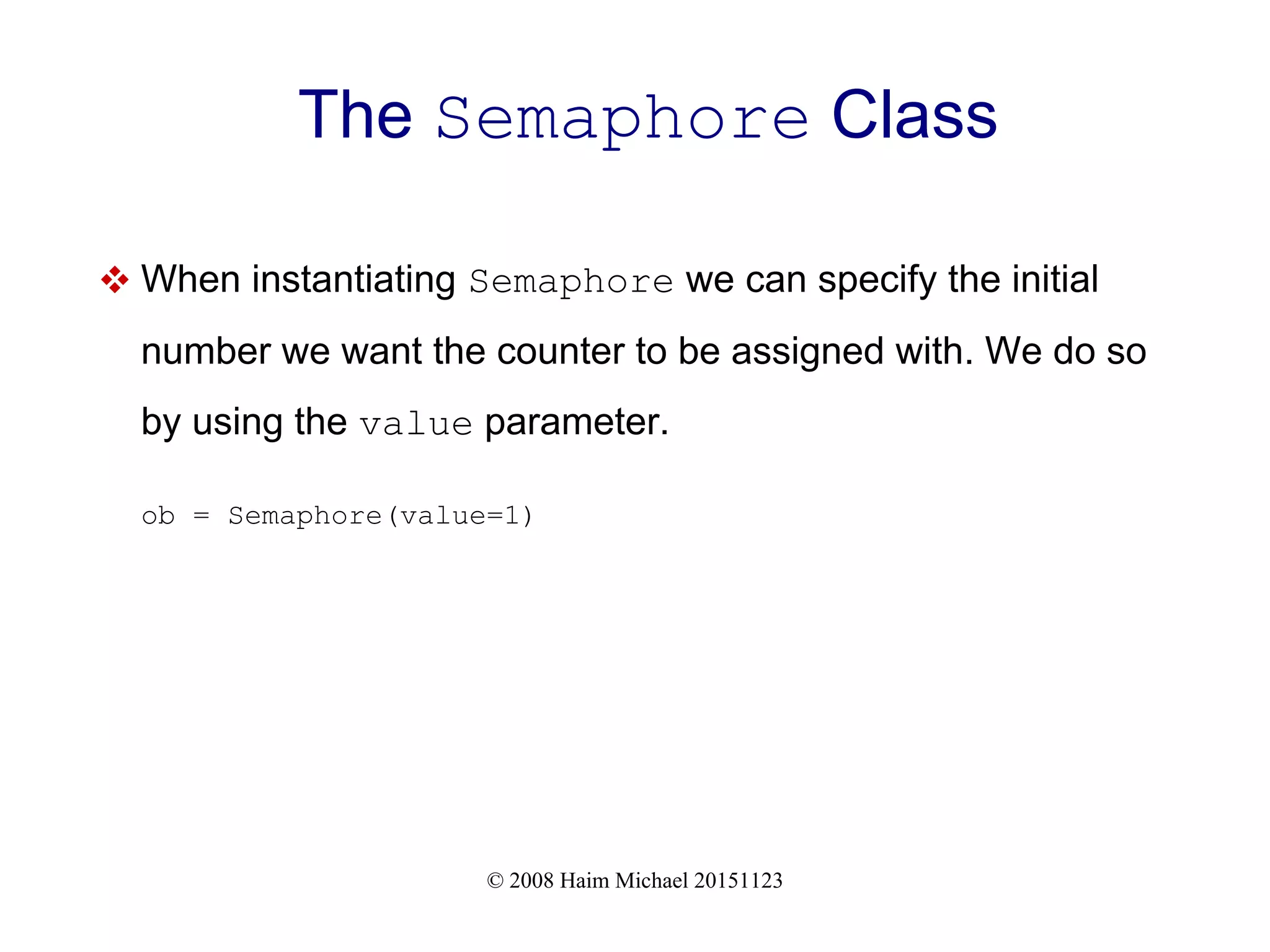
![© 2008 Haim Michael 20151123 The Semaphore Class import threading import time def worker(text, sema): sema.acquire() i = 1 while i<10: print(threading.current_thread().getName(),text) time.sleep(2) i += 1 sema.release() semaphore = threading.Semaphore(2) number_of_threads = 10 for str in ['haifa','tel-aviv','ramat-gan','eilat','jerusalem']: thread = threading.Thread(target=worker, args=(str, semaphore)) thread.start()](https://image.slidesharecdn.com/programminginpythononsteroidsxxl20210225-210227210338/75/Programming-in-Python-on-Steroid-172-2048.jpg)
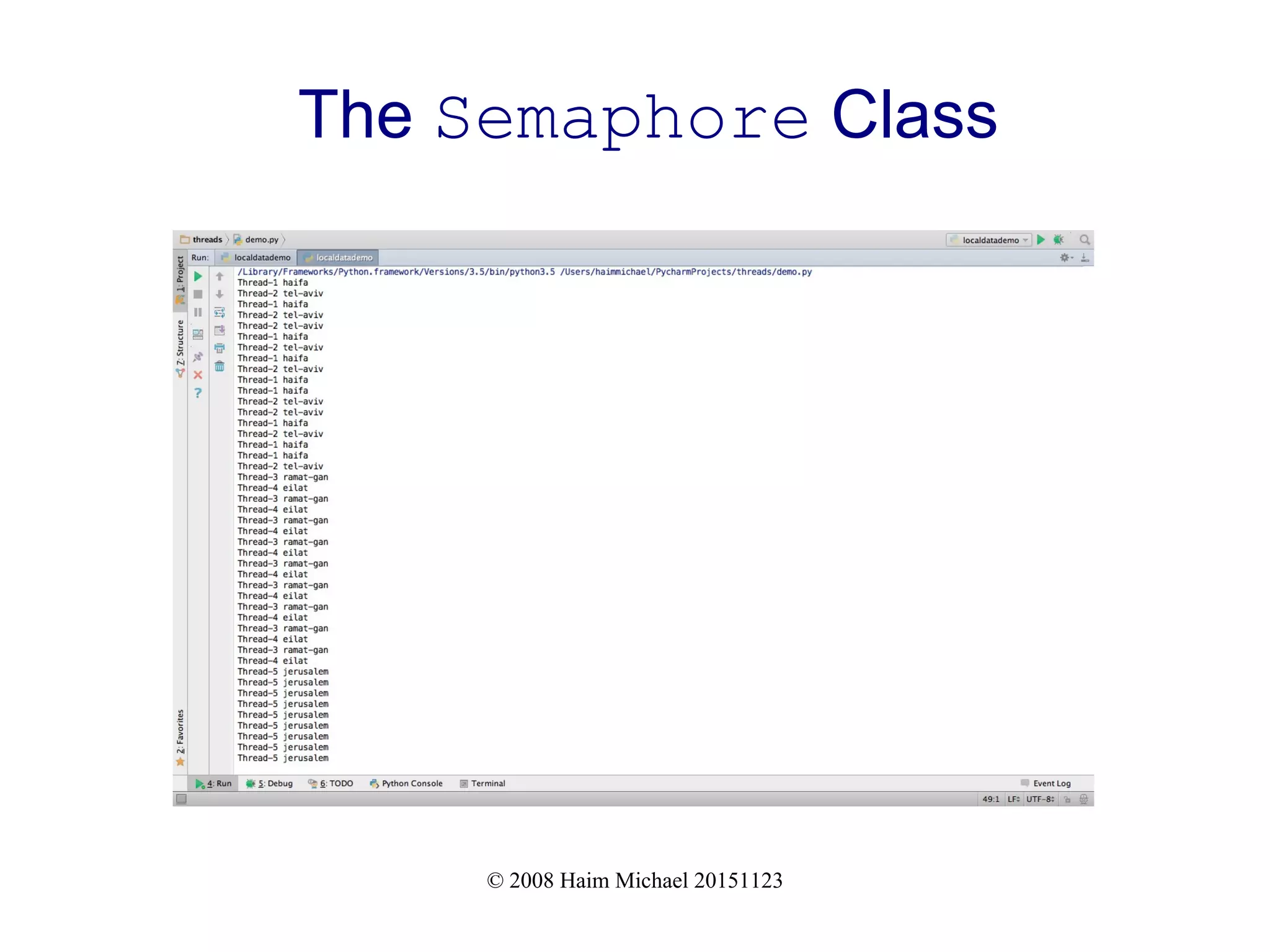
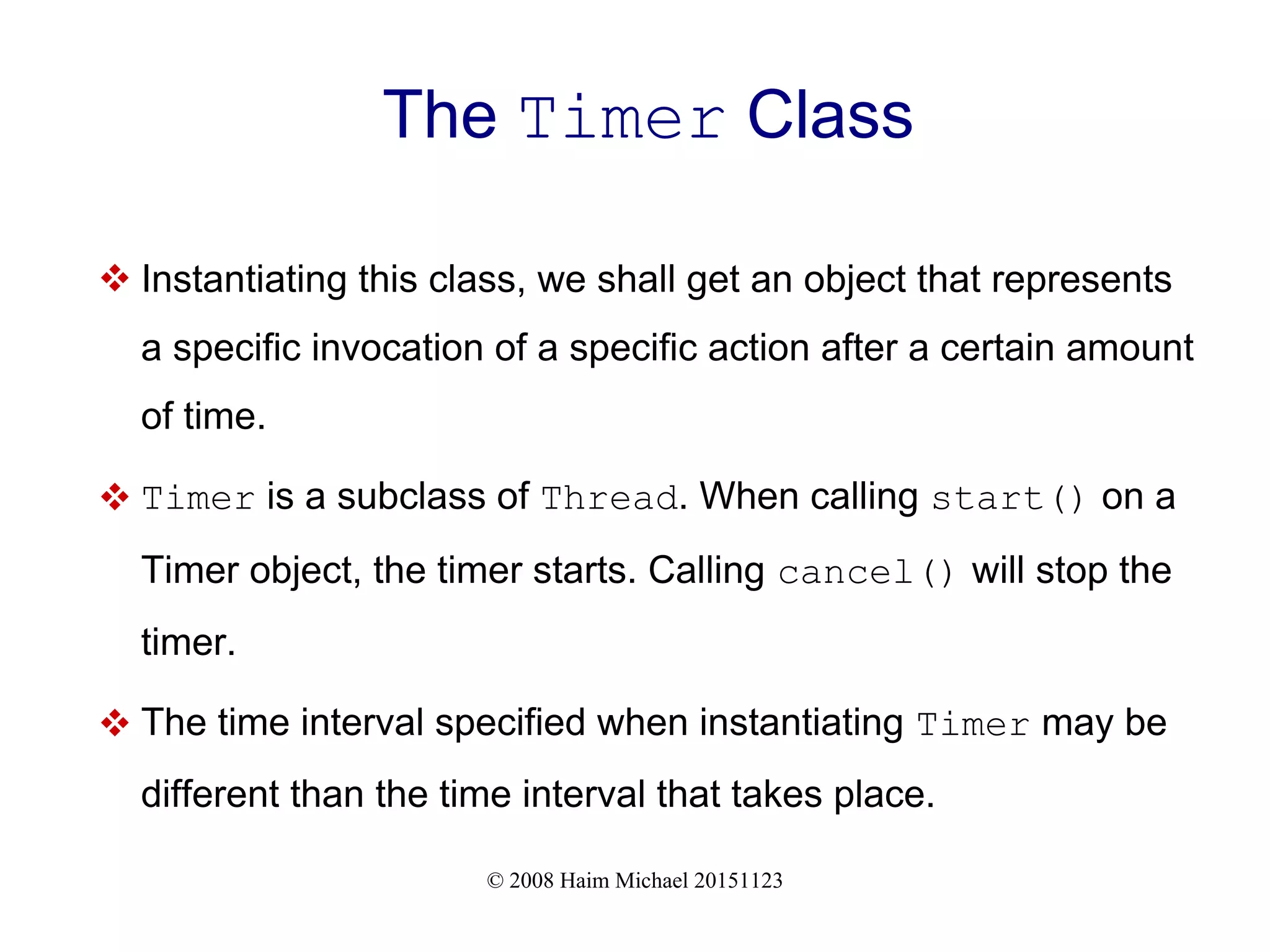
![© 2008 Haim Michael 20151123 The Timer Class import threading def bango(txt): print(txt) timer = threading.Timer(20,bango,args=['hello world']) timer.start()](https://image.slidesharecdn.com/programminginpythononsteroidsxxl20210225-210227210338/75/Programming-in-Python-on-Steroid-175-2048.jpg)
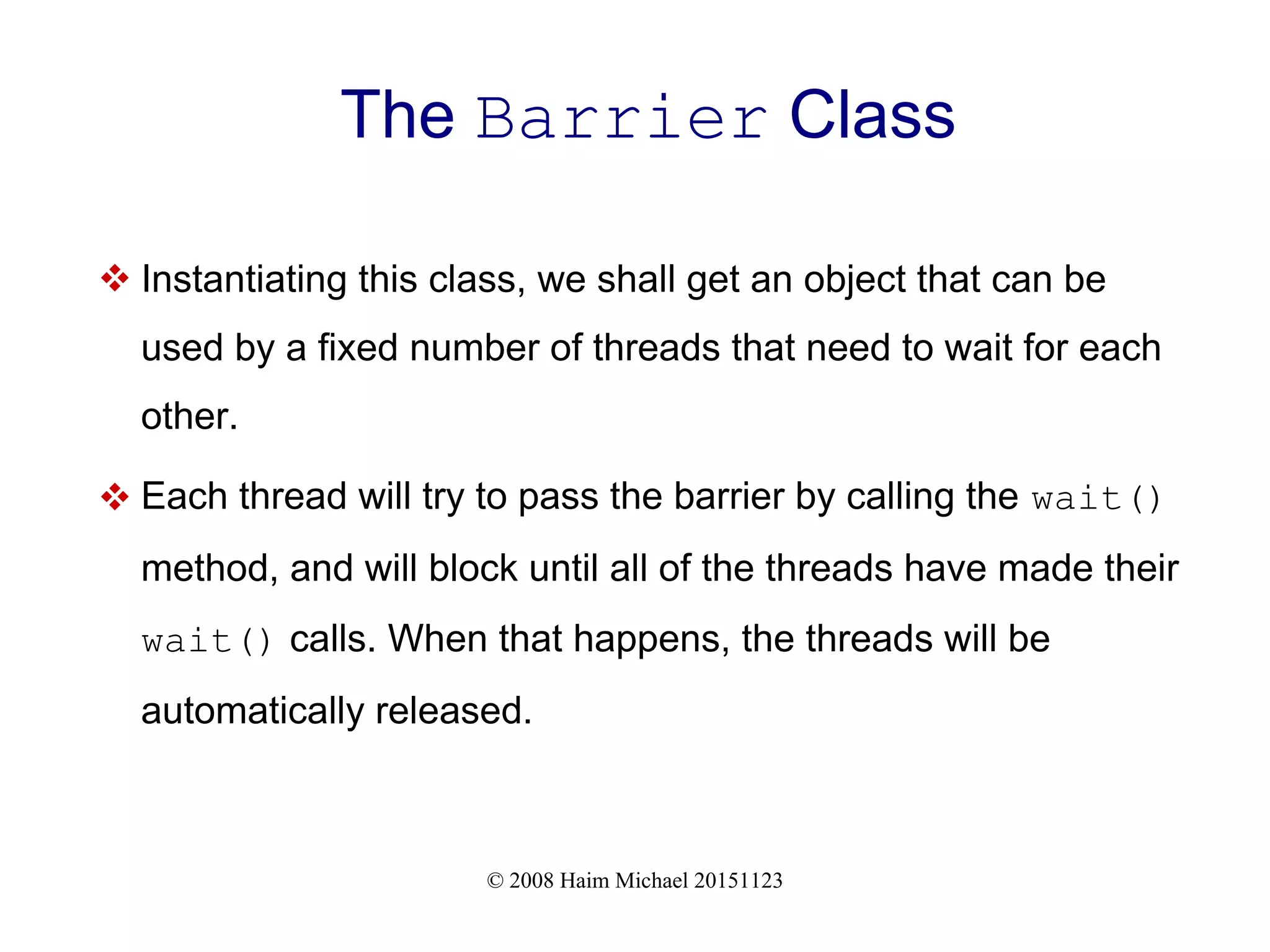
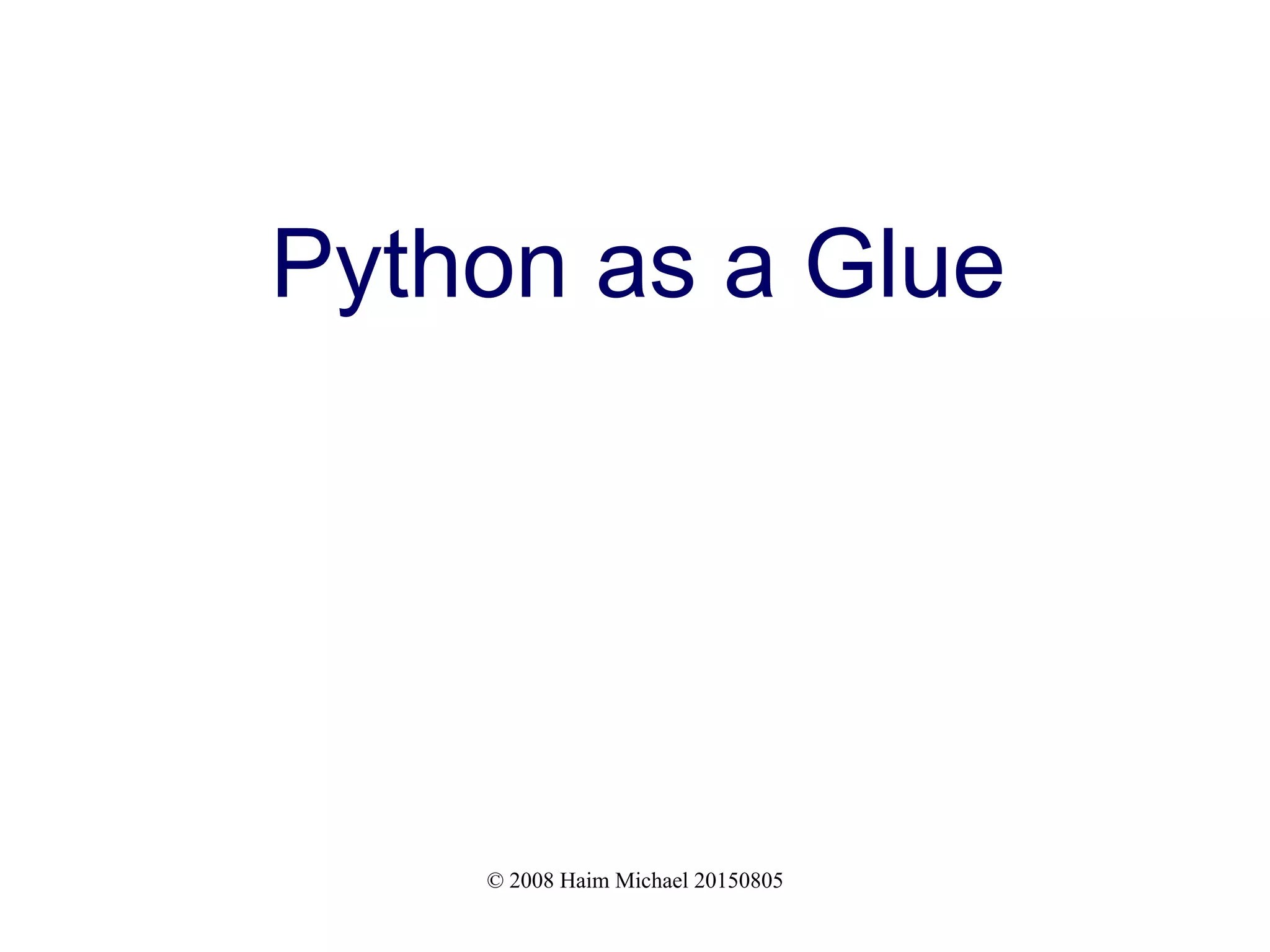
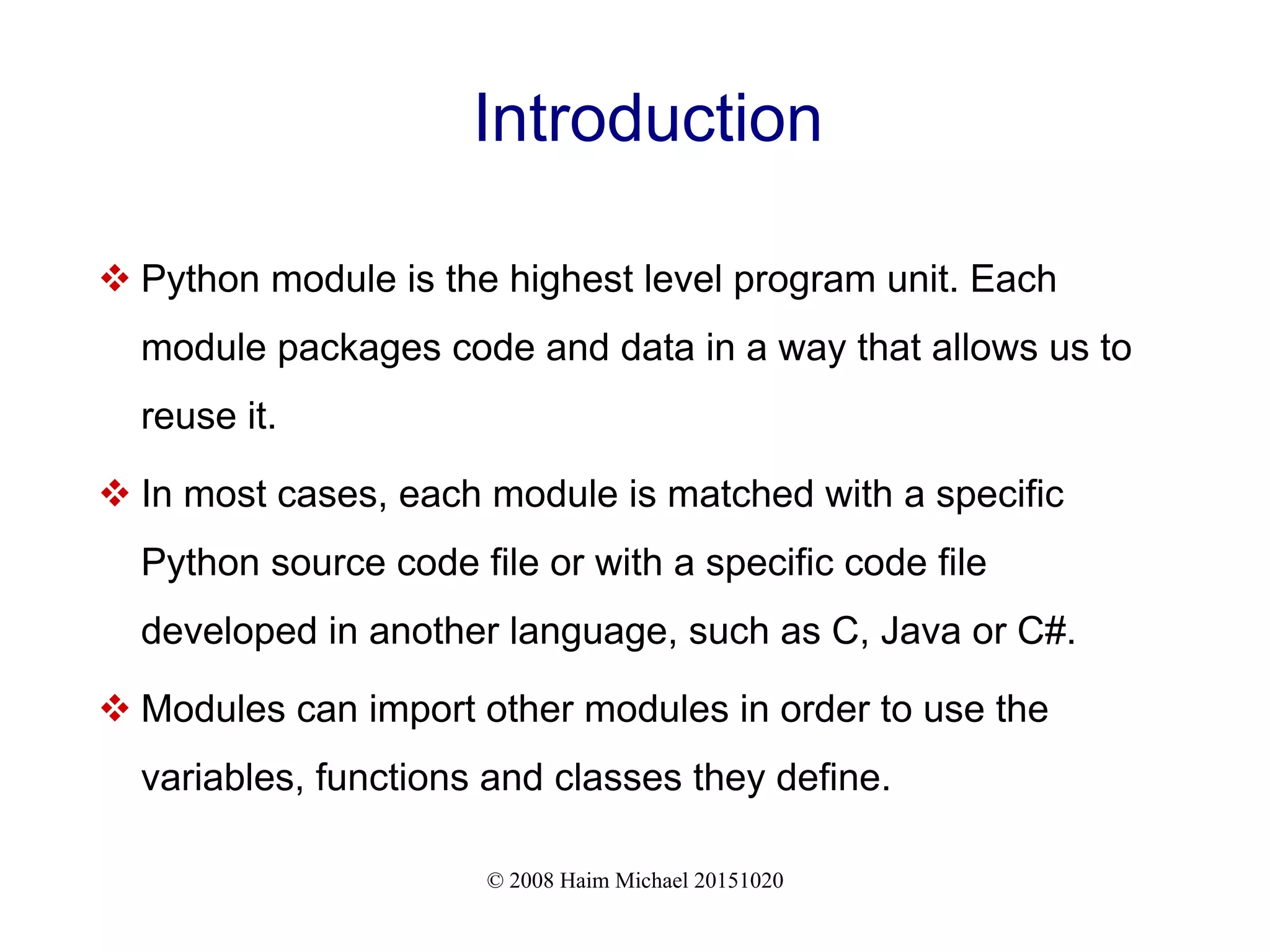
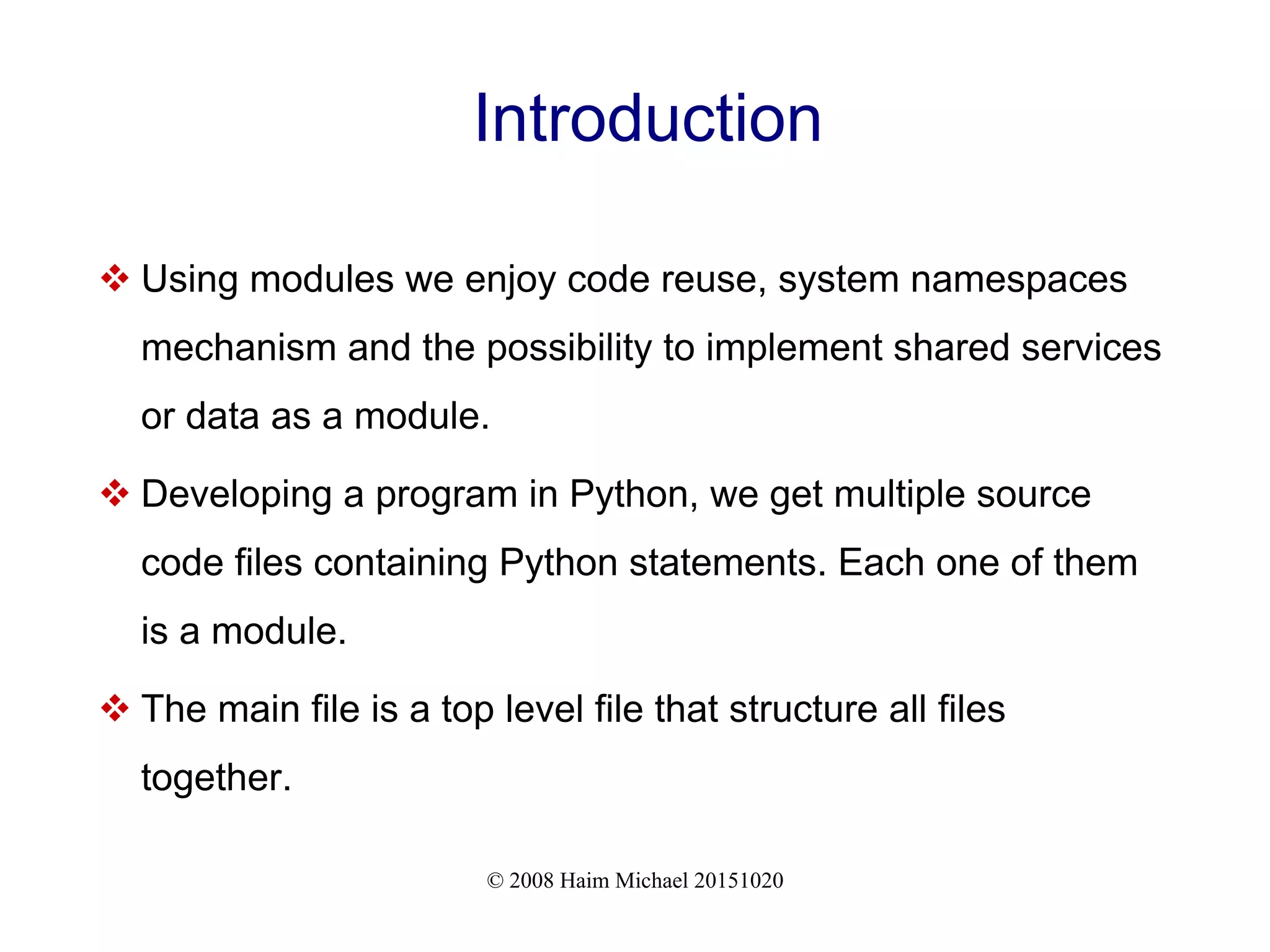
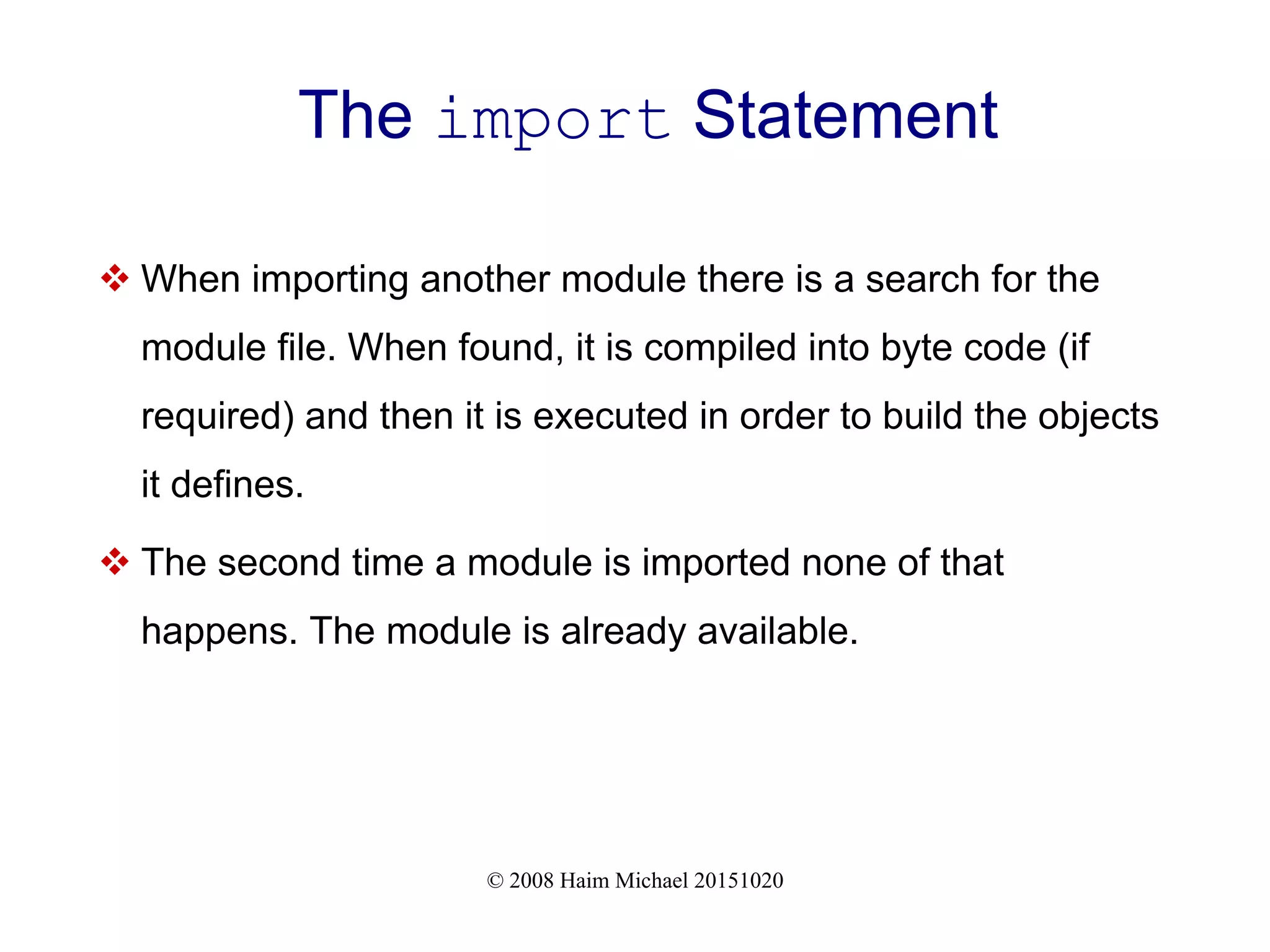
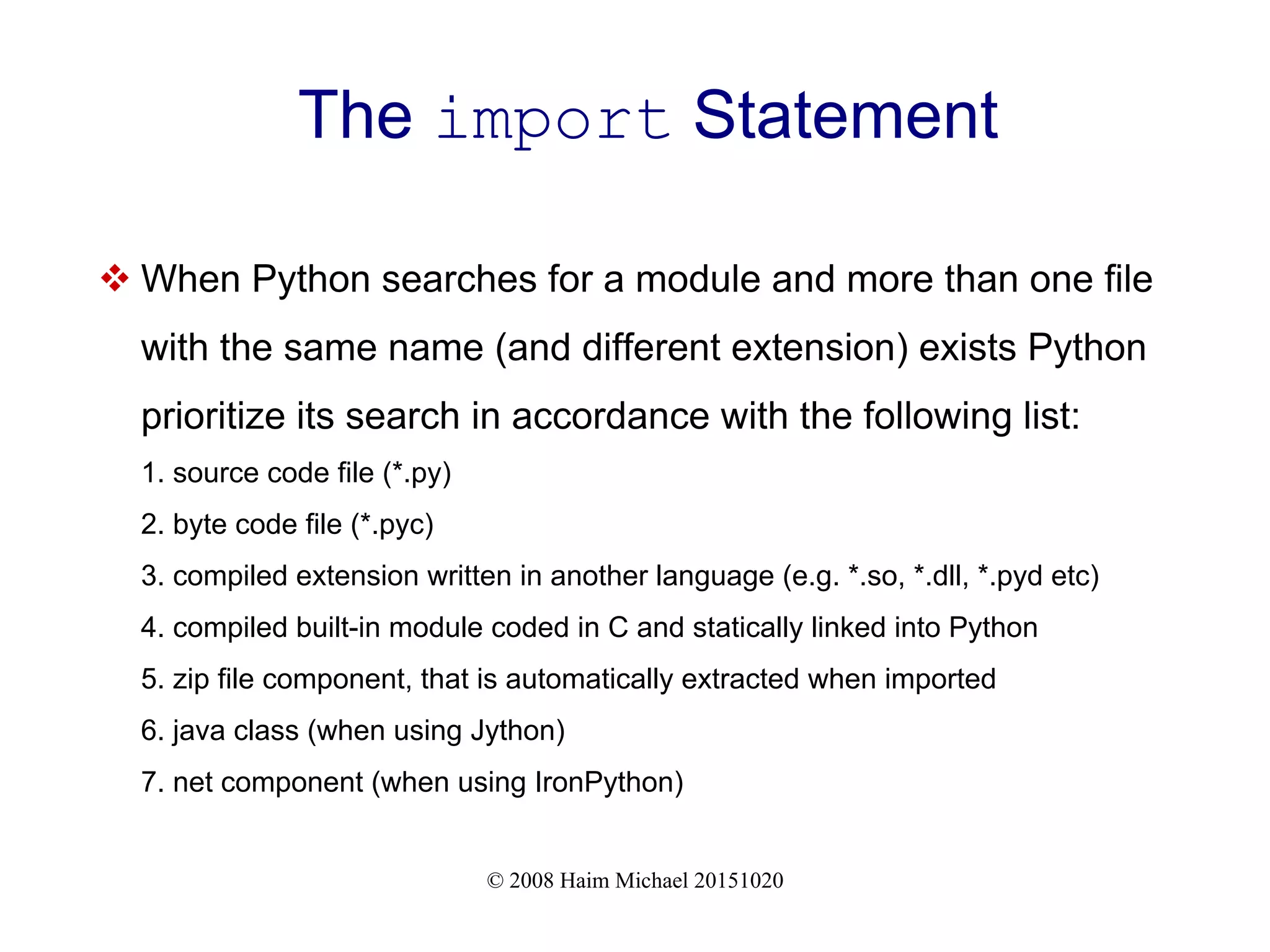
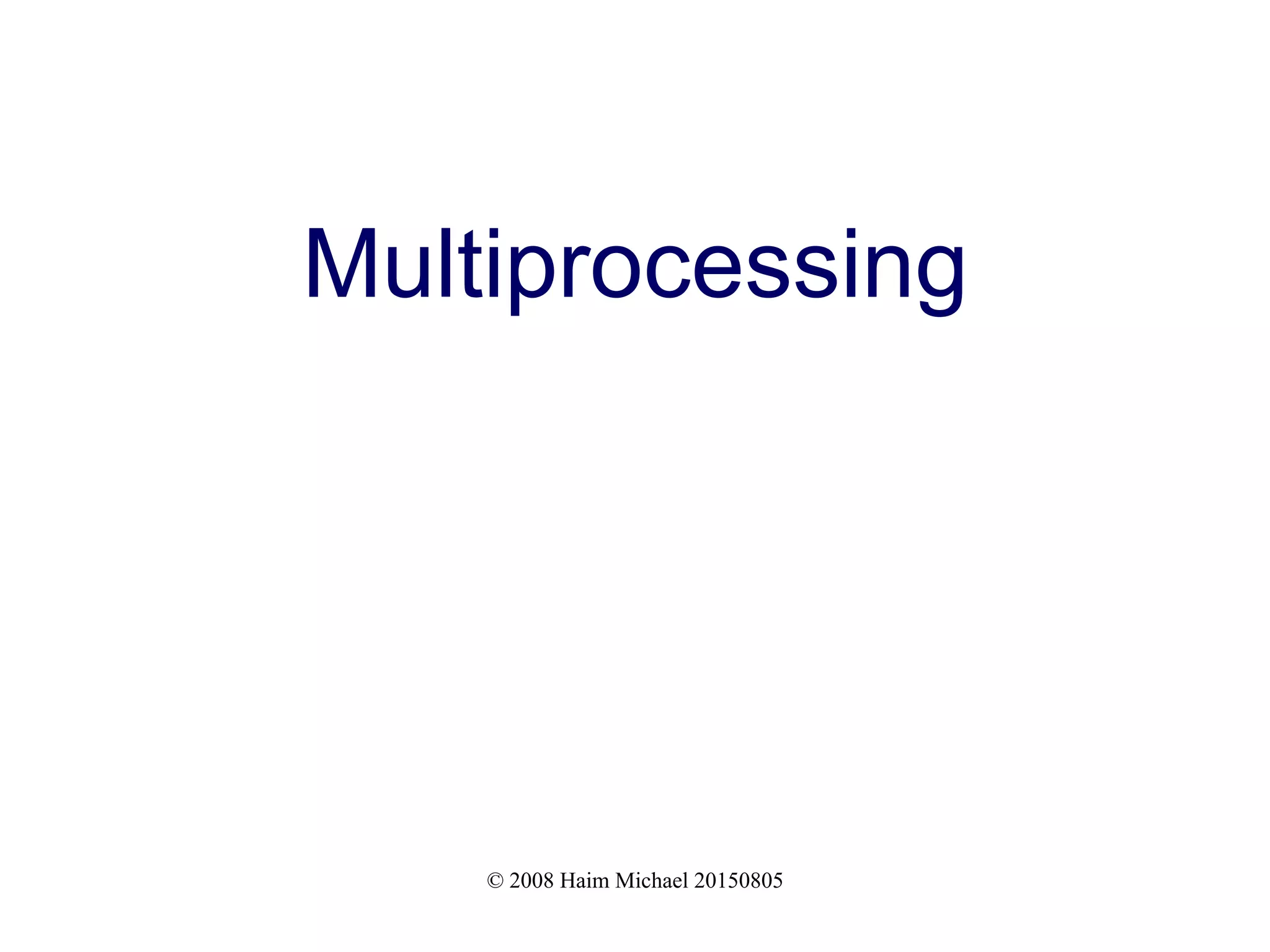
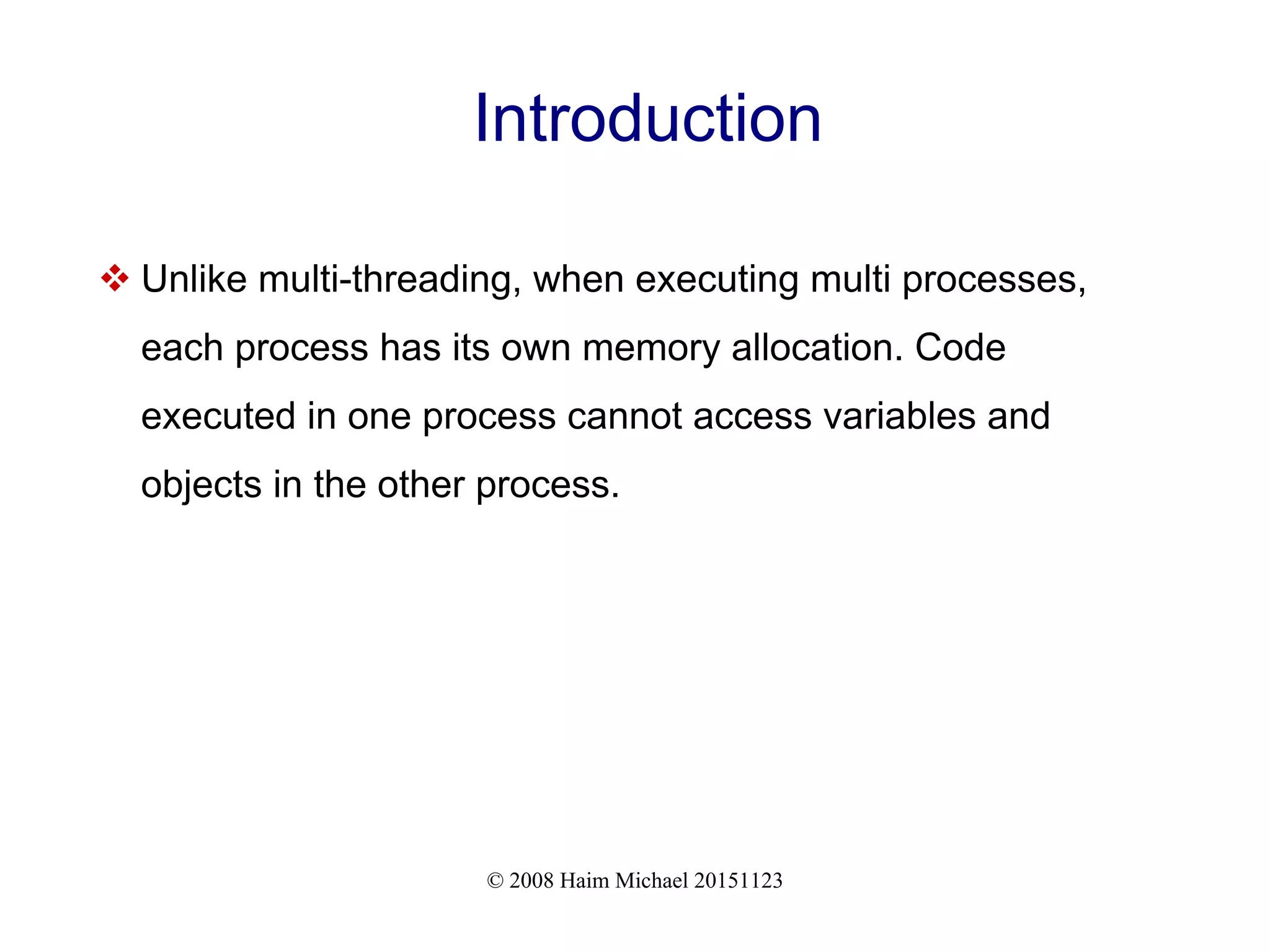
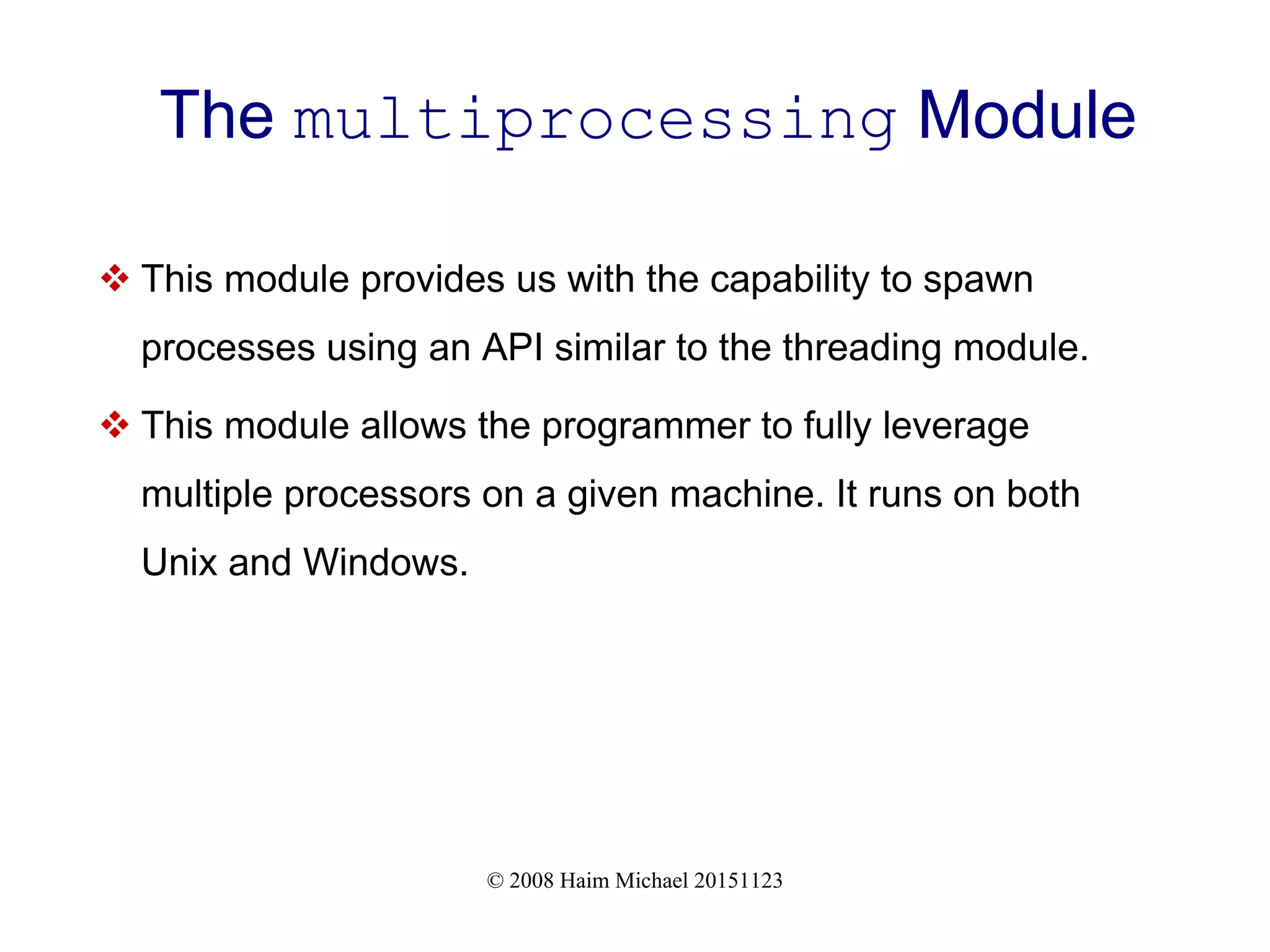
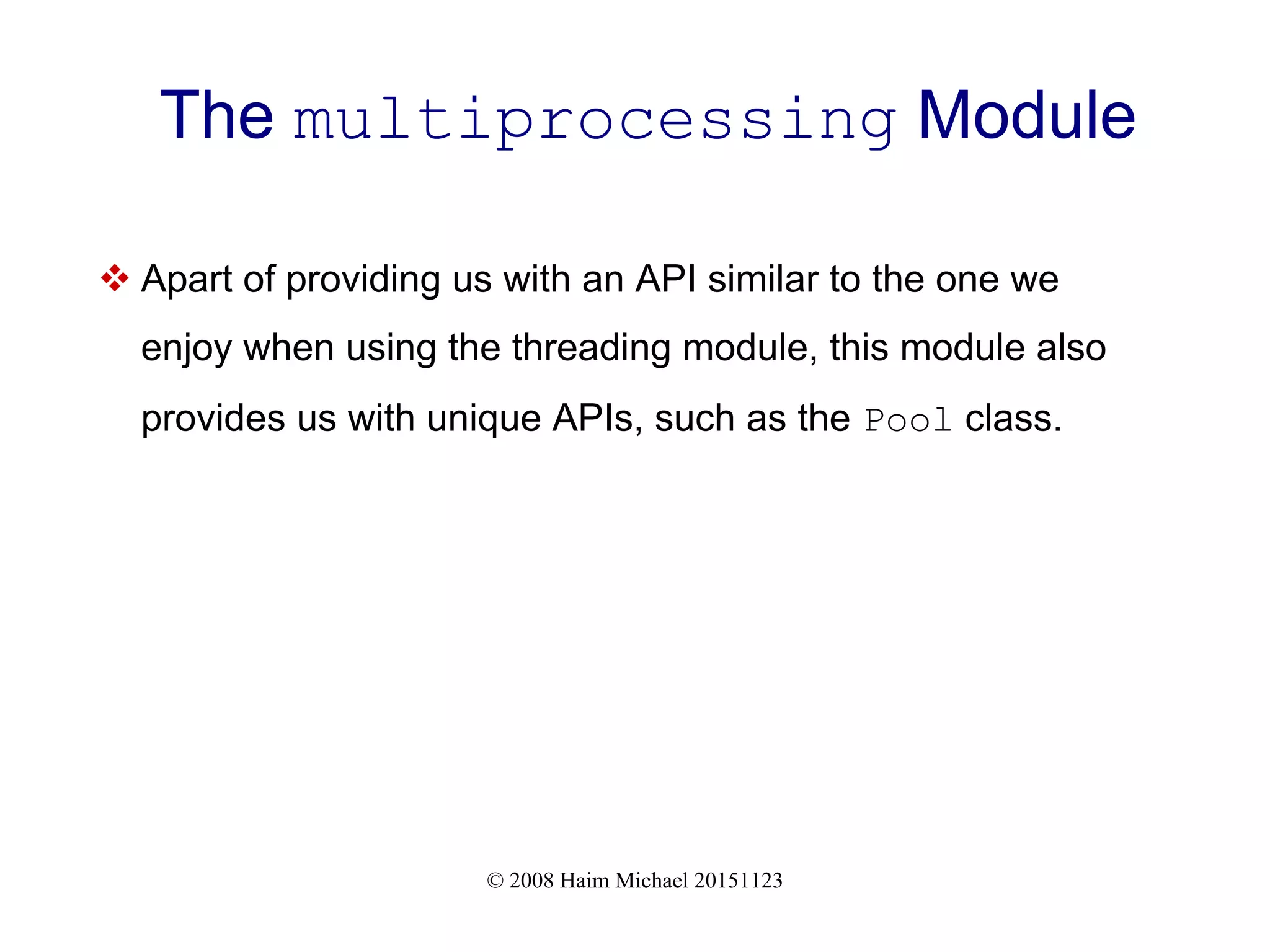
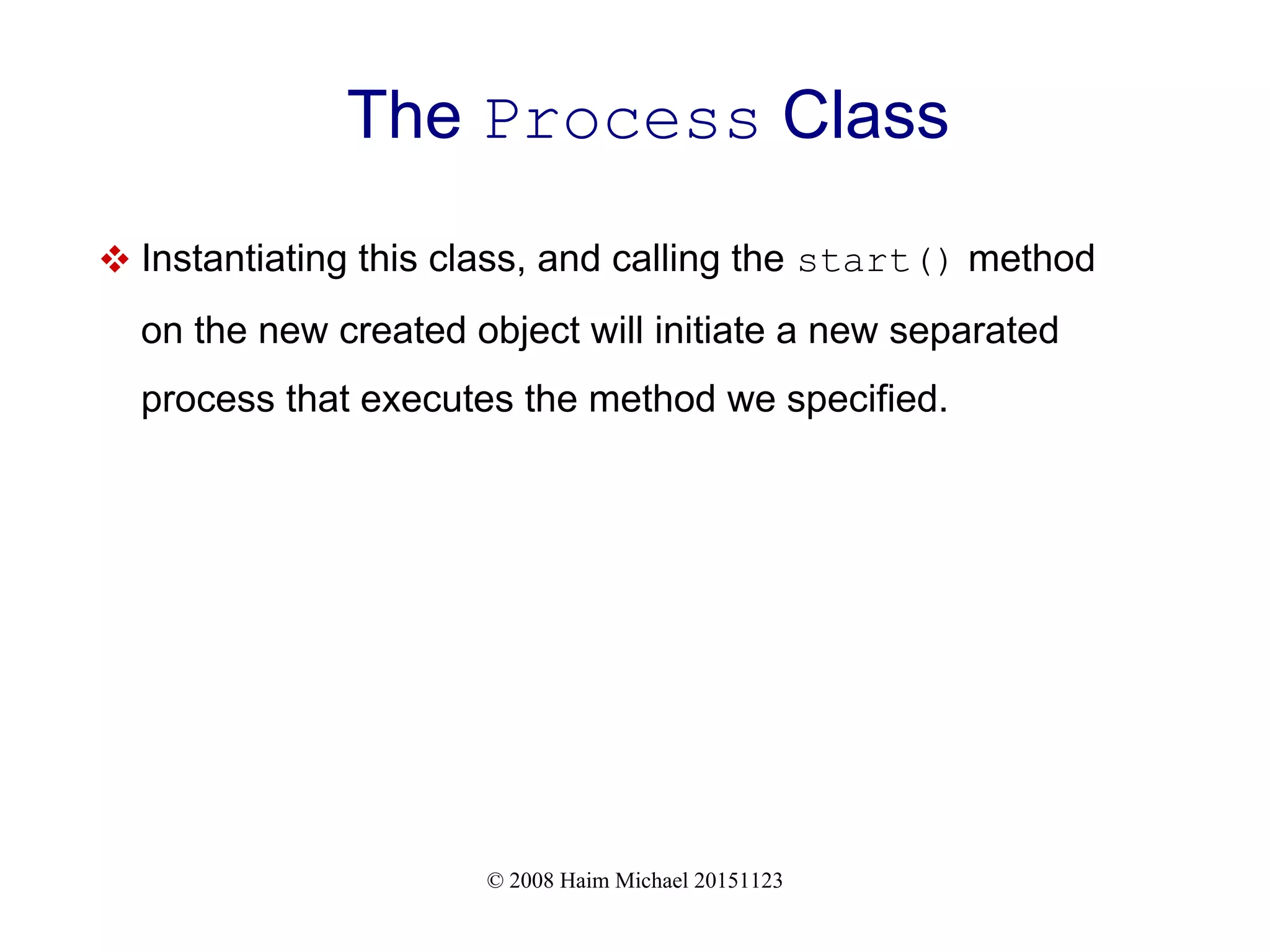
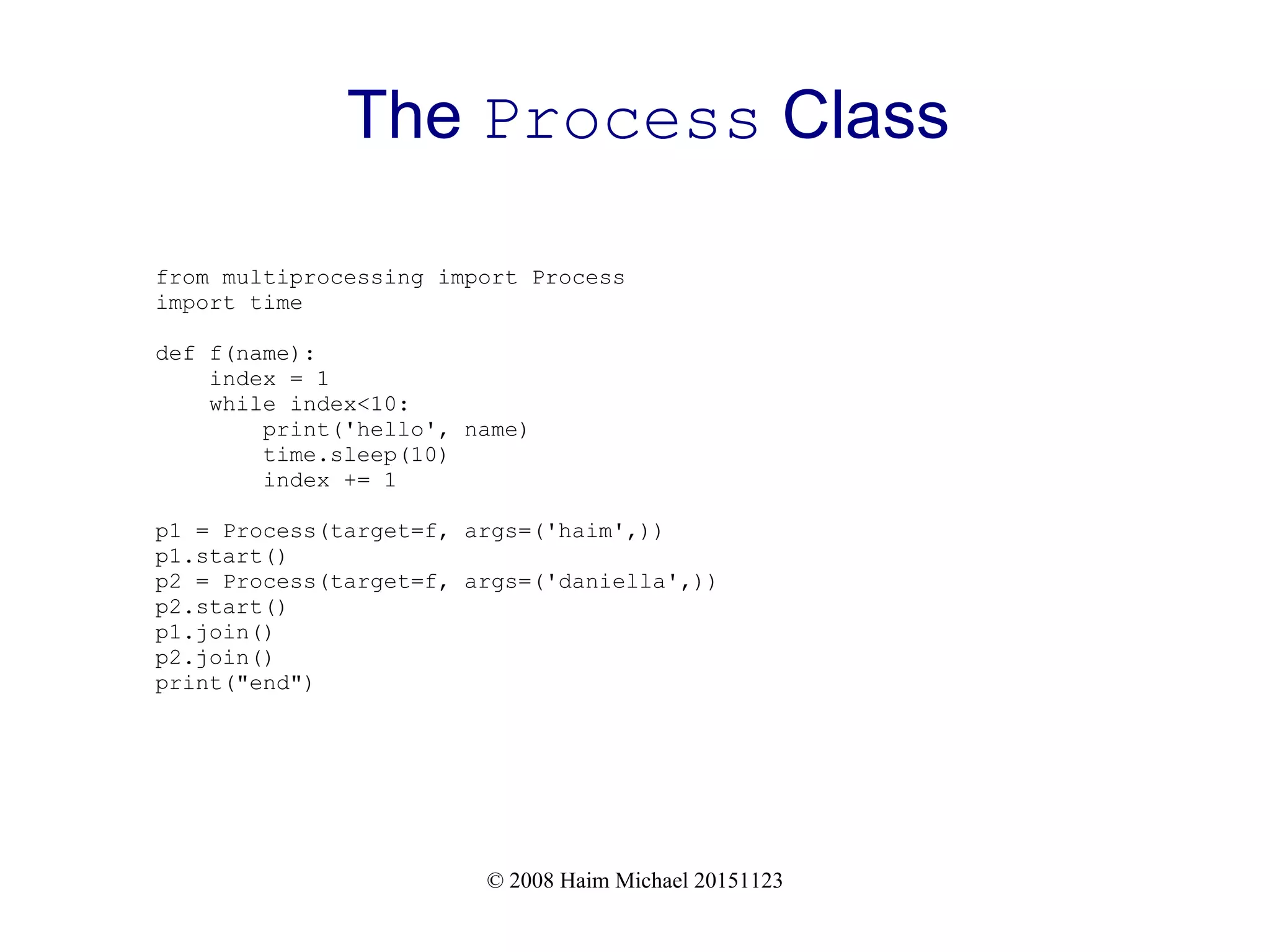
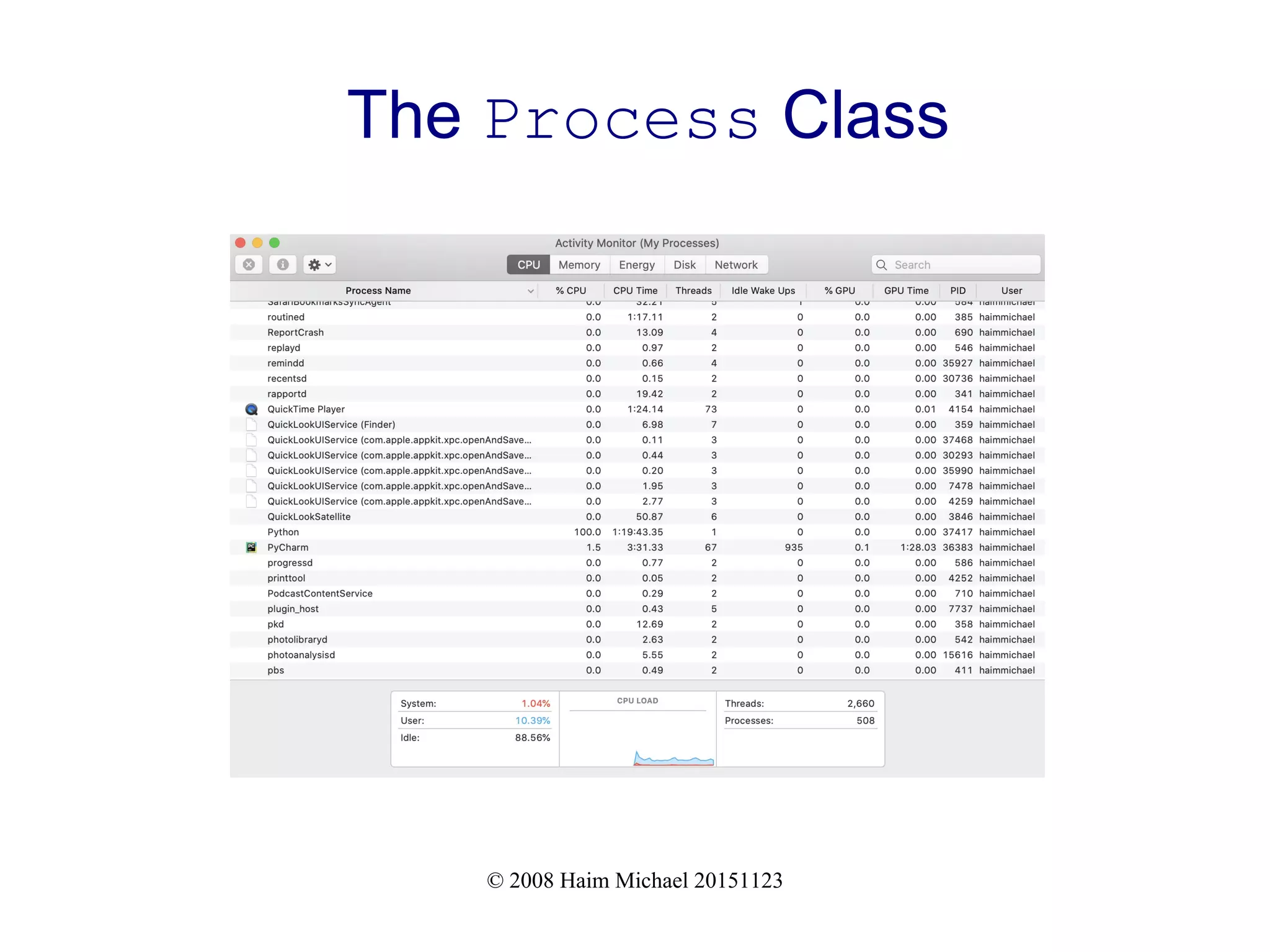
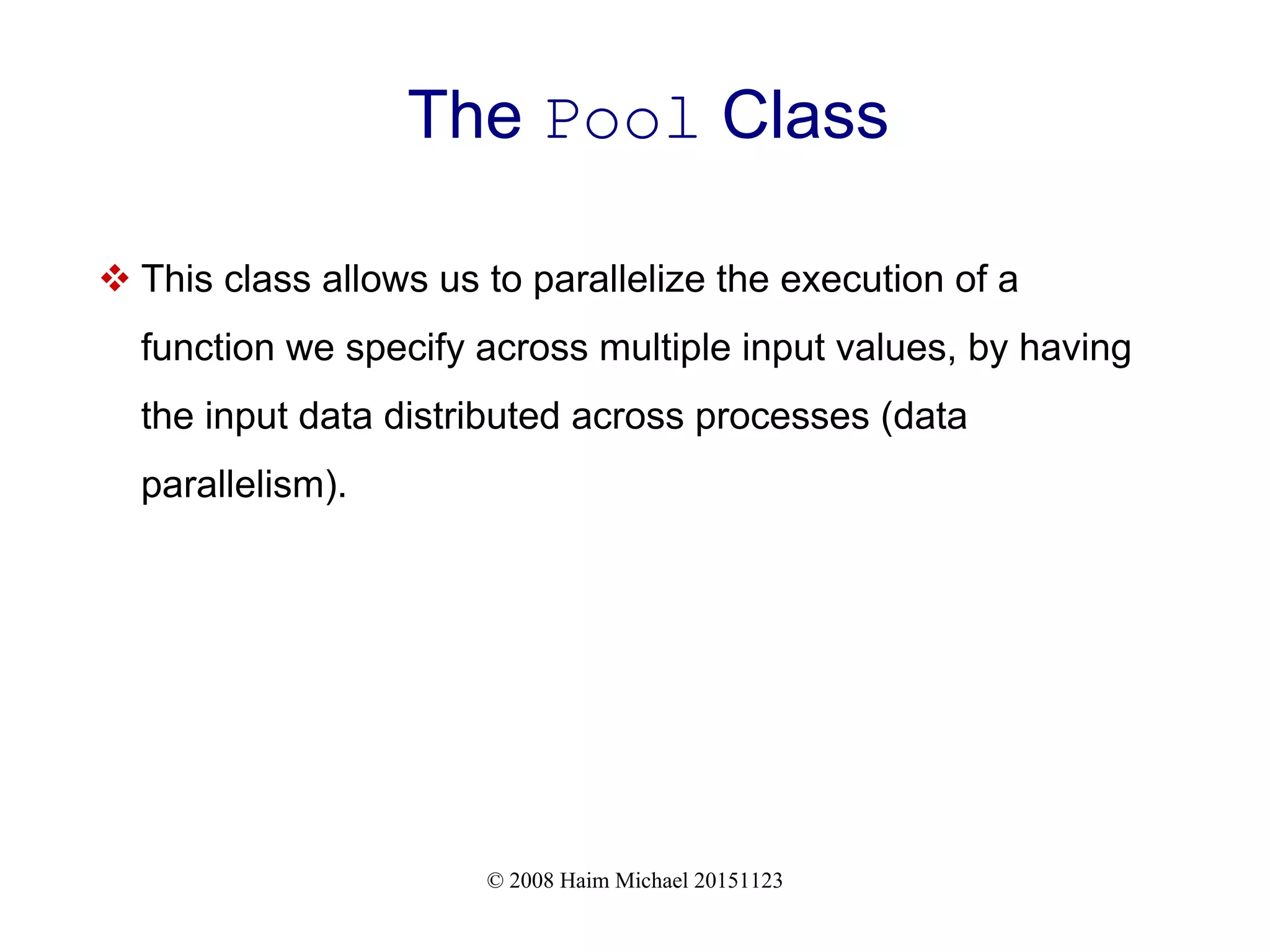
![© 2008 Haim Michael 20151123 The Pool Class from multiprocessing import Pool import time def f(x): time.sleep(10) return x*x start = time.perf_counter() with Pool(5) as p: list2 = p.map(f, [1, 2, 3, 4, 5, 6, 7]) #list2 = map(f,[1,2,3,4,5,6,7]) for num in list2: print(num) end = time.perf_counter() print(end-start)](https://image.slidesharecdn.com/programminginpythononsteroidsxxl20210225-210227210338/75/Programming-in-Python-on-Steroid-190-2048.jpg)


